We’re in Myanmar right now and it’s SO epic… click here to follow along on Instagram.
- Meet the Team
- Work with Us
- Czech Republic
- Netherlands
- Switzerland
- Scandinavia
- Philippines
- South Korea
- New Zealand
- South Africa
- Budget Travel
- Work & Travel
- The Broke Backpacker Manifesto
- Travel Resources
- How to Travel on $10/day
Home » Central America » Costa Rica » Backpacking Guide

Backpacking Costa Rica Travel Guide (2024)
Backpacking Costa Rica is a rite of passage for any backpacker keen on exploring South or Central America. Costa Rica is a country famous for its breathtaking natural beauty and ecological biodiversity. Travelers have been flocking to this magical country for decades in search of Pura Vida (Pure Life).
Costa Rica is definitely the jewel in the Central American crown for a variety of reasons. The country is packed with a vast array of prime backpacker destinations. Think endless adventure opportunities for the adrenaline junkie, perfect surf beaches, steamy cloud forests, and quite possibly the most chilled-out vibe anywhere on earth.
You have been hearing about Costa Rica ever since you were old enough to read a map. Life has brought you to the fortunate crossroads of deciding where your next backpacking adventure will be, eh? Good on you for choosing Costa Rica!
If you have the adventure travel itch, backpacking Costa Rica offers up the perfect scratch for all of your backpacking hopes and dreams. I spent a whole month in this country and can’t wait to get my ass back there. It may be small, but oh oh boy is it mighty.
This Costa Rica travel guide will teach you everything you need to know to have the best possible journey exploring this truly special country on a budget. Vamos amigos!
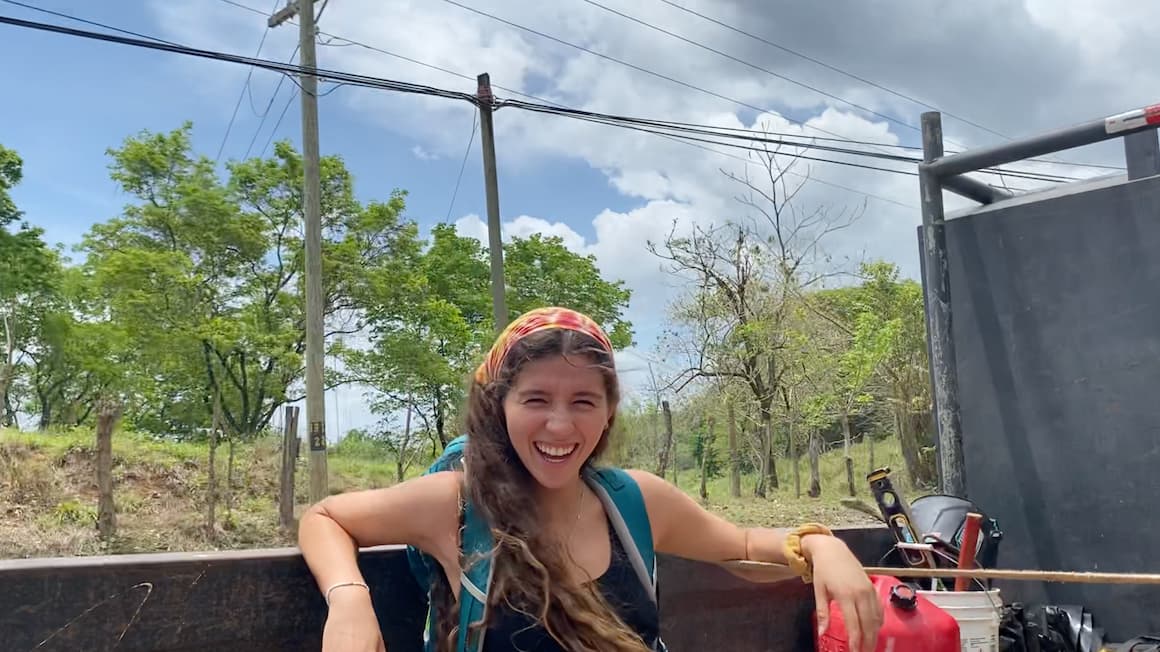
Why Go Backpacking in Costa Rica
There is no shortage of fabulous places to go backpacking in Costa Rica . The country truly has mind-boggling diversity. Due to its relatively small size and reliable bus system, it is possible to see a majority of the country in a short amount of time.
Spending time on the Pacific Coast is definitely a must if you are keen to surf or just love the beach. For adventure sports, hiking, and epic wildlife head to the mountainous interior. The Caribbean coast has a markedly different atmosphere than the Pacific. The surfing is not as good (or non-existent), but the landscapes, culture, and people are amazing.
Any way you play it, backpacking Costa Rica is non-stop fun. Too much fun at times! Whether you have a few weeks or a few months, there is a Costa Rica backpacking trip for everyone.
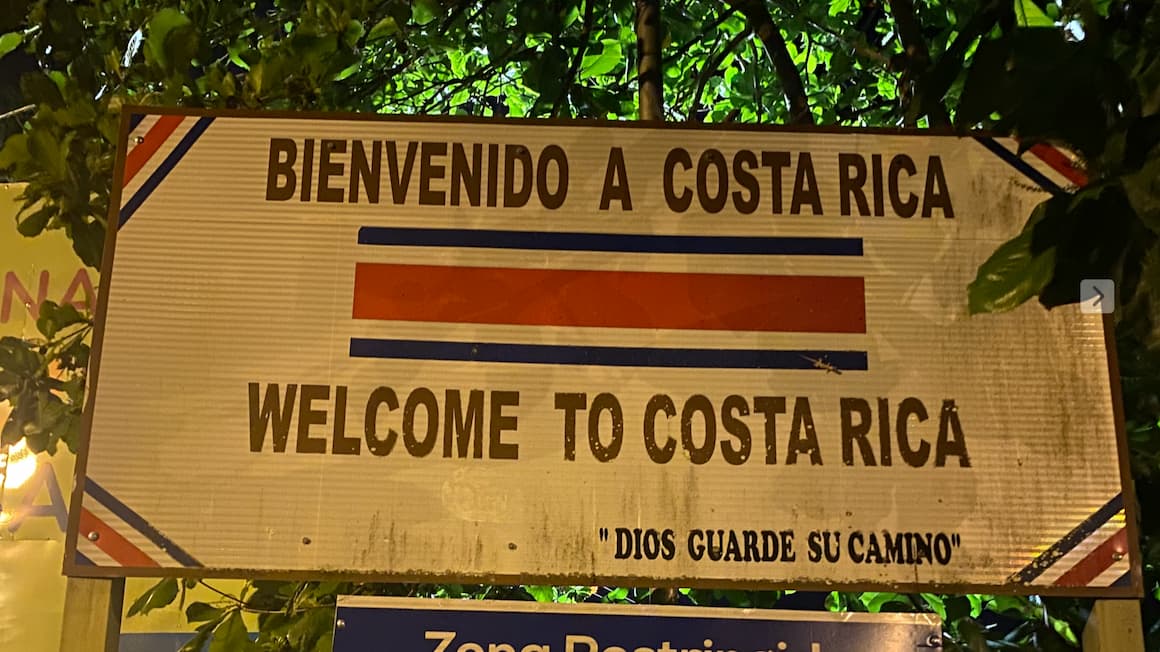
Best Travel Itineraries for Backpacking Costa Rica
Below I have listed several travel itineraries for backpacking Costa Rica trips! If you have a month or more to visit Costa Rica, it’s easy to combine a couple of these itineraries and put together a larger Costa Rica backpacking route.
Backpacking Costa Rica One Month Itinerary #1: Costa Rica Highlights
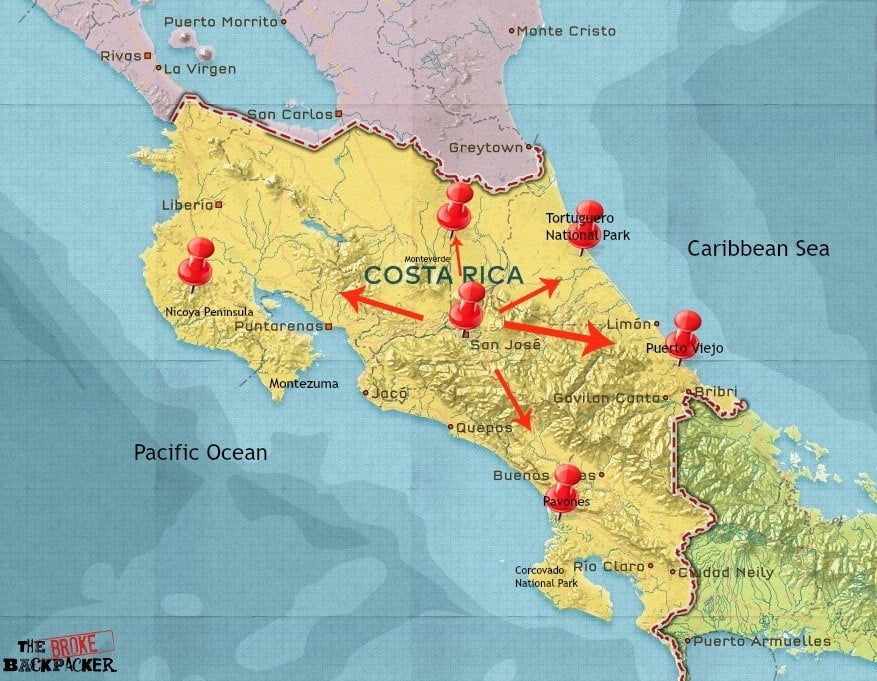
If you have a month or more to commit to backpacking Costa Rica, then you can cover a lot of ground! Costa Rica really has so much to offer, and the only way you can see the whole country in one trip is to have a decent chunk of time.
If you are entering the country from the north, then the Nicoya Peninsula is an obvious starting point. Likewise, if you are entering from Panama in the south, starting around Puerto Viejo makes sense.
My advice to split your time between the coast and the interior. Unless you are a die-hard surf maniac, visiting the lush cloud forests, raging rivers and stunning mountains are a must.
Keep in mind that the beaches close to San Jose will be more crowded and can be more pricey any time of year. Once you establish what your priorities are you can go from there.
There are a lot of awesome places to visit in Costa Rica – so many that you might not even be able to fit them all in during your stay. When visiting Costa Rica, you can be sure that every day will be an adventure!
Backpacking Costa Rica Two Week Itinerary #2: The Pacific Coast
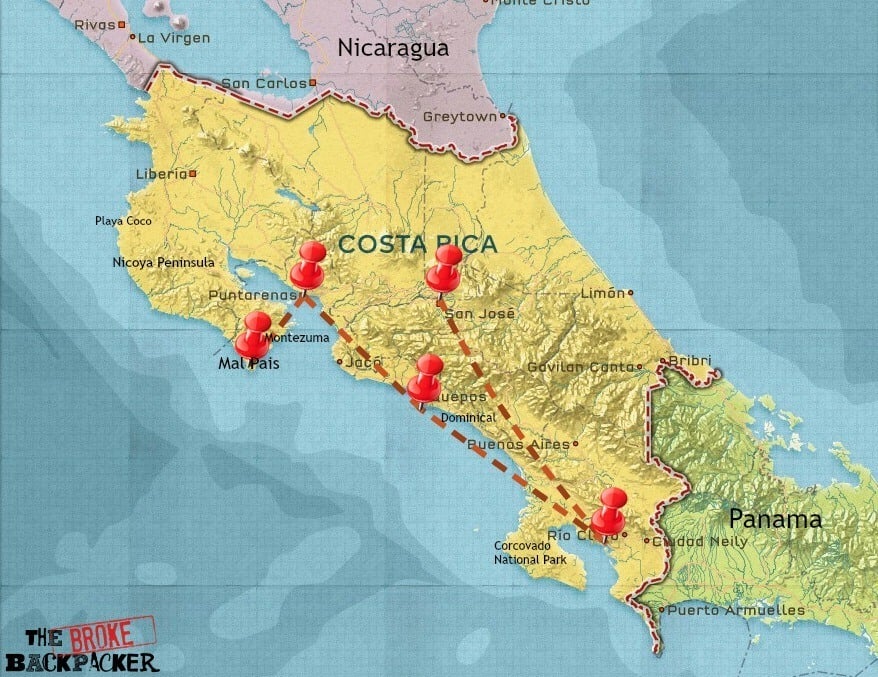
For this Costa Rica itinerary, I suggest at least two weeks. The Pacific Coast of Costa Rica boats world-class surf beaches, delicious seafood, and stunning national parks.
This backpacking Costa Rica route can be travelled north or south from the capital San Jose. If you are entering Costa Rica from Nicaragua then the obvious choice is to start in the north and work south.
The Nicoya Peninsula is dotted with sleepy surf towns that feel remote even if many backpackers pass through every year. Travel on the Nicoya Peninsula is some of the slowest in all of Costa Rica. The roads are not very well maintained so the bus rides can feel longer than they should be.
Mal Pais and Montezuma are classic Costa Rican surf towns where one could easily spend a week soaking up the sun and surf.
Further South lies more beautiful beaches and the famed Corcovado National Park , known for the most biodiverse eco-system in the world. I suggest picking a few places that offer up a good mix of beach, jungle, and party.
Getting to know an area for a few days is much more rewarding than taking a bus every single day. The pace of life is slow in Costa Rica. On the coast time seems to be an irrelevant aspect of life.
Adapting to the mellow Tico lifestyle is easy. Be careful! Your two week Costa Rica travel itinerary to the Pacific coast might turn into a few months once you get a taste!
Backpacking Costa Rica 10 Day Itinerary #3: Costa Rica’s Cloudforest
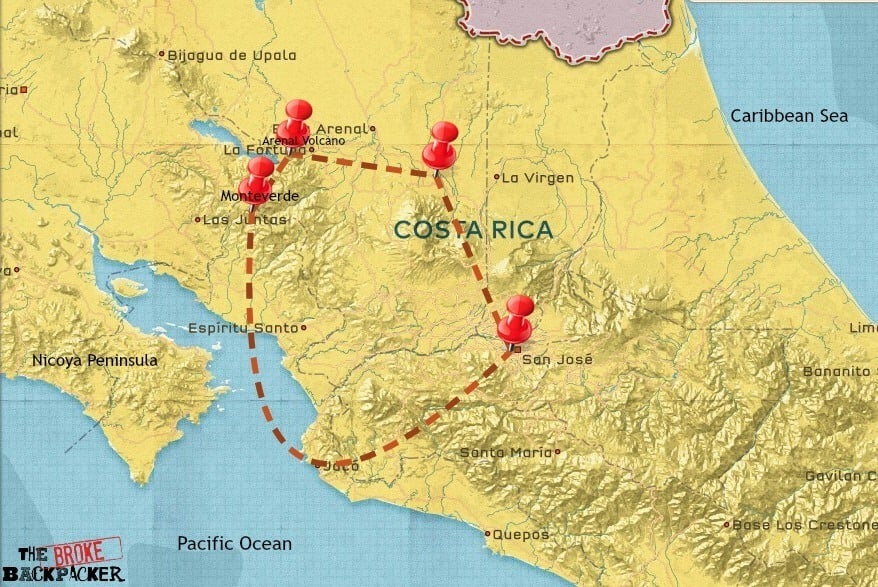
The mountainous interior of Costa Rica could not be more different than the coast. In this itinerary, you can get the best of both worlds. You can easily spend a few days chilling out on the beach before heading to the hills.
The Monteverde Cloud Forest Reserve is one of my favourite places in the whole country. If you love wildlife, trekking, and cooler temperatures, then welcome to the cloud forest! Next head to the Arenal region. The Arenal Volcano is just a few hours away from Monteverde. Pop over to the town of Fortuna and explore the surrounding area for couple days.
If you have a few extra days head south to Chirripó National Park . Climb Cerro Chirripó, which at 3,820 meters (12,530 ft) is the highest mountain in Costa Rica, though you have to book ahead! The park is home to numerous species of rare wildlife including jaguars, pumas, and tapirs.
These jungle-mountains are some of the most bio-diverse places on Earth. Due to the wildness of central Costa Rica, there is ample opportunity to get off the beaten path and really explore, so make sure you pack a backpacking tent and spend a couple of nights under the stars!
Backpacking Costa Rica 10 day itinerary #4: The Caribbean Coast
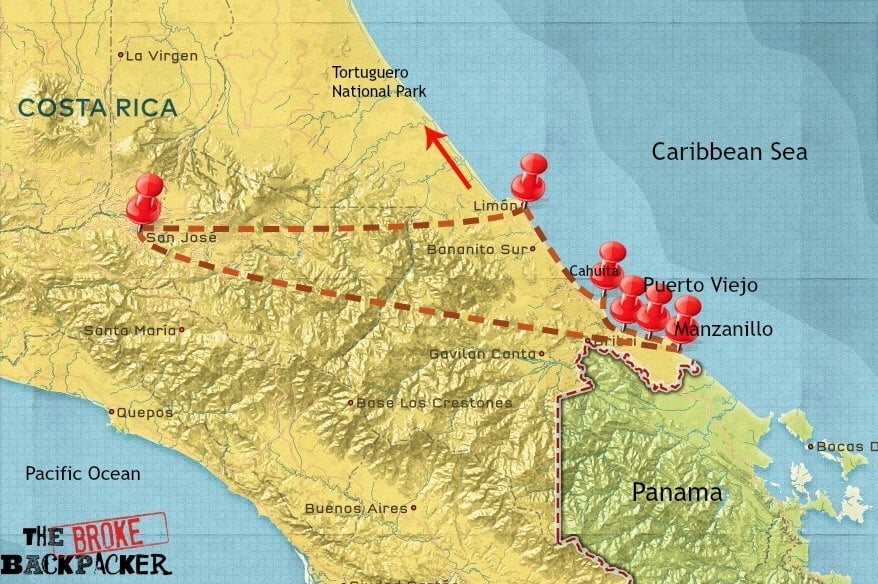
Which coast is the best coast? That is for you to decide, amigos! In my opinion, both coasts of Costa Rica are fucking phenomenal. The country isn’t named Costa Rica (Rich Coast) for nothing right?
Backpacking the Caribbean coast does offer up some distinct differences than its Pacific counterpart. For one, the landscape is lusher and wetter. The jungle is booming with life and so are the few sleepy coastal towns.
A visit to Tortuguero National Park is bound to be a highlight of your time backpacking Costa Rica. The park isn’t easily accessed, however it is one of the most beautiful places in the whole country. Tortuguero is definitely worth the effort! What makes it so special? Every year thousands of sea turtles hatch on the beaches in Tortuguero National Park.
The Tortuguero area is also one of the wildest places in Costa Rica. I would avoid the ugly port city of Limon. There is nothing on offer for backpackers except maybe a bus out of town.
Further south lies some of Costa Rica’s best beaches , nightlife and all around fun. Puerto Viejo is the quintessential Costa Rican party town where locals and gringos let loose and chill out. The town has a bit of a rasta vibe happening, and it is not surprising that many expats from abroad choose to make Puerto Viejo their home.
The town feels like it was made for backpackers. It is touristy but not in a negative way if that is possible. Expect heaps of backpackers but also get ready for heaps of fun.
Further south still lies the quieter town of Manzanillo . There are some excellent hikes in the area that weave between beach and jungle and offer up all of the associated dramatic views and wildlife. Down here the pace is slow and everything tastes like coconut. The abundance of delicious seafood, cold beer, and cheap weed makes the southern Caribbean coast one fantastic place to spend some time.
This 10 day Costa Rica backpacking itinerary follows the obvious route if you are planning to backpack Panama next.
Places to Visit in Costa Rica
Now that we’ve covered some of the best travel itineraries for backpacking Costa Rica, let’s dive in and explore some of the best places to visit in Costa Rica on your adventure…
Backpacking San Jose
For most backpackers, San Jose is more of a travel hub than it is a destination. I found San Jose to be pretty chill in comparison to other Central American capital cities.
To be honest, San Jose can’t really be avoided as you move about the country. Many parts of the country can be accessed from buses departing the main bus station. The “Coca-Cola” bus terminal as it is called is located in a sketchy neighbourhood. You shouldn’t experience any problems in San Jose; however, keep an eye out for pickpockets and scammers.
If you have a day or two to kill in San Jose , I recommend heading to the Avenida Central area. This busy boulevard makes for a good base to explore the downtown area, shops, restaurants, and museums.
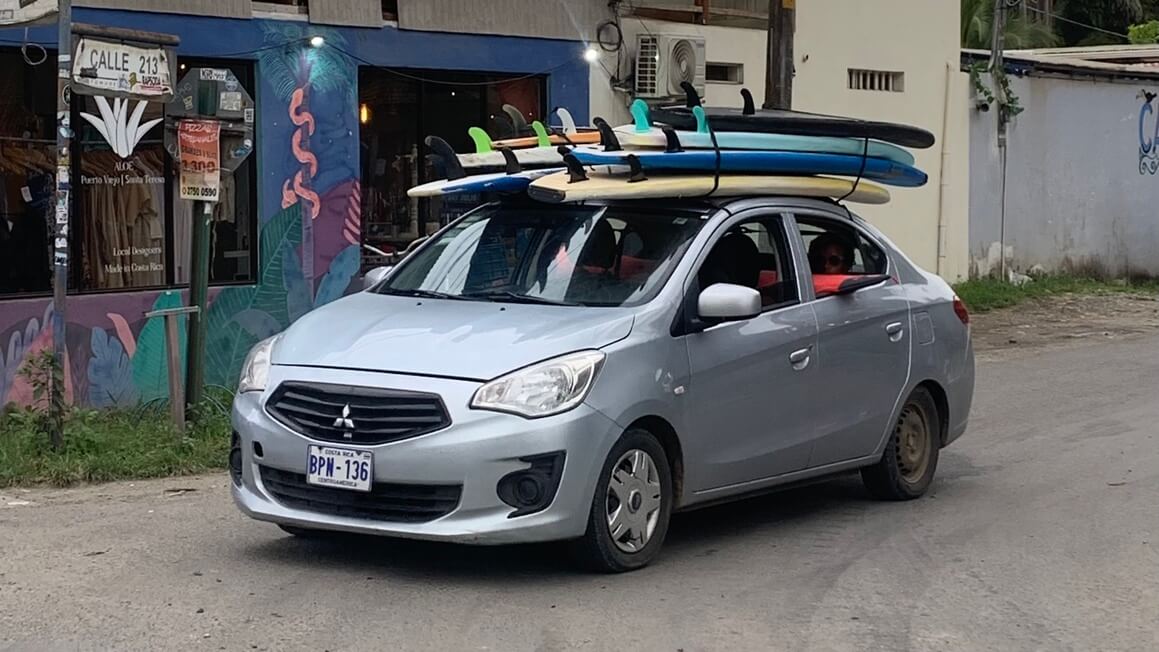
The Costa Rica National Museum is pretty good value and makes for an afternoon well spent.
San Jose is definitely not as sketchy or dangerous as say Guatemala City is; however, think twice before roaming around unknown neighbourhoods after the sun goes down.
If you’re planning on staying for a couple of nights, make sure you rest your head in one of the great San Jose Hostels – trust us, there are plenty of great ones. Start exploring San Jose recharged and ready to go!
Backpacking Playa Del Coco
Playa Del Coco is a popular beach town located on Costa Rica’s northern coast. If you are coming across the border from Nicaragua, the beach is only a few hours away by bus.
Playa Del Coco has really exploded with development over the last decade. A stopover here is fun, but I would not recommend staying more than a day or two. There is a fun nightlife scene and great scuba diving off the coast.
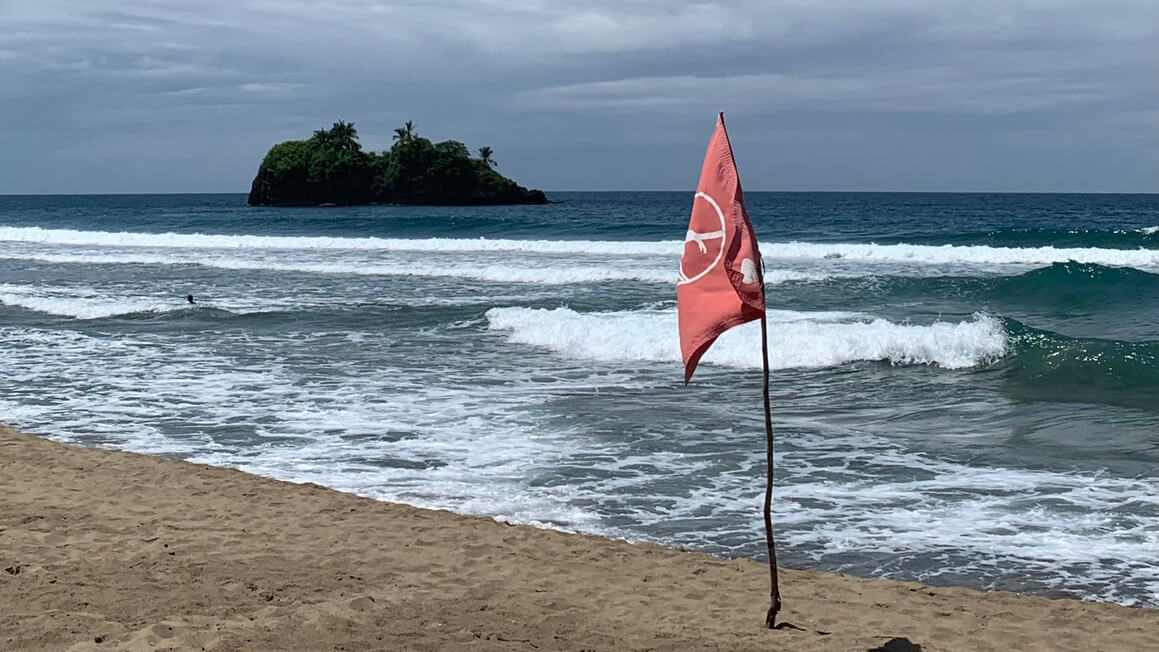
Playa Del Coco is notorious for a large number of sex workers operating here. If a “local” girl is flirting with you just a little too hard at the bar, then you know why. Something to be aware of is that I have heard a number of the sex workers in Playa Del Coco are minors (under 18).
Backpacking the Nicoya Peninsula
The Nicoya Peninsula is famous the world over for its fabulous surf breaks and reputation for being a paradise for backpackers. Alas, the reputation is true! I thoroughly enjoyed my time cruising around the Nicoya for a number of reasons.
The beaches truly are incredible and if you are looking to try surfing for the first time, you have come to the right place. My ex-girlfriend who had the balance of a drunken sailor even managed to catch a few waves down here.
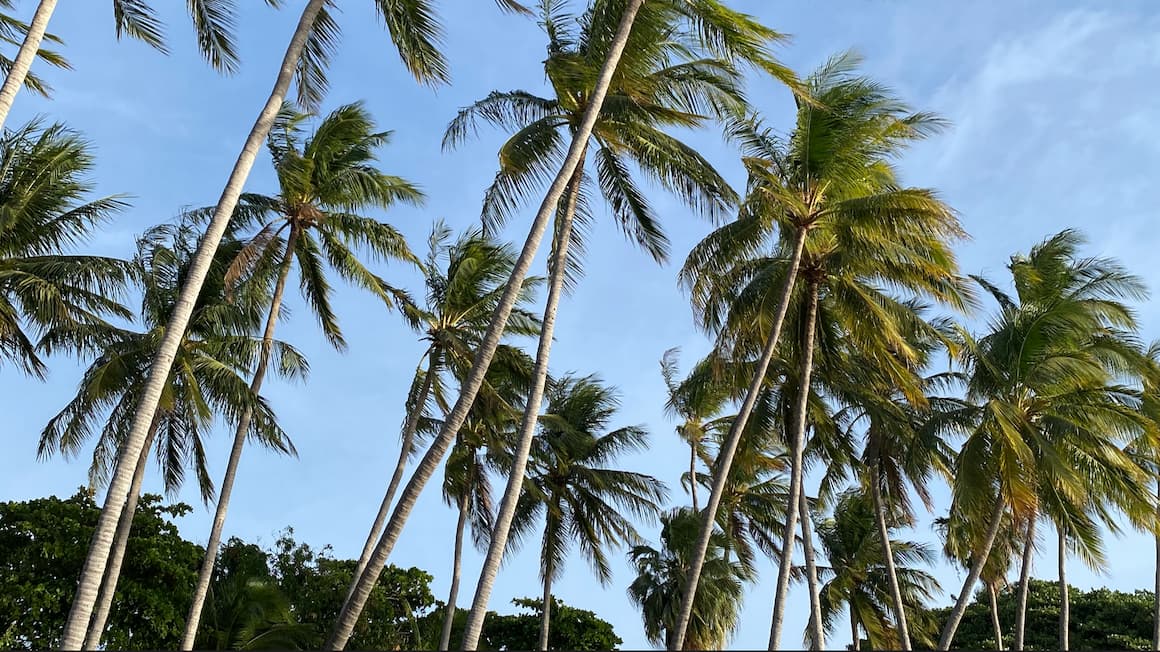
Parts of the Nicoya Peninsula are sparsely inhabited. The towns are small and still have dirt roads running through them. If you are looking for an alternative reality for a week or more, look no further than the Nicoya Peninsula!
Backpacking Montezuma
Though Montezuma is located in a remote part of the NP, there is plenty to keep you busy here. The secret is out and Montezuma has a well-developed infrastructure for hosting travellers. There is a great community of backpackers based in Montezuma and if you have even the slightest hippie tendency you will make friends in no time flat.
Surfing and beer drinking are the obvious official activities here. Inland you can find a handful of stunning hikes and waterfalls. If you prefer water sports, go scuba-diving or sea kayaking. You can also head on a day trip to Playa Grande. You’ll find even more surfing options here, as well as some awesome Playa Grande hostels for budget backpackers that want to stay a bit longer.
There are a handful of yoga retreat places around town too if you’re looking for that sort of thing. Or if you want to really channel inner healing, you could opt for a mediation retreat or spiritual retreat in Costa Rica .
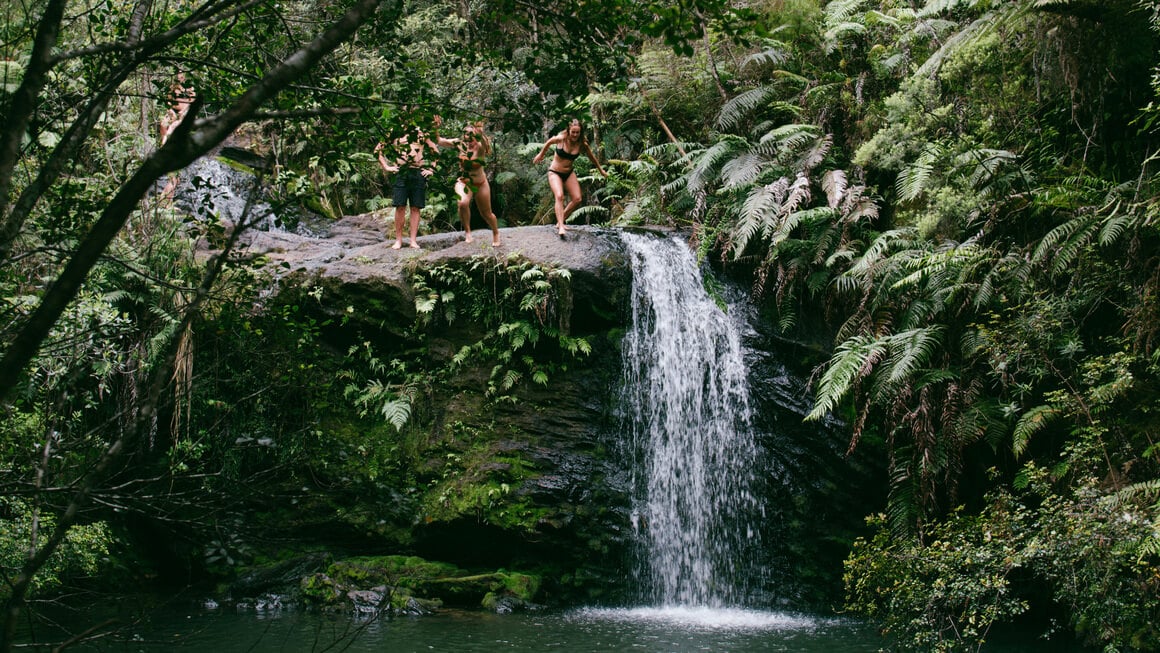
Backpacking Santa Teresa
Another surf mecca town on the NP is Santa Teresa. If you haven’t gotten the message by now, this region of Costa Rica lives and breathes surfing. I can’t think of a better place to learn.
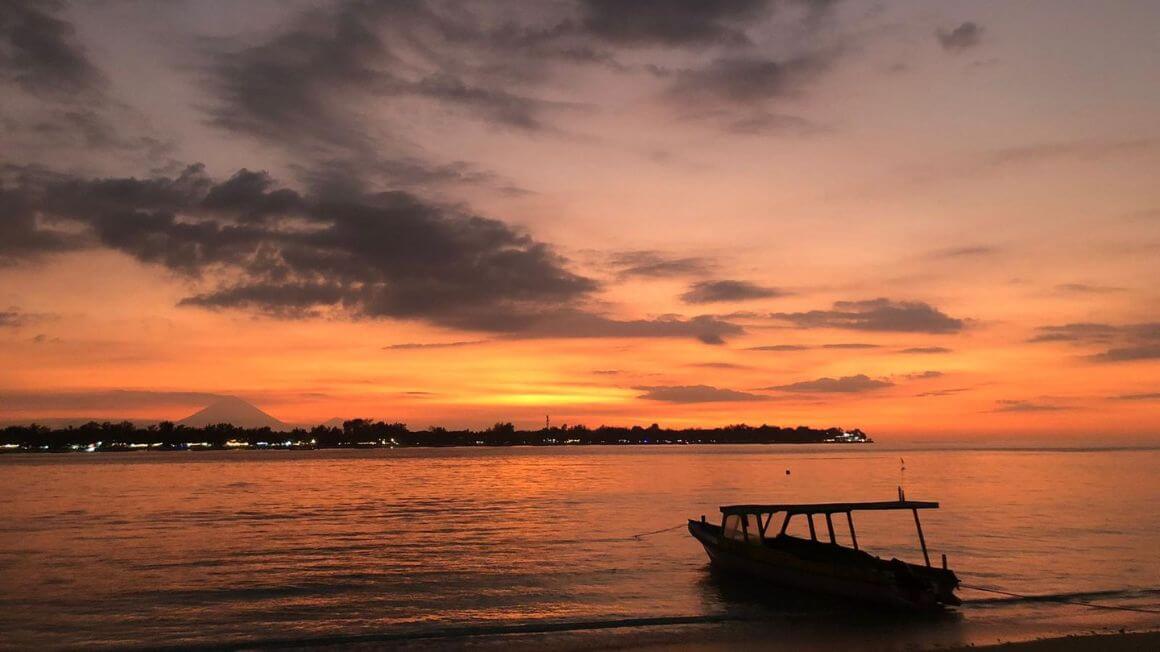
The town of Santa Teresa hasn’t got much going on other than its main strip of hostels, surf shacks, and cafes. If you are interested in epic cameras and photography , head to the beach at sundown and capture the sky as it explodes with color over the sea. The beach at Santa Teresa is one of the most beautiful places I have found myself whilst backpacking anywhere in the world. Check out this post for a full guide to Santa Teresa.
Spend your days catching waves and your evenings chilling out with your new mates on the beach. If this isn’t paradise I don’t know what is. There’s also awesome great hostels in Santa Teresa to stay at too.
Backpacking Quepos
If you are coming to Manuel Antonio National Park then you will pass a night or two in Quepos. Quepos is nice enough but the real draw here is without a doubt, the national park. The Rainmaker reserve just north of Quepos is a great alternative to the crowds of Manuel Antonio National Park.
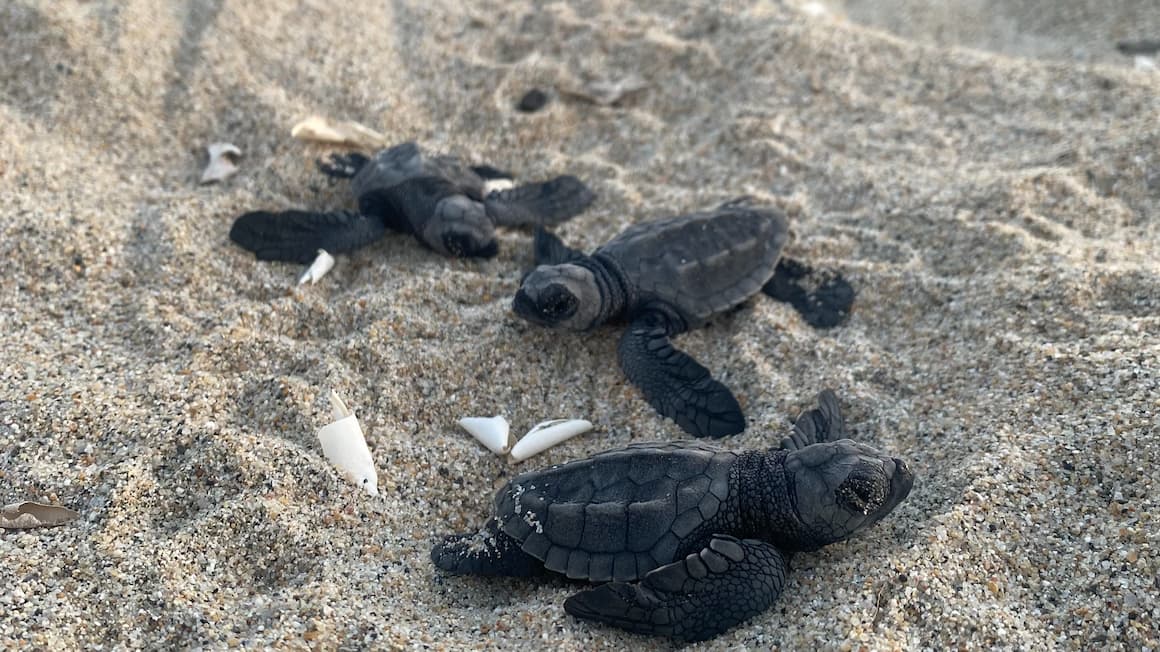
If you are in town for the weekend, definitely hit up the Quepos Farmers Market. As a general rule, you should be eating as much avocado, bananas, and mango as humanly possible whilst backpacking Costa Rica!
Backpacking Manuel Antonio National Park
Manuel Antonio National Park is beautiful and it is also an extremely popular Costa Rican National Park . There are a number of hiking paths that weave between jungle and the beach that offer. I recommend that you come to the park as early as possible to avoid the crowds. You will never avoid them completely; however, there are parts of the Manuel Antonio park where certainly fewer people go.
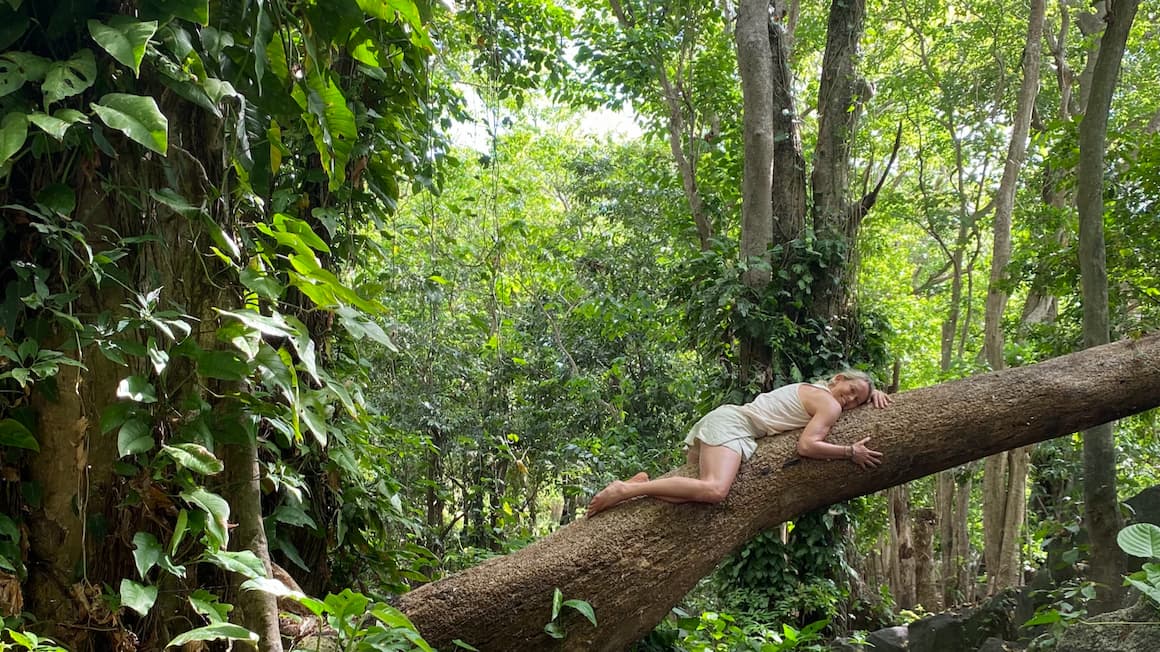
The beach at Playa Biesanz is one of the less visited gems of the park. This beautiful cove is a great place to go swimming and just chill out on the beach with some snacks. If you leave food out of your backpack while you are swimming, you can be pretty sure monkeys will steal it. Manuel Antonio also offers quite a few hostels which are worth checking out – rest your head in a comfy bed and start the next day recharged and ready!
Backpacking Corcovado National Park
If you thought Manuel Antonio was beautiful but too crowded then you will be blown away by Corcovado.
Corcovado National Park is a place filled with deserted beaches, lush rainforest, and a system of awesome hiking trails.
Camping in the park is possible, though only near the ranger stations. One must book these in advance and spots are limited, so jump on making reservations if you can.
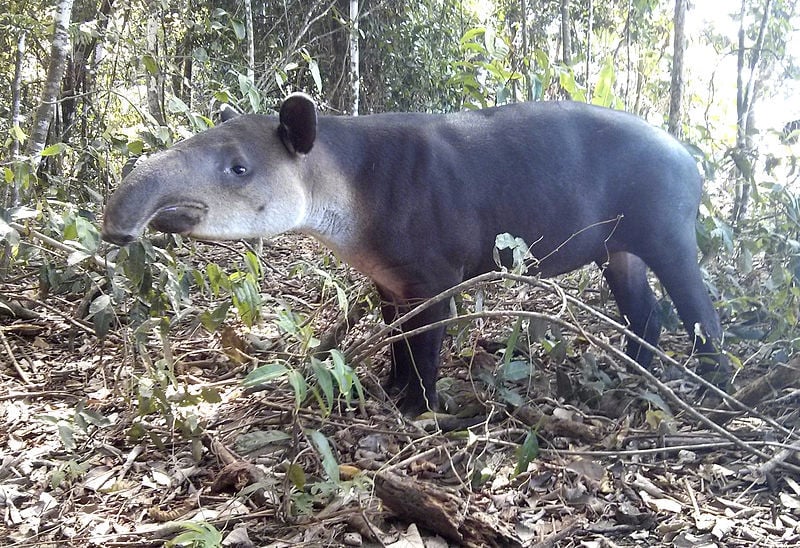
Since Corcovado is a pretty wild place there is an abundance of wildlife around every corner. Crocodiles live in the rivers so be careful when you cross them!
I have heard that backpackers can no longer do multi-day hikes in the park without a guide, and it can be quite expensive. I cannot speak to how strictly this is enforced. If you do end up taking a guide, remember to shop around and find the best deal for yourself.
Backpacking Pavones
Costa Rica’s southern Pacific coast is dotted with charming beach towns. Pavones ranks pretty high on the list. It is a place where the real world ceases to exist. Surfers, hippies, and backpackers come here every year and never leave. Between Pavones and Punta Banco, there are a series of freshwater swimming holes that really hit the spot on those sweltering sunny days.
The second longest left breaking surf wave in the world can be found in Pavones. Surfboard rentals are a bit expensive here ($15+/day). I advise splitting the cost with a friend or two and taking turns throughout the day.
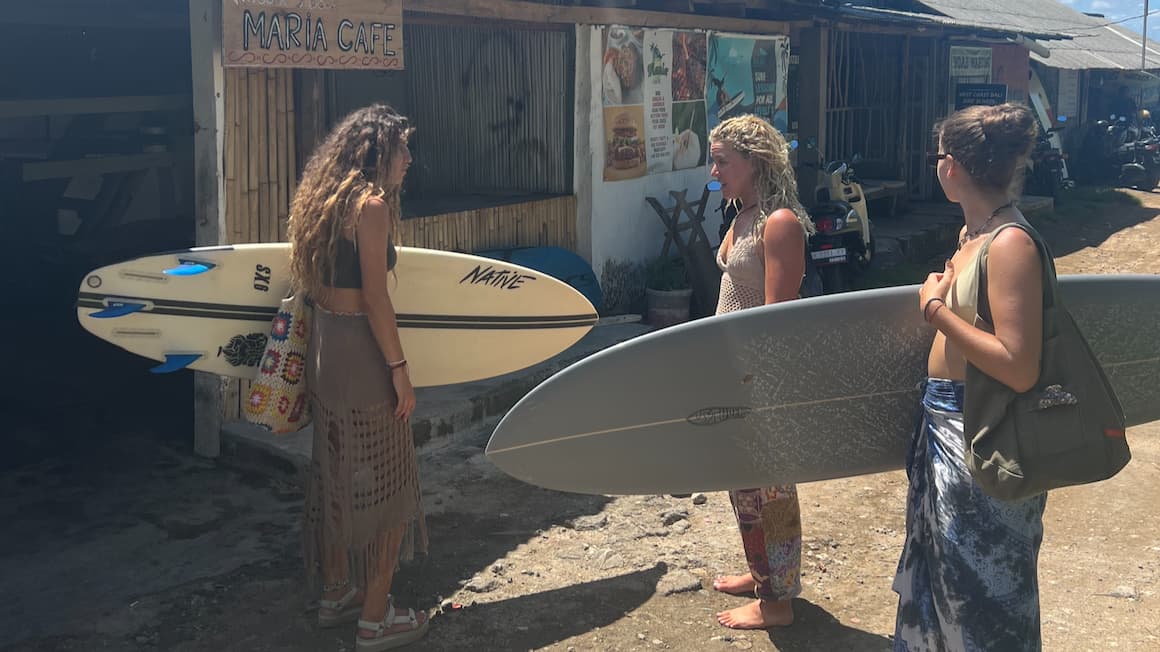
It is quite the effort to arrive at Pavones because of its geographical location. If you make it this far south, you will be rewarded with one of the best beaches and coolest vibes anywhere in the hemisphere. The nearby town of Uvita makes for another good spot to base yourself. Uvita is home to the legendary Envision Music and Arts Festival which usually takes place in February every year.
Backpacking Monteverde
Oh Monteverde. For the last 30+ years, Monteverde has been attracting nature lovers from around the globe like a magnet.
The Monteverde Cloud Forest Reserve is one of the most visited places in Costa Rica. That said, I believe it is a must-visit destination on your journey backpacking Costa Rica.
The absolutely stunning scenery and biodiversity make up its unique charm. Hiking in the reserve is a once in a lifetime experience. Due to its size, it is easy to find yourself alone for extended periods in the park. It is also possible to arrange a nighttime visit to the park to experience all of the nocturnal creatures that come out to play in the dark.
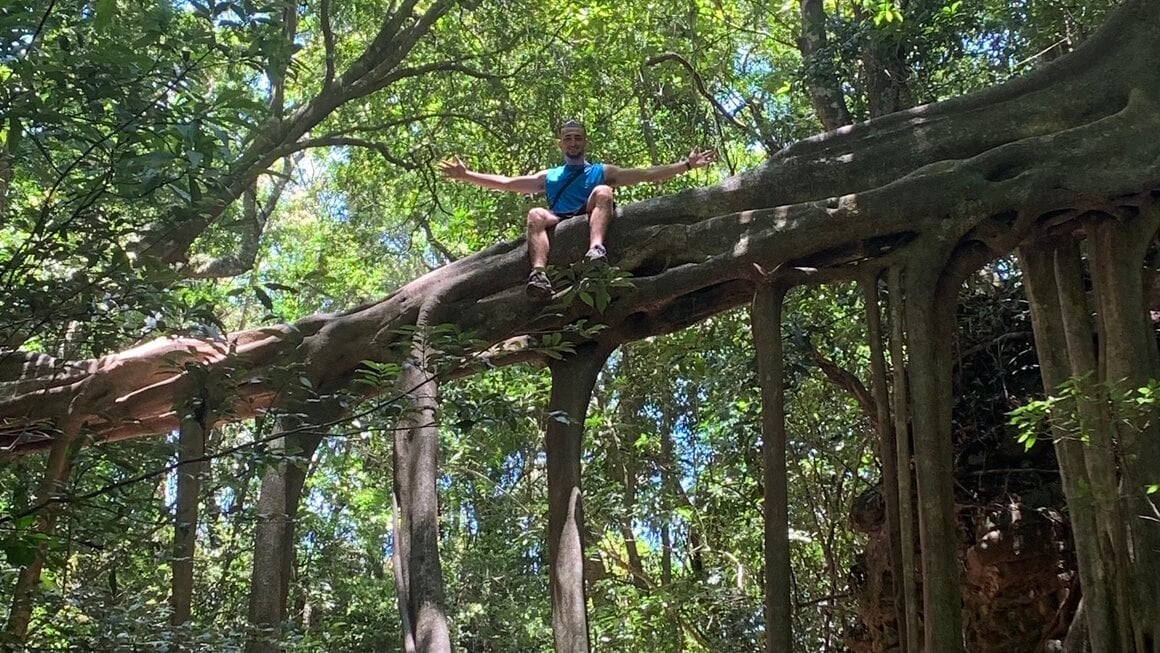
The town of Monteverde boasts a fun nightlife and a selection of fine cafes serving up some of the tastiest goddamn coffee in the whole country. Monteverde’s hostels can be considered some of the best and you’ll definitely enjoy staying here.
Bring a good rain jacket as the downpours can be sudden and fierce.
Backpacking La Fortuna
La Fortuna makes for a great base if you are planning to explore the region around the Arenal Volcano. The town is extremely touristy, though the surrounding area is gorgeous and definitely worthy of exploration. You shouldn’t spend too much time in town unless you are eating or sleeping. Speaking of sleeping – there are a couple of great hostels in Fortuna that will offer you a bed to rest your head and a free breakfast if you’re lucky.
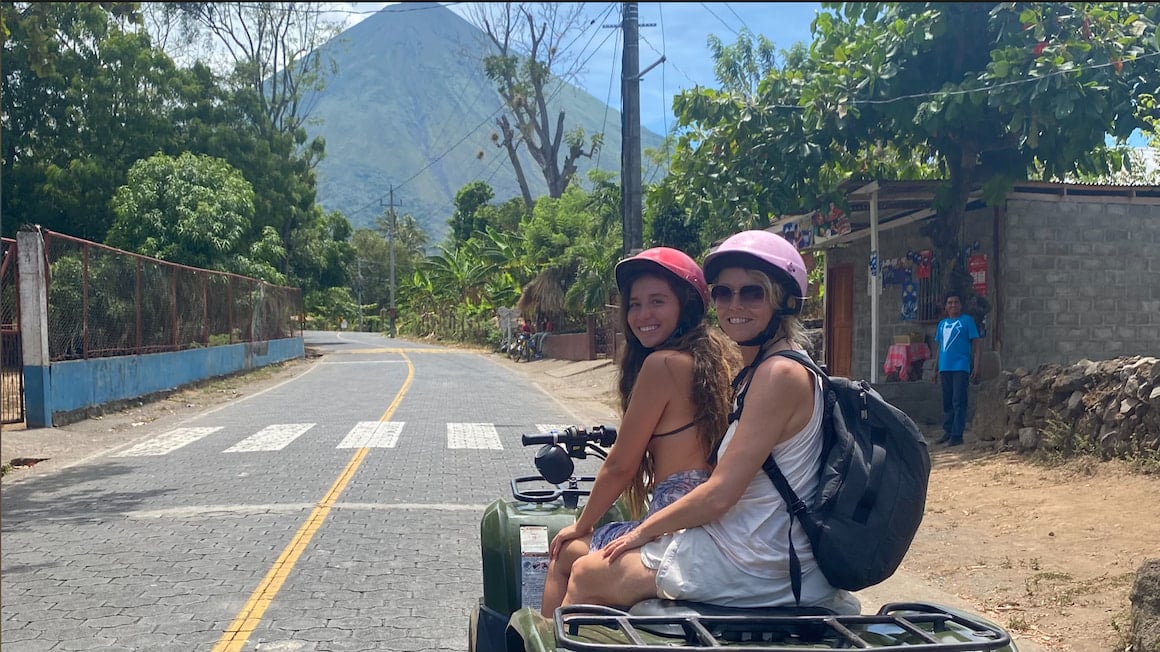
Going for a hike in Arenal Volcano National Park and soaking in natural hot pools rank as favorite activities here. You do not need to have a guide to go to the national park. There are many folks on the street in La Fortuna who will try to get you to hire them. Hiking in the park is very easy to sort out on your own, so don’t fall for it!
If adrenaline sports are your thing, there are an infinity of operators willing and ready to fulfill your canyoning or rafting dreams.
Backpacking San Isidro de El General

San Isidro is a typical Tico town in many respects. It is conveniently located just an hour away from the Dominical beach. Costa Rica’s highest mountain, Cerro Chirripo is only a short drive away. If you are looking to explore this part of Costa Rica, San Isidro makes for an easy base to explore the surrounding region and national park at Cerro Chirripo.
Climbing Cerro Chirripo (12,533 feet) is definitely worth the effort! On a clear day, you can see both the Pacific and Caribbean coasts from the summit. The 11-mile hike to the top can be stretched over two days, with an overnight (or wild) camp at the ranger’s station.
The Nauyaca waterfalls are roughly 30 minutes from the town center and make for an excellent day trip complete with a swim below the falls!
Backpacking Tortuguero National Park
One of the most beautiful and wild places in Central America? Yes. A budget backpacker destination? Not exactly. Let’s face it. Costa Rica can be an expensive place to travel at times.
With a visit to Tortuguero, there is simply no avoiding incurring some steep cost. Tortuguero is very remote and difficult to access. All of the supplies from the outside are brought in by boat. The prices reflect that.
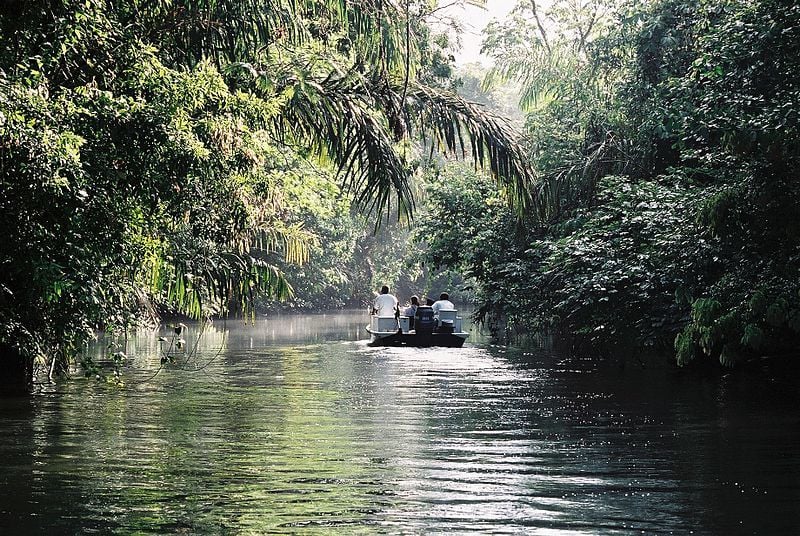
With that said, a trip here is bound to be ultra rewarding. Its beaches are famous nesting grounds for sea turtles, including endangered green turtles. The park’s freshwater creeks and lagoons, which can be navigated by boat or canoe, shelter spectacled caimans, and river turtles.
The jungle is so dense and untouched it gives you a feeling of what the landscape looked like across Central America before human development. If you are prepared to pay a bit for the pleasure of visiting Tortuguero than you will find some of the best off the beaten path adventure in Costa Rica.
And if you’re looking for somewhere remote that offers serenity and peace, there are some awesome Costa Rican Airbnbs in and around the national park that offer just that.
Backpacking Puerto Viejo
Puerto Viejo is one of my favorite places in Costa Rica. Despite it being brimming with gringos and pricier than it should be, Puerto Viejo is one fine place to spend some time.
Located at the southern end of Costa Rica’s Caribbean coast, Puerto Viejo has a lot going for it. There are ample diving and surfing opportunities as well as a vibrant international party scene.
There is an endless amount of accommodation options here too spanning all budgets. It is possible to pitch your tent at one of the surf camps for about $8/night. Puerto Viejo has a variety of fantastic places to eat as well, showing off the diversity of its inhabitants.
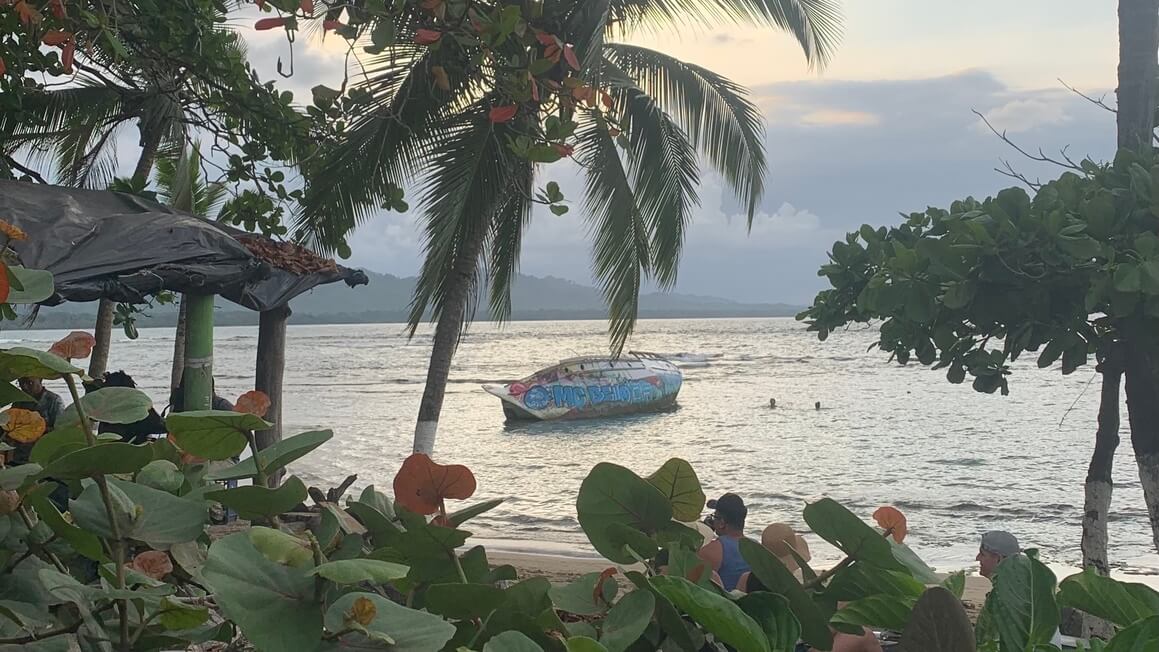
One thing I found frustrating is the fact that there is no clean drinking water in Puerto Viejo. They really gouge you on the price of water bottles ($2-3 per liter). Plus you end up buying heaps of plastic and contributing to the destruction of the planet.
I recommend filling up your bottles at your Puerto Viejo hostel if they have a filtration system. Or as stupid as this sounds, bring several gallons (or more) with you from another city. You will definitely save some money. I did it, and I did not feel stupid hauling water around with me.
Backpacking Manzanillo
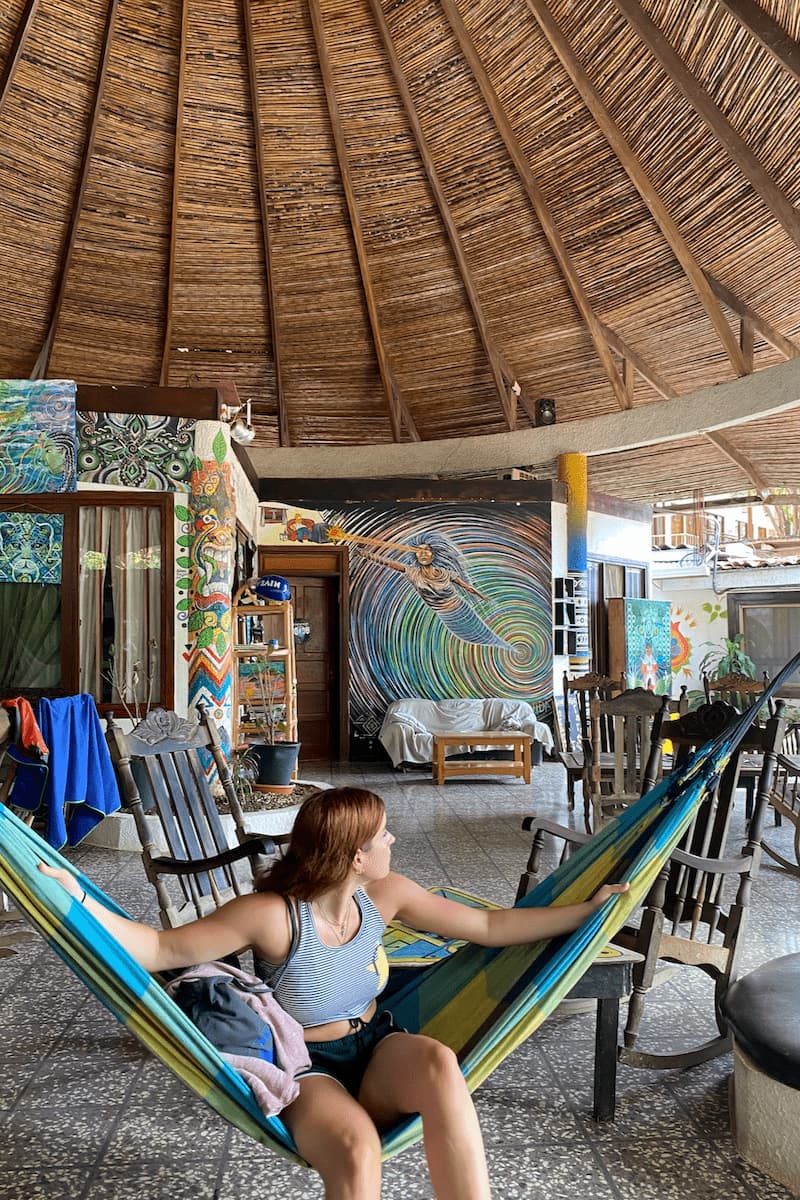
Located just a short drive south from Puerto Viejo is Manzanillo. If the party scene has become too much for you or you are just seeking some quieter environment, come to Manzanillo. The beaches are great and a hike through the jungle just out of town is not to be missed!
The Gandoca Manzanillo Wildlife Reserve has some excellent hiking trails and almost no people.
One of the best nights of my life was spent at the Nature Observatorio tree house in the middle of the jungle. This is by far the most expensive lodging I have ever paid for on a backpacking trip but I must say it was totally worth it.
The tree house is literally in the middle of the jungle. The super cool builder/owner even hikes out a hot meal of your choosing along with a bottle of wine!
A 30-meter climb into a masterfully constructed treehouse complete with a hot shower and ultra-comfy mattress in the canopy of the rainforest is every bit as dreamy as it sounds. If you are looking for one cool and unique experience where you sleep suspended in the air as toucans, parrots, and monkeys mill around, I highly recommend staying here for a night! If ever you were going to blow your budget on something, do it here!
The great news is that there are tons of epic treehouses in Costa Rica , and if you’re looking for a truly unique experience, we highly recommend you book a stay at one.
Getting Off the Beaten Path Travel in Costa Rica
Despite Costa Rica being one of the most popular travel destinations on earth, there is still room to travel off of the beaten path. Explore the national parks, numerous nature reserves, and remote coastlines. In most places, it only takes a little effort to escape the crowds.
The Caribbean and Pacific Coasts are teaming with adventure possibilities to explore. The wild nature of the interior also provides endless hiking and exploration potential.

We’ve tested countless backpacks over the years, but there’s one that has always been the best and remains the best buy for adventurers: the broke backpacker-approved Osprey Aether and Ariel series.
Want more deetz on why these packs are so damn perfect? Then read our comprehensive review for the inside scoop!
Top Things to Do in Costa Rica
Whether you love the beach, the mountains, or the jungle, Costa Rica has something incredible to discover in each of its distinctly different regions. The possibilities are endless really. Explore until your heart’s content and love every single minute of it.
I have listed the top 10 most popular and best things to do in Costa Rica below to get your ideas flowing for your next trip backpacking Costa Rica!
1. Visit Corcovado National Park
Want to see some of Costa Rica’s unique wildlife? Come to Corcovado and explore the park on foot.
2. Learn How to Surf
Costa Rica has some of the best waves in the world. Want to make your daily routine something straight out of Endless Summer ? Shouldn’t be too hard to achieve that.
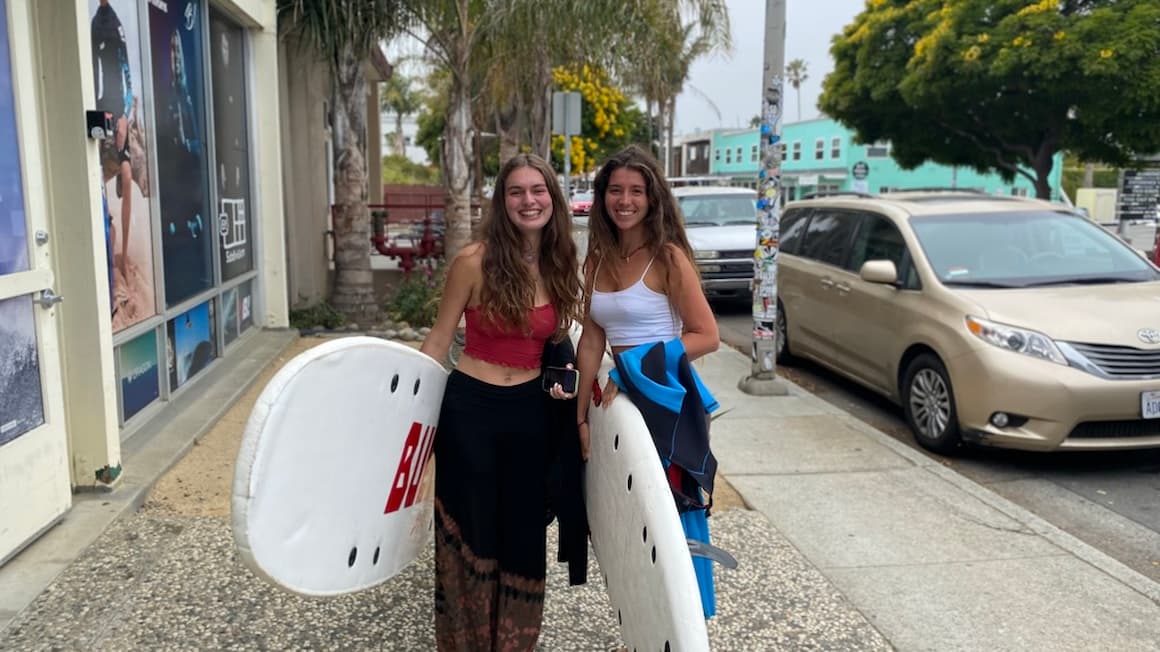
3. Study Spanish
Though you can get by in Costa Rica with English alone, learning Spanish will certainly open doors for you. Knowing a bit of Spanish will allow you to connect more easily with locals, get better prices, and will generally make travelling easier for you in Latin America.
Global Work and Travel Spanish Program
In fact, if you are MUY SERIOSO about improving your Spanish, Global Work and Travel , a platform offering volunteer, remote work, and language learning opportunities, has an immersive Spanish program that could keep you grounded in Playa Samara for a few weeks. They’ll even help you find accommodation, and assist you every step of the way with a 24/7 global help-line, help with VISA processing and airport transfers should you need it. The Global Work and Travel Spanish program provides you with 4 hours of classes a day and other complementary activities in the evenings. Don’t forget to pack your dancing shoes!

4. Climb Cerro Chirripo
Explore one of Costa Rica’s most beautiful areas whilst climbing the highest mountain in the country.
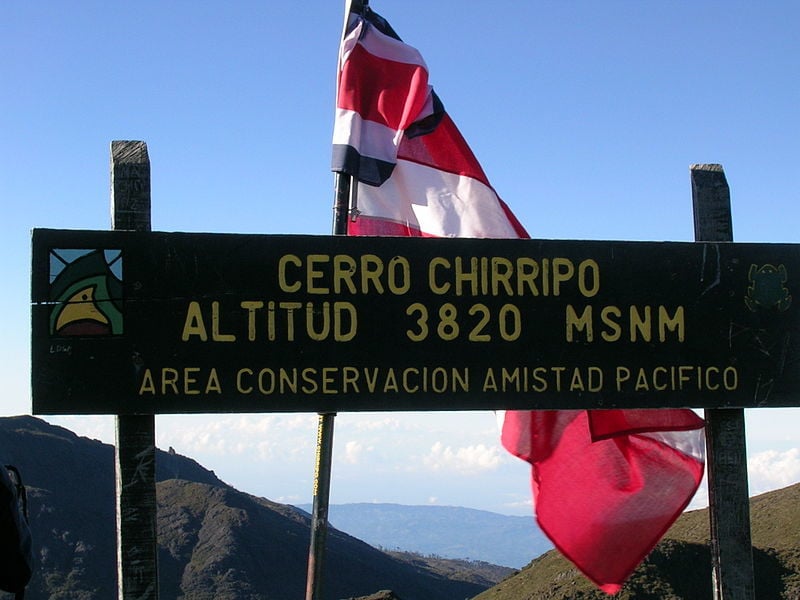
5. Explore the Monteverde Cloud Forest Reserve
A hike through the Monteverde Cloud Forest Reserve is bound to be another great Costa Rica backpacking experience. See how many different orchids you can spot?
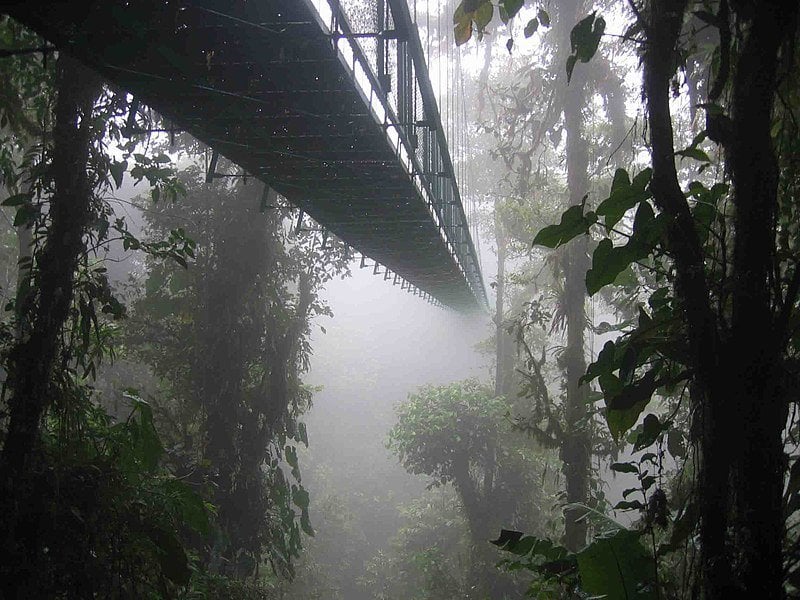
6. Stay in a Tree House in the Jungle
It requires some cash, but the stay in the tree house in the middle of the jungle was by far one of the coolest experiences I have ever had in my many years of traveling. If I had to choose between budgeting a beer tab for three weeks or staying in a jungle tree house for one night, I’d go with the tree house every time!
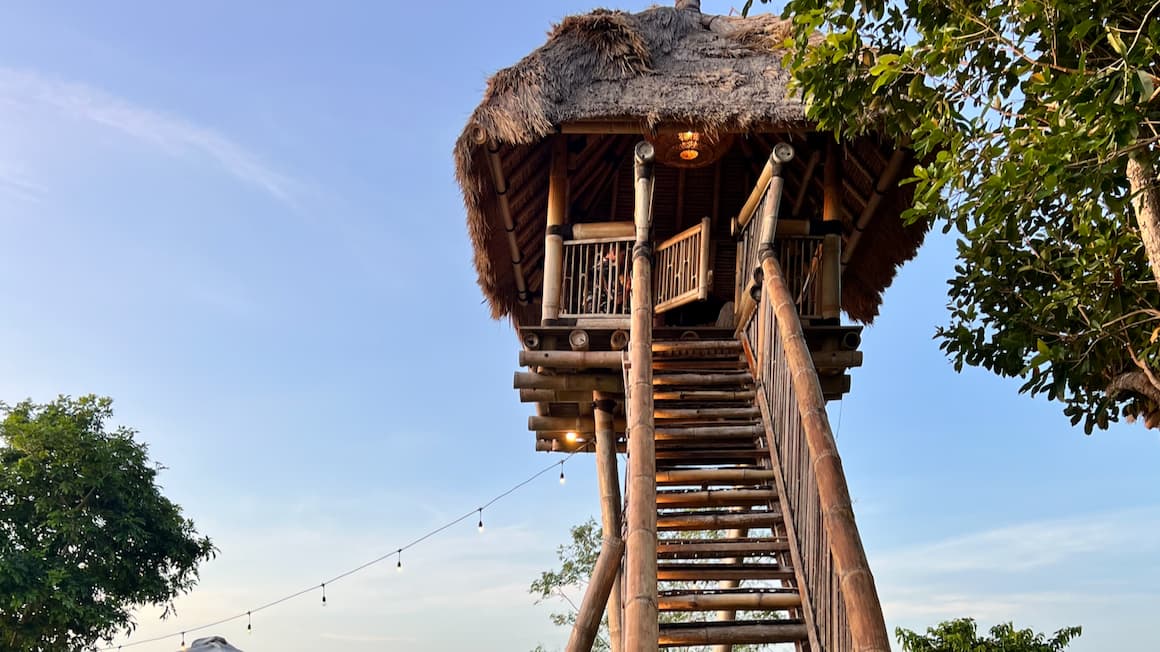
7. Drink Rum on the Beach
Rum is abundant. It is cheap. And rum on the beach with some good friends? A damn good time.
8. Watch a Coastal Sunrise and Sunset
I implore you to catch one of each on both coasts if you can swing it. I believe in you! In most cases, you will have the beach to yourself to catch the sunrise.
9. Kayak Tortuguero National Park
You have made it this far into Tortuguero now explore the hidden gems of the park under your own steam.
10. Scuba Dive in Costa Rica
Scuba Diving isn’t the cheapest activity, but if you can afford a dive or two, the diving is world class and will leave you grinning like a fool.
11. Just one more… Join a Fitness Retreat!
If you’re up to it, travelling can be the perfect time to focus on your fitness goals. We’re super excited that WanderFit is now offering fitness holidays for the first time in Latin America, so you might find us there more often in the next few years.

Wanna know how to pack like a pro? Well for a start you need the right gear….
These are packing cubes for the globetrotters and compression sacks for the real adventurers – these babies are a traveller’s best kept secret. They organise yo’ packing and minimise volume too so you can pack MORE.
Or, y’know… you can stick to just chucking it all in your backpack…
Backpacker Accommodation in Costa Rica
Most regions in Costa Rica have a wide variety of budget accommodation options. These range from your standard backpacker hostel, crude surf camps on the beach, vacation rentals , or affordable retreat . Many of the towns with a more developed tourism infrastructure have pricier hotels and mountain lodges.
Almost always though, it is possible to find a budget option. Prices vary but the average price of a dorm bed throughout Costa Rica is between $10-15 USD. If you are traveling as a couple it usually ends up making sense to go for a private room as the price will be about the same.
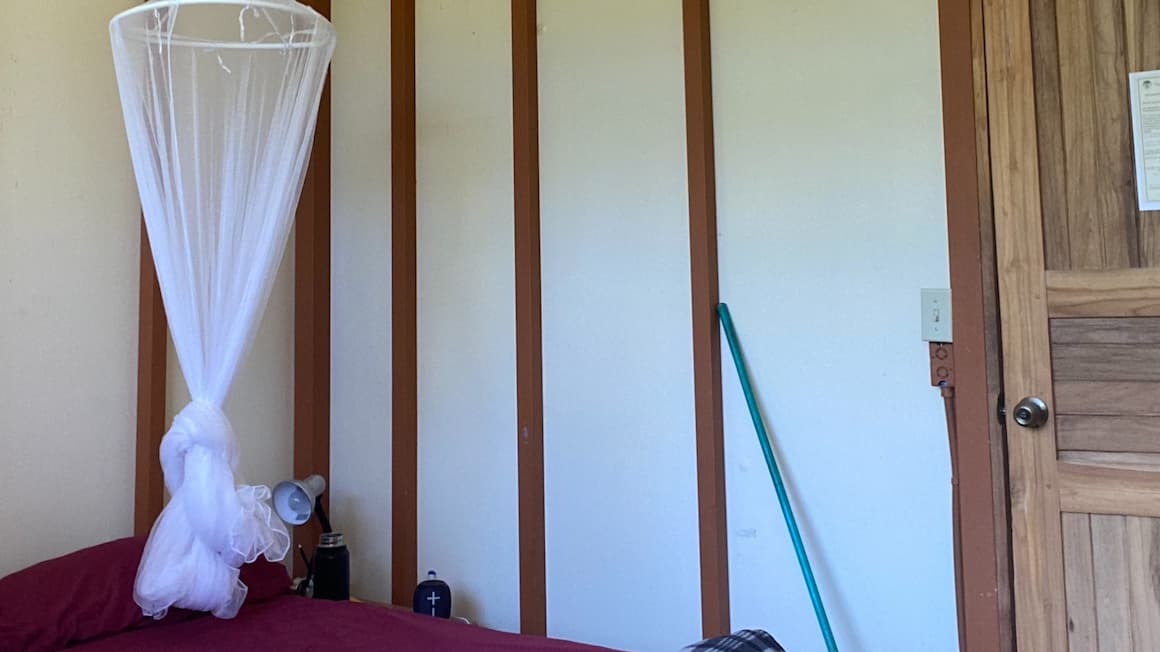
If you are keen to camp, many hostels in Costa Rica offer camping as an option. Camping prices also vary greatly but in my opinion, they are more expensive than they should be. A campsite at a hostel or surf camp (with your own tent) will run you back between $5-10 per night.
Otherwise, Couch Surfing is the cheapest (free) way to go, and a great way to meet other locals; however, some of the places will not have much of a couch surfing scene. I believe Costa Rica suffers from too many backpackers looking for Couchsurfing, which has resulted in hosts that receive far more requests than they can or want to handle.
And as a quick insider tip: If you want to see all – and we mean ALL – hostel options in Costa Rica, be sure to check out BOOKING.COM . You can even filter your personal travel needs to find the perfect place for you.
The Best Places To Stay in Costa Rica
Costa rica backpacking costs.
If you have been traveling around South or Central America, the high prices in Costa Rica will come as a shock. At times Costa Rica can be an expensive country to travel. They don’t call it the Switzerland of Latin America for nothing.
If you are on a long-term backpacking trip, budget accordingly, and don’t forget to save a little cash for something spectacular that you really want to do!
A Daily Budget in Costa Rica
Backpacking Costa Rica on a budget is quite easy really. During my time backpacking Costa Rica, I spent on average $30 USD a day. I’d say it is possible to backpack Costa Rica for as little as $15-20 a day if you are really budget conscious. $10 a day would be pushing it. That said, there are plenty of surf bums doing just that.
Money in Costa Rica
The currency in Costa Rica is the Costa Rican Colon. US dollars are excepted widely, however not everywhere.

ATMs are widely available everywhere, but you can expect a withdrawal fee for international bank cards, which is why I travel with a debit card that refunds me for transaction fees. (Americans, I recommend checking out Charles Schwab!)
Travel Tips – Costa Rica on a Budget
- Camp: With plenty of gorgeous places to sleep out, Costa Rica can be a great place to camp in the rural areas. Check out this post for a breakdown of the best tents to take backpacking. Or, if you’re feeling really adventurous and want to save some cash, consider picking up a backpacking hammock.
- Cooking: If you are camping a lot or really want to save some cash, it could be worth bringing a portable backpacking stove so you can do some of your own cooking.
- Couchsurf: Costa Ricans ( Ticos ) are awesome, and I am so grateful I was able to explore its cities with local friends. Check out Couchsurfing to make some real friendships and see this country from the perspective of locals.
- Hitchhike: Where appropriate, hitchhiking is a great way to save money on transportation costs.
- Pack a travel water bottle and save money every day!
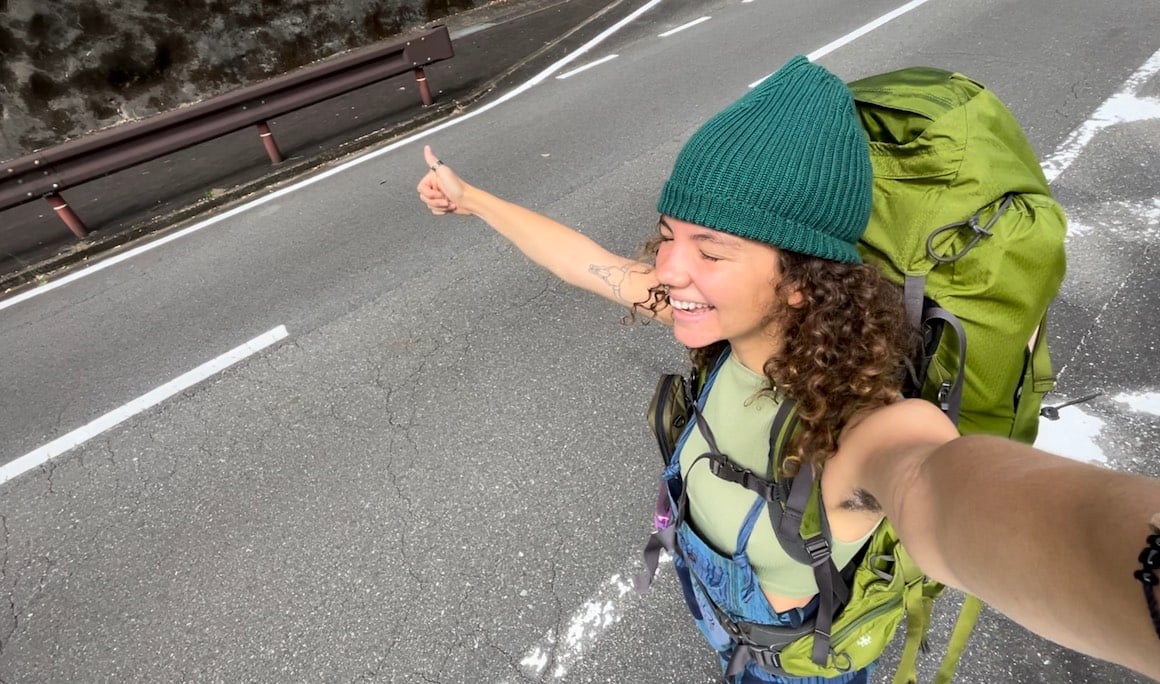
Why You Should Travel to Costa Rica with a Water Bottle
Plastic washes up on even the most pristine beaches… so do your part and keep the Big Blue beautiful
You aren’t going to save the world overnight, but you might as well be part of the solution and not the problem. When you travel to some of the world’s most remote places, you come to realise the full extent of the plastic problem. And I hope you become more inspired to continue being a responsible traveller .
Plus, now you won’t be buying overpriced bottles of water from the supermarkets either! Travel with a filtered water bottle instead and never waste a cent nor a turtle’s life again.

Drink water from ANYWHERE. The Grayl Geopress is the worlds leading filtered water bottle protecting you from all manner of waterborne nasties.
Single-use plastic bottles are a MASSIVE threat to marine life. Be a part of the solution and travel with a filter water bottle. Save money and the environment!
We’ve tested the Geopress rigorously from the icy heights of Pakistan to the tropical jungles of Bali, and can confirm: it’s the best water bottle you’ll ever buy!
Best Time to Travel to Costa Rica
Costa Rica has two distinct seasons: A dry season that runs from December through April, and a rainy season that runs from May through November. When Americans and Europeans are tired of freezing their asses off in the winter, they usually head down to Costa Rica en masse. December to February are very busy months in Costa Rica.
Make sure to book far in advance during Semana Santa (Latin America’s Easter holiday week). Many domestic tourists will be on holiday. Americans also have this week off.
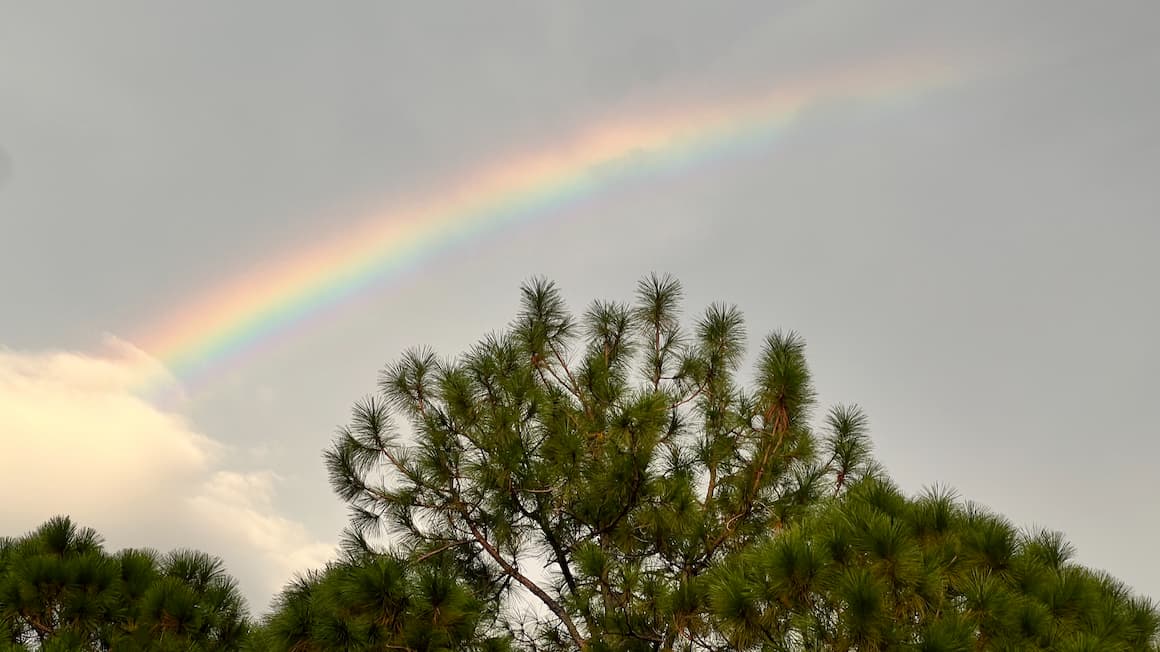
If you plan on spending a lot of time doing outdoor activities, then the dry season is the obvious choice to visit. If your backpacking trip is more focused on doing yoga, Spanish, or permaculture schools, then really you can come any time of the year. November and June are great months to visit. The prices and crowds are at their lowest.
Festivals in Costa Rica
Envision Festival: Costa Rica’s most exciting arts and music festival. Come experience 4 days or peace, love, yoga, and killer tunes on the beach in Uvita. Envision Festival usually takes place in late February every year. If you are in Costa Rica during this time, then you should absolutely come to this festival!
Bamboo Bass Festival: If you are a fan of Bass music, this festival will satisfy your burning desire for days of skull-pounding rhythms. Bamboo Bass takes place in Jaco beach in February.
Ocaso Underground Music Festival: This fest takes place in Tamarindo, Guanacaste at the start of January. Ocaso Underground spans three different venues with an impressive lineup of house and techno artists.
Costa Rica Street Food Festival: Love street food? Me too. Come on out and join the masses and eat until your heart’s content. This year it takes place at the Kölbi Center in Parque Viva.

What to Pack for Costa Rica

Snoring dorm-mates can ruin your nights rest and seriously damage the hostel experience. This is why I always travel with a pack of decent ear plugs.

Hanging Laundry Bag
Trust us, this is an absolute game changer. Super compact, a hanging mesh laundry bag stops your dirty clothes from stinking, you don’t know how much you need one of these… so just get it, thank us later.

Sea To Summit Micro Towel
Hostel towels are scummy and take forever to dry. Microfibre towels dry quickly, are compact, lightweight, and can be used as a blanket or yoga mat if need be.

Monopoly Deal
Forget about Poker! Monopoly Deal is the single best travel card game that we have ever played. Works with 2-5 players and guarantees happy days.

Grayl Geopress Water Bottle
Always travel with a water bottle! They save you money and reduce your plastic footprint on our planet. The Grayl Geopress acts as a purifier AND temperature regulator. Boom!
Staying Safe in Costa Rica
In my experience backpacking Costa Rica, there was never a time when I didn’t feel safe. Costa Rica has very low rates of violent crime when compared to other countries in the region. Use your common sense and avoid being out late at night in the unfamiliar areas of big cities.
In general being out late, drunk, and alone is a recipe for trouble anywhere in the world. There have been reports of backpackers getting held up on remote sections of beach on both coasts. Odds are you should be just fine. If ever you run into a hold-up situation give them what they want and don’t resist. Your Iphone and wallet are never worth dying over, ever!

Pick yourself up a backpacker security belt to keep your cash safe on the road, and check out Backpacker Safety 101 for tips and tricks to stay safe whilst backpacking Costa Rica.
I strongly recommend travelling with a headlamp whilst in Costa Rica (or anywhere really – every backpacker should have a good headtorch!) – check out my post for a breakdown of the best value headlamps to take backpacking.
Be aware that Costa Rica is home to many species of poisonous spiders, snakes, and other dangerous creatures. Always watch your step when trekking through the jungle. Apart from that, we can say that Costa Rica is pretty safe . Just keep in mind: never stick your hand somewhere you haven’t first seen with your eyes.
Sex, Drugs and Rock ‘n’ Roll in Costa Rica
Costa Rica is definitely a place where locals and backpackers like to get down. While beer and liquor are relatively cheap, night after night of partying can burn a huge hole in your pocket. A variety of drugs are readily available also.
Cheap weed of varying quality can be found as easily as bottled water in many of the popular surf towns. This is especially true on the Caribbean coast and in Puerto Viejo in particular. Cocaine is also pretty free-flowing at times. While sniffing a little coke can be fun, remember the industry you are funding is responsible for hundreds of thousands of deaths all over South and Central America.
There is no legitimate argument for ethical cocaine, however, the choice is yours to make. I would be a hypocrite if I told you to stay away from it all together.
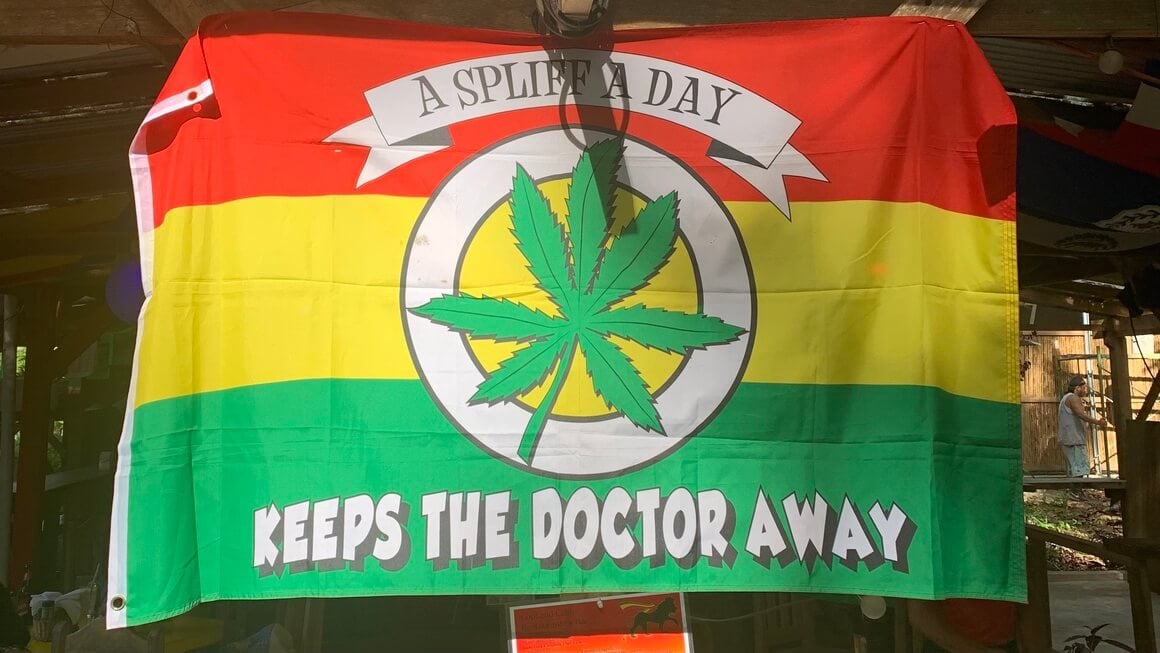
Ticos love a good party and they are happy for gringos to join them for a good time. Remember to pace yourself. A night out doesn’t have to involve slamming beer and shots as fast as you can.
Travel Insurance for Costa Rica
ALWAYS sort out your backpacker insurance before your trip. There’s plenty to choose from in that department, but a good place to start is Safety Wing .
They offer month-to-month payments, no lock-in contracts, and require absolutely no itineraries: that’s the exact kind of insurance long-term travellers and digital nomads need.

SafetyWing is cheap, easy, and admin-free: just sign up lickety-split so you can get back to it!
Click the button below to learn more about SafetyWing’s setup or read our insider review for the full tasty scoop.
How To Get Into Costa Rica
Costa Rica has two international airports, one in San Jose, and the other in Liberia near the northern Nicoya Peninsula. You can fly into whichever is most convenient for your itinerary. The hostels in Liberia and San Jose are usually pretty good, so if you have a late flight, you can crash.
There are also border crossings from the north and south. Most people cross into La Cruz from the southwestern part of Nicaragua or cross into Panama near Puerto Viejo and Manzanillo by bus.
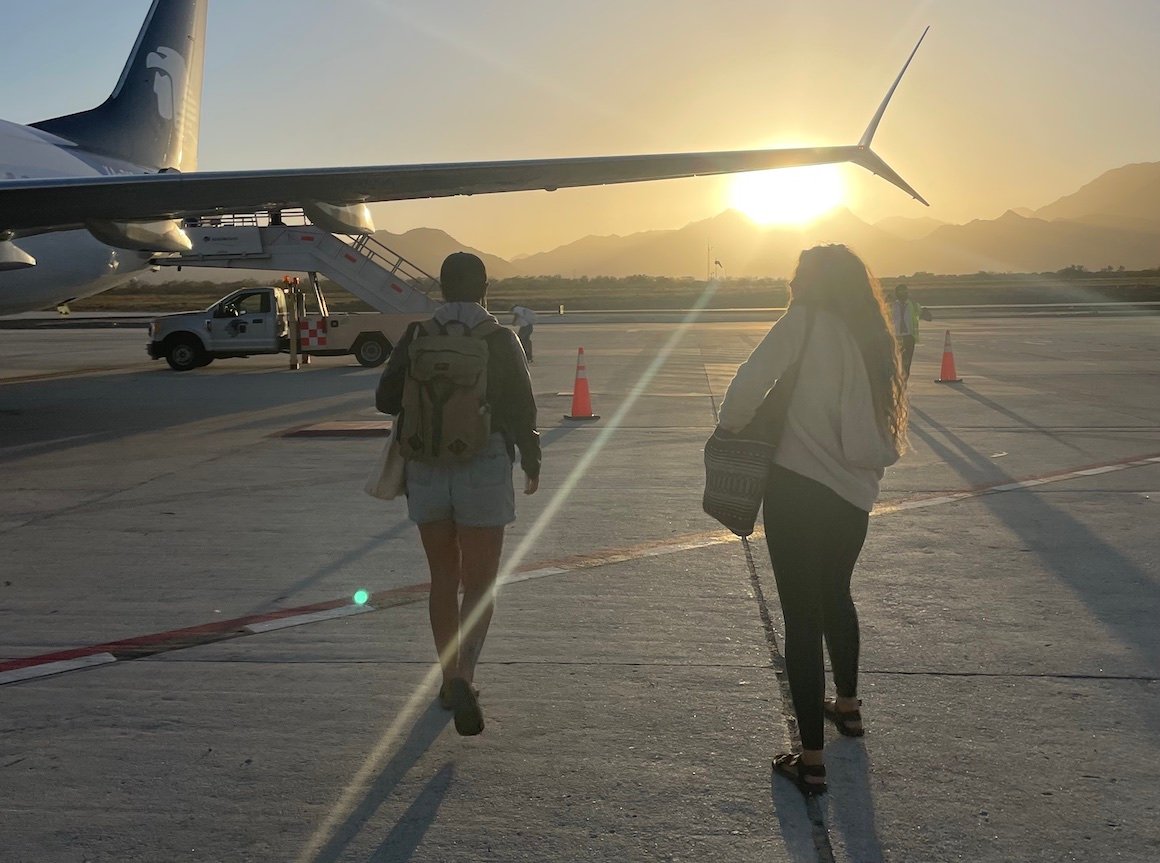
Entry Requirements for Costa Rica
Costa Rica has pretty lax requirements for citizens of many countries. Citizens from the EU, USA, Canada, and Australia do not need to apply for visas before arriving. So before you book your flights, check the complete list of countries that do not need to apply for visas before arriving.
There is decent public transportation linking the international airport in San Jose to the city center. Do not opt for a taxi unless absolutely necessary!
If you are arriving at a land border, you must present a return ticket home or a ticket out of the country within 90 days. This is very important! They will not let you pass through into Costa Rica without this information! If you are not in possession of a plane ticket, you can buy an international bus ticket with an open date on it.
The two most common border crossings are at Penas Blancas in Nicaragua (which is an awesome backpacking destination too) and Paso Canoas in Panama.

It only takes 2 minutes! Book your transport on 12Go now and guarantee your seat easily.
How To Get Around Costa Rica
Costa Rica has a pretty solid network of buses that seem to run on time for the most part. I found the public transportation in Costa Rica to be efficient, but also the most expensive anywhere in Central America. For ease and convenience, buses are definitely the way to go.
Taxi are abundant as well if you are needing to get to a place where buses don’t run. I would personally avoid taxis at all costs because they tend to be very expensive. If your haggle game is on point you might be able to get a decent rate, but don’t count on it. Uber is available too, especially in San Jose and it’s a cheaper alternative to getting a taxi.

Onward Travel from Costa Rica
Getting to one of the countries neighboring Costa Rica is easy and straightforward. You can take a bus to the border and then walk across to catch another bus or taxi on the other side. For land borders, you must pay a departure tax of $7 USD.
If you are leaving via the international airport in San Jose then you must pay a $29 USD departure tax! I have paid this damn tax three times on my various backpacking trips, and every time it is annoying. Annoying but mandatory. C’est la vie.
Working in Costa Rica
Costa Rica is widely regarded as one of Central Americas most liveable nations and there is a considerable expat community living and working in the country. It is also buzzing with Costa Rica gap year goers.
Recent digital nomad statistics show that Costa Rica is becoming increasingly more popular among traveling workers, too!

A new country, a new contract, a new piece of plastic – booooring. Instead, buy an eSIM!
An eSIM works just like an app: you buy it, you download it, and BOOM! You’re connected the minute you land. It’s that easy.
Is your phone eSIM ready? Read about how e-Sims work or click below to see one of the top eSIM providers on the market and ditch the plastic .
Work Visa’s in Costa Rica
In order to legally work in Costa Rica, you need to either be a citizen or a legal permanent resident. Work visas can be difficult to obtain in Costa Rica as country does not like when foreigners take jobs that can be filled by citizens, and there are laws protecting this idea.
Volunteering in Costa Rica
Volunteering abroad is an amazing way to experience a culture whilst helping your host community. There are plenty of different volunteer projects in Costa Rica including teaching, construction, agriculture, and pretty much anything.
Costa Rica has experienced strong economic growth over the past few years and is by no means a developing country. However, that doesn’t mean volunteer help isn’t appreciated. Whether you’ve got skills in teaching, farming, hospitality, or love working with animals, you’ll find plenty of opportunities to volunteer in Costa Rica. You won’t need a special visa either, as the 90-day tourist visa will cover you for most volunteering programs.
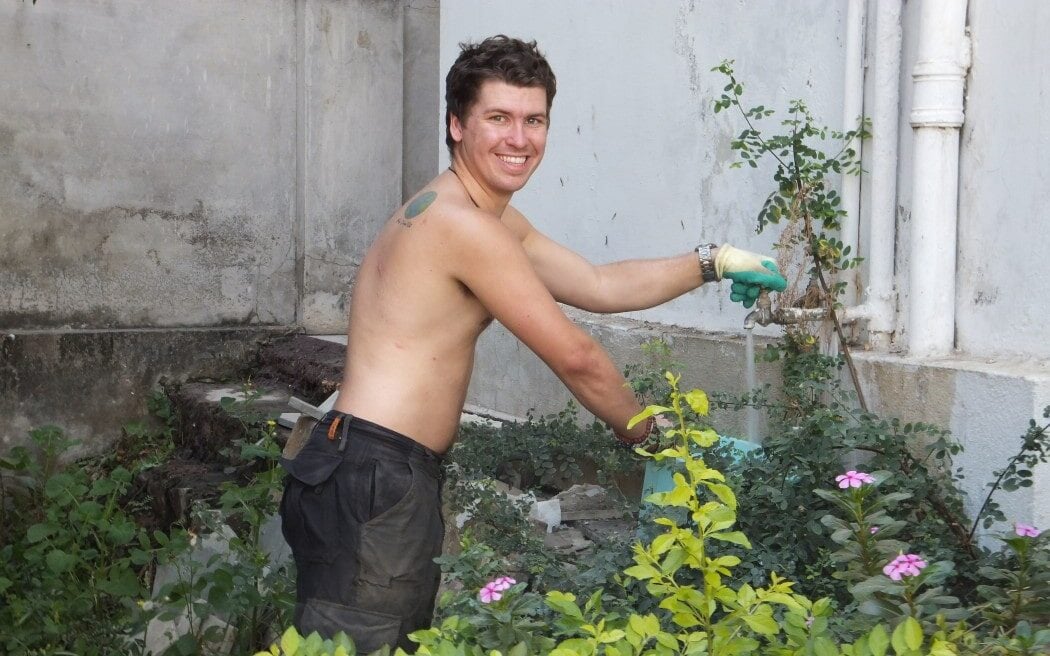
If you want to find volunteering opportunities in Costa Rica, then we recommend that you Signup for Worldpackers – a volunteer platform that connects local hosts directly with traveling volunteers. As a Broke Backpacker reader, you’ll also get a special discount of $10 when you sign up. Just use the discount code BROKEBACKPACKER and your membership is discounted from $49 a year to only $39.
Volunteer programs run through reputable work exchange programs like Worldpackers are usually very well-managed and reputable. However, whenever you are volunteering, do stay vigilant especially when working with animals or children.
Teaching English in Costa Rica
One opportunity for jobs in Costa Rica is teaching English. The only two requirements you really need to teach English in Costa Rica are a TEFL/CELTA certificate and being a native English speaker. Most countries in Latin America don’t even require degrees of any kind for teaching English .
What To Eat in Costa Rica
From fresh fruits and coconut water to tasty Gallo Pinto and fresh seafood, Costa Rican cuisine is some of the best in all of Central America! The local soda restaurants will be your cheapest option for eating out.
As you travel around be sure to hit up the various farmers markets each town has to offer. Buying at local markets is a great way to have the freshest produce and it supports local farmers! Your backpacking Costa Rica experience will not be complete unless you are hauling around a backpack full of mango and banana on occasion!
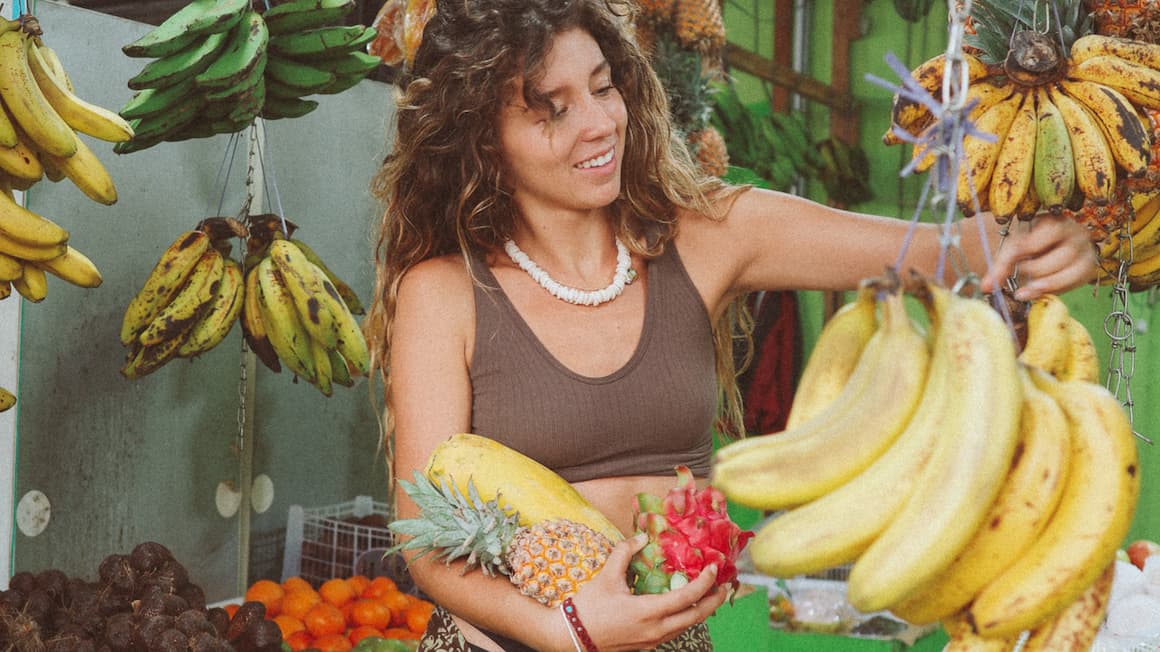
Gallo Pinto: The national dish of Costa Rica! It consists of rice and beans stir-fried together in a pan to create a speckled appearance. It is usually served for breakfast along with scrambled or fried eggs and sour cream or cheese
Casado: A typical lunch dish involving some sort of meat or fish, fried plantains, and salad.
Chifrijo: A fried crispy pork dish served with rice and pico de gallo , a fresh salsa, and tortilla chips. The perfect bar snack!
Olla de carne: A hearty stew containing beef, cassava (a starchy tuber used in Tico cooking), potatoes, corn, green plantains, squash or chayote, and other vegetables.
Ceviche: A popular seafood dish found throughout Latin America. Ceviche is made up of raw fish marinated in lime juice, tomatoes, onions, cilantro, and chili. Always a personal favorite of mine!
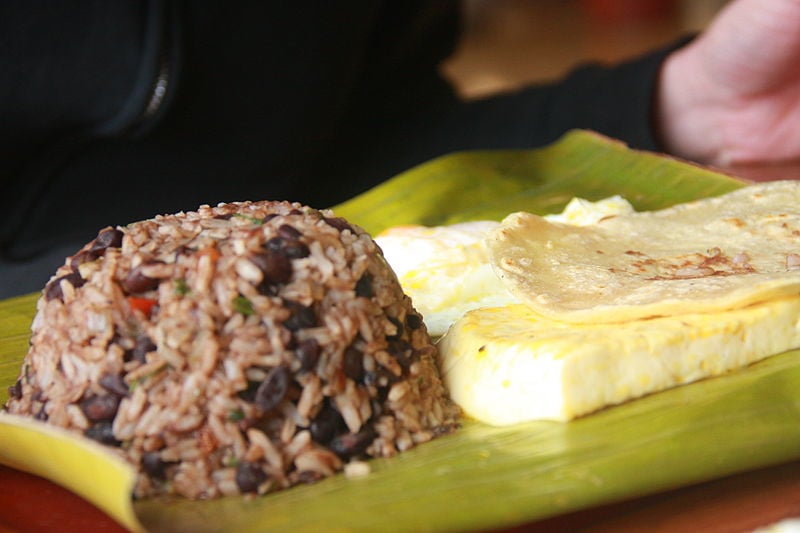
Drinking in Costa Rica
Imperial Beer: The national beer of Costa Rica. The beer and the tank-tops baring its likeness can be found everywhere within the country.
Batidos: Fresh fruit smoothies made from every variety of fruit imaginable. Usually contains milk.
Ginger Beer: Homemade ginger beer can be found in various parts of the Caribbean Coast.
Fresh Coconut Water: Perhaps no other beverage on earth can bring as much joy as a fresh cold sweet coconut water on a hot day.
Guaro: A cheap, abundant sugar cane spirit that is the base for a number of local mixed drinks.
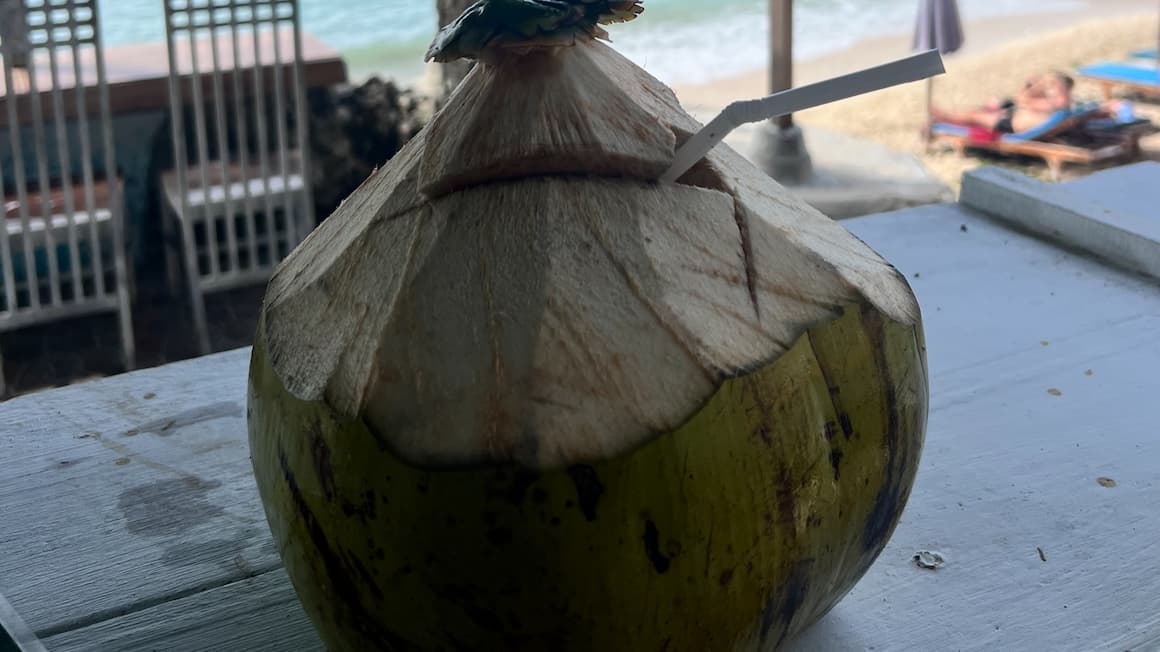
Costa Rican Culture
The people in Costa Rica, also known as Ticos, tend to live by their national mantra, pura vida , which mean pure life. Generally, Costa Ricans are easygoing, and enjoy the simple things in life.
There is a larger middle class in Costa Rica than in other Central American countries, but that doesn’t mean there isn’t a wealth gap here. Most Ticos make their income from the booming tourism industry, but certain remote regions of Costa Rica cannot benefit from the industry as easily. Moreover, the tourism industry is also driving up the cost of living – unattainably so for many Ticos.
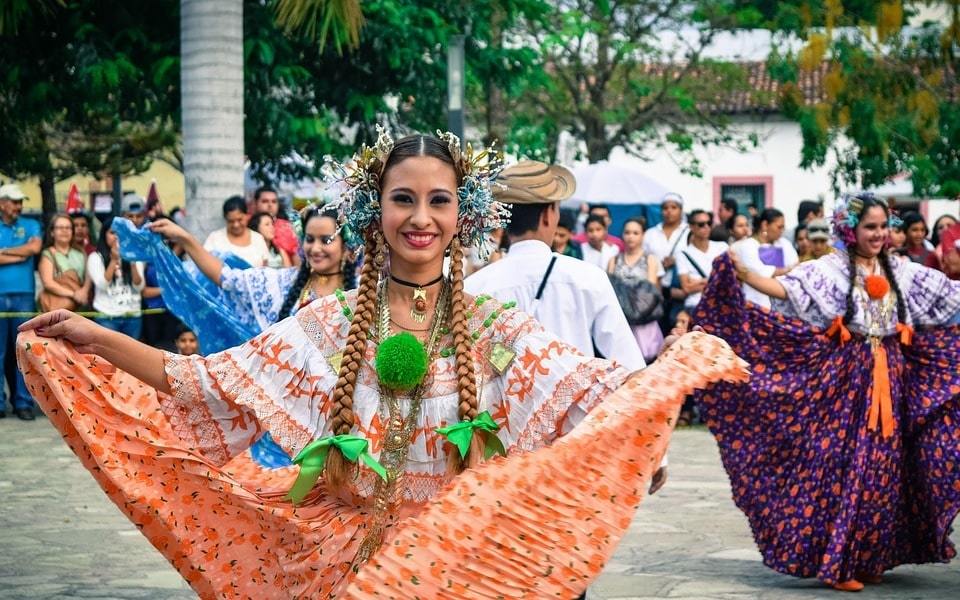
Here, you will find more citizens concerned about the environment than elsewhere in the world. Costa Rica has a popular eco-tourism industry, and much of the economy depends on keeping the environment pristine. This is another reason the cost to travel here is more expensive than other places in Central America.
Books to Read About Costa Rica
These are some of my favorite travel reads and books set in Costa Rica which you should consider picking up before you begin your backpacking adventure…
- Assault on Paradise : Assault on Paradise vividly depicts the Conquistadores and the Church invading Central America, impoverishing one world to enrich another.
- Coffee and Power: In the revolutionary decade between 1979 and 1992, it would have been difficult to find three political systems as different as death-squad-dominated El Salvador, peaceful social-democratic Costa Rica, and revolutionary Sandinista Nicaragua. Learn about the complicated history of the region and how these events have shaped the country.
- The Ticos: Culture and Social Change in Costa Rica : Written with the perspective of more than half a century of first-hand observation, this unparalleled social and cultural history describes how Costa Rica’s economy, government, education and health-care systems, family structures, religion, and other institutions have evolved.
- Lonely Planet Costa Rica : Relevant, up-to-date advice and tips for backpacking Costa Rica.
Useful Travel Phrases For Costa Rica
Learning a bit of Spanish is a great way to get the most out of your trip. When I became fluent in Spanish, it really changed the way I was able to travel in Costa Rica and beyond. It is such a useful language to know! You can speak it in over 20 countries!
Here are a few helpful Costa Rica travel phrases with English translations for your backpacking Costa Rica adventure:
Hello – Hola
How are you? – Como estas?
Good Morning – Buenos dias
I don’t understand – No entiendo
How Much – Cuánto cuesta?
Stop here – Te detienes aquí
Where Is The Toilet? – Donde esta el bano?
What Is This? – Que es esto?
No plastic bag- Sin bolsa de plastico
No straw please – No paja por favor
No plastic cutlery please – No hay cubiertos de plástico por favor
Sorry – Lo siento
Help! – Ayudame!
Cheers! – Salud!
A Brief History of Costa Rica
Costa Rica’s egalitarian traditions have subsisted throughout its history. Even though the introduction of banana and coffee plantations in the nineteenth century gave rise to a small oligarchy, the nation has been able to maintain democratic ideals.
The modern era of democracy in Costa Rica began after the elections of 1889, which are considered the first free elections in the country’s history. This democratic tradition has experienced problems only twice: once in 1917 and 1918 when Federico Tinoco declared his government a dictatorship; and again in 1948 when a disputed election brought forth a civil war in which more than 2,000 people lost their lives.
The most prominent Costa Rican of the modern era is probably Oscar Arias Sánchez, who was president of Costa Rica from 1986 to 1990, a significantly troublesome time in Central America, with disturbances in El Salvador, Nicaragua, and Panama. Although Costa Rica enjoyed peace within its borders, it was not insulated from regional conflicts.
The instability in the neighboring countries at this time discouraged investment and tourism. Moreover, the country experienced a flood of Nicaraguan and Salvadoran refugees, which impacted the economy and placed additional strain on educational and health institutions.
Modern Day Costa Rica is a nation at peace. Fun Fact: Costa Rica has no standing army.
Some Unique Experiences in Costa Rica

Things go wrong on the road ALL THE TIME. Be prepared for what life throws at you.
Buy an AMK Travel Medical Kit before you head out on your next adventure – don’t be daft!
Trekking in Costa Rica
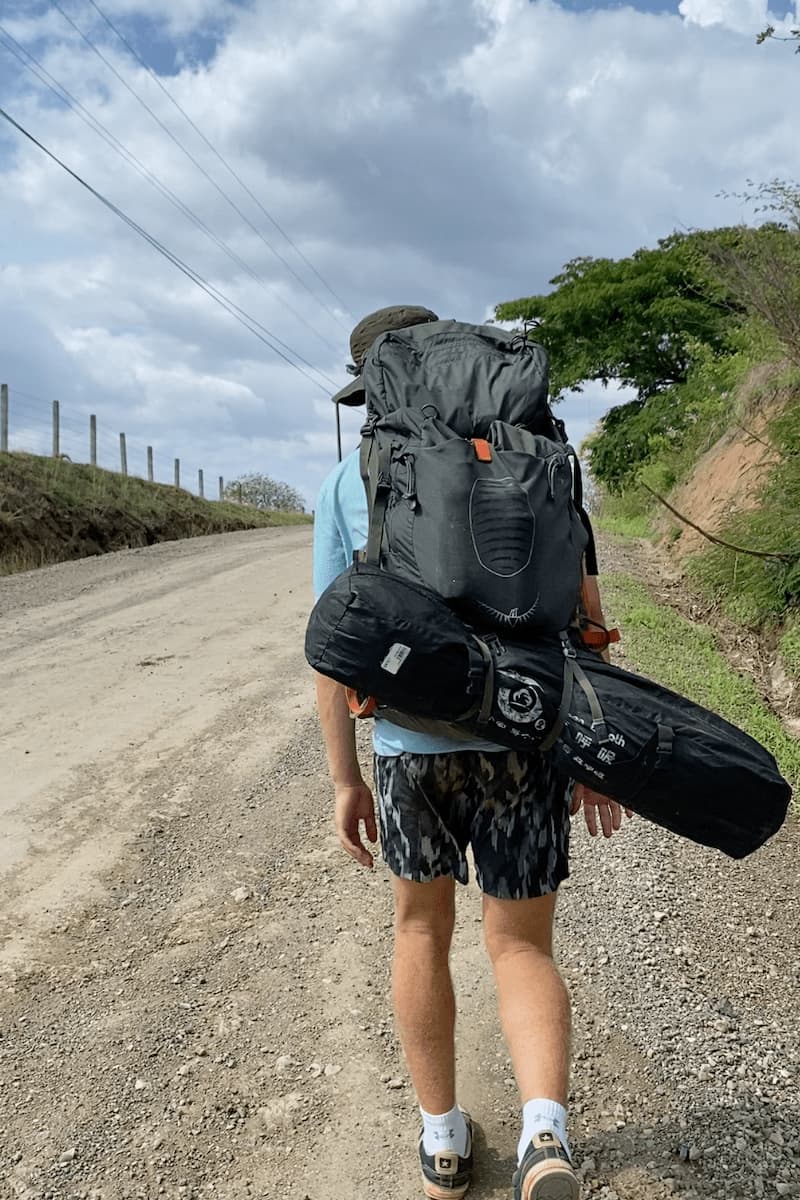
Costa Rica is home to some of the best hikes in Central America . As a nation bursting with natural beauty, you must absolutely make time to tackle a few epic treks! Costa Rica has amazing national parks filled with hiking trails. Here I have listed a few of my personal favorites.
Monteverde Cloud Forest Hike : Soak in the sights and sounds of one of Costa Rica’s ecological gems.
Arenal Volcano National Park: Hike amongst an active volcano? Why the hell not? Most of Costa Rica’s 850 species of bird can be found here, including the endangered quetzal. The park is home to white-faced monkeys, jaguars, coati, and toucans.
Try the sweet hike to the Chato Volcano – one of the best volcano hikes in Central America. The hike takes you through lush rainforest, and old lava beds. At the end, you are rewarded with a nice lake in an old crater.
Corcovado National Park: If you want to experience a real multi-day hiking adventure, come to Corcovado. You will need to take a guide, but after seeing what you have to navigate, you’ll be happy you took one.
Rincon de la Vieja National Park: If ever Yellowstone had a little brother who spoke Spanish, he would live at Rincon de la Vieja National Park. Geothermal pools, waterfalls, and mysterious puffs of steam make up this sulfur-scented landscape. Come and explore this totally unique part of Costa Rica. Trails begin from the Santa Maria ranger station and wind throughout the park. Avoid taking detours in this park. You don’t want to end up falling into a hole filled with boiling water.
Scuba Diving in Costa Rica
Costa Rica is blessed with great diving on both coasts. The diving is very different mind you. Those folks who have experience diving in tropical waters might find diving in the Pacific Ocean a little less “wow.” The visibility is not as good; however, it is still a fine time. If you do go diving, make sure you go on a day when the sea is relatively calm.
Some folks might not agree with me and say the diving is in fact better on the Pacific side. It all depends on your experience, the conditions, and what you were able to see!
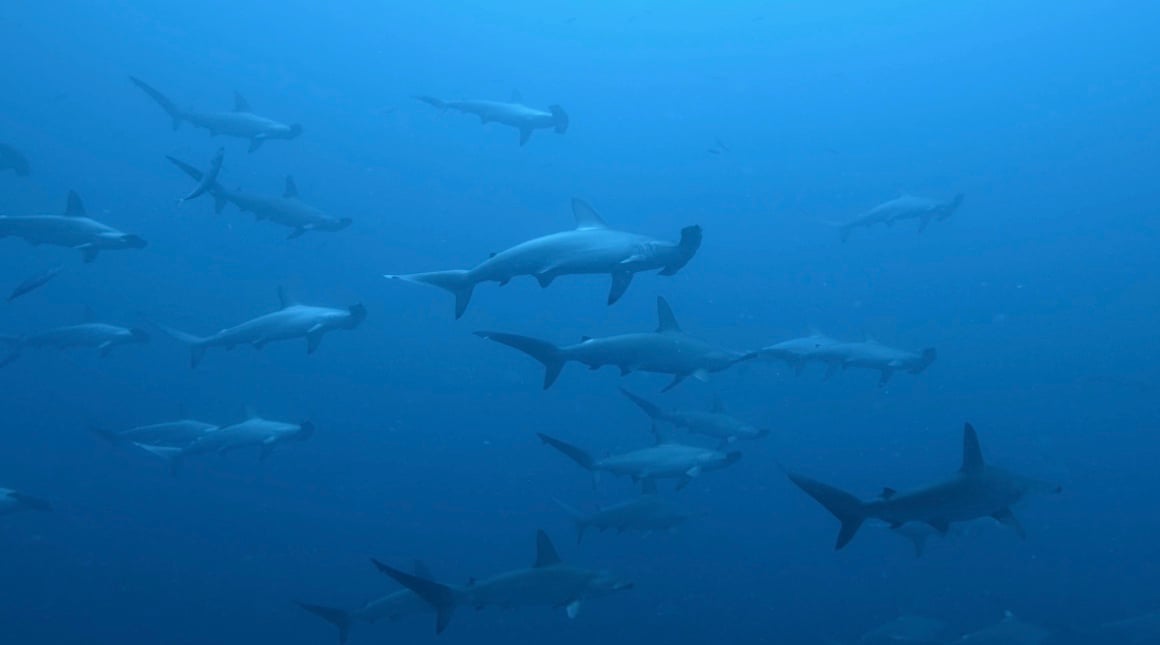
Scuba Diving in Costa Rica can be a bit expensive. If you really want to go diving I can understand. I recommend picking one or two places where you are really keen on diving and going for it. That way you can get some diving in without spending too much checking out a bunch of different sites.
Rumor has it that Cahuita National Park and Gandoca Manzanillo Wildlife Refuge offer up the best diving and snorkeling in the whole country. Get your wetsuit on and find out for yourself!
Scuba Diving Costa Rica on a Liveaboard Trip
Really love diving? One of the best ways to discover the wonders of scuba diving in any country is to go on a Liveaboard Trip.
Liveaboard trips provide the opportunity to really get to know some truly off the beaten path dive sites with a group of like-minded folks. Plus you get to travel and sleep on a sweet boat as well.
Scuba dive by day, socialize by night, and oh yeah: eat tons of good food along the way…
Sounds pretty dreamy right?
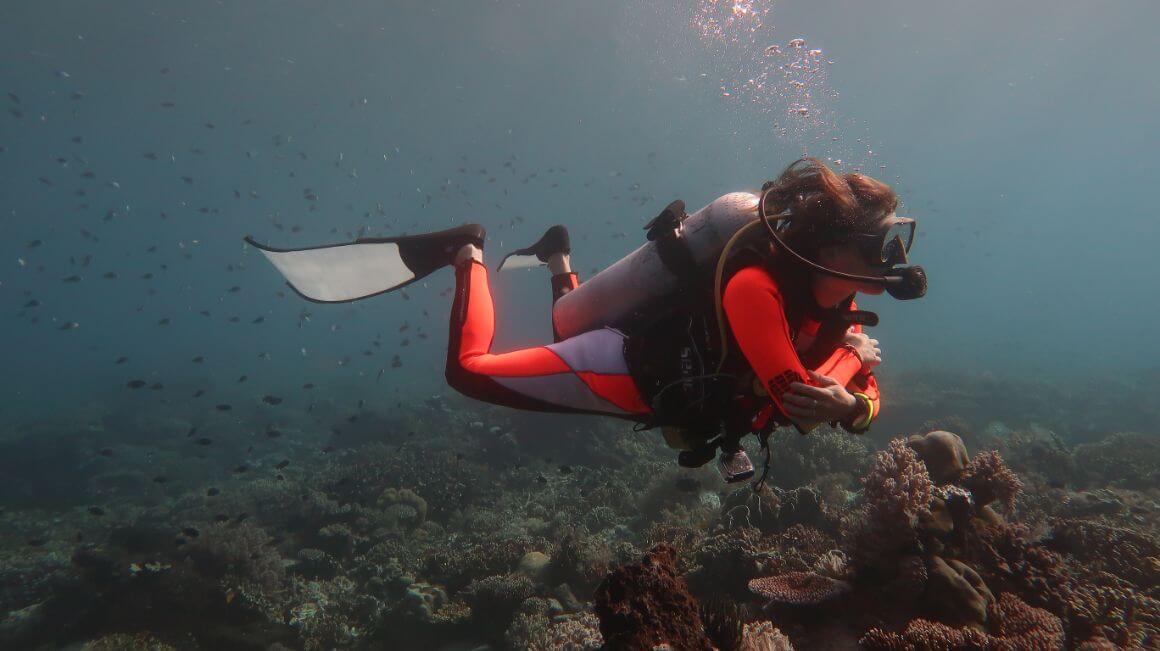
Keen on Diving? Join a Costa Rica Liveaboard scuba diving adventure!
Joining an Organized Tour in Costa Rica
Just like most countries, solo travel in Costa Rica is the name of the game. That said, if you are short on time, energy, or just want to be part of an awesome group of travelers you can opt to join an organized tour. Joining a tour is a great way to see a majority of the country quickly and without the effort that goes into planning a backpacking trip. However—not all tour operators are created equal—that is for sure.
G Adventures is a solid down-to-earth tour company catering to backpackers just like you, and their prices and itineraries reflect the interests of the backpacker crowd. You can score some pretty sweet deals on epic trips in Costa Rica for a fraction of the price of what other tour operators charge.
Final Advice Before Visiting Costa Rica
Backpacking Costa Rica can be one hell of a party at times. Take it from me, it can be easy to get carried away. It is important to keep in mind that you are an ambassador for your country, which is awesome. We can make a positive impact on people when we travel and get rid of any ugly stereotypes that may be associated with your country.
Avoid eating at fancy gringo-owned restaurants. I don’t care how badly you want that lasagne and red wine. You make a choice with every dollar you spend. Try to spend your money in places where the experience is mutually rewarding.
I know it can be hard, but do your best to use the least amount of plastic water bottles that you can. Refill the ones that you do buy! Use a Grayl Geopress . Refill at your hostel! There are plenty of ways to reduce plastic!!!
Backpacking Costa Rica or any country for that matter often illuminates some of the great socio-economic inequalities of the world. Never take it for granted that you are healthy and financially able to go traveling. Show the world around you some gratitude and help to make a positive impact on it.
I hope you have enjoyed this Costa Rica backpacking guide. You are now ready to get your boots on the ground and experience this magical country for yourself amigos! Backpacking Costa Rica was one of the most fun and rewarding times of my life. I remember finding myself thinking “damn, is this place for real?” whilst I was traveling there.
Yes amigos. Costa Rica is a real place. It is truly fucking paradise. I hope you love every minute of your time there!
- Backpacking Panama
- How to Find Cheap Flights
- Best Party Cities in the World
- The Best Travel Cameras

And for transparency’s sake, please know that some of the links in our content are affiliate links . That means that if you book your accommodation, buy your gear, or sort your insurance through our link, we earn a small commission (at no extra cost to you). That said, we only link to the gear we trust and never recommend services we don’t believe are up to scratch. Again, thank you!
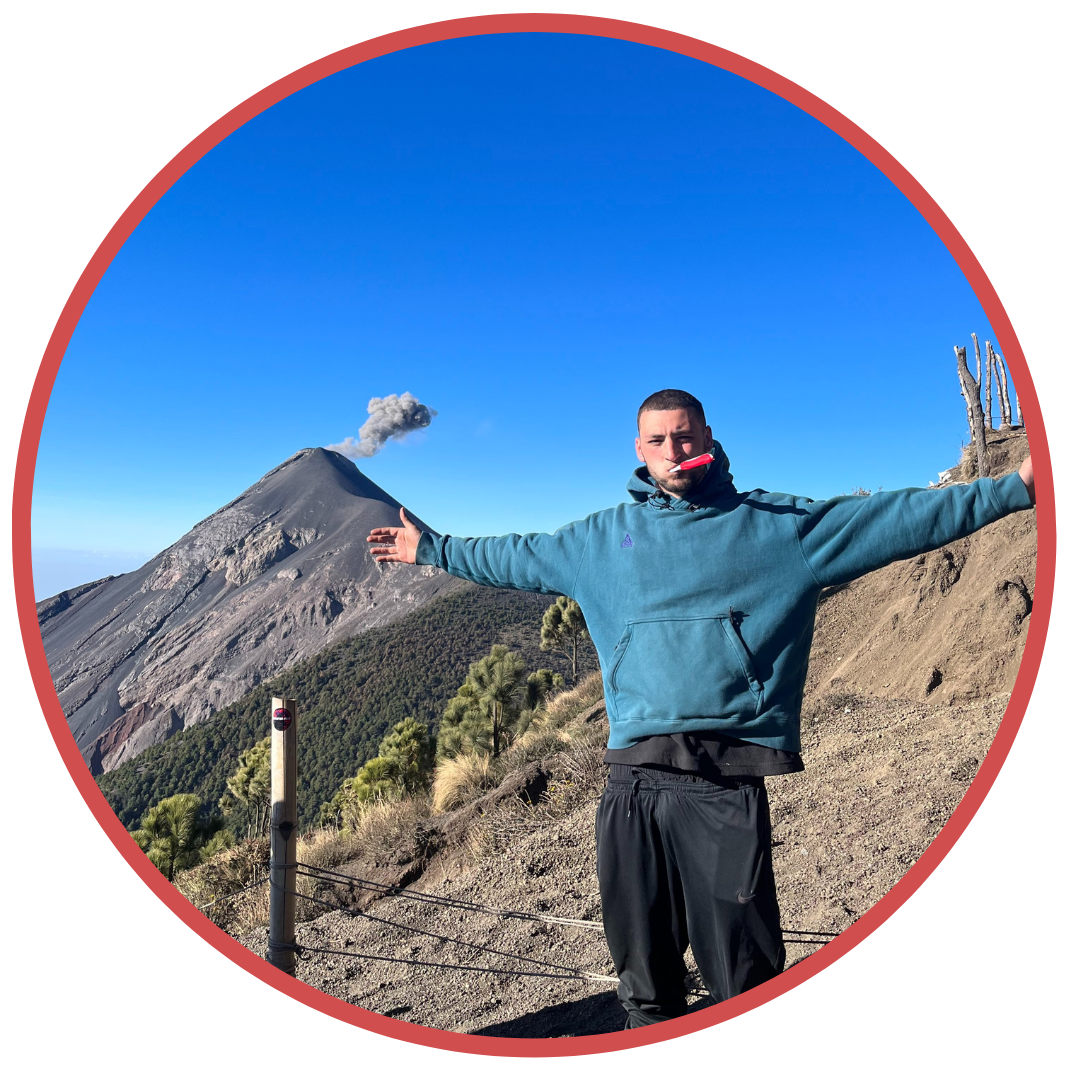
Joe Middlehurst
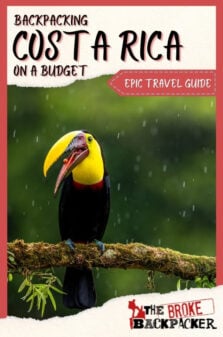
Share or save this post

After 22 years of backpacking in Costa Rica, I have to disagree with you about taxis. I recommend taxis everywhere as soon as the sun is going down. The only exception is if you have a large group of people that you are with. Me and my girlfriend were mugged and shot at. After a beautiful dinner, the sun was just going down about 6pm. They ambushed us at gun point. Always be cautious. Great write up.
Hey Chris, this is a brilliant and well written information pack thanks so much.
Just one question from myself, I do intend to stay in La Fortuna, I was wondering if you came across a plethora of day trip tour guides to get over to the Arenal Volcano area to go and see the rio celeste and waterfall, but conscious they may charge a lot. How do you recommend to reach it from La Fortuna may I ask?
Chris has now moved on from TBB so cannot answer your query I am afraid.
There are however a lot of guides and tour companies who offer day trips to Arenal but they are not cheap – Costa Rica is not a budget destination so do factor that in.
Thank you so much for all the wonderful info. A couple of questions if you don’t mind, my husband and I are 41 and 35 and though we can afford to stay in fancy hotels I’ve always dreamed of traveling “backpack” style and staying in hostels (I just like the idea of meeting others and being in the middle of locals/local culture). With that being said is it frowned upon bc we’re so old to stay at hostels? Also do you need to book them ahead of time or can we kind of go with the flow? Also if you wanted to stay somewhere for a couple of days and let loose and party where would you say is the best town? Thank again
hello J’Nay, Hostel scenes are pretty all-inclusive in my experience. I will say though that some of the hostels more geared to partying are just that: party hosels. I doubt you want to be in a hostel with 20-year-olds drinking heavily and making heaps of noise every night. Never fear though, not all hostels are like that! I recommend doing a bit of research before you book to see if the hostel in question is party focused or not. Private rooms at hostels are good too because you get to experience hostel life but at the end of the day, you have a quietish space to retreat back to. Depending on the time of year and where you are going, I’d say mostly you can go with the flow, but always a good idea to book in advance as you will def. have more options that way. If you are looking to party for a few days, Puerto Viejo is pretty good for that. Also, many of the beach towns on the Pacific side also have fun party scenes. Happy travels!!!
your article brings back so many memories from my visit to Costa Rica! I went there last year and I left a piece of my heart there – the landscapes, the people, the food, everything was simply outstanding. I especially loved diving at the Devil Rock on Caño Island, the wildlife there was out of this world. Costa Rica is a little bit of paradise, and I am so happy you have done it justice through your writing.
I’ve not yet been to Central America, but your guide to Costa Rica looks marvellous. ‘Nice one Chris!
Leave a Reply Cancel reply
Your email address will not be published. Required fields are marked *
Save my name, email, and website in this browser for the next time I comment.
Notify me of followup comments via e-mail.
- EN - English
- PT - Portuguese
- ES - Spanish
- How it works
- Become a Host
- Download the app
Top Destinations
- United States
- United Kingdom
What type of experience are you looking for?
- Non-Profit School
- Permaculture project
- Eco Village
- Holistic Center
- Guest House
- How Worldpackers works

Learn from the most experienced travelers of the community
Traveling with worldpackers, planning and budgeting for travel, make a living while traveling as a lifestyle, travel with worldpackers.
- Using Worldpackers
- Work exchange
- Social impact
Plan your trip
- Women traveling
- Budget travel
- Solo travel
- Language learning
- Travel tips
- Get inspired
- Digital nomads
- Travel jobs
- Personal development
- Responsible travel
- Connect with nature
Top destinations
- South America
- Central America
- North America
- More destinations
- WP Life WP Life
- Exclusive discounts Discounts
- Latin America
Backpacking Costa Rica: the ultimate guide
The ultimate guide to backpacking Costa Rica! Includes itineraries, what to pack, where to go, how to get around, work exchanges, and more!
Gabrielle Budget Travel With Gabby
Sep 08, 2023
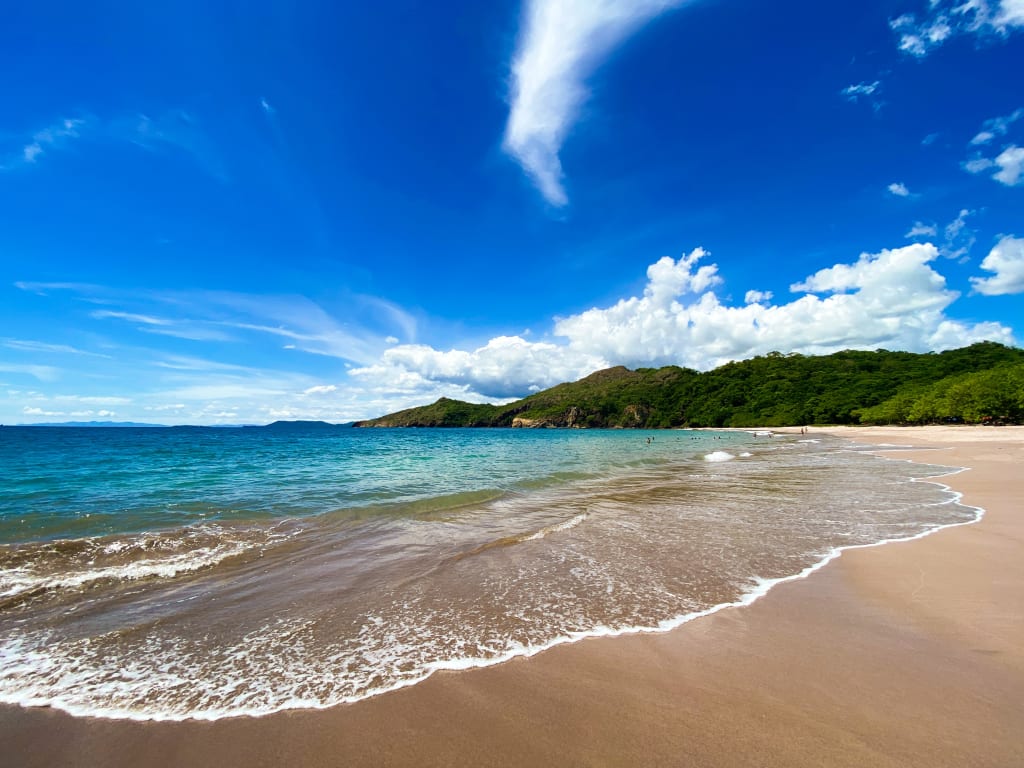
Backpacking in Costa Rica offers an incredible experience in Central America ! lush natural beauty and plenty of fun adventure activities, there is no shortage of things to do in this country. It’s also a very easy destination to travel around with affordable prices ! People are nice, the food is delicious, and you’re likely to meet lots of other backpackers.
In this ultimate guide to backpacking Costa Rica, we will provide you with a comprehensive overview of what to expect during your epic journey. When is the best time to go backpacking in Costa Rica ? What essential items should you pack? How can you get around and what are the typical costs?
We’ll cover all of this, and give some insight about work exchanges in the country and how you can use them to save money and have unique experiences during your travels.
Backpacking Costa Rica: planning your trip
When is the best time to visit costa rica.
There is no bad time to visit Costa Rica! But if you're looking for the best time to go in terms of weather, December to April has the sunniest, clearest, and driest weather conditions .
You'll enjoy plenty of incredible sunny beach days during this time, but it's important to note that it's also peak tourism season. As a result, prices may increase, and popular attractions can be more crowded.
May and June are also considered shoulder season , when the dry season is ending and the landscape becomes greener. Rain is possible, but it’s not as heavy as the rainy season which is September to November.
If you're looking to save money while backpacking in Costa Rica, traveling during the rainy season can offer super cheap flights!
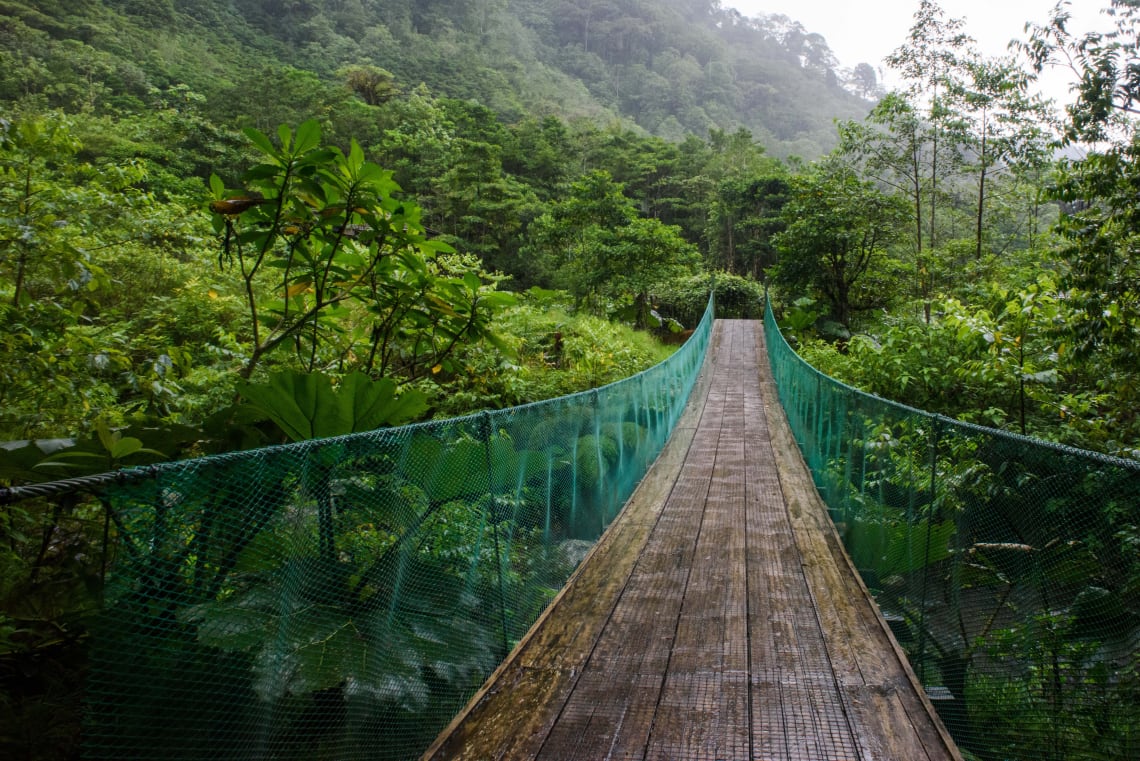
What to pack for backpacking Costa Rica?
When wondering what to pack for backpacking Costa Rica, you should consider what your trip will look like.
If you want to explore the rainforest and go hiking , you’ll need to pack more gear like hiking boots, athletic wear, a hiking backpack, etc. But if you’re planning on spending most of your time on the beach, you’ll only need beachwear!
Most likely, your trip to Costa Rica will include a combination of rainforest and beach experiences. Therefore, here's a brief overview of what you should pack. While you can generally buy sunscreen and toiletries there, it may be easier to bring some with you. Take a look at the following packing essentials :
- Comfy, lightweight clothes
- Hiking shoes
- Comfy walking shoes
- Bathing suits
- Mosquito Repellant
- Lightweight rain jacket
- Waterproof backpack cover (during rainy season)
- Small backpack for day trips
- Reusable water bottle
- Hat and sunglasses
This list may vary from person to person, but it’s a good place to start!
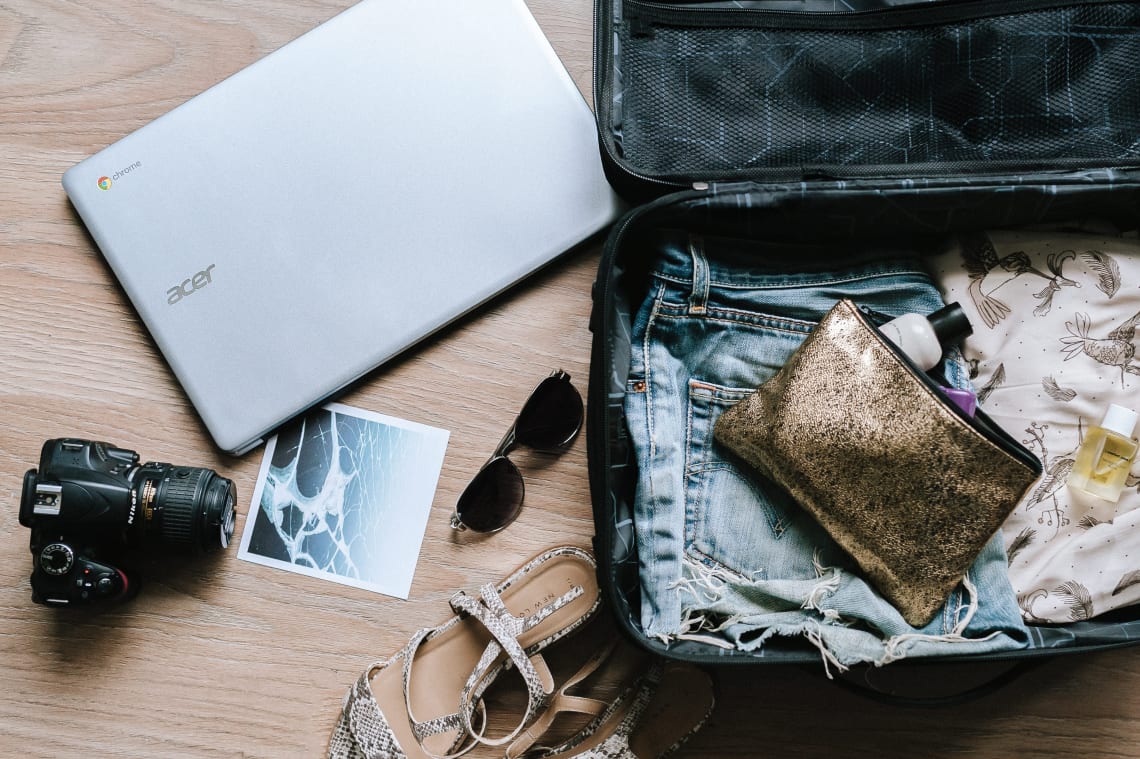
How to get around Costa Rica?
There are a few ways to get around Costa Rica for a budget traveler. The public bus is definitely the cheapest way ! Costa Rica has a great public bus system where you can travel around the country cheaply.
Shuttle buses or minivans are a slightly pricier but more comfortable option. This method of travel means a smaller group and generally, you’ll travel a bit quicker.
You can rent a car, but it’s not necessary! Buses are pretty widespread for traveling long distances. If you need to get around within a small city or town, taxis are everywhere and they are pretty affordable!
As for arriving in Costa Rica by air, the San Jose International Airport is the most centrally located and is well connected to other parts of the country by bus.
How much does it cost to backpack Costa Rica?
Costa Rica is a bit pricier compared to other countries in Central America , but it's still quite affordable to travel there.
And if you’re backpacking, you can easily spend $50 USD or less per day! By staying in hostels or doing a work exchange , you can get free or cheap accommodation . Opting for street food and cooking meals at home will help you save a significant amount on food expenses.
Then you can book affordable tours, or even save enough money to splurge on some epic experiences. Here is a breakdown of what average costs may look like while backpacking in Costa Rica . Prices are in USD.
- Accommodation: $15 per day for a dorm room (or $0 per day on a work exchange)
- Food: $10 per day for street food and cooking at home
- Transport: $5 per day for taxis and the occasional long bus ride
- Activities: $20 per day (this is an overestimate as you could easily just do free attractions)
So you can easily spend only $50 per day while backpacking Costa Rica, or you can easily spend less! A work exchange is the best way to save money while traveling , and you’ll get to meet locals and have unique experiences as well. Worldpackers has 130 work exchange opportunities in Costa Rica so be sure to check them out!
Best places to visit in Costa Rica
While backpacking in Costa Rica, you'll come across numerous incredible destinations to explore ! From national parks and serene beach towns to majestic volcanoes and vibrant cities, here are some of the top places you shouldn't miss:
- San Jose: As the capital city of Costa Rica, you’ll most likely fly into San Jose. Spend some time here checking out the museums and historic buildings before you set off exploring the country!
- Central Valley: Just south of San Jose is the Central Valley of Costa Rica. This area is great for experiencing the local culture! Visit craft markets, tour coffee plantations, and explore the small towns.
- Monteverde: One of the major ecotourism locations in Costa Rica , Monteverde is known for its lush cloud forest where you can go hiking and zip-lining. Volunteer at an off-grid eco farm in Monteverde for a more in-depth experience!
- La Fortuna: This small town in the Northern Highlands of Costa Rica is packed with things to do. From soaking in hot springs, to birdwatching in the jungle, to hiking volcanoes, to visiting waterfalls, there is so much adventure to be had here!
- Arenal Volcano National Park: Located near La Fortuna, this is a must-see while backpacking in Costa Rica. The dramatic views and hiking trails of Arenal Volcano are unreal!
- Liberia: The other major city in Costa Rica is Liberia. Located in the north, this city has beautiful beaches and is home to the fun Ponderosa Adventure Park. To save money on accommodation, help with content creation at an ecological reserve near Liberia!
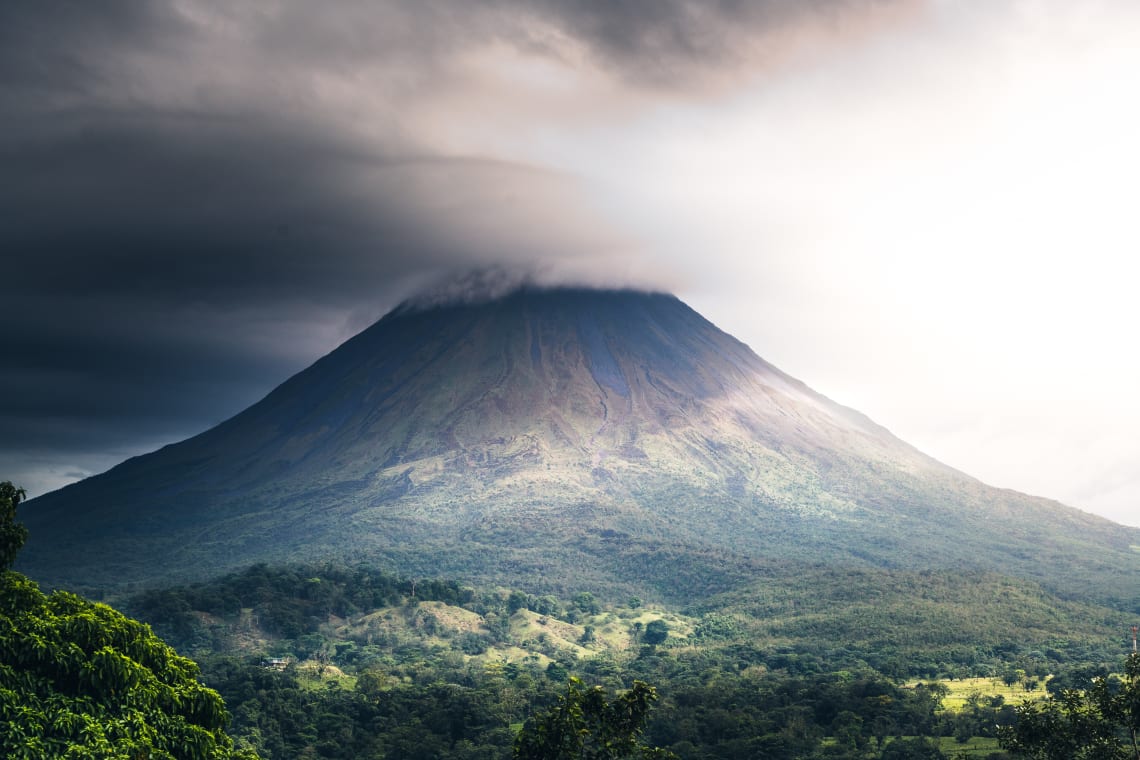
- Manuel Antonio National Park: One of the best places for spotting tropical wildlife while backpacking in Costa Rica is Manuel Antonio National Park. Spend a few days exploring the jungles here and you’re sure to see some magnificent creatures!
- Puerto Viejo: This is another beautiful beach town in Costa Rica. Located on the Caribbean Coast, here you can lounge on pristine beaches and visit a wildlife refuge. For a fun, social experience, you can work as an activities coordinator at a hostel !
- Tortuguero National Park: Located in the northeast of Costa Rica, this national park is famous for being a nesting ground for green sea turtles. Explore the rainforests, creeks, and lagoons in the hopes of spotting turtles and other wildlife.
- Drake Bay: This remote area on the Osa Peninsula of Costa Rica is perfect for travelers who want to escape the crowds and have some quality time with nature. Volunteer at an eco lodge if you want to further immerse yourself in the serenity!
- Tamarindo: On Costa Rica’s west coast, Tamarindo is a lively tourist town right on the beach. It’s a great place to learn to surf and mingle with other backpackers at fun bars and nightclubs. If you want to try a work exchange nearby, consider volunteering at an animal shelter !
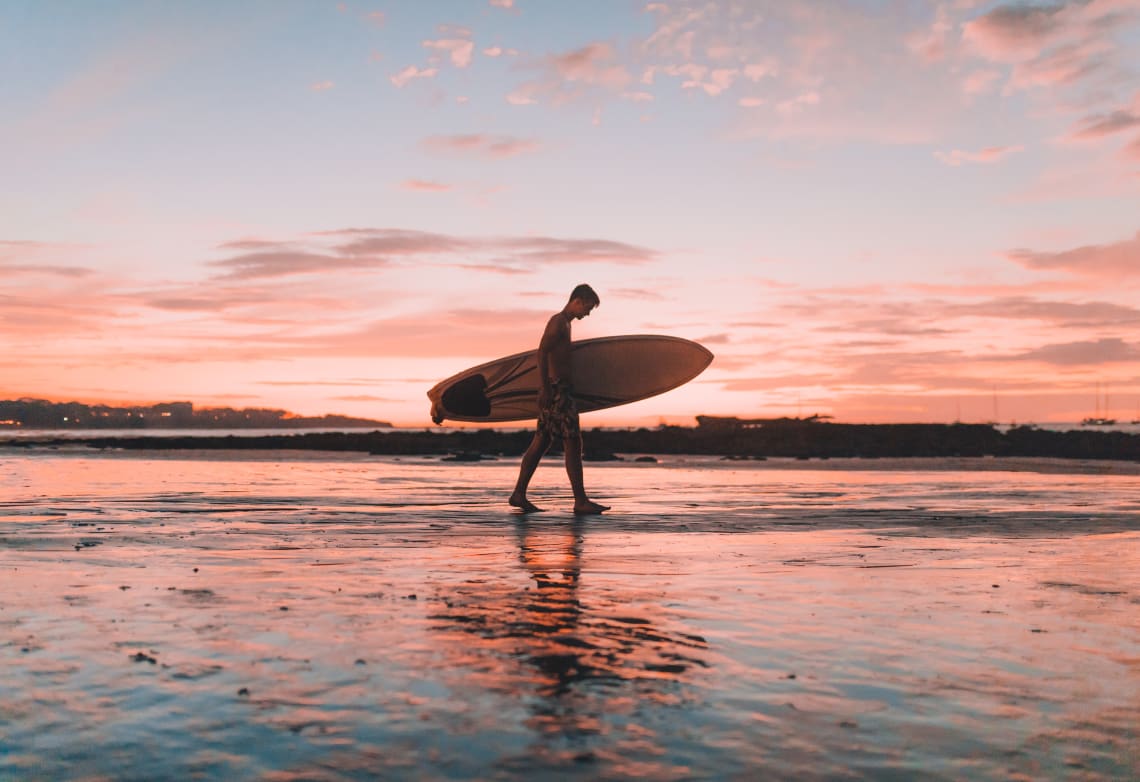
Itineraries for backpacking in Costa Rica
Here are a few suggested itineraries for backpacking Costa Rica ! They will all start and end in San Jose, because that’s where most travelers will fly in and out of. These are also just ideas! You should definitely tailor your backpacking itinerary to your travel style and your bucket list destinations.
Due to its small size, you won't have to allocate much time for traveling between destinations in Costa Rica if you plan your itinerary based on geography. For instance, in the one-week and two-week itineraries, the longest travel journey will be approximately 4 hours to and from Tamarindo.
The only significantly long journey we have included is in the one-month or more itinerary, which involves traveling from the remote corner of Drake Bay to Puerto Viejo on the Pacific Coast. This is a 10-hour journey, but you can always break it up by visiting other destinations along the way.
Backpacking Costa Rica for 1 week
- Day 1: San Jose
- Day 2: La Fortuna
- Day 3-4: Tamarindo
- Day 5-6: Monteverde
- Day 7: Return to San Jose
Backpacking Costa Rica for 2 weeks
- Day 1-2: San Jose
- Day 3: La Fortuna
- Day 4: Arenal Volcano
- Day 5-8: Tamarindo
- Day 9: Liberia
- Day 10-13: Monteverde
- Day 14: Return to San Jose
Backpacking Costa Rica for 1 month or more
- Day 3-4: La Fortuna
- Day 5: Arenal Volcano
- Day 5-10: Tamarindo
- Day 11: Liberia
- Day 12-14: Monteverde
- Day 15-16: Central Valley
- Day 17-18: Manuel Antonio National Park
- Day 19-20: Drake Bay
- Day 21: Travel to Puerto Viejo
- Day 22-24: Puerto Viejo
- Day 25-27: Tortuguero National Park
- Day 28: Return to San Jose
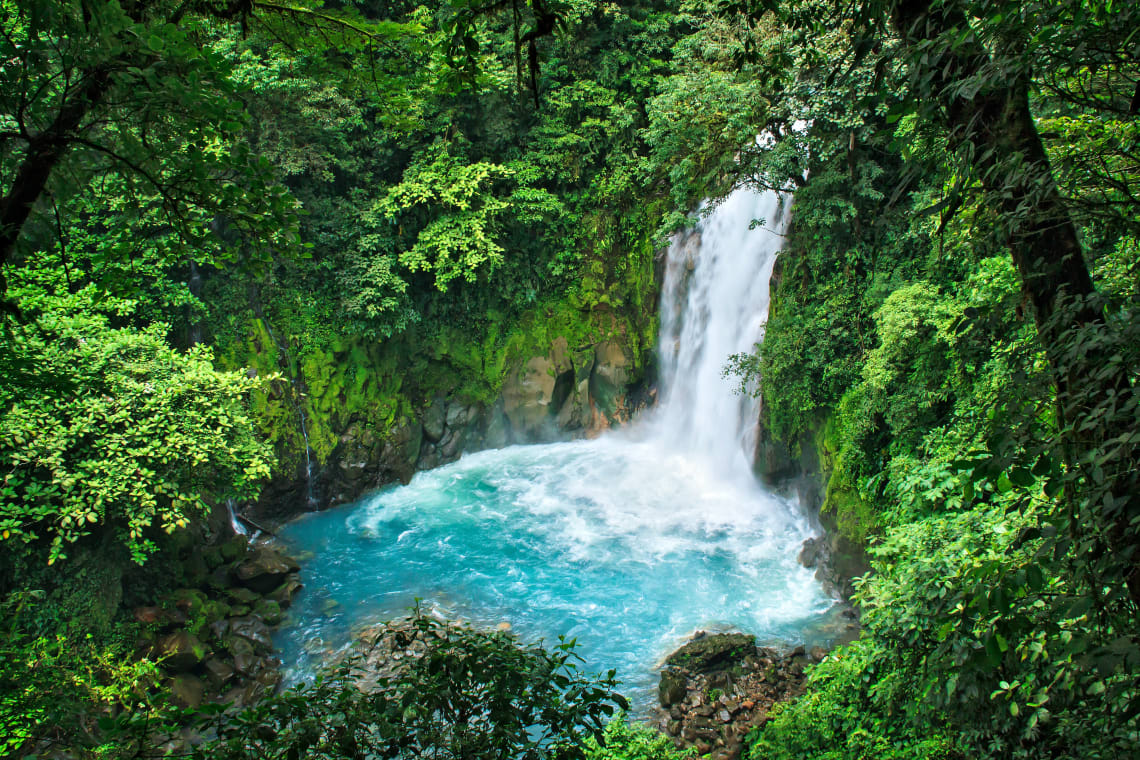
These are just some rough ideas for Costa Rica backpacking itineraries! If you have 1 month or more, we highly recommend doing a work exchange and extending your travels. You can stay in one place for a few weeks or more to really have a more intimate experience with the place. And if you’re working for free accommodation, you’ll likely be able to save money and travel longer!
What is the backpacking scene in Costa Rica?
Costa Rica is an incredible place to go backpacking! With budget-friendly options , lots of unique wildlife and natural beauty, and an enticing local culture , there is so much to see and do here. It’s a small country that is easy to get around , and you’re bound to meet other travelers on the road.
From the eclectic hostels and surf camps to the numerous work exchange opportunities , there is a high chance of meeting many other backpackers and potentially making lifelong friends!
- Check out all of our work exchange opportunities in Costa Rica for more ideas!
Want to learn more about planning your trip? By s ubscribing to the WP pack plan you have unlimited access to +120 courses at Worldpackers Academy, the travel school made by travelers!
Join the community!
Create a free Worldpackers account to discover volunteer experiences perfect for you and get access to exclusive travel discounts!
Gabrielle Boucher
Budget Travel With Gabby
Hello! I am a 25 year old from the USA with a knack for traveling on a budget. I fell in love with traveling while studying in Europe, and that love grew even more when I started volunteering abroad in South America. Since then, I've worked odd jobs and volunteered all over the globe while cultivating passions for hiking, wildlife photography, food, wine, animals, permaculture, and more!
Be part of the Worldpackers Community
Already have an account, are you a host, leave your comment here.
Write here your questions and greetings to the author
Jul 01, 2023
I met someone on an online dating app. At some point, the scammer instructed me to send crypto assets to what I believed was a legitimate banking app based in Singapore. But the scammer provided fake instructions so that my money went into the crypto asset wallet belonging to the scammer instead. I deposited Ethereum (ETH) into the scammer’s account on three separate occasions, eventually losing thousands of dollars. I hired HACKWEST AT WRITEME DOT COM who specializes in crypto assets recovery and other hacking services and was able to locate the scammer’s wallet through blockchain forensic analysis and was able to retrieve my entire funds they stole from me. Its about 673,000 USD in total. Although Hack West didn’t do this for free, it was worth it. I will always tell everyone about my experience with West and his team.
More about this topic

Exploring cities in Central America: best 10 places to visit
Unlock the secrets of Costa Rica: is it safe to travel there?
Must do in puerto rico: the top 22 best things to do and places to visit, how do worldpackers trips work.
As a member, you can contact as many hosts and travel safely as many times as you want.
Choose your plan to travel with Worldpackers as many times as you like.
Complete your profile, watch the video lessons in the Academy, and earn certificates to stand out to hosts.
Apply to as many positions as you like, and get in contact with our verified hosts.
If a host thinks you’re a good fit for their position, they’ll pre-approve you.
Get your documents and tickets ready for your volunteer trip.
Confirm your trip to enjoy all of the safety of Worldpackers.
Have a transformative experience and make a positive impact on the world.
If anything doesn’t go as planned with a host, count on the WP Safeguard and our highly responsive support team!
After volunteering, you and your host exchange reviews.
With positive reviews, you’ll stand out to hosts and get even more benefits.
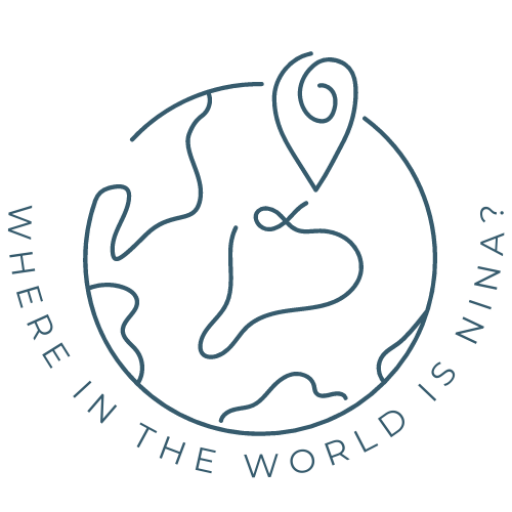
Backpacking Costa Rica: Your Complete Guide!
Pin this post for later!
Are you ready to embark on an adventure like no other? Backpacking Costa Rica is your ticket!
Imagine traversing through dense rainforests, scaling towering volcanoes, and discovering hidden waterfalls in one of the most biodiverse countries in the world.
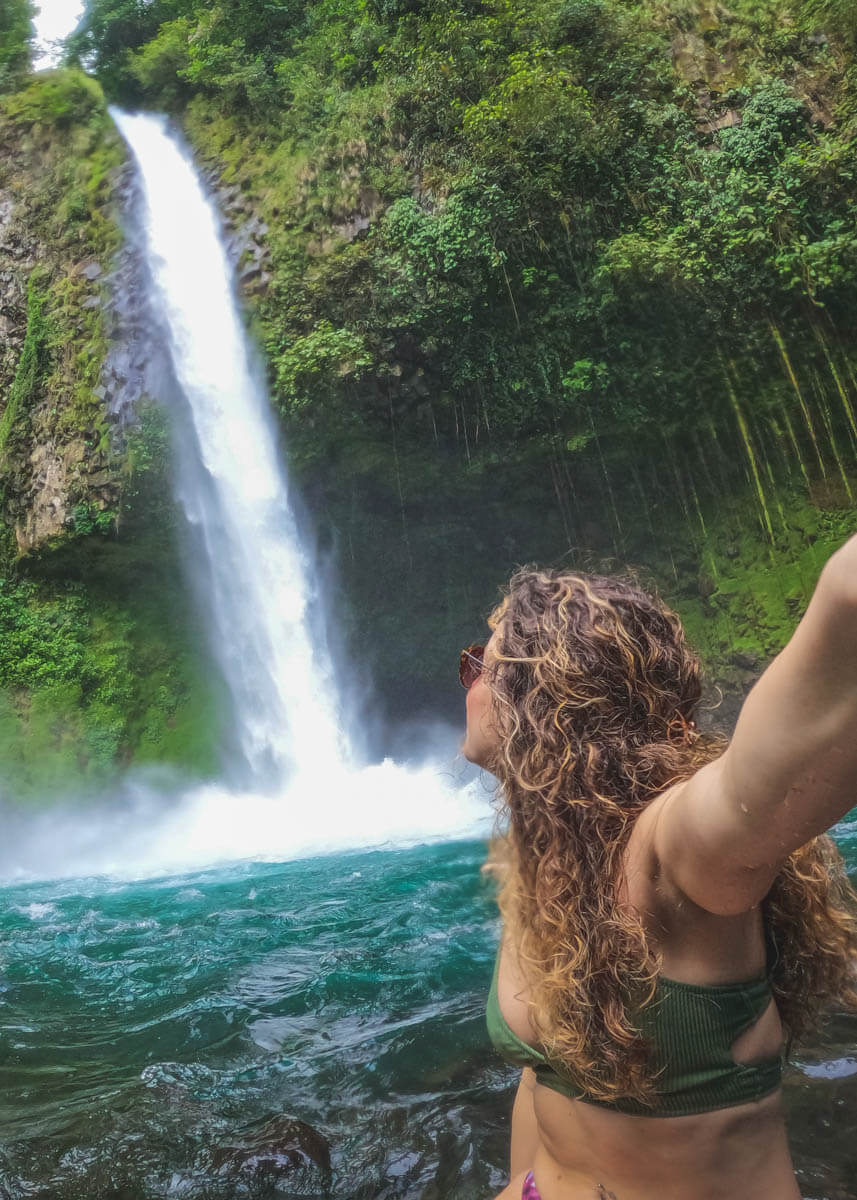
Backpacking in Costa Rica was a dream for me with its stunning beaches, vibrant wildlife, and friendly locals! Costa Rica has become a mecca for backpackers seeking an unforgettable experience abroad.
This Central American gem has something to offer everyone, whether you’re a seasoned backpacker or a first-timer. So pack your bags, put on your hiking boots, and prepare for a journey that will leave you with memories to last a lifetime!
Table of Contents
YOU NEED THIS BACKPACK!
Here are some of the must-do activities when visiting la fortuna:, here are some of the top things to do in monteverde:, here are some of the top things to do in santa teresa:, here are some of the top things to do in puerto viejo:, here are some of the top things to do in manuel antonio:, here are some of the top things to do in uvita:, backpacking other areas of costa rica, backpacking costa rica bucketlist, backpacking costa rica itinerary, shuttle service, navigating cities & towns in costa rica, best time to go to costa rica, what to eat in costa rica, cost of backpacking in costa rica, how to keep costs down while backpacking costa rica, where to stay in costa rica, safety in costa rica, what to pack for costa rica, tips for backpacking costa rica, my overall thoughts on costa rica, 13 epic things to do in la fortuna, costa rica—your go-to guide, things to do in monteverde, costa rica: your full guide, 8 best things to do in manuel antonio, costa rica + tips, your guide to things to do in santa teresa, costa rica, your guide to puerto viejo—costa rica's caribbean surf town, cahuita national park: everything you need to know, 11 best things to do in uvita, costa rica, how to visit oropendola waterfall in costa rica, 10 best waterfalls in costa rica (+ costs and tips), your guide to samara beach, costa rica, your guide to playas del coco, costa rica, el tigre waterfalls in monteverde, costa rica: what to know, hiking to la fortuna waterfall: everything you need to know, how to get from la fortuna to monteverde via shuttle-boat-shuttle, your adventure guide to puerto limon, costa rica, costa rica digital nomad guide, your guide to montezuma, costa rica, a tasty chocolate tour in puerto viejo, costa rica, backpacking costa rica.
I spent an entire month backpacking Costa Rica solo, and I wrote up this guide along with tons of others linked below for you!
This guide will give you a great overview on everything you need to know to travel the country but click on the specific guides for each town below for more info on that area.
Planning Your Costa Rica Backpacking Trip NOW?
Here is the quick low down for your itinerary!
🗺️ Top Experiences and Tours in Costa Rica
- Take the epic hike to La Fortuna Waterfall !
- Fly through the sky like Tarzan on the longest zipline in Latin America in Monteverde!
- Spot sloths and monkeys while basking on the beaches of Manuel Antonio!
- Whale watch and visit the whale’s tail while in Uvita !
- Take a legendary day trip through volcanoes in Rincon de La Vieja , take a dip in the waterfall, and then soak in the hot spring!
🏨 Where to Stay
Here are the top hostels and budget-friendly hotels!
- La Fortuna – Argdivan Hostel | Arenal Xilopalo Hotel
- Monteverde – OutBox Inn Hostel | House Cattleya
- Manuel Antonio – Planet B Hostel | Blue Morpho House B&B
- Santa Teresa – Surf Paradise Hostel | Manala Hotel
- Puerto Viejo – La Ruka Hostel | Posada Nene Caribe
🚘 Looking for a way to get around? See current car rental deals here or book your bus shuttle here.
🛟 Safety Travel insurance is a must, and it doesn’t have to cost much— Here’s what I use.

Don’t make the mistake of bringing a sh*tty backpack that’ll break on your trip or kill your back!
This is the perfect backpacking backpack for any adventure!
Backpacking La Fortuna
Welcome to La Fortuna , the enchanting paradise nestled amidst Costa Rica’s breathtaking landscapes.
Lush rainforests teeming with life, magnificent waterfalls cascading down with sheer beauty, and the majestic Arenal Volcano proudly dominating the horizon… Brace yourself for an unforgettable adventure in one of Costa Rica’s most sought-after destinations!
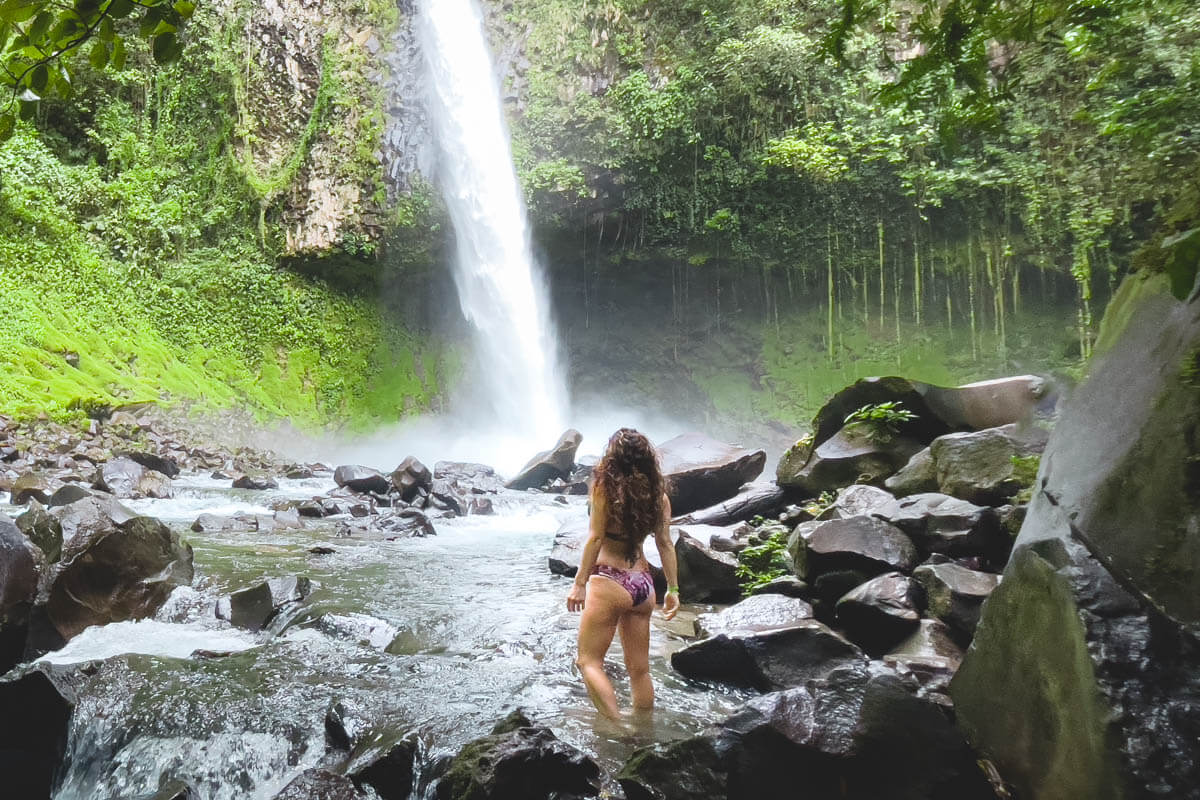
La Fortuna is a true haven for nature enthusiasts, offering a dazzling array of activities to suit every taste. Whether you’re an adrenaline junkie seeking heart-pounding thrills or a laid-back backpacker craving serene exploration, this town has it all. Well, at least, I think so!
Embark on rousing hikes through the verdant rainforests, where wildlife greets you at every turn (snakes, sloths, and monkeys, oh my!).
Discover gems like the mesmerizing La Fortuna Waterfall , where you can cool off in its crystal-clear pools. And oh, Arenal Volcano! Its imposing presence sets the stage for awe-inspiring moments and breathtaking views.
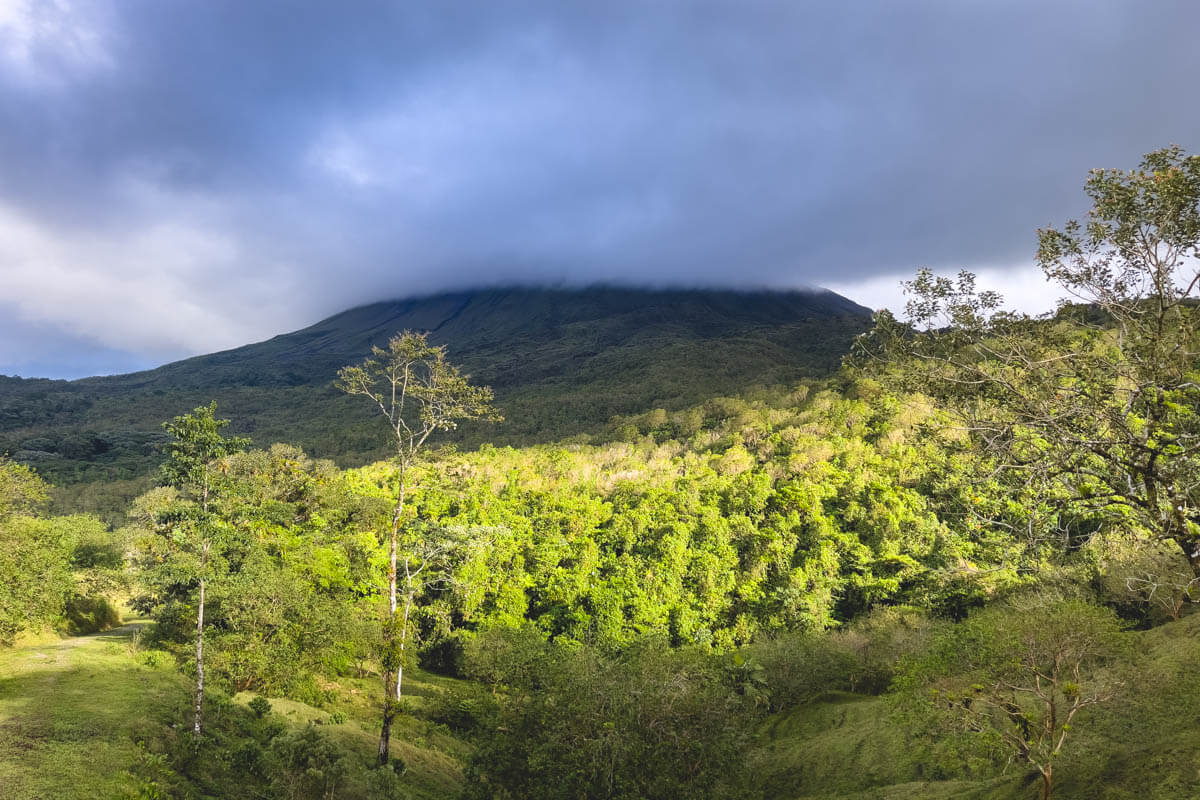
Of course, you can also take a dip in the soothing hot springs that naturally bubble with rejuvenating warmth and zipline through the treetops, feeling like a true Tarzan or Jane!
- Arenal Volcano National Park – Explore this vast park, home to the impressive Arenal Volcano. This active volcano has been dormant since 2010, but it’s still a sight to behold. The park has hiking trails, bird watching, and opportunities to spot monkeys, snakes, sloths, and other wildlife too!
- Hot Springs – La Fortuna’s hot springs are a must-visit! These natural springs are fed by the geothermal activity of the Arenal Volcano, and they offer a relaxing, natural spa experience. Some of the best hot springs in the area include Tabacon, Baldi, and Eco Termales, or if you’re a budget backpacker, head to El Choyin for free!
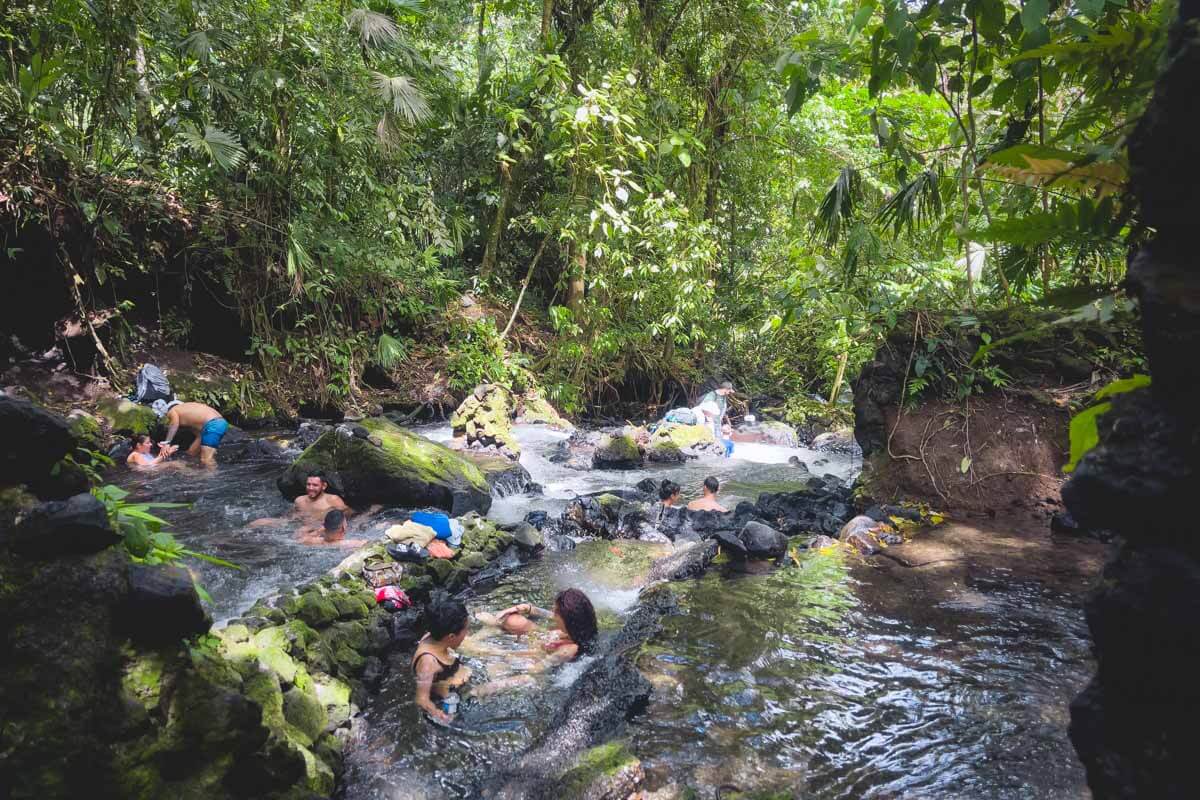
- Adventure Activities – La Fortuna is an adventure-lovers dream destination. Get your heart racing with thrilling activities like ziplining, white-water rafting , canyoning, and horseback riding. For a more laid-back adventure, take a guided nature walk through the Místico Arenal Hanging Bridges or rent a kayak to explore Lake Arenal.
- La Fortuna Waterfall – A short yet steep hike takes you to the base of this spectacular waterfall, which plunges over 200 feet into a natural pool below. Take a refreshing swim in the cool waters or just relax and soak up the stunning views. Read my guide to La Fortuna Waterfall !
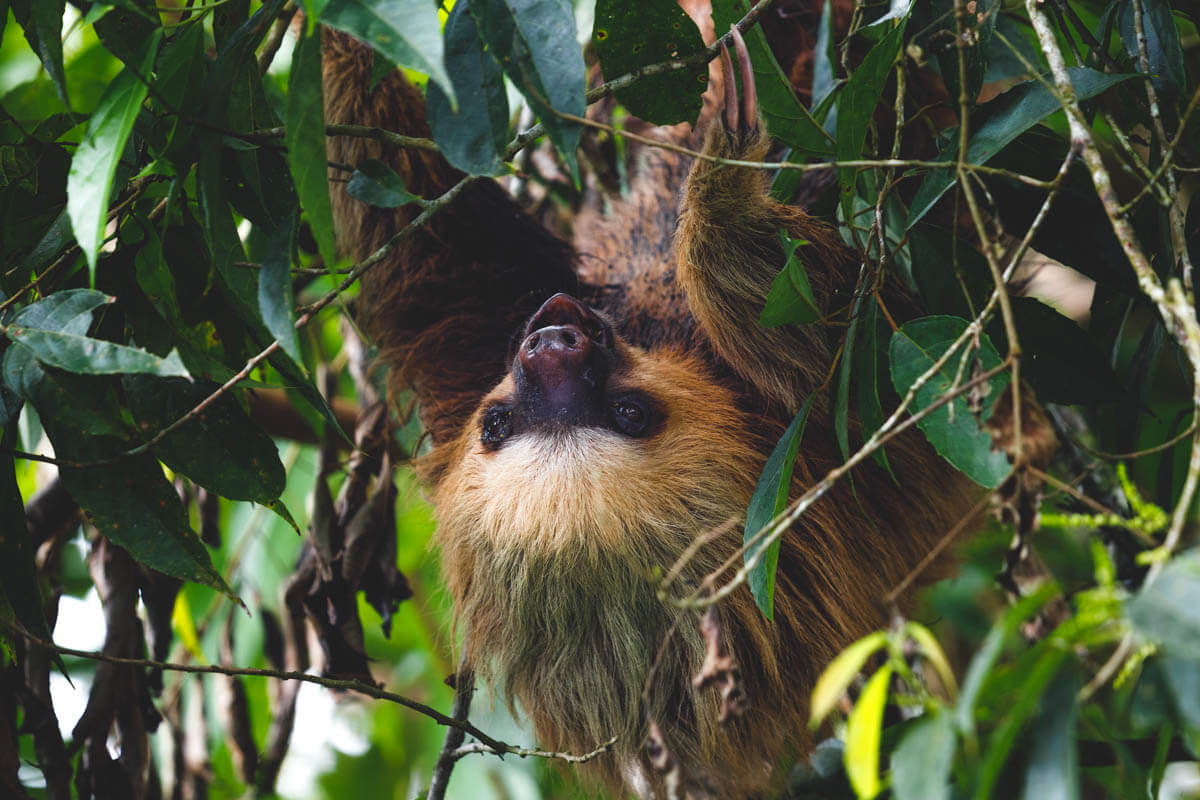
- Wildlife and Nature Tours – Costa Rica is known for its incredible biodiversity, and La Fortuna is no exception. Join a guided tour to learn about the local flora and fauna, spot exotic birds, and maybe even see a sloth or a monkey swinging through the trees! PS – spotting animals in the wild isn’t easy, you need to do at least one guided wildlife tour while in the country!
READ MORE: 13 EPIC Things to Do in La Fortuna, Costa Rica
Backpacking Monteverde
Ah, Monteverde , a place where nature works its magic to create a whimsical wonderland that will steal your heart.
High up in the clouds, this enchanting destination in Costa Rica invites you to embark on a truly extraordinary adventure…
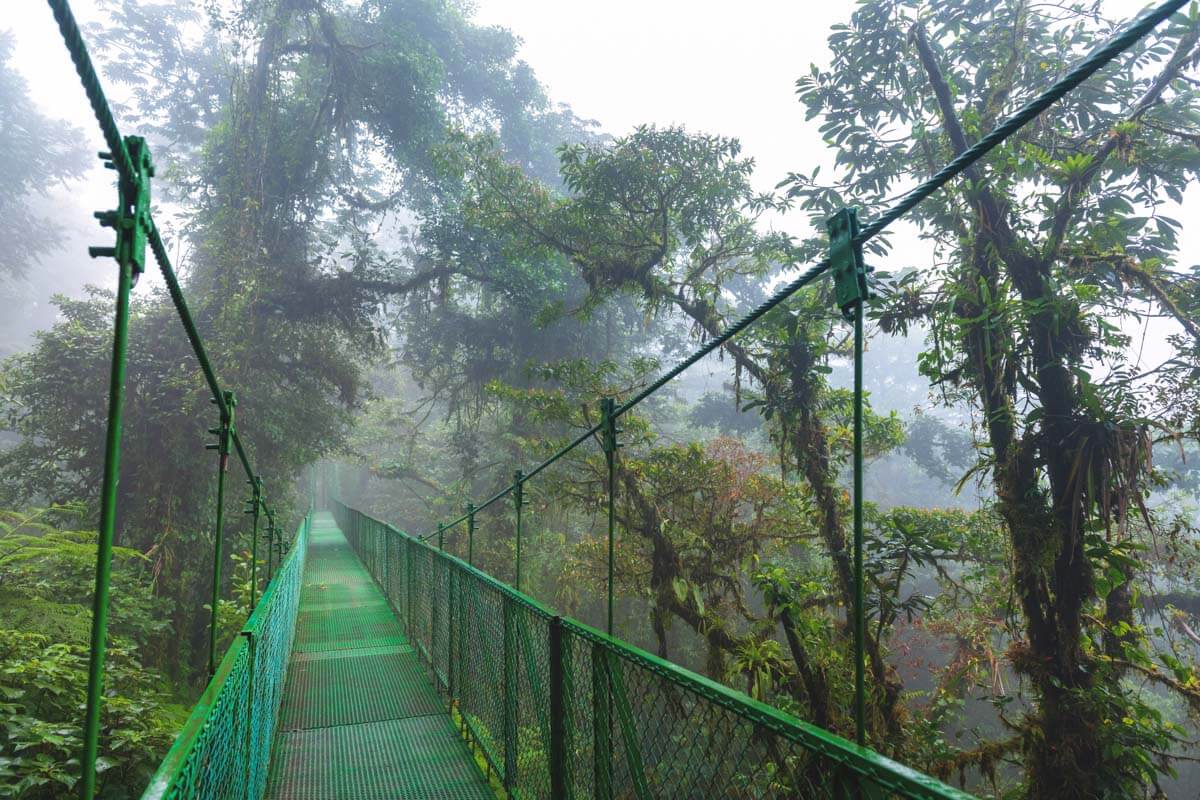
Imagine walking through mist-laden forests, where emerald-green canopies surround you! Monteverde is a sanctuary for nature enthusiasts, offering a symphony of sights and sounds that will leave you in awe.
The crown jewel of Monteverde is its world-famous cloud forest reserve. Wander along misty trails, guided or solo, and let the ethereal beauty of the surroundings transport you to another realm.
Suspension bridges invite you to explore the canopy from above, granting breathtaking vistas.
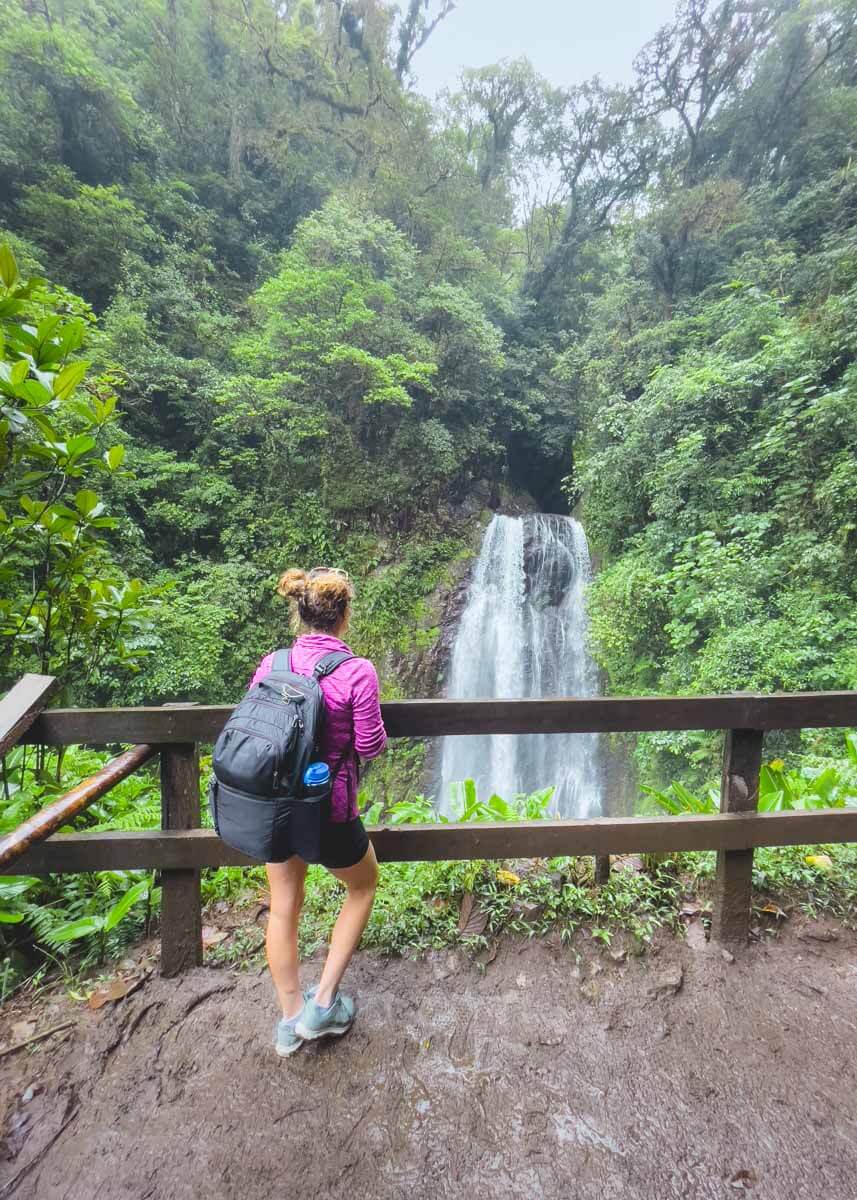
Adrenaline junkies, rejoice! Monteverde has an array of exhilarating activities to get your heart racing. Soar through the sky on thrilling zip lines (the longest in Latin America!), feeling the wind in your hair as you marvel at the stunning landscapes below.
You can also go on a captivating night tour, where the forest comes alive with the symphony of nocturnal creatures and a sky ablaze with stars.
Stroll through picturesque butterfly gardens, discover hidden trails leading to waterfalls, and more!
- El Tigre Waterfalls – An epic hike that takes you to tons of waterfalls! This was one of the best hikes I did in Costa Rica.
- Monteverde Cloud Forest Reserve – Covering over 26,000 acres, the Monteverde Cloud Forest Reserve is a natural wonder that houses a vast array of flora and fauna. Hiking through the forest’s trails or taking a guided tour on the hanging bridges in the clouds is one of the top stops in Monteverde!
- Ziplining and Canopy Tours – Monteverde is known as the zipline capital of Costa Rica, and thrill-seekers will love ziplining the longest zipline in Latin America here! Take in the forest canopy’s spectacular views and enjoy the adrenaline rush as you soar through the air. You can even go “Superman style!” This is the exact one I did !
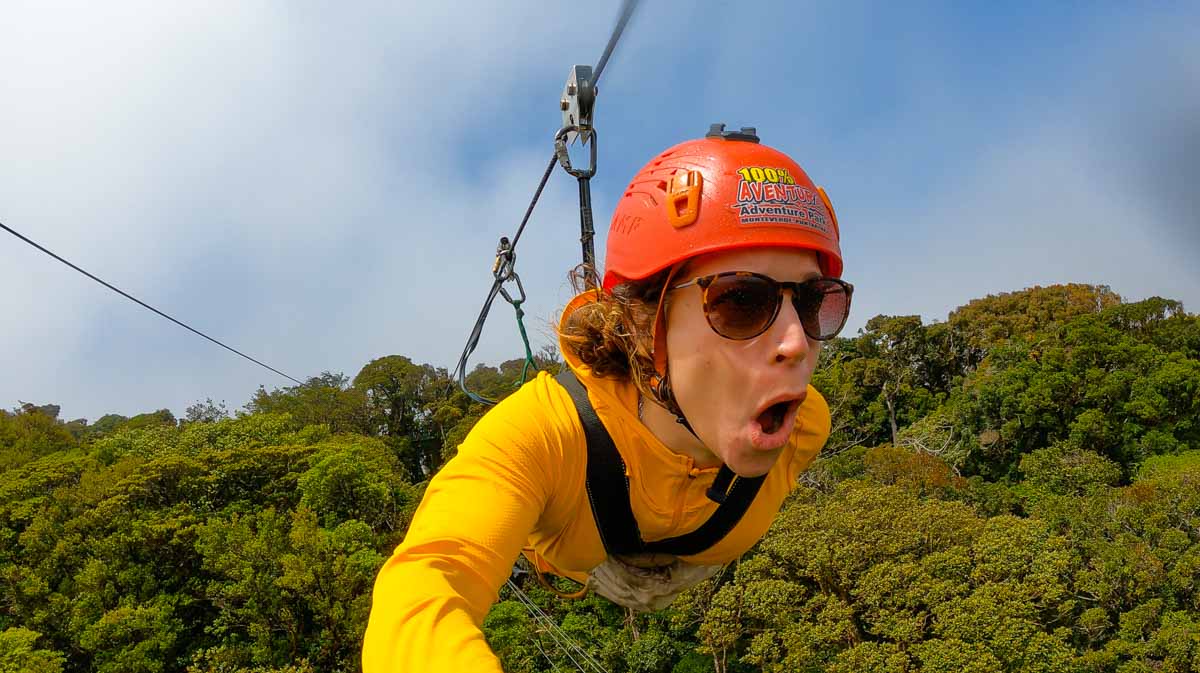
- Coffee Tours – Coffee is an integral part of Costa Rica’s culture, and Monteverde has several coffee farms where visitors can learn about the coffee-making process , from the bean to the cup (yum!). Take a tour of one of the local farms to learn about the history of coffee and taste some of the finest coffee in the world.
- Night Walks – Monteverde’s forests come alive at night with a host of nocturnal animals such as sloths, kinkajous, and bats. Don’t get creeped out! Take a guided night walk to see these fascinating creatures.
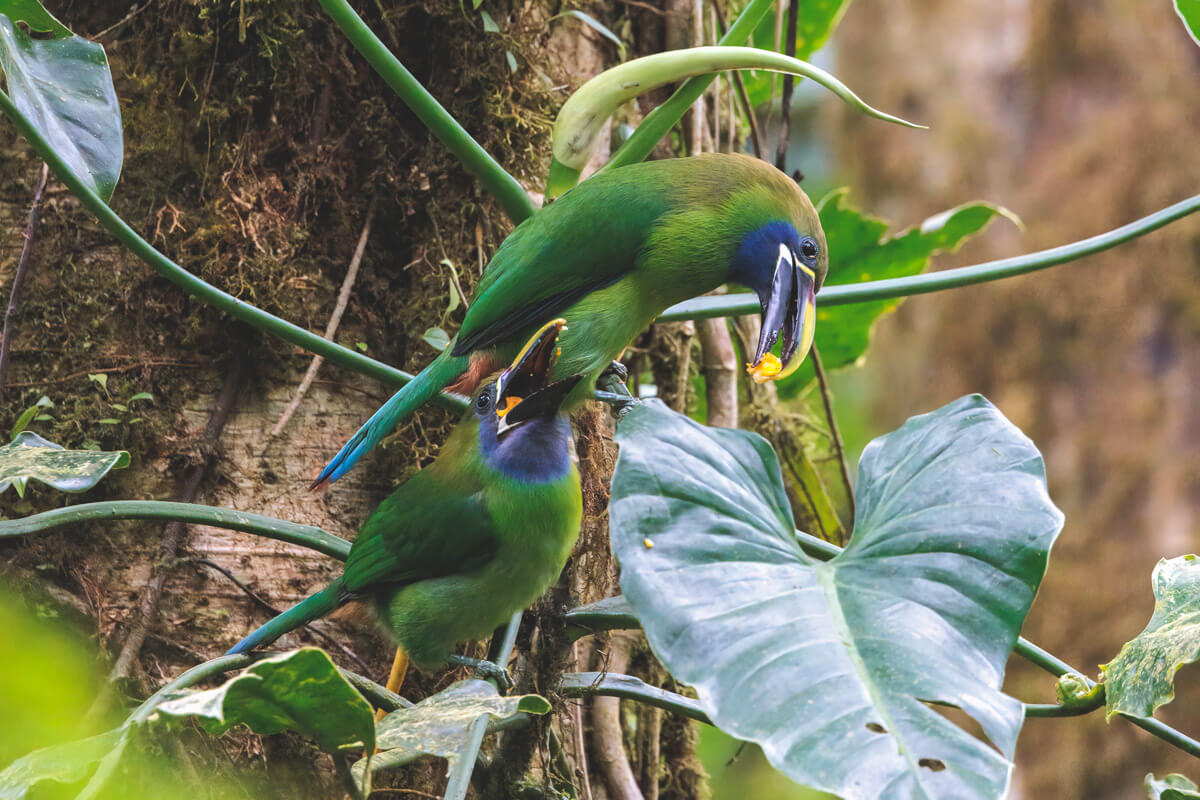
- Bird-Watching – Monteverde is a paradise for bird watchers, with over 400 species of birds found in the area. Take a guided bird-watching tour to spot the iconic resplendent quetzal, emerald toucanets, or any of the other unique birds found only in the region. They are stunning and so colorful!
READ MORE: Things to Do in Monteverde, Costa Rica
Backpacking Santa Teresa
Santa Teresa is a coastal gem that calls you to bask on its beaches. Situated along Costa Rica’s pristine Nicoya Peninsula shoreline, this laid-back haven is a sanctuary for digital nomads , sun-seekers, and surf enthusiasts alike.
Santa Teresa is a mecca for surfers, boasting some of the best breaks in the country. Grab your board and ride the waves like a true water warrior! Whether you’re a seasoned pro or a novice eager to learn, Santa Teresa’s surf culture will embrace you!
But Santa Teresa isn’t just about catching waves; it’s a holistic haven for wellness and rejuvenation. Discover the art of yoga and unwind with beachfront meditation sessions, finding solace in the soothing sounds of crashing waves and gentle ocean breezes.
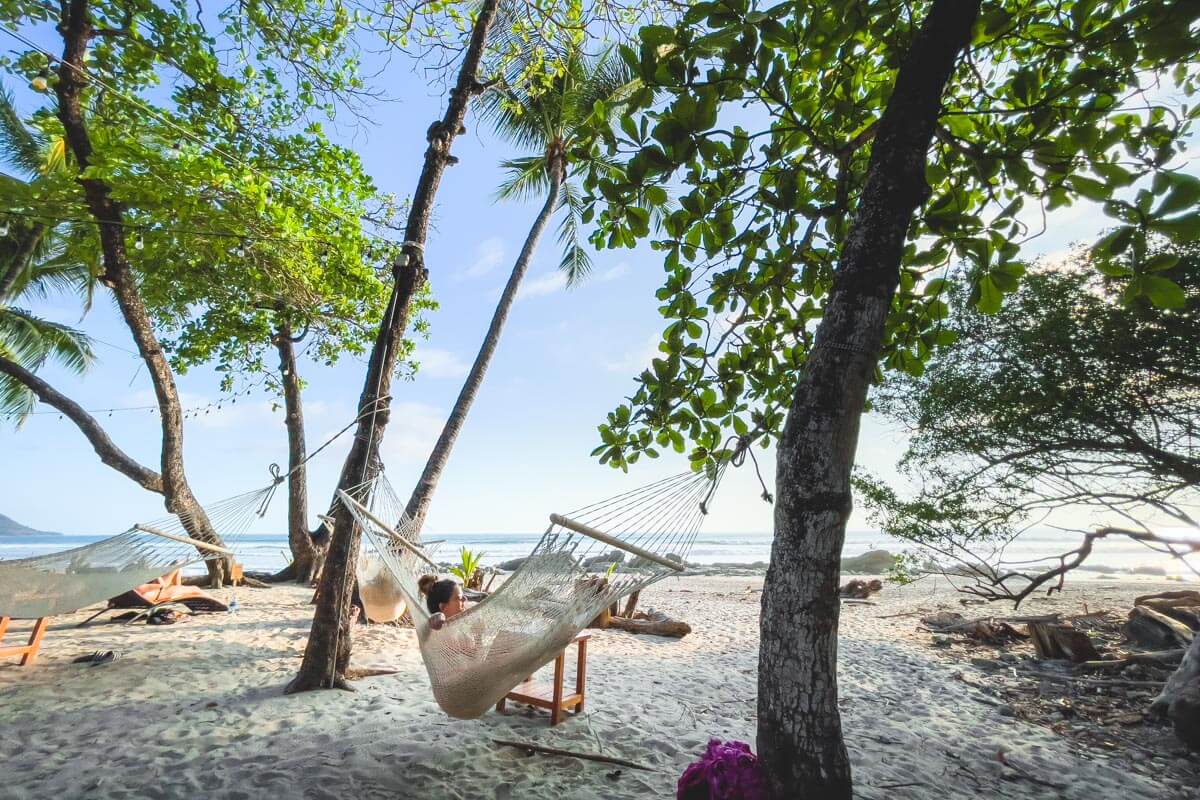
Nature lovers will find their bliss amidst the lush landscapes that surround Santa Teresa. Explore hidden trails that lead to secluded beaches, and lead you to tropical flora and fauna, as toucans and howler monkeys become your companions.
Santa Teresa is more than just a destination; it’s a way of life. Slow down, embrace the pura vida mentality, and engage with the warm-hearted locals.
Pack your swimsuit, wax your surfboard, and prepare for bliss in Santa Teresa!
- Surfing – With consistent waves all year round, Santa Teresa is a surfer’s paradise! There are surf schools and rental shops located along the beach, making it easy for beginners to take lessons and pros to catch some epic waves. There are two long beaches here just waiting for you.
- Yoga – Santa Teresa has numerous yoga studios and retreat centers offering classes and workshops for all levels. Practicing yoga in this tranquil setting surrounded by nature is a truly rejuvenating experience, so much so, people simply get stuck here.
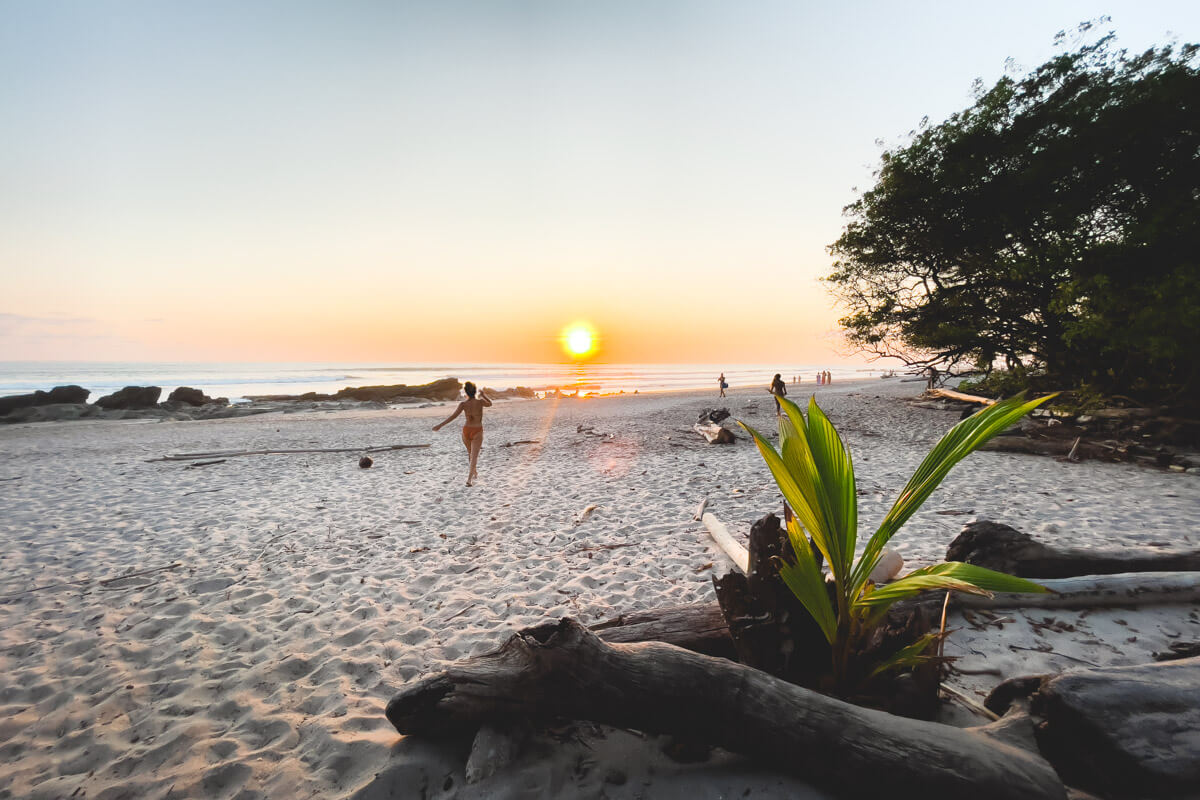
- Beach Hopping – Santa Teresa has several pristine beaches with crystal-clear waters and soft sand. Each beach has its own unique charm, from the bustling Playa Carmen to the secluded Playa Hermosa. You can go tide-pooling a bit more south in Mal Pais too. There are literally miles of sand to enjoy here.
- Montezuma – Head to the neighboring town of Montezuma to explore a cemetery island (yes, really!), check out solitude beaches, and take boat tours to Tortuga Island! Check the best things to do in Montezuma .
READ MORE: Your Guide to Things to Do in Santa Teresa, Costa Rica
Backpacking Puerto Viejo
Puerto Viejo is a slice of tropical heaven where vibrant colors and the laid-back Caribbean vibe blend together. Nestled on Costa Rica’s Caribbean coast, this town invites you to immerse yourself in its rich cultural tapestry and embrace the pure essence of paradise!
As you set foot in Puerto Viejo, time slows down, and worries dissipate into the sea breeze.
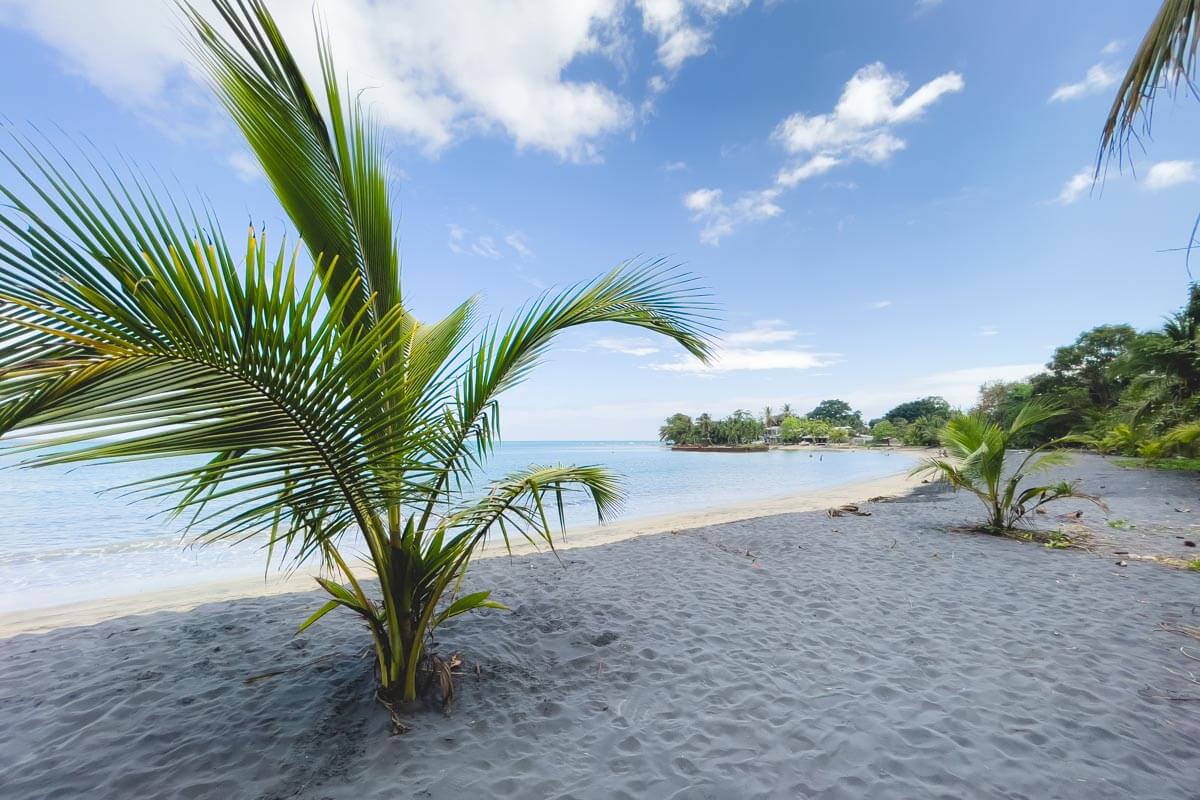
Puerto Viejo boasts some of the most stunning stretches of shoreline in the country. Sink your toes into the powdery sands of Playa Cocles, or catch some waves instead.
Nature enthusiasts will find their paradise in Puerto Viejo’s surrounding rainforests. Embark on a jungle adventure and encounter exotic wildlife like sloths, monkeys, and colorful toucans.
When the sun sets, the vibrant nightlife comes alive in Puerto Viejo. Dance to the infectious rhythms of reggae, calypso, and salsa, letting the music guide your every move!
- Beaches – Puerto Viejo has some of the most beautiful beaches in Costa Rica, with white sand and turquoise waters. From the lively Playa Cocles to the more secluded Punta Uva and several more in between!
- Surfing – The Caribbean coast of Costa Rica is a surfing hotspot, with consistent waves year-round. Surf schools and rental shops are available in Puerto Viejo, making it easy for beginners to take lessons or for pros to catch some of the best waves, just head to Playa Cocles. A board is $5 an hour.
- Cahuita National Park – Puerto Viejo is surrounded by lush jungles and teeming with wildlife. Take a hike to spot sloths, monkeys, toucans, and other exotic animals, or head underwater and snorkel! This is one of the best parks in the country, and I had the trail to myself half the time too!
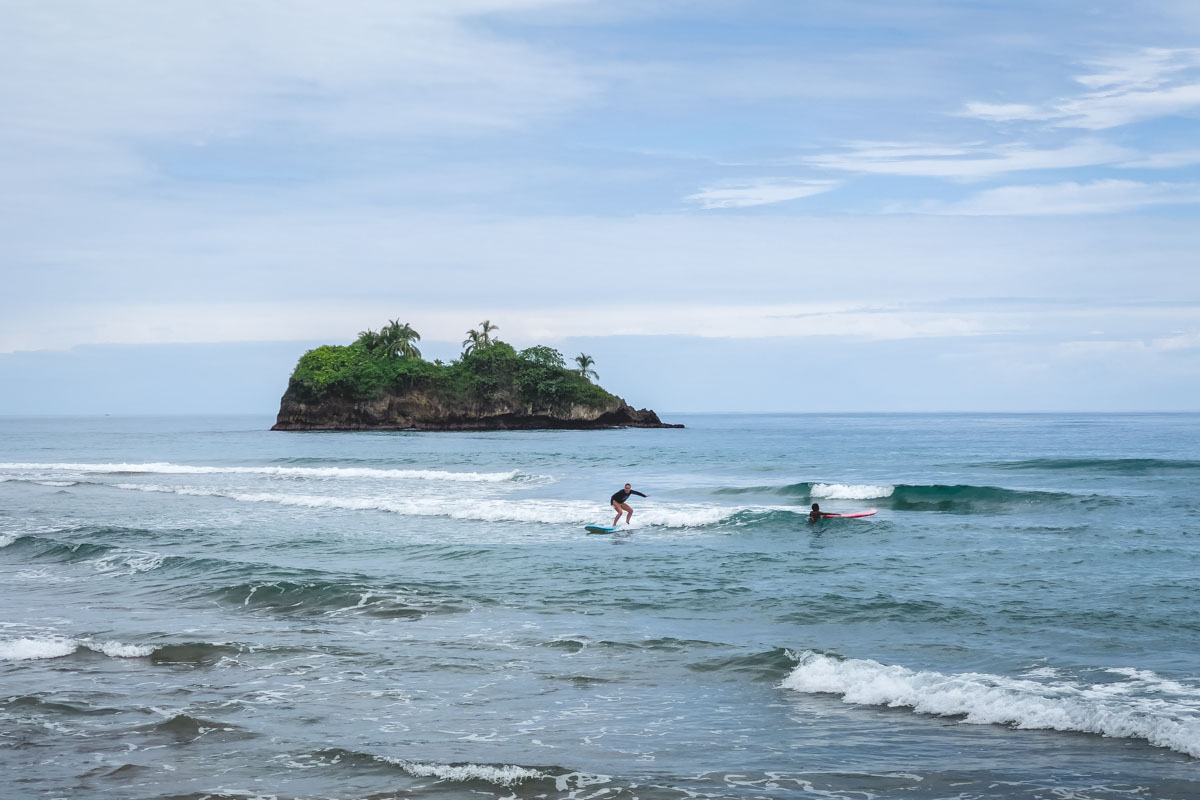
- Local Cuisine – The Afro-Caribbean culture of Puerto Viejo is reflected in the local cuisine, with dishes that incorporate traditional Caribbean flavors and spices. Seafood, rice and beans, jerk, and plantains, or you can even take a chocolate making class !
- Nightlife – Puerto Viejo has a lively and eclectic nightlife scene, with bars and clubs that play reggae, calypso, and other Caribbean beats. Enjoy a cold beer or a fruity cocktail while soaking up the spirited atmosphere! This town is actually super fun!
READ MORE: Your Guide to Puerto Viejo —Costa Rica’s Caribbean Surf Town
Backpacking Manuel Antonio
Say hello to Manuel Antonio , where breathtaking nature and thrilling adventures converge to create an unforgettable Eden! Nestled along Costa Rica’s stunning Pacific coast, this coastal gem invites you to explore its pristine beaches, lush rainforests, and a world teeming with vibrant wildlife.
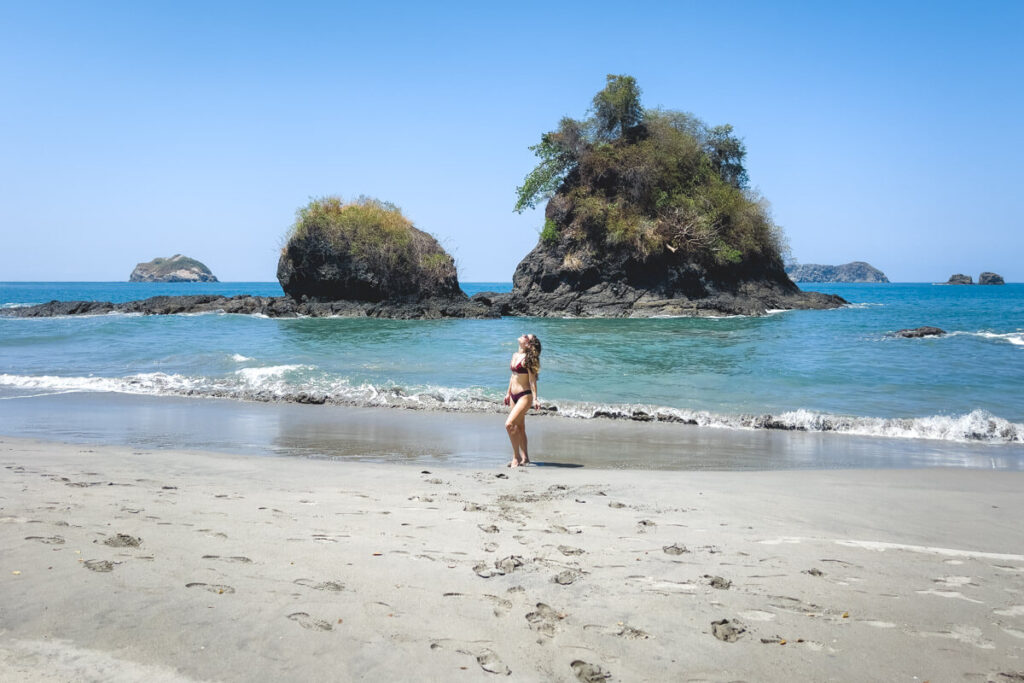
Prepare to be awe-inspired as you step into Manuel Antonio National Park, a true tropical wonderland and, unsurprisingly, the most popular park in the country. Monkeys swing through the treetops, sloths leisurely move among branches, and colorful toucans grace the sky above. Not to mention the beaches here are stunners!
Adventure awaits beyond the park’s boundaries too—Embark on thrilling canopy tours, ziplining through the treetops, and revel in a bird’s-eye view of this natural wonderland by parasailing.
- Manuel Antonio National Park – It’s the name of the town AND the park! This is one of the most popular national parks in Costa Rica, and for good reason. It boasts stunning beaches, lush rainforests, and abundant wildlife, including monkeys, sloths, and toucans. Take a guided nature walk to learn about the park’s flora and fauna, or simply relax on one of the park’s beautiful beaches.
- Beaches – Manuel Antonio has some of the most beautiful beaches in Costa Rica, with white sand and crystal-clear waters. There’s the popular Espadilla Beach and the more secluded Biesanz Beach, and some others that are only accessible through the national park. Bring a swimsuit everywhere you can in Manuel Antonio!
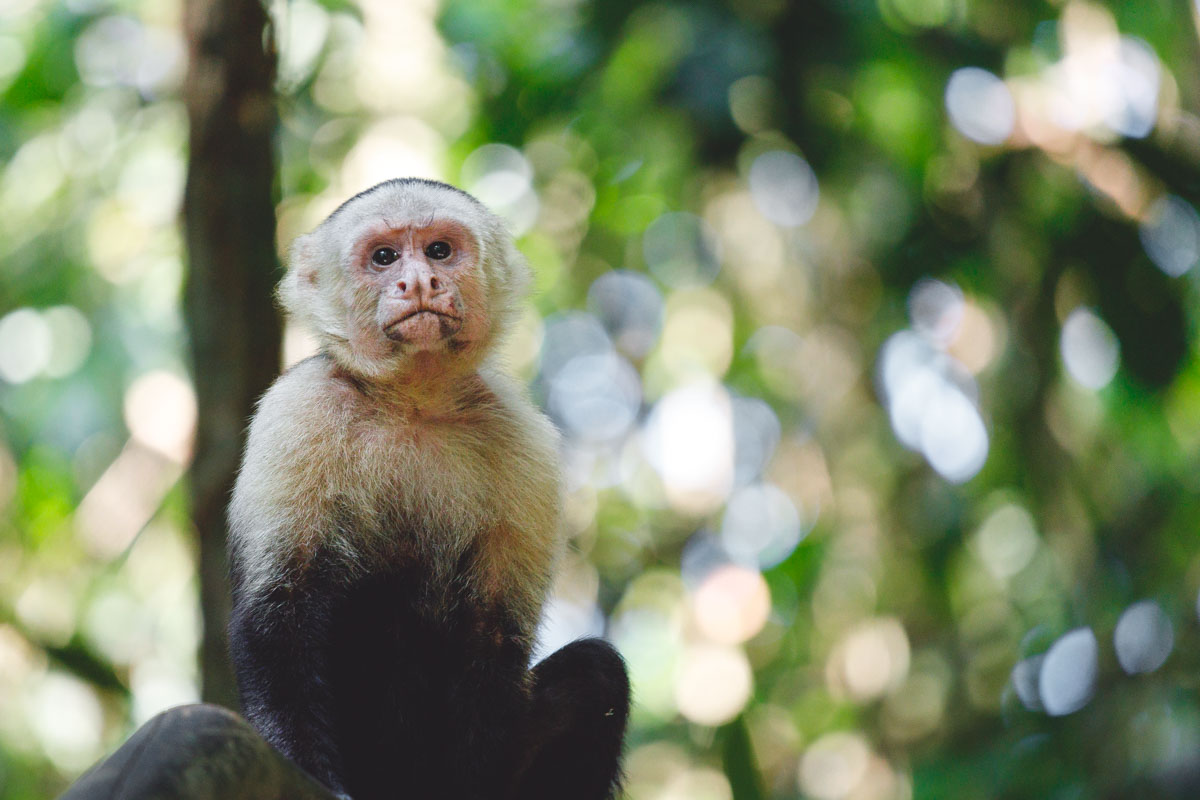
- Surfing – The Pacific coast of Costa Rica is a surfer’s paradise, and Manuel Antonio is no exception. Take a surf lesson or rent a board to catch some waves at one of the area’s surf spots. It’s best from May to November.
- Sailing – Hop on a sailboat in Manuel Antonio , it’s an unforgettable experience! Take a lunch out at sea and visit one of the most secluded beaches in the area.
READ MORE: 8 Best Things to Do in Manuel Antonio , Costa Rica + Tips!
Backpacking Uvita
Uvita is *kind of* a hidden gem nestled along Costa Rica’s mesmerizing Pacific coast. This off-the-beaten-path paradise invites you to immerse yourself in the unspoiled beauty of nature.
Uvita is renowned for its stunning natural treasures, starting with Marino Ballena National Park. As you step foot on its sandy beaches, you’ll be greeted by the sight of the iconic “Whale Tail,” a sandbar formation shaped like a whale’s tail that emerges during low tide.
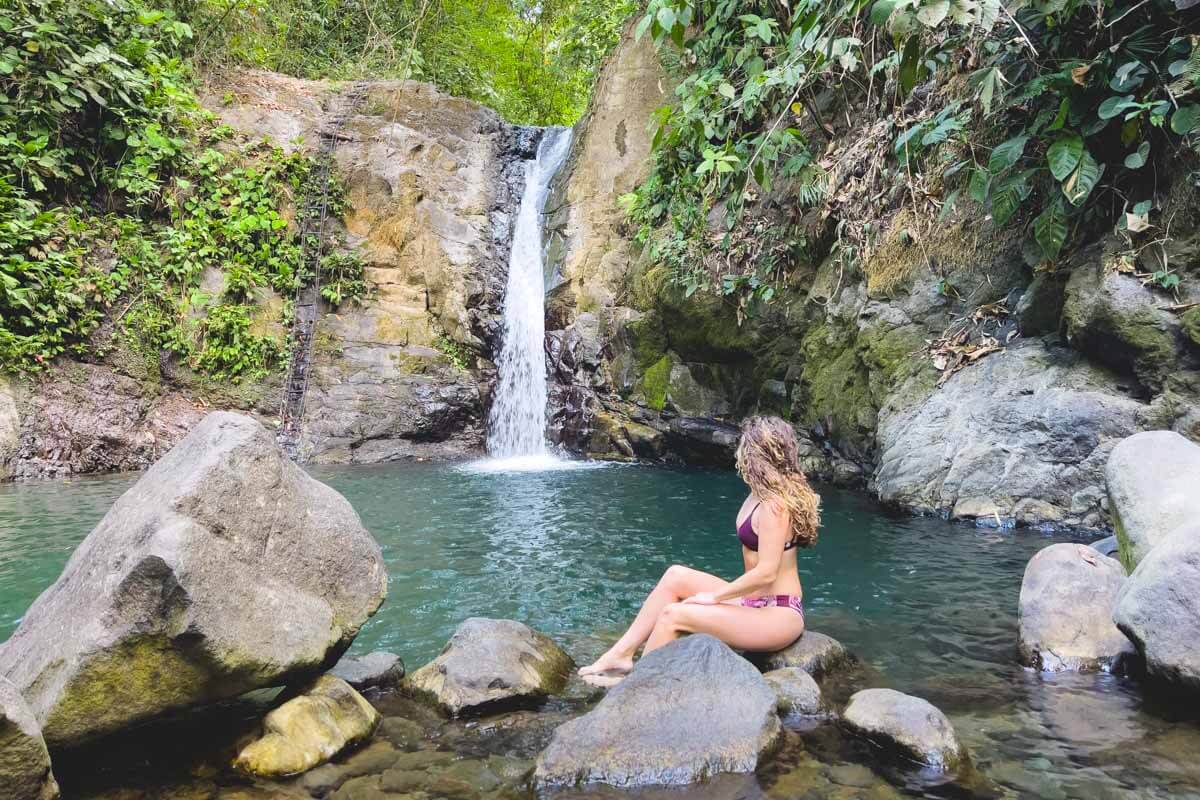
Adventure seekers will find their thrill in Uvita’s surrounding rainforests. Embark on exhilarating hikes through lush trails, stumble upon beautiful waterfalls, and encounter exotic wildlife like monkeys, sloths, and tropical birds along the way.
Uvita invites you to slow down, reconnect with nature, and embrace the tranquility that comes with being surrounded by unspoiled beauty!
- Marino Ballena National Park – This park is home to some of the most beautiful beaches in Costa Rica, including the famous Whale’s Tail, a unique sandbar formation that resembles a whale’s tail from above. The park is also a popular spot for snorkeling and diving, with vibrant coral reefs and abundant marine life, especially whales! Speaking of…
- Whale Watching – Uvita is one of the best places in Costa Rica to see humpback whales. Take a whale-watching tour to witness these magnificent creatures up close and learn about their behavior and migration patterns. It’s incredible!
- Waterfall Hikes – Uvita is surrounded by lush rainforests, with several stunning waterfalls waiting to be explored. Head to Catarata Uvita or Nauyaca Falls!
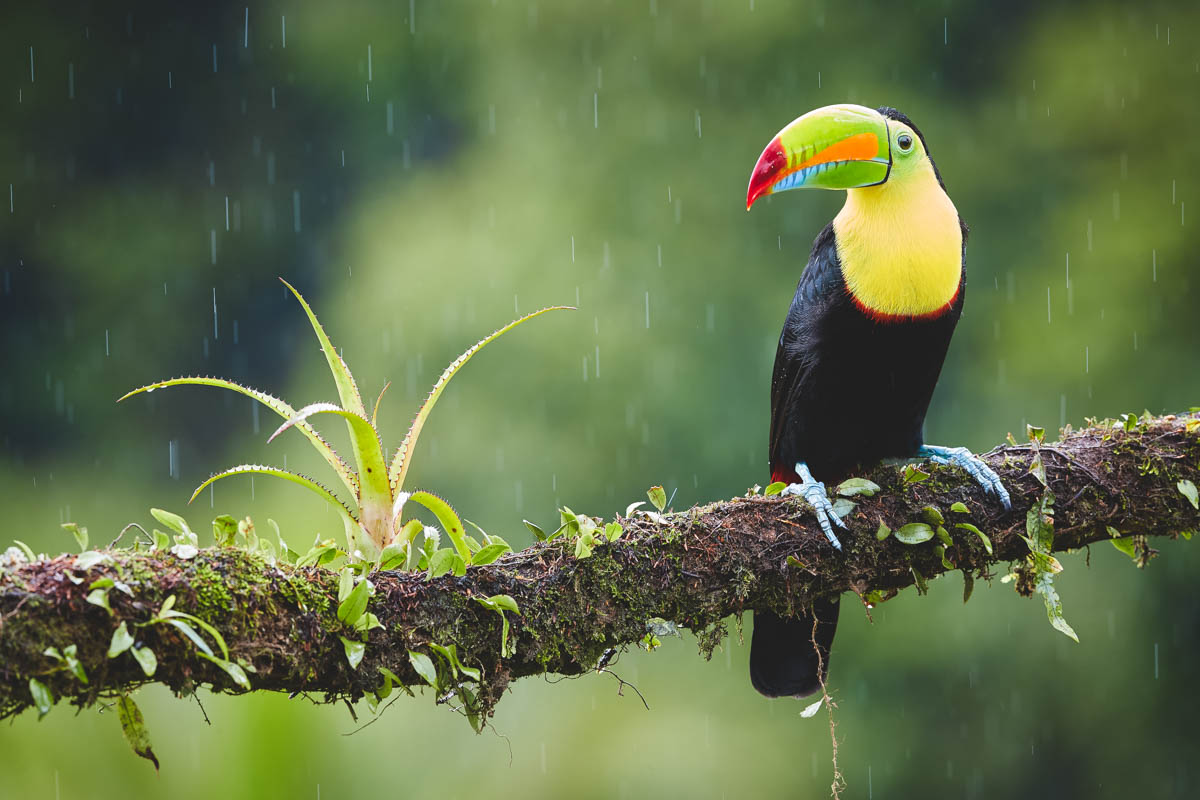
- Wildlife Watching – Uvita is home to a diverse range of wildlife, including monkeys, sloths, toucans, and macaws. OK fine, these are all over Costa Rica in case you haven’t noticed yet, but still! It doesn’t get old…
- Surfing – The Pacific Coast of Costa Rica is a surfer’s paradise, and Uvita is no exception. Take a surf lesson or rent a board to catch some waves at one of the area’s surf spots or even hop up to Dominical for more wave options!
READ MORE: 11 Best Things to Do in Uvita, Costa Rica
There are plenty of other places, but above were some of the main highlights. Here are some other spots I love exploring while backpacking in Costa Rica!
- Samara – A cute surfer destination that’s a lot smaller and more chill than Santa Teresa that’s worth visiting if you’re just learning to surf or want to disappear from reality for a bit!
- Rincon de la Vieja – The park is named after the active volcano Rincon de la Vieja, which is the centerpiece of the area. You’ll be able to go hiking, horseback riding, and ziplining, and you can even explore the park’s diverse flora and fauna, hot springs, waterfalls (like Oropendola Waterfall !), and an array of wildlife, such as howler monkeys, jaguars, and tapirs! Check this tour here .
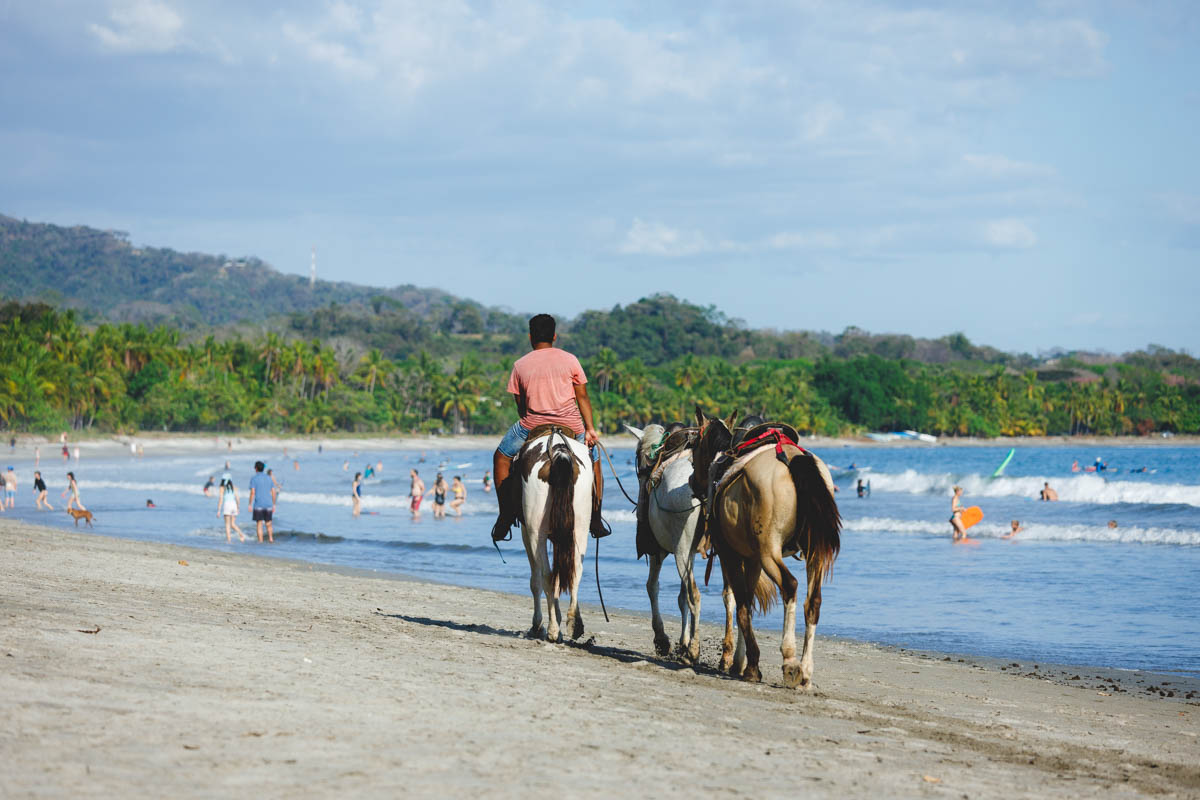
- Playa del Coco – The town offers a cheerful and chill atmosphere with a variety of restaurants, bars, and shops but I’ll be the first to admit it’s not really a great backpackers destination, but it’s a base for exploring nearby attractions such as national parks and wildlife reserves.
- Tamarindo – Probably one of the most popular beach towns in the country, with surfing, kayaking, snorkeling, and scuba diving, as well as plenty of opportunities to explore the area’s natural beauty with guided tours and excursions.
- Limon – If you’re headed to Tortuguero National Park or want to explore more of the Caribbean side of Costa Rica, Limon is the place!
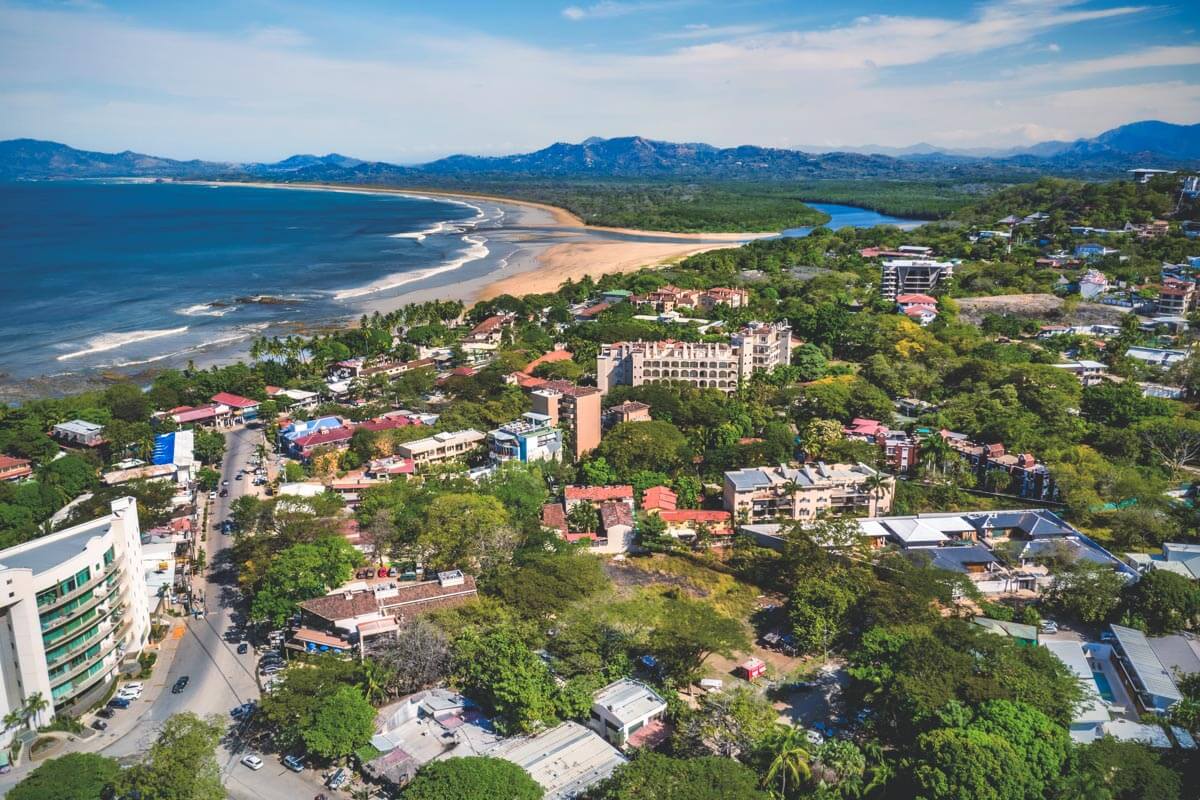
- San Jose – While many people may avoid the capital, it can be a great base for exploring a lot of incredible nearby volcanoes and for visiting some of the most stunning waterfalls and sites in Costa Rica. There are tons of day tours like this one you can do, so you are out of the city all day anyway!
RELATED: 10 Best Waterfalls in Costa Rica (+ Costs and Tips)
Here’s a quick run down on the best experiences in Costa Rica!
- Fly through the sky on the longest zipline in Latin America
- Monkey around in Manuel Antonio National Park
- Take a nocturnal tour in either La Fortuna or Monteverde
- Fill up on fresh fruit as often as possible
- Wander the cloud forests of Monteverde
- Hike in the volcanoes of Rincon de La Vieja plus visit Orondopola Waterfall and soak in a hot spring in one day!
- Climb down to La Fortuna Waterfall and splash around
- Grab a Costa Rican brew
- See the impossibly blue Rio Celeste Waterfall
- Don’t skip the Nicoya Peninsula (places like Samara and Santa Teresa !)
- Hike around Arenal Volcano National Park
- Grab a pipa fria bc it’s HOT (cold coconut)
- Get to know Costa Rican coffee every morning!
- …and the chocolate! Maybe even take a chocolate making class
- Bask on the beaches at Marino Ballena National Park
- Spot animals in Cahuita National Park
- Go to a soda and eat a casado
- Visit Montezuma for a day and wander around a cemetery island and a waterfall
- Go whale watching in Uvita
- Chase waterfalls in Bajos del Toro
- Get off grid at Tortuguero National Park
- Experience the Caribbean side in Puerto Viejo
- Tackle El Tigre waterfalls hike
- Go surfing on either coast—you have to try it once.
- Visit the most biodiverse in the country, Corcovado National Park
- Adopt their way of life – Pura Vida!
OK, I won’t repeat everything from above here, but here’s a realistic itinerary of what towns you can fit into 4 weeks. Mix and match the ordering if you’re coming for less than a month and choose your top favorite weeks from the options below!
- Week 1 – Exploring the incredible cloud forests, waterfalls, and hot springs around Monteverde and La Fortuna.
- Week 2 – Explore the Nicoya Peninsula. Have fun in Tamarindo, Get lost in Samara, and pick up surfing in Santa Teresa… Beach bum and surf to your heart’s content! You might want to just choose 1 or 2 of these for a more chill beachy week.
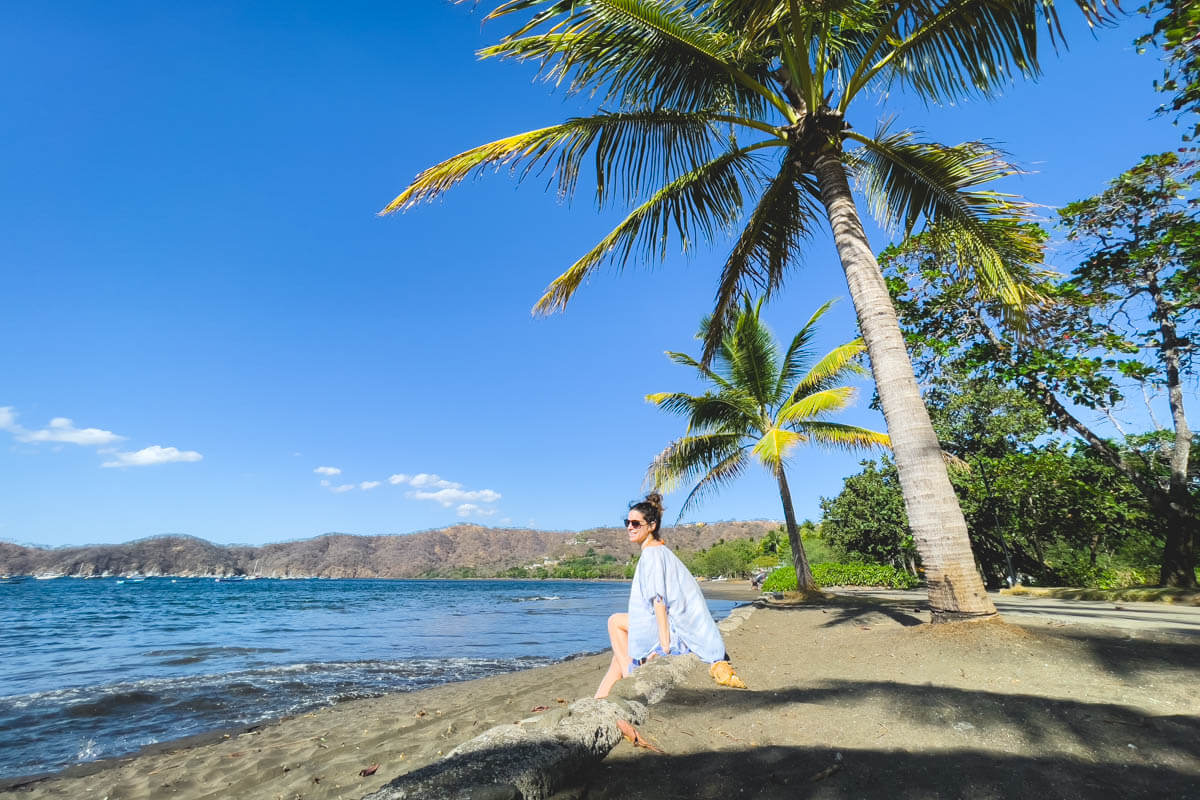
- Week 3 – Explore the incredible town and park of Manual Antonio for a few days and then spend a couple more in Uvita soaking up the sun, visiting the whale’s tail, and chasing more waterfalls. You could add on Dominical if you wanted to as well.
- Week 4 – Head out to the Caribbean side, hang ten on the beaches of Puerto Viejo for a few days. Then spend a couple of days in San Jose before jetting off home and take some day trips to nearby volcanoes and waterfalls.
How to Get Around Costa Rica
Costa Rica is a great place to explore, but the modes of transportation can be a bit limited. For the most freedom, renting your own car would be a good choice, but it’s going to cost ya! Otherwise, you can take tours, but that’s a bit more limiting and also not cheap!
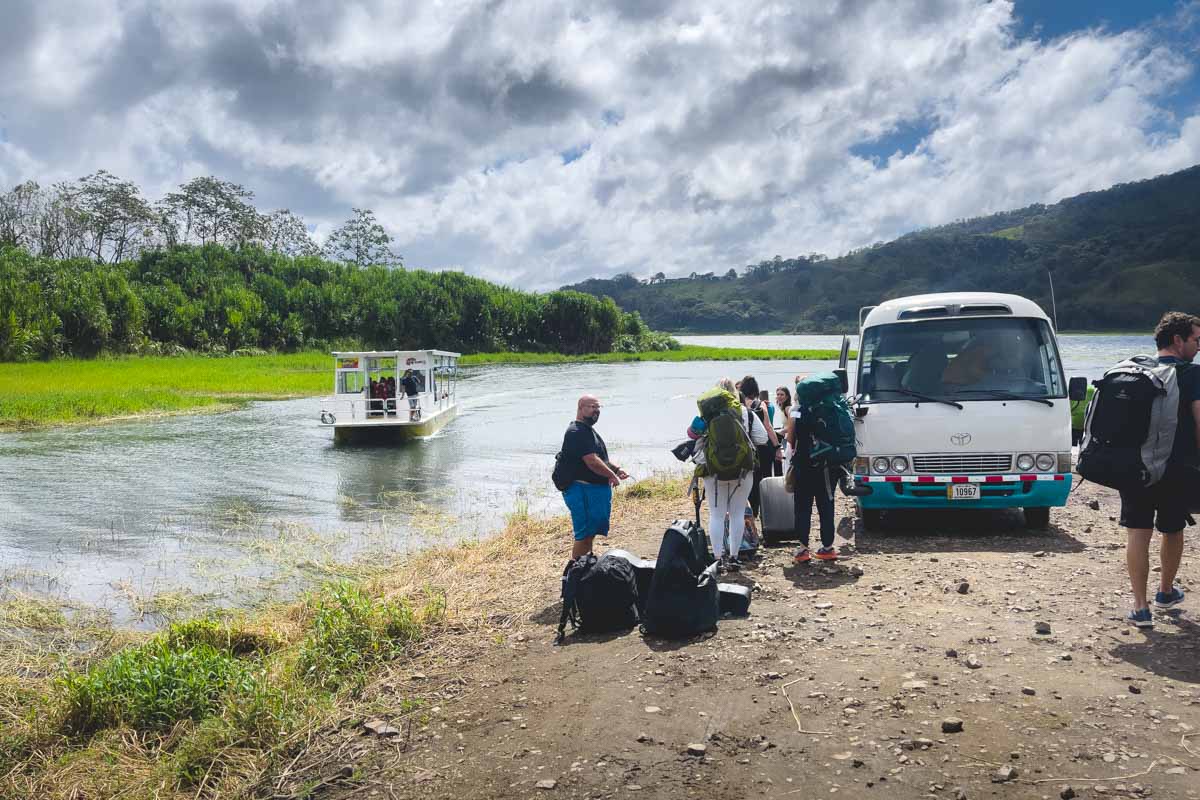
There are shuttles, taxis, and some public buses, but it depends on what you’re doing and trying to see. You can explore the more specific guides I’ve linked above for more detailed info about each town. Otherwise, below is the general way to get around the country.
Renting a car is a popular option for those who want the freedom and flexibility to explore the country at their own pace. There are several international car rental companies in Costa Rica, as well as local operators.
The cost of renting a car varies depending on the type of vehicle and duration of the rental, but a typical rental for a compact car can cost around $30 – $50 + USD per day. It can be much more if you get a 4×4 or a campervan.
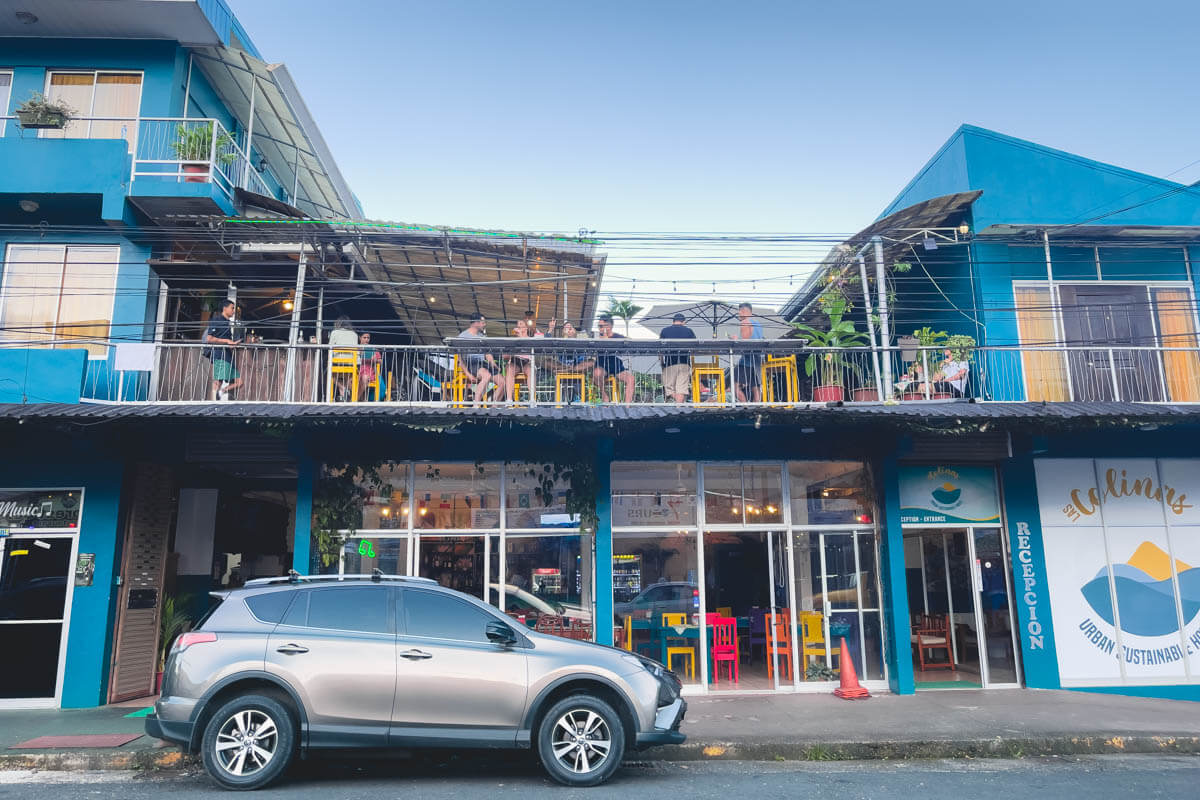
It’s important to note that driving in Costa Rica can be challenging, especially in rural areas where many of the roads are unpaved and can be narrow and winding. Check here for car rental deals.
Public buses are the most affordable way to get around Costa Rica when backpacking, with fares starting at just a couple of dollars. Several bus companies operate throughout the country, with routes connecting major cities and towns.
The buses are often crowded and can be uncomfortable, especially on long journeys. Sometimes people stand if no seats are available and there isn’t air conditioning. However, they are a great option for backpackers in Costa Rica who are okay with a bit of adventure.
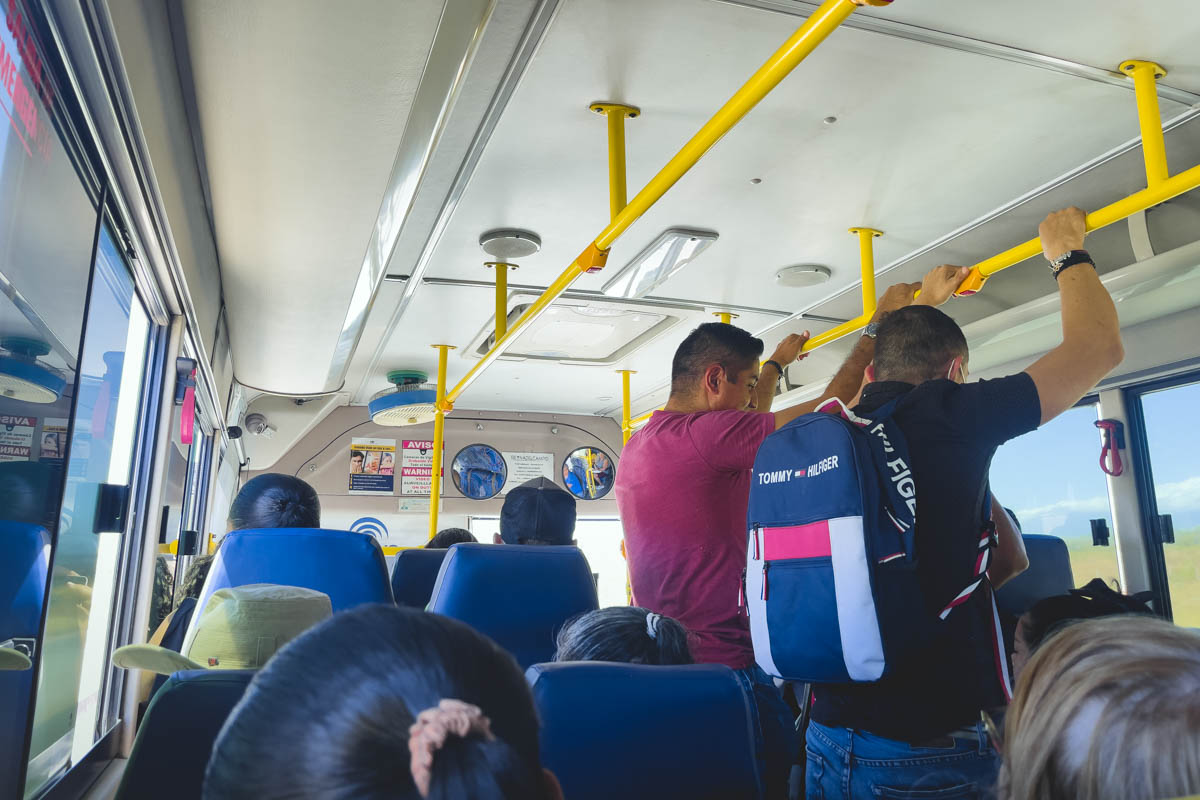
As you may experience, as I did, sometimes getting to the smaller towns may require you to take a few of these local buses, and shuttles don’t always operate. (the Nicoya Peninsula, for sure!)
Sometimes going just a few hours away can take around half a day when using the bus system, so make sure you plan your trip accordingly! They can really eat away at your time in the country.
Using Costa Rica’s shuttle services is a popular option for those who want to avoid the hassle of driving and don’t want to deal with taking public buses.
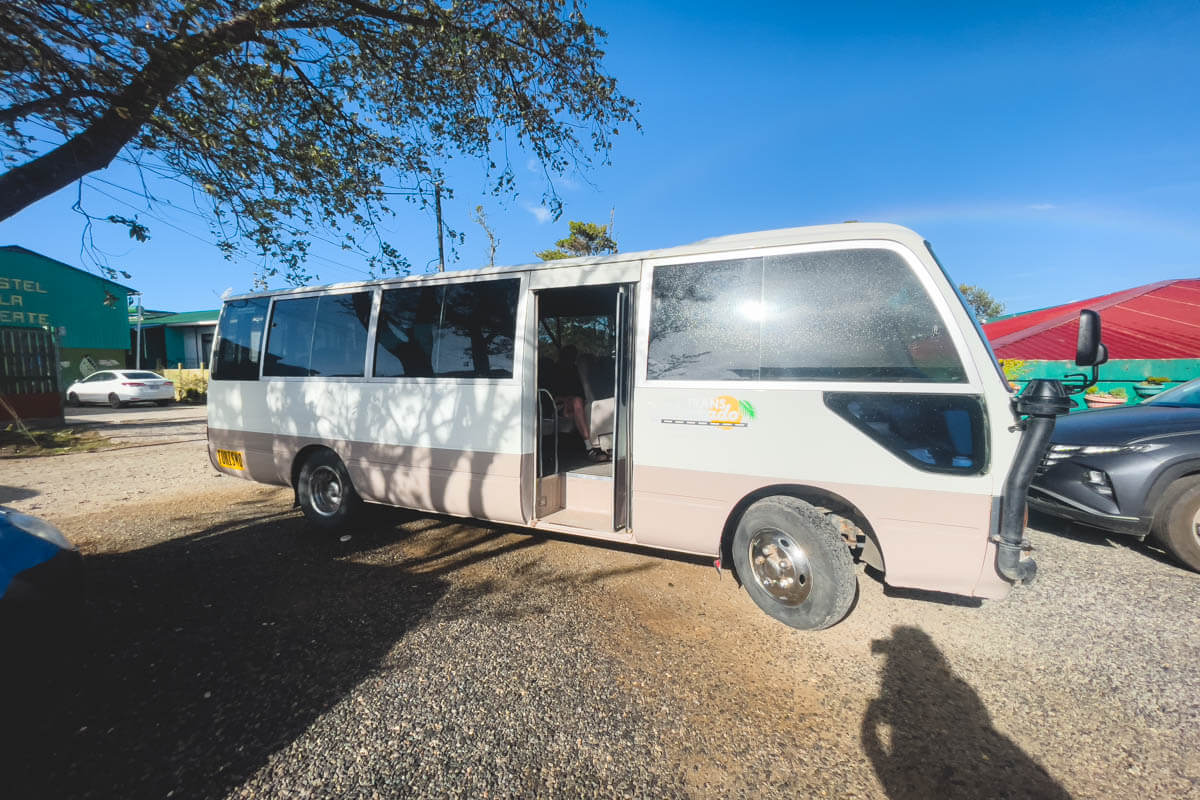
Shuttle services are available throughout the country and can be easily booked in advance online (unlike the buses)! The cost of a shuttle service varies depending on the distance and duration of the trip, but a typical one-way trip from San Jose to Manuel Antonio can cost around $60 USD to give you an idea.
This is what I used the majority of the time during my visit to Costa Rica. The shuttles are super easy to book, there are only about 15-20 people in the vehicle, it’s nice and comfortable, and has air conditioning… It’s definitely the most comfortable way to get around when backpacking in Costa Rica.
As you can tell, though, this won’t be the cheapest way to get around. In fact, the shuttles can really add up! But they are easy and quick, AND they include pick up and drop off at your hotel which is a major perk.
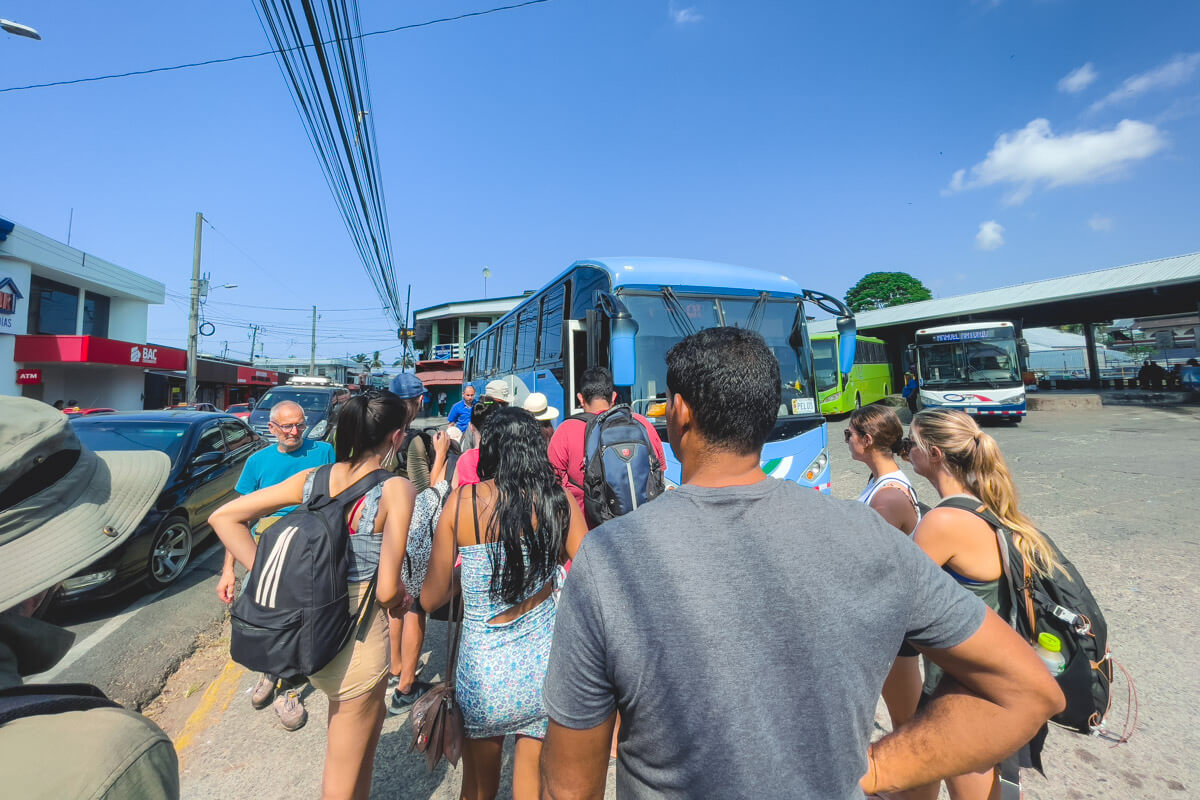
It’s also important to note that traveling in Costa Rica can be slow-going, especially in the rural areas where the roads can be unpaved and winding. Be sure to leave plenty of time to get from one destination to the next, and don’t hesitate to ask for recommendations and advice from locals and tour operators. Check for shuttles here .
TRANSPORTATION TIP
If you’re looking for bus or boat tickets around Central America and Mexico, you can easily book them online! Check Availability
Picture this: you find yourself in the heart of La Fortuna, a compact little gem perfect for leisurely strolls. Here, you can freely wander around on foot, soaking in the charm of this delightful place. But hey, if you’re venturing into Santa Teresa, things are a bit spread out—think 2.5-3 miles (4-5 km) of exploration ahead! Fear not, I got you…
First up, scout out hostels that offer free bike rentals. Yes, you heard it right. Grab one and pedal your way through town like a true adventurer. Alternatively, choose accommodations close to the bustling city center for easy access to all the action.
Keep a vigilant eye on your trusty steed at all times, or better yet, equip it with a sturdy lock for that extra peace of mind. Bike theft does happen!
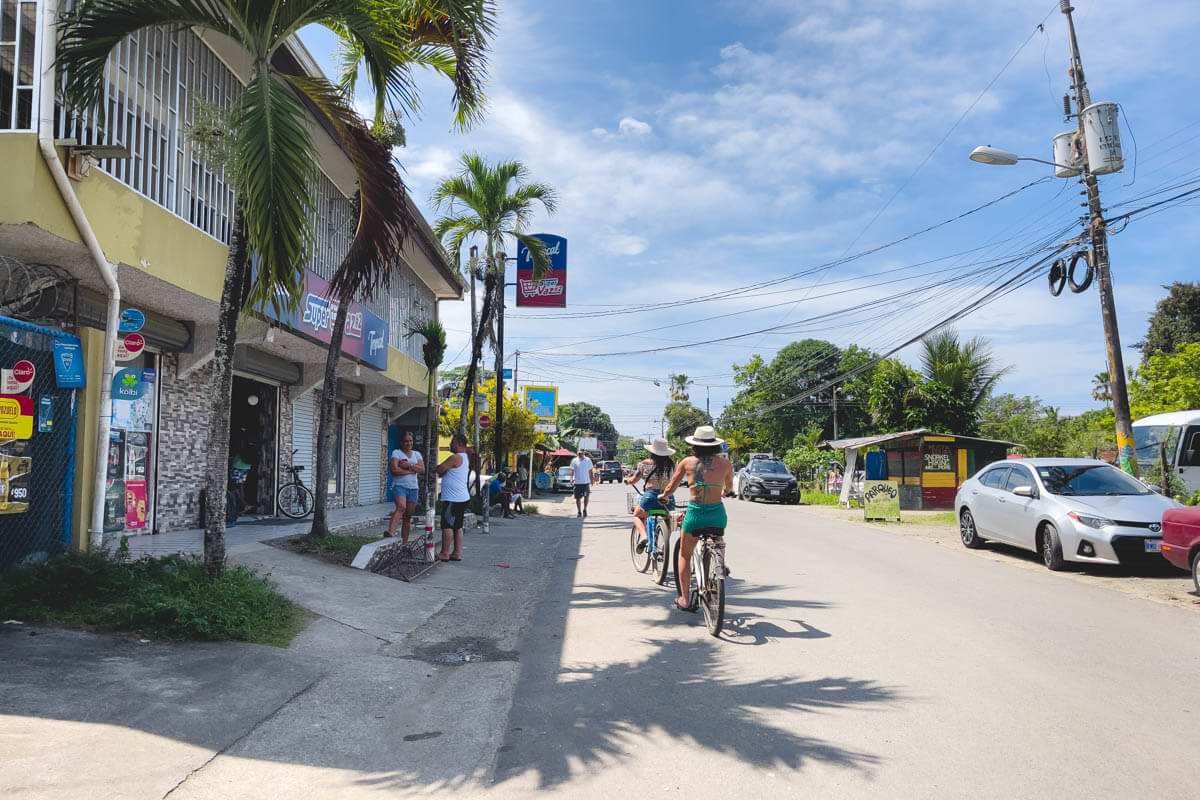
Inner-city buses work, but not all of them have it, and they can take a bit longer.
While the idea of zipping around Costa Rica at the wheel of a rental car may seem tempting, it can put a strain on your budget and add some unwanted stress to your adventure. Not to mention you have to pay for parking almost everywhere.
Want to rent an ATV? Here’s the scoop: not only are they harmful to the environment, but they also have a notorious reputation for backpacker accidents. Bummer! Be careful.
For getting around, bikes and walking within the town are the best way to go. To get to other destinations just outside of town, either take the tour or negotiate with a taxi. This is pretty much what I did the whole time, and got around just fine.
Costa Rica has a tropical climate, which means that it is warm and humid year-round, but there are distinct differences in weather patterns throughout the year.
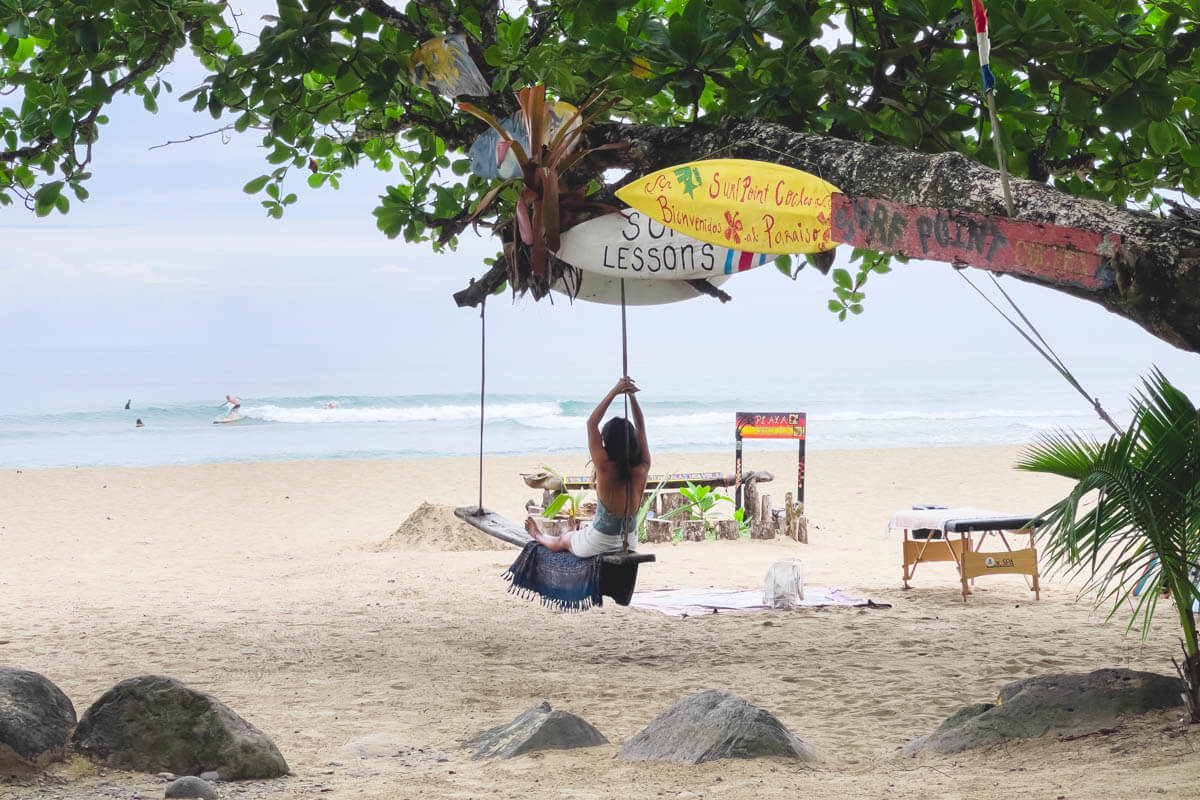
The best time to visit Costa Rica depends on your interests and travel preferences. Here’s a breakdown of the different seasons and what to expect:
- Dry Season (December to April) – This is the most popular time of year to visit Costa Rica, as it is the driest and sunniest time of the year. The warm and sunny weather makes it perfect for outdoor activities such as hiking, surfing, and beach lounging. The downside of visiting during this time is that it can be crowded and more expensive.
- Green Season (June through October) – This is the rainy season in Costa Rica, but it doesn’t mean that it rains all day every day. The rain usually comes in short bursts in the late afternoon or evening, which can make for some beautiful sunsets. The green season is a great time to visit if you want fewer crowds and lower prices. It’s also a great time to see the lush green landscapes that Costa Rica is known for!
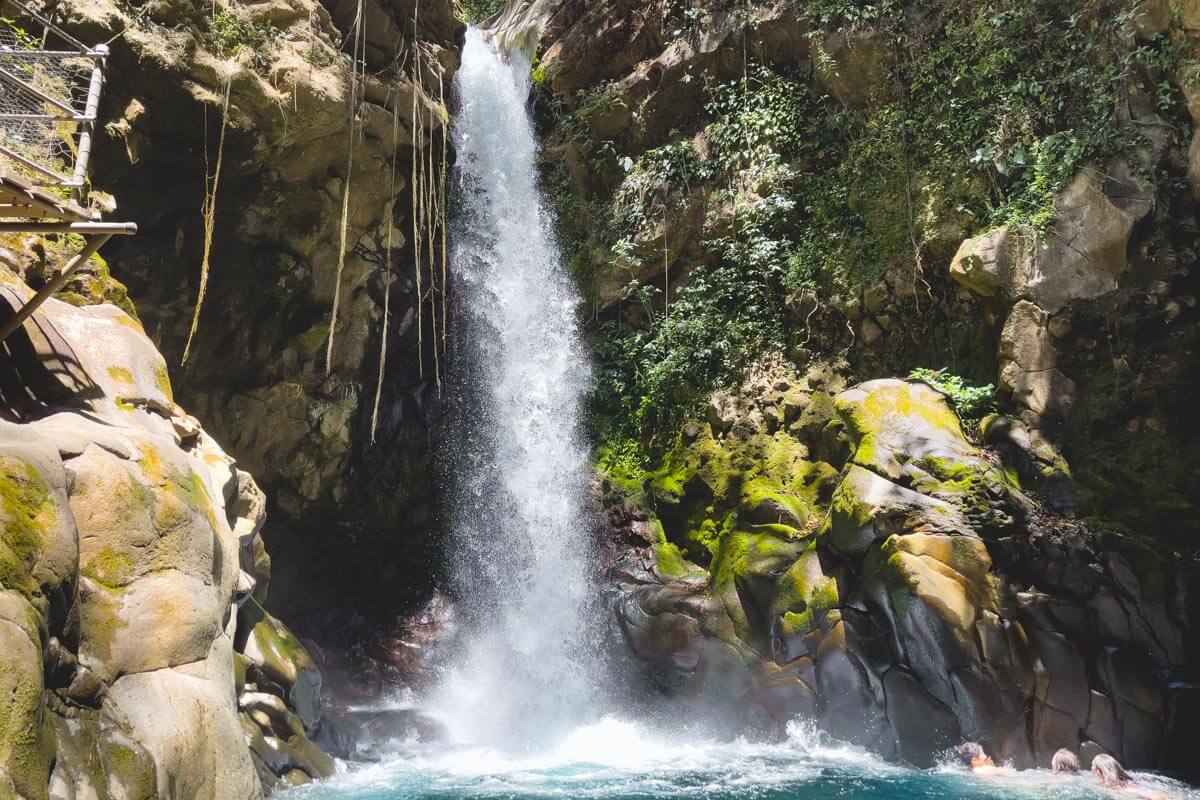
- Shoulder Seasons (May and November) – These are the months when the rainy season is transitioning to the dry season and vice versa. The weather can be unpredictable during these months, with some sunny days and others rainy. However, these are also great months to visit if you’re looking for lower prices and fewer crowds.
When planning your trip to Costa Rica, it’s important to remember that the climate can vary depending on the region you’re visiting. For example, the Caribbean coast tends to be rainier than the Pacific coast, and the Central Valley region can be cooler than the coastal regions.
Let’s be real, Costa Rica isn’t really known for its cuisine! I hope you really like rice and beans OR are willing to shell out some extra cash for something a bit more Westernized. With that said, here are some of the top foods to try when visiting Costa Rica:

- Gallo Pinto – This traditional breakfast dish consists of rice and beans mixed with onions, peppers, and cilantro. It is often served with eggs, plantains, and sour cream.
- Casado – This popular local lunch typically includes rice, beans, plantains, salad, and your choice of meat or fish. It’s a hearty and filling meal that will help keep you in line with your budget!
- Ceviche – This seafood dish is popular throughout Central and South America, but each country has its own unique spin on it. In Costa Rica, ceviche is typically made with tilapia or shrimp and marinated in lime juice, onions, peppers, and cilantro. It’s a refreshing and flavorful dish that is perfect for a hot day.
- Sopa Negra – This black bean soup is typically served as a starter or light lunch. It is made with black beans, onions, peppers, and cilantro and often has a hard-boiled egg on top. It’s a simple, comforting dish perfect for a rainy day.
- Arroz con Pollo – This is a classic chicken and rice dish that is popular throughout Latin America. In Costa Rica, it is typically made with rice, chicken, and vegetables such as peas and carrots. It’s a comforting and filling dish that is perfect for a family dinner.
- Tres Leches Cake – This dessert is popular throughout Latin America, but the Costa Rican version is particularly delicious. It’s a sponge cake soaked in three types of milk (hence the name) and topped with whipped cream. It’s a rich and indulgent dessert perfect for satisfying your sweet tooth.
- Fruit – Oh, all the fresh and delicious fruit! Take advantage of it and feel free to splurge on getting fruit shakes or juices, they are worth it. Don’t forget to hydrate with coconuts on the beach!
Everyone spends differently, and you’ll notice many ways to go about backpacking in Costa Rica. I’m definitely more on the flashpacking budget nowadays, you can get around Costa Rica for cheaper than I did it.
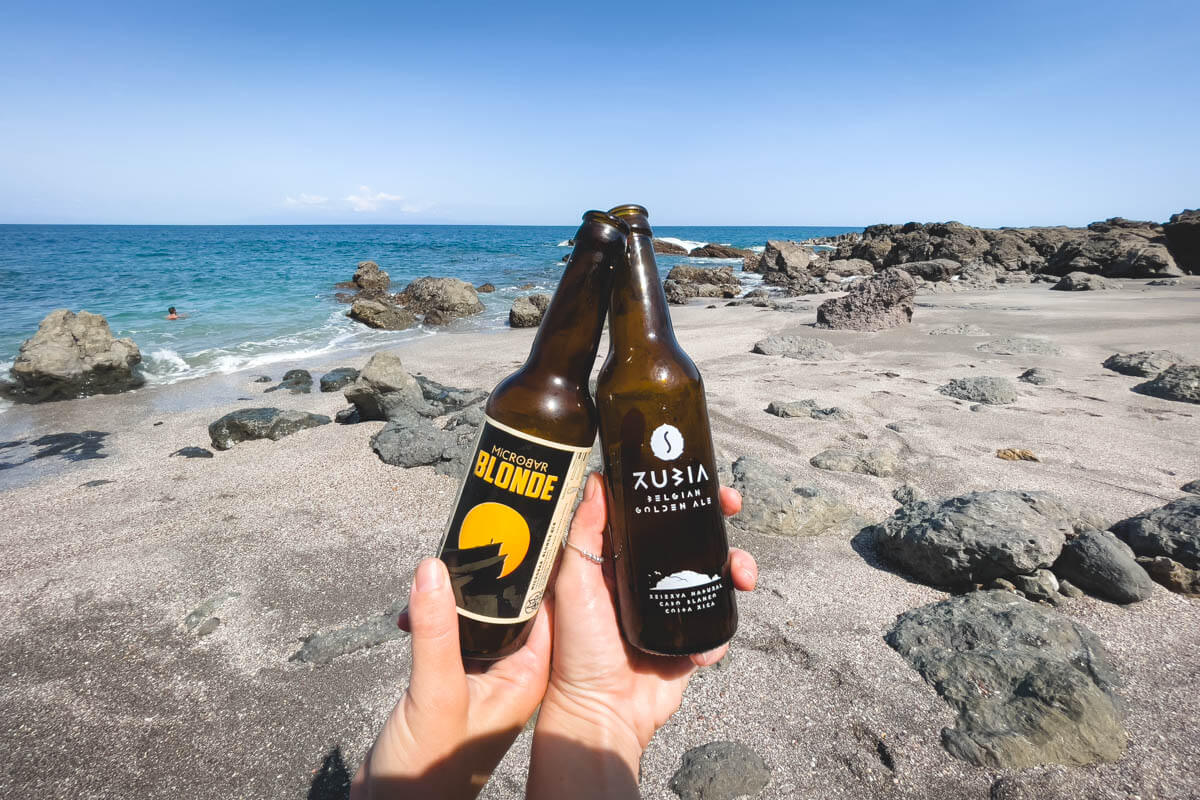
But if you want an estimate on what type of budget you’ll need, mine could be a good middle ground.
Lodging – $1270 Food and drink – $830 Activities – $500 Transportation – $400 Groceries – $70
I spent about $3,000 for one whole month in Costa Rica. (not including my flight).
I was NOT staying in dorms (only private rooms), took some tours (could have done more), didn’t rent a car, and didn’t hold back on going to some of the restaurants that cost a bit more, either. There was no way I could live on rice and beans for a whole month!

It’s also important to note that I took a bunch of shuttles too. You can cut back on costs and only take local buses, but it really eats into your day, and they could be better. I also rented a surfboard a few times, but I didn’t really drink aside from a few beers here and there.
You’ll want to budget for some of the fun activities around Costa Rica; otherwise, you won’t get to see much. Don’t forget all the national parks have an entrance fee, and that cost was factored into the activities category.
- Order Casados – This is one of the cheapest meals to eat in Costa Rica. You might get tired of it, but it hits all the marks. A protein, rice, beans, and usually a salad and maybe some plantains.
- Bakery stuff – I went to the little panaderias and grabbed a couple of items like a pastry with fruit or something, and these were great for breakfast, especially early mornings! Easy and cheap.
- Buses – As I mentioned, these will be the cheapest way to get around, but it will eat at your time, so if you have time to spare, then this is the way to go, as shuttles are a bit pricey.
- Accommodation with a kitchen – Eating out isn’t the cheapest and it’s not even anything that great (sorry, Costa Rica! Love you!) So get accommodation with a kitchen to cook a few times.
- Worldpackers – Do a work exchange and get free accommodation and sometimes food and tours!
You can find some pretty decent accommodation around Costa Rica! I’d say Santa Teresa was the priciest for what you got, and San Jose was the best bang for a decent price. But… it’s San Jose.
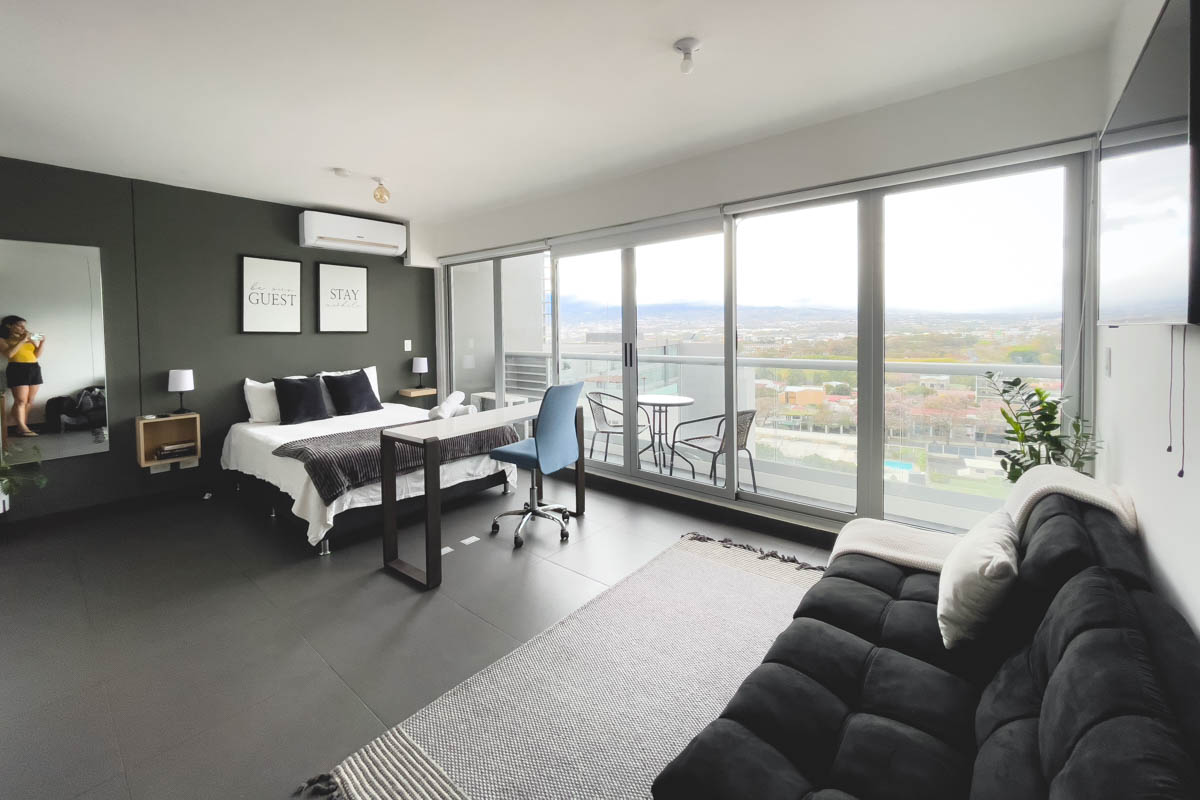
Backpacker hostels in Costa Rica were always really nice and friendly from what I saw, but I also don’t do dorms and always got a private room. These were my favorite, as it was nice to meet people and find out about cool stuff going on without having to hear someone snore all day!
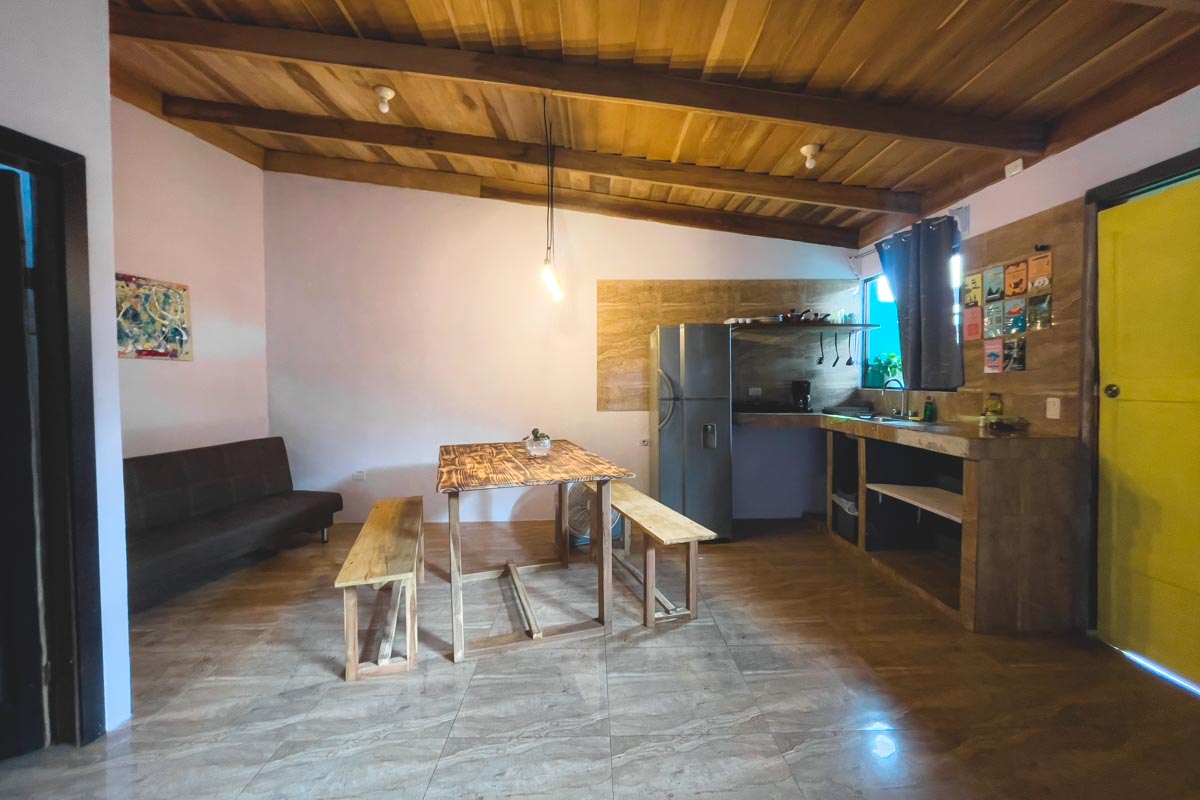
So where to stay in Costa Rica? It’s up to you! Here are some of the highest rated spots around the country:
Check Price :
Costa Rica is a relatively safe destination for tourists, but it is still important to exercise caution and be aware of common scams. The country has a relatively low crime rate, and violent crime against tourists is rare.

However, petty crimes such as pickpocketing and theft can occur, particularly in tourist areas and crowded places. You should be vigilant and take precautions to protect your belongings, such as keeping valuables out of sight and in a anti-theft bag and not carrying large amounts of cash.
Using your common sense is mostly all you will need during your visit. Being that I was a solo female traveler during my time here—I think Costa Rica is one of the safest countries I’ve ever solo traveled!
I didn’t get hollered at, nobody tried engaging in any uncomfortable conversation with me, and overall my feeling was that I could be me here! I wore what I wanted and explored at my leisure while just keeping my wits about me with a normal level of precaution that I would use anywhere.
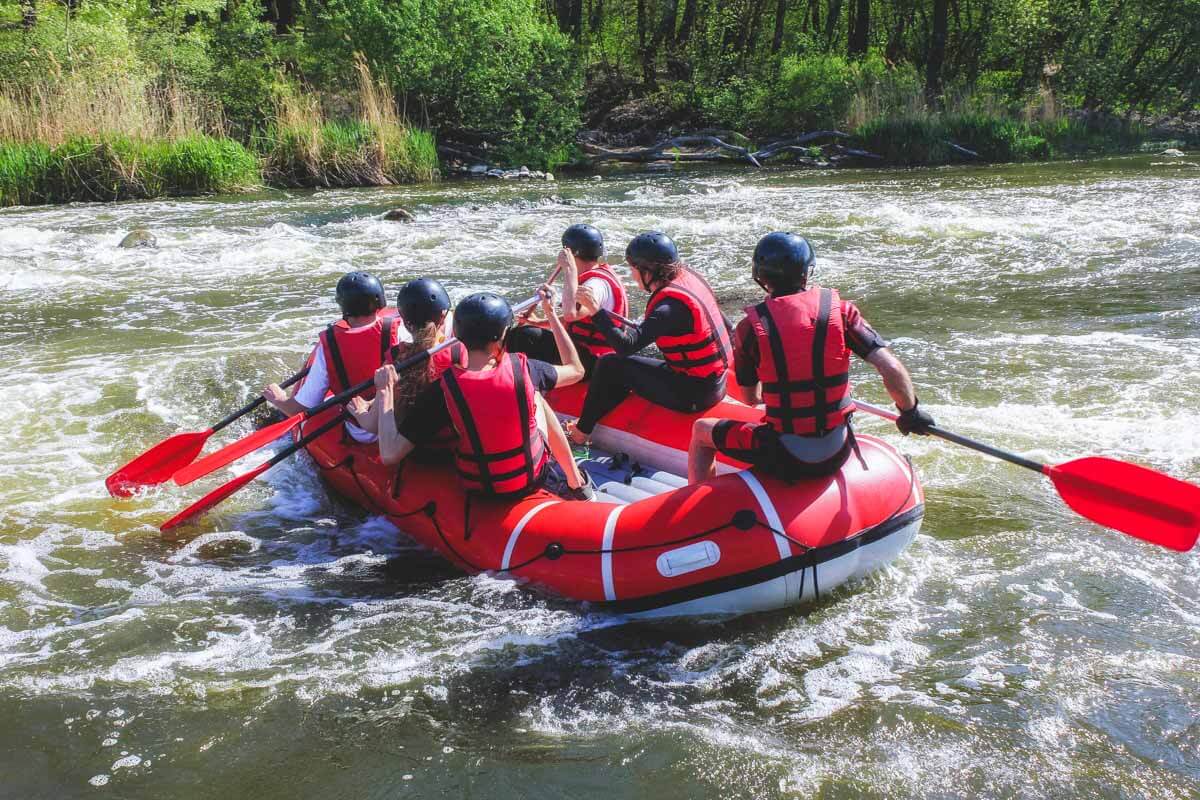
I’m not one to go out at night either or heavily drink, but I felt just fine the few times I had a few beers or found myself walking home after dark.
- Lightweight, quick-drying clothing: With Costa Rica’s tropical climate, lightweight and breathable clothing is a must. Quick-drying fabrics and flowy items for ventilation!
- Hiking shoes and sturdy sandals: With the country’s many national parks and outdoor activities, a good pair of shoes is good call. You’ll need a pair of hiking shoes and a pair of sturdy sandals that can handle uneven terrain and keep you comfortable walking around town.
- Sunscreen: You’ll definitely need this here. The sun is strong, and it’s pretty expensive to buy once you’re here. Reef-safe is best !
- Insect repellent: While not all areas of Costa Rica are heavily populated with mosquitoes and other insects, it’s always a good idea to be prepared. Insect repellent can help protect against bug bites and the diseases they may carry. I needed it along the coast a few times.
- Water bottle: Staying hydrated is important in Costa Rica’s hot, humid climate. Bring a reusable water bottle to fill up at the many drinking fountains and refilling stations found throughout the country. Most of the water in Costa Rica is potable!
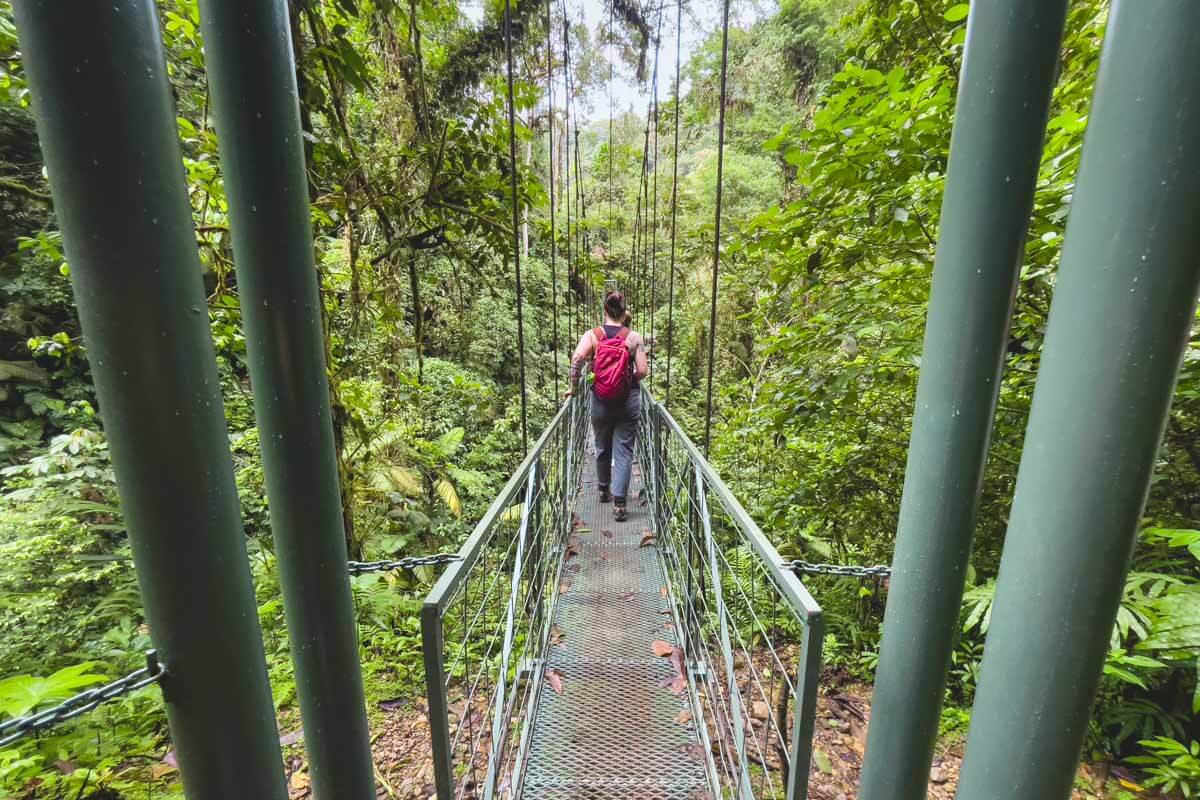
- Rain jacket and something warm: Even during Costa Rica’s dry season, rain can still occur. A lightweight rain jacket can come in handy for staying dry during a sudden downpour. The shuttle can be cold, and it gets chilly at night in Monteverde and La Fortuna.
- Hat and sunglasses: Protect your face and eyes from the sun’s harsh rays by bringing a wide-brimmed hat and sunglasses, you’ll need them when wandering around the parks.
- Binoculars: Costa Rica is home to a diverse range of wildlife, so bring binoculars to get a closer look. If you take some tours, the guide will have one for you to borrow (or a telescope to use). If you don’t plan on doing tours, I highly recommend you bring one yourself to try and spot some of the animals or…
- Camera: If you’re not bringing binoculars, make sure your camera can accommodate a zoom lens (I brought a 70-200 with the ability to crop in further) so it could act as my camera and my “binoculars!” You may also want a GoPro for activities like snorkeling, kayaking, and waterfall chasing.
- Anti-theft backpack: Keep your belongings safe and secure with an anti-theft backpack that features slash-proof fabric and locking zippers. I never travel without mine!
- Swimsuit: Don’t forget to pack a swimsuit to enjoy Costa Rica’s beautiful beaches, hot springs, and waterfalls! And bring a few, sometimes, they don’t dry overnight, and nobody wants to put on a soggy swimsuit.
TRAVEL TIP:
You NEED Travel Insurance!
Travel insurance can save your @$$ abroad, and it doesn’t have to be expensive!
Safety Wing is what I use because it’s affordable, perfect for long or short-term travelers, and covers the important stuff.
→ VISIT SAFETY WING → READ MY REVIEW
- Plan your itinerary around the weather: Costa Rica has two seasons – the dry season (December to April) and the rainy season (May to November). While the dry season is more popular with tourists, the rainy season can be a great time to visit if you don’t mind a little rain. The rainforests are at their greenest during this time, with fewer crowds. Of course, it’s the season to save some cash too!
- Learn some basic Spanish: While many Costa Ricans speak English, it’s always a good idea to learn some basic Spanish before you go. This will help you communicate with locals and navigate your way around the country. Some useful phrases to learn include “hola” (hello), “por favor” (please), “gracias” (thank you), and “¿dónde está?” (where is…?).
- Save some extra cash: Costa Rica is NOT cheap by any means. You should pad your wallet with a few extra bucks before heading over.
- Pack for all types of weather: Even during the dry season, you should be prepared for rain. Bring a lightweight rain jacket, quick-drying clothes, and comfortable shoes for hiking and exploring. If you plan on visiting higher elevations, such as Monteverde, bring layers, as it can get chilly.
- It takes a while to get around: I know Costa Rica isn’t the biggest country, but it does take some time to get around, and some roads are windy and filled with potholes making the driving distance even longer.
- Don’t be afraid to try new things: Costa Rica is a great place to step outside of your comfort zone and try new things. Whether it’s ziplining through the rainforest or practicing your Spanish with locals, be open to new experiences and embrace the Pura Vida lifestyle!
- Drink the water: Tap water in most cases, is safe to drink in Costa Rica!
- USD and Colones: The local currency is Colones, but a lot of places also accept USD.
- Cash or Card: You’d think more places would take cards here, but sadly, it wasn’t the case! I like using my card as much as possible, especially for bigger items like accommodation, but at least half of my hotels needed me to pay in cash. Some restaurants only accept cash as well. Read more on the best travel cards and how to bank abroad.
- Be respectful of the environment: Costa Rica is known for its commitment to sustainability and preserving its natural resources. When you visit, be mindful of your impact on the environment. Avoid single-use plastics, stay on designated hiking trails, and support eco-friendly businesses.
- Get a guide: You might want to save a few bucks and not hire a guide but let me tell you—if you want to see animals, it might be a good idea to do so! Especially if you’re trying to spot a cute sloth, they are elusive! Hire a guide at least once.
- Support local businesses: Costa Rica has a thriving tourism industry, but it’s important to remember that many locals rely on tourism to make a living. When you visit, try to support local businesses as much as possible. This can include staying in locally-owned hotels, eating at family-owned restaurants, and purchasing souvenirs from local artisans!
- Pura Vida!: Embrace the Pura Vida lifestyle, respect everyone, and have an amazing time!
Well, I freakin loved it, obviously! There are such good vibes in Costa Rica. Despite it being one of the top tourist countries in the Americas, I didn’t feel unwanted or unwelcomed for being a tourist. Everyone was SO sweet, almost every single interaction I had with Ticos (Costa Ricans) was positive.
As a solo female traveler, this is definitely one of the safest countries I’ve ever been to. I couldn’t believe I didn’t get hollered at either, which is very typical for Latin America.
The general feeling is just happy and chill here, I’m not sure how else to describe it. Everyone is in on the Pura Vida lifestyle, and it is truly something that you can feel and pick up on here!
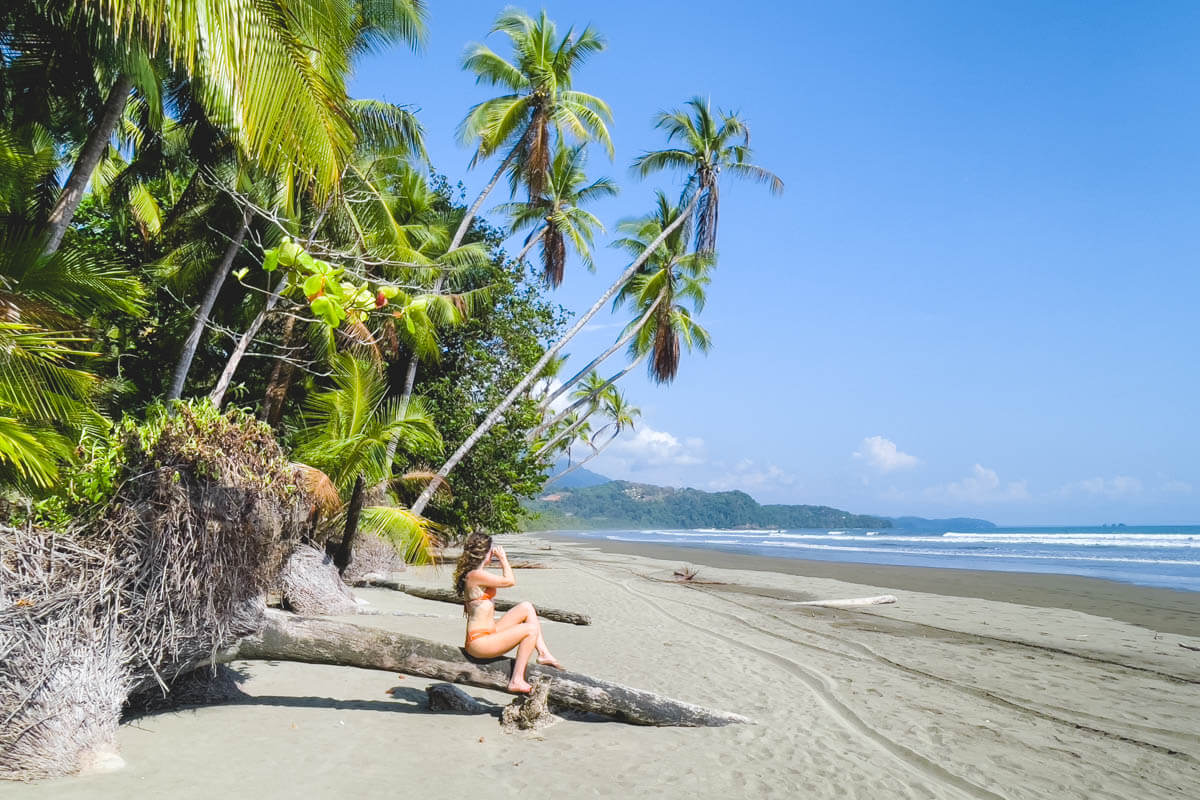
Something that isn’t super great about the country is that everything costs money to get into, even nature. Almost every single “attraction” costs money, and sometimes it’s kinda steep! HOWEVER… everything was also well-maintain, clean and beautiful! So at least you see the money is at work here.
Speaking of clean, this might be one of the cleanest countries, especially for Latin America, that I’ve been to. It’s not to say they are perfect, but I was pretty impressed, especially compared to the neighbors, Southeast Asia, and shoot, and even some places in the USA!
The food leaves something to be desired, and the overall cost of the country is a bit steeper than some other spots, but otherwise, Costa Rica is WORTH IT in my book.
I hope my guide to backpacking Costa Rica was helpful in planning your trip! Enjoy!
More Around Costa Rica
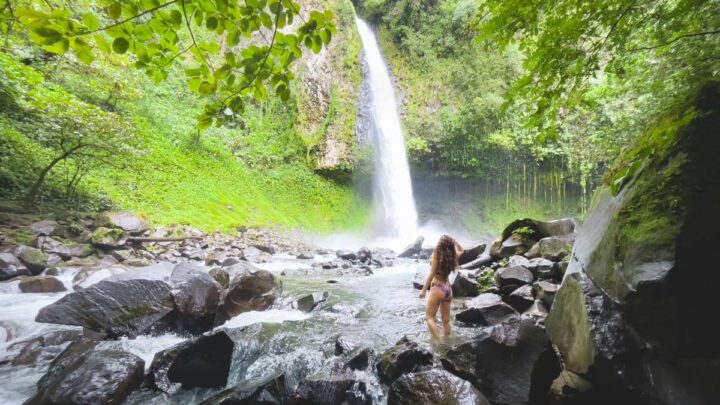
TAKE THE SHORTCUT
Want to know how to live abroad without being rich.
Get my shortcut! It's THE ONLY guide you'll need on how to sustain a life abroad—NO BS!
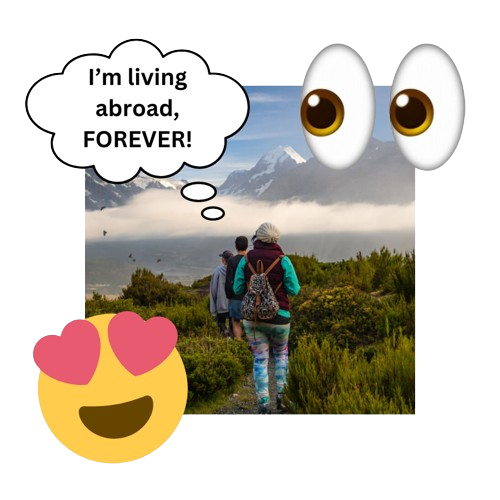
Nina Ragusa is an adventurer, messy bun master, breakfast fan, and full-time travel blogger. She's been abroad since 2011 and blogging on Where in the World is Nina? for nearly as long. Nina helps people like you move around the world while making money. She loves talking about how to work abroad and online to travel longer! Read more about Nina
Leave a Reply Cancel reply
Your email address will not be published. Required fields are marked *

Backpacking Costa Rica – A First-Timers Guide
Disclaimer: This article may contain affiliate links. Clicking on them may earn Costa Rica Vibes a commission, at no extra cost to you. Thank you for your support!
Ah, Costa Rica! The land of amazing rainforests, beautiful beaches, cool wildlife, and a bad reputation of being too expensive for backpackers.
Because of its expensive and touristy reputation a lot of people tend to skip backpacking in Costa Rica and head straight to it’s more affordable neighbors, Panama and Nicaragua.
Seriously, it’s insane the number of awesome people we have met while in Panama or Nicaragua that are backpacking through Central America and plan on taking the bus straight through Costa Rica because it’s too expensive for them.
This always breaks my Costa Rica loving heart, but I completely understand. The country is 100% is more expensive than its neighbors. However, it is still possible to travel without completely breaking the bank.
And, I’m of course biased, but Costa Rica is way more fun than its neighbors. So, I definitely think you should visit!
We created this guide to backpacking Costa Rica to give you the best info on how to travel the country as a backpacker.
Let’s start with the border crossings….
Border Crossings While Backpacking Costa Rica
Anyone else get serious anxiety when it comes to border crossings? I always have mini panic attacks and it (almost) always turns out just fine!
If you are starting your travels in Costa Rica you can fly into either the Liberia or San Jose airport.
The Liberia airport is only about an hour from the Nicaragua border. This could be a great option if you want a quick visit to some nice Costa Rican beaches and then plan on heading north.
The San Jose airport is much more centrally located.
We have a complete guide to both airports if you need some help deciding.
Keep in mind, when you enter Costa Rica you will need to show the border control officer proof that you plan to leave Costa Rica within 90 days. There are two ways of going about this.
- Show flight proof back to your home country (can be from another Central American airport) within 90 days of your entry.
- Show proof of an onward bus ticket. This is the cheapest way. I suggest Tica Bus because their tickets aren’t crazy expensive, you can book online, and you need to enter your passport so it shows that you are actually the person on the ticket.
We have a complete guide of Costa Rica entry requirements which gets more in detail into all of this.
Costa Rica/ Panama Border
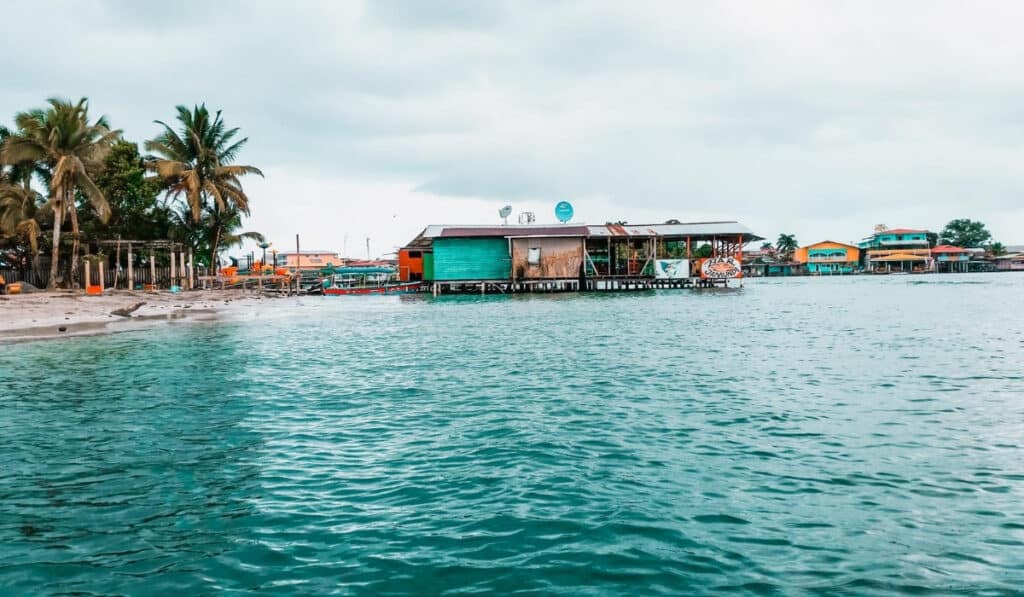
Heading from Panama into Costa Rica is pretty easy, but it can occasionally get very backed up.
There is no fee for entering the Costa Rica (you pay about $8 per person when leaving) but you will have to show proof that you are leaving Costa Rica within 90 days.
As with entering Costa Rica by air, you can show proof with either a bus or plane ticket.
The best way to cross to and from Panama is by bus. There is a public bus that runs back and forth from San Jose to the border (Sixaola is the town name) several times a day. It costs about $12 for a one-way ticket.
Note: We have a complete guide to the Costa Rica/ Panama border crossing including info on how to go to or from Bocas del Toro, Panama .
Costa Rica/ Nicaragua Border
If you are crossing from Nicaragua into Costa Rica you will need to go through the same process as it would be to enter from Panama. Make sure you have proof that you are leaving within 90 days.
We have a guide to the Costa Rica/ Nicaragua border crossing which will help you more with this process
Popular Towns for Backpackers
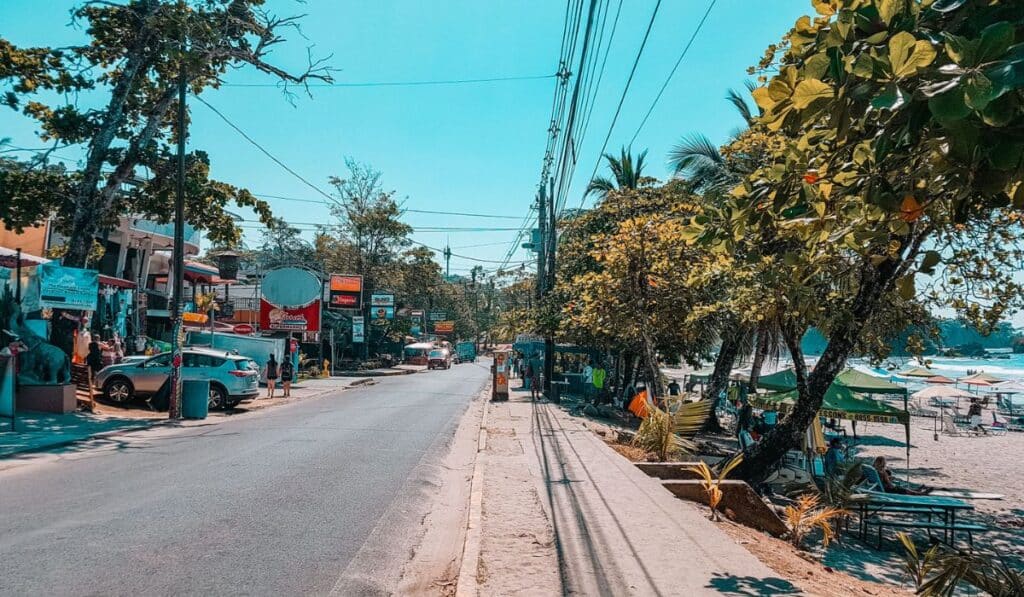
While backpacking through Costa Rica you will likely head to the places which are most easily accessible by public buses.
The most popular places to visit for backpackers seem to be Monteverde, La Fortuna, Jaco, Santa Teresa, and Puerto Viejo .
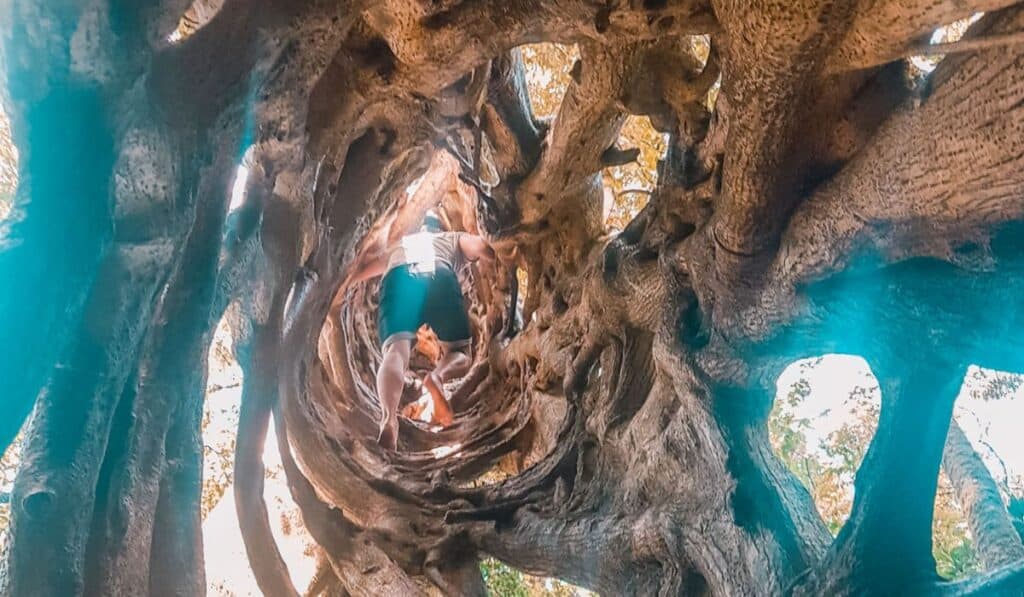
A small mountainous town in the cloud forest. It is always colder here than the rest of the country and you can almost guarantee that it will be raining. This is a great place for zip lining, repelling, hiking, and seeing wildlife.
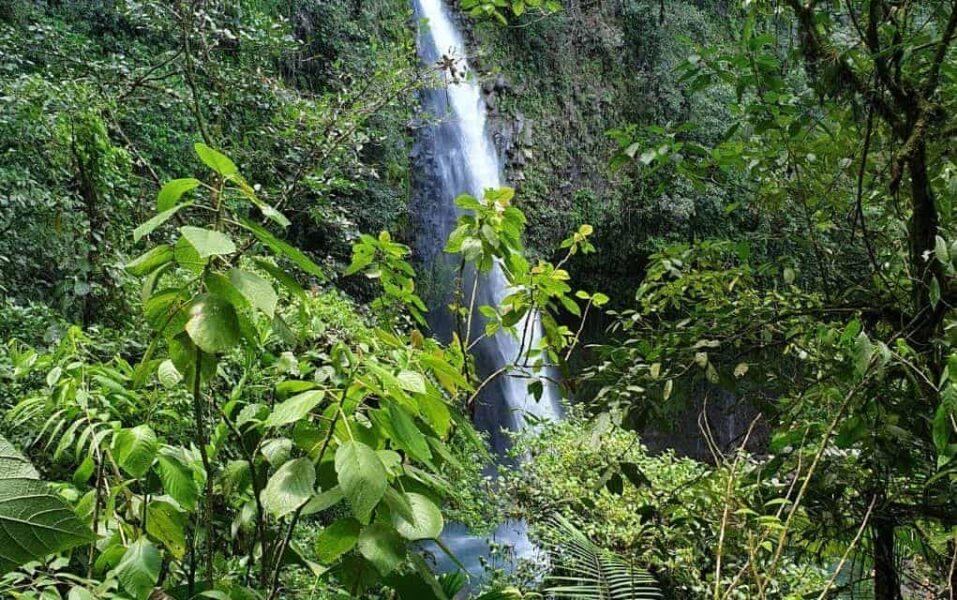
Home to the beautiful Arenal Volcano, this jungle destination is made for adventure. Here you can take a canopy tour, go rafting, hike the hanging bridges, swim under a waterfall, relax in a hot spring, and more!
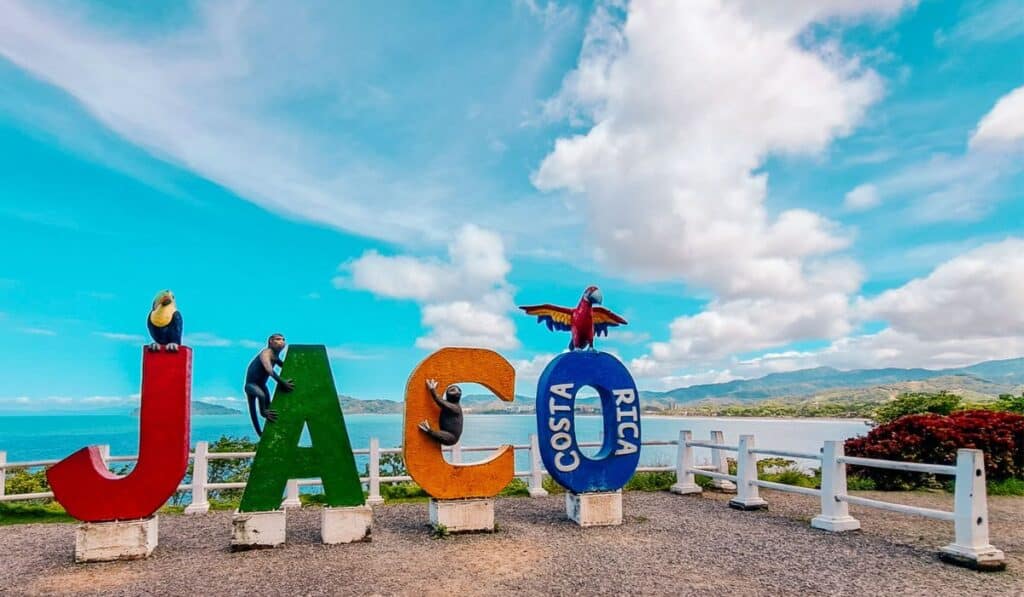
A popular beach town located only 1.5 hours from San Jose. This town is known for its nightlife scene and white sand beaches.
Santa Teresa
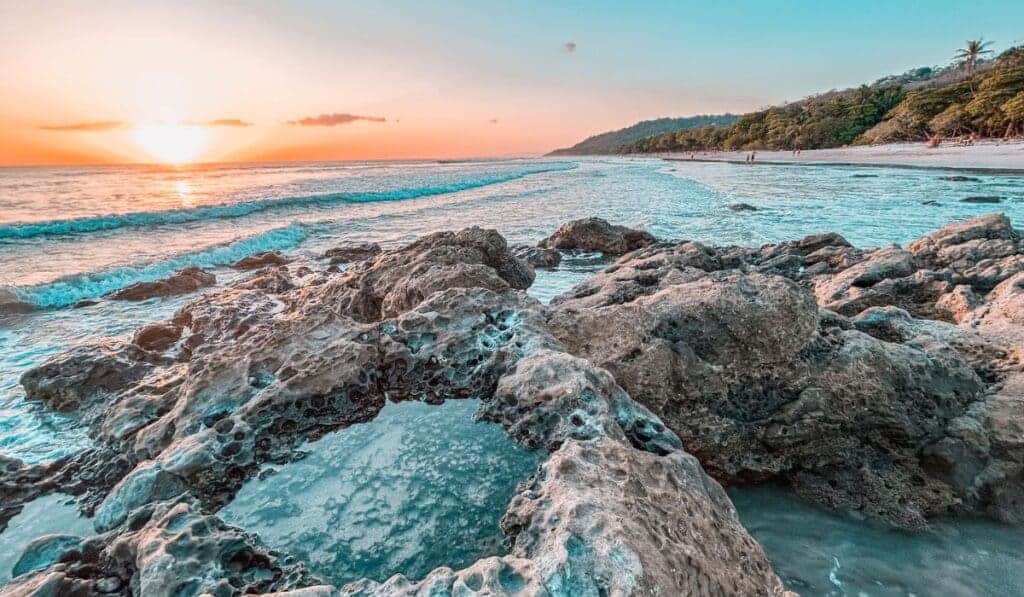
A relaxed surfing town that is only accessible by dirt roads. We love this town so much and highly recommend it.
Puerto Viejo
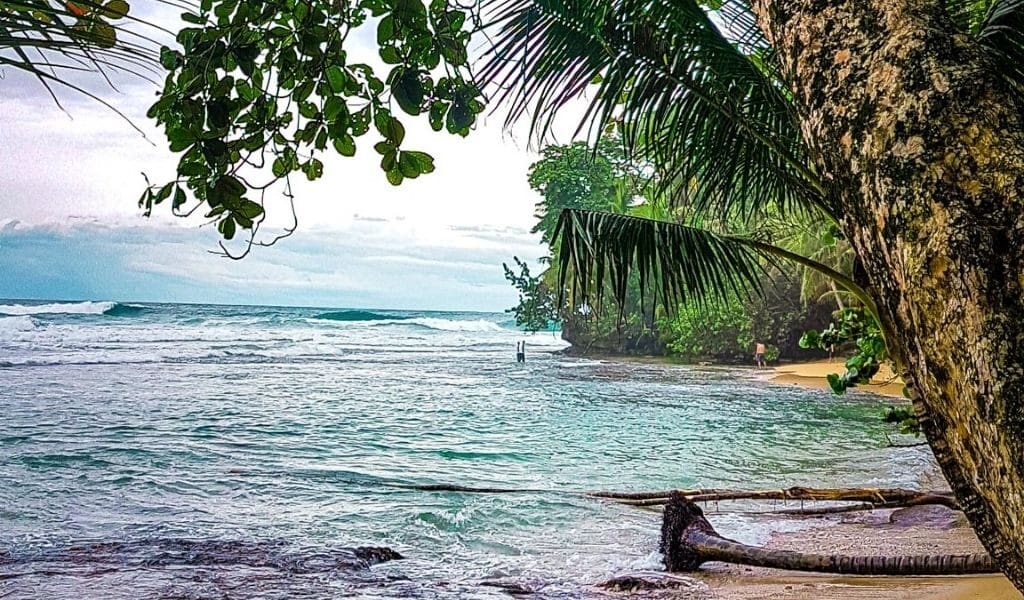
The last big town on the Caribbean coast of Costa Rica before the Panama border. This town is popular with surfers and people looking to enjoy some nightlife.
Although these are the places that have the most backpacker-ish vibe, that doesn’t mean you need to limit yourself to these places.
Transportation In Costa Rica
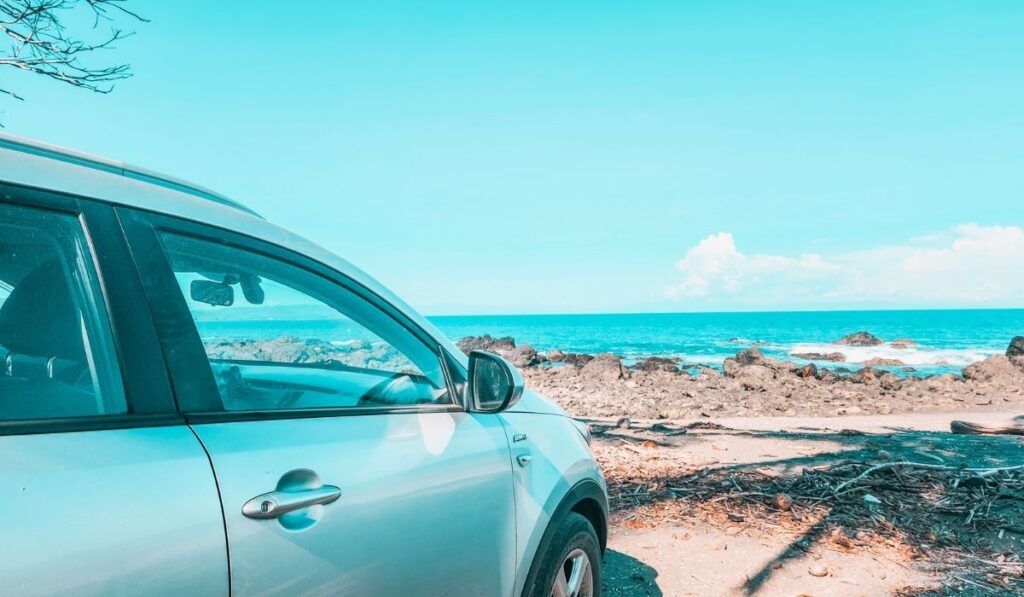
Typically we suggest that people rent a car while traveling in Costa Rica because it is definitely the easiest way to get around. However, car rentals aren’t exactly budget friendly.

Adobe Rent-a-Car
- 10% discount for Costa Rica Vibes readers
- Free second driver
- 0% deductible on Liability Protection Insurance
- Excellent customer service
- New fleet of well-maintained vehicles
The most affordable way to get around inside of the country is by public bus. The bus schedule is ridiculously confusing and comprehensive.
If you have bus-related questions, I suggest joining the Costa Rica by Bus Facebook group .
Keep in mind that some places are just complicated to get to. Everything seems to originate in San Jose but traveling between other locations can sometimes be a complex journey with multiple stops.
Also, we have seen people hitchhiking in Costa Rica, but I wouldn’t suggest it.
We often drive tourists if we see them looking to get back into the town they are staying in after visiting a nearby national park or something. However, with longer treks, I would be hesitant.
Suggested Costa Rica Itineraries for Backpackers
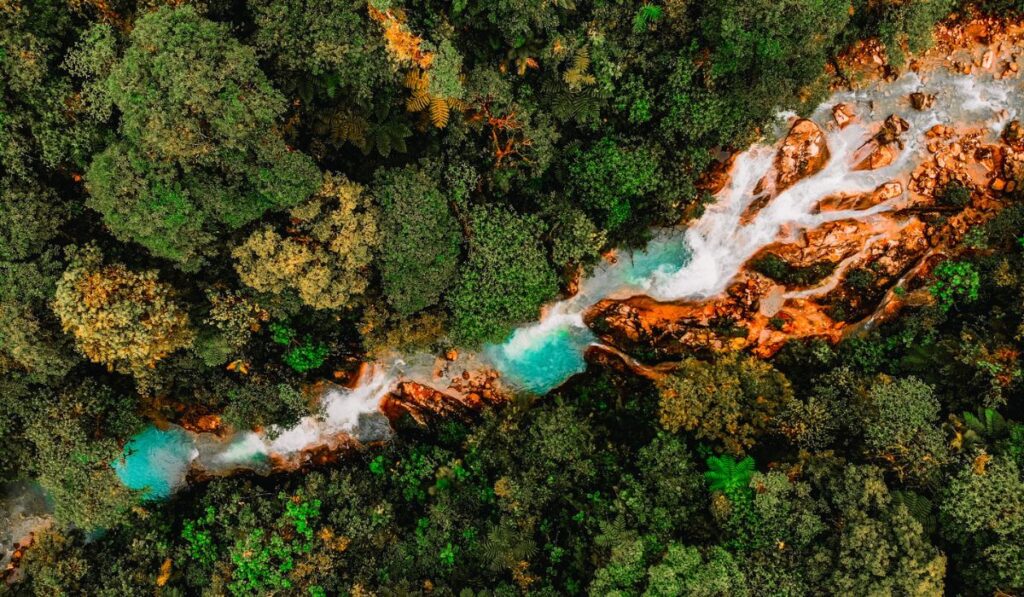
I created a few itinerary suggestions for you. Three are for those of you that only plan on visiting Costa Rica. The other itinerary is for those of you passing through Costa Rica while traveling between Panama and Nicaragua.
These itineraries were created with ease of traveling by public bus in mind.
Itinerary for Just Costa Rica
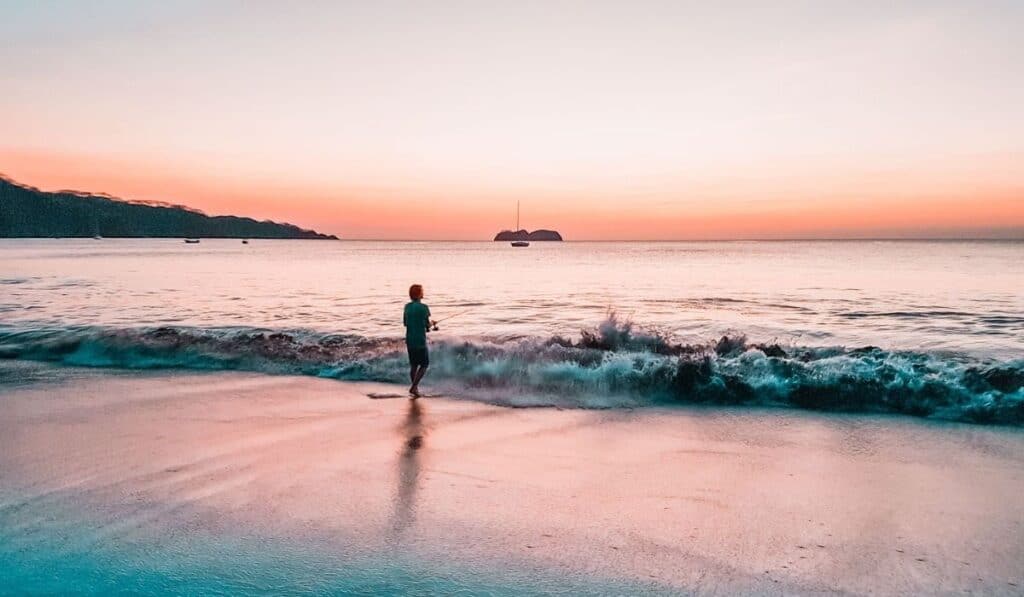
San Jose -> Jaco -> Manuel Antonio -> Uvita -> Puerto Jimenez -> San Jose
You could also easily add a stop in Dominical or Playa Hermosa to this route. With this route you can visit Manuel Antonio National Park in Manuel Antonio and the Corcovado National Park while in Puerto Jimenez.
San Jose -> Cahuita -> Puerto Viejo -> Bocas del Toro, Panama -> San Jose
This route will require you to cross the border into Panama if you want to go to Bocas del Toro. But, it is an amazing place to visit. I definitely recommend it!
San Jose -> La Fortuna -> Monteverde -> Santa Teresa (involves stopping in Puntarenas) -> Montezuma -> San Jose
La Fortuna and Monteverde are not far apart when you look at a map, but the bus route is rough. Plus, this is the one road I always get really car sick on. You probably don’t want to do this trip in the public bus.
I suggest taking a shared private shuttle for about $25.
Itinerary for Costa Rica While Backpacking Central America
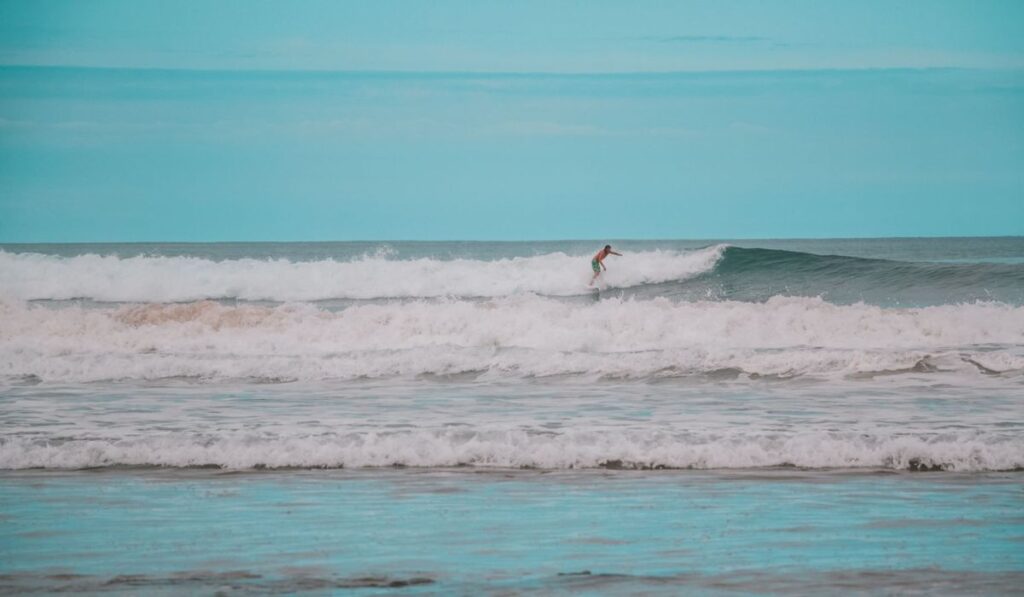
I wrote this with the mindset that you would be starting on te Caribbean coast of Panama and heading to Pacific coast of Nicaragua, but just reverse course if going the other way.
Bocas del Toro, Panama -> Puerto Viejo -> San Jose -> Uvita -> Manuel Antonio -> Jaco -> Santa Teresa (involves a stop at Puntarenas) -> San Juan del Sur, Nicaragua
With this route you can easily cut out Uvita, Manuel Antonio, or Jaco. The one downside of this route is that it does not involve visiting and mountainous jungle destinations such as La Fortuna or Monteverde.
However, this route is easily done by bus without tons of crazy stops and waiting.
Don’t forget to check out Centro Casting to figure out your exact bus schedule.
How to Find Affordable Accommodations
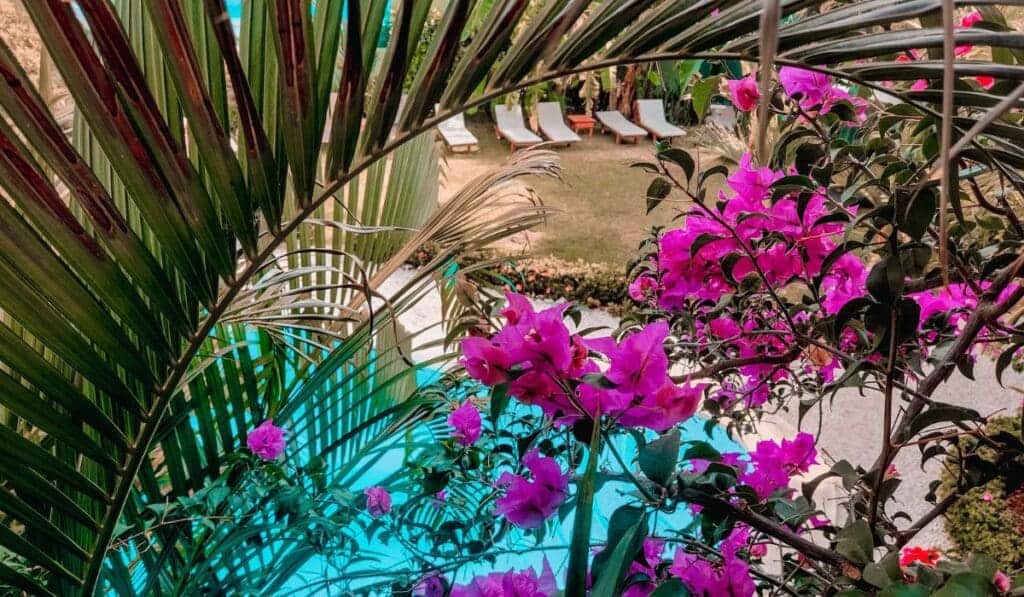
Your best bet for finding cheap accommodations are hostels or VRBO .
Most hostels in Costa Rica are decent. Some include breakfast and most have a shared kitchen on site that guests can use.
We also sometimes find really good deals through Airbnb. We like Airbnb for unique accommodations that often have a private kitchen.
If you are interested in socializing with other backpackers and finding tons of fun activities to do, I suggest hostels.
If you would like a more private experience, Airbnb is probably a better choice.
Just keep in mind that most hostels are located in the center of town which makes them easy to access after arriving by bus. Sometimes Airbnb’s tend to be a bit out of the downtown area.
Affordable Activities in Costa Rica
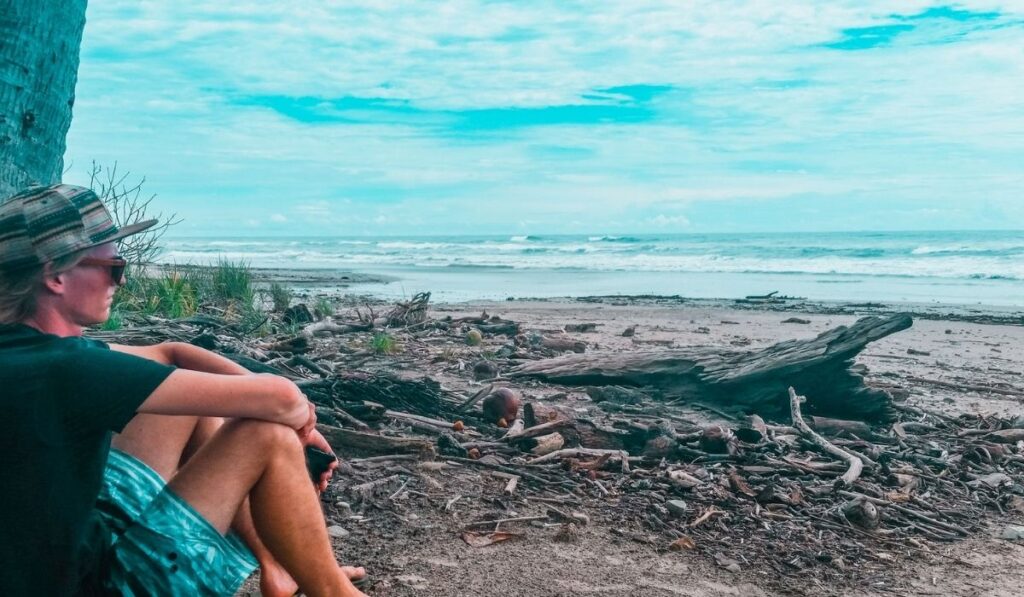
We created a post of 20 fun free activities in Costa Rica which will help you find all the great free things to do.
One of the best things to do for free in Costa Rica is to enjoy the beaches. All beaches in Costa Rica must have public access by law. This means that all beaches are free and accessible for you to visit.
Packing Suggestions
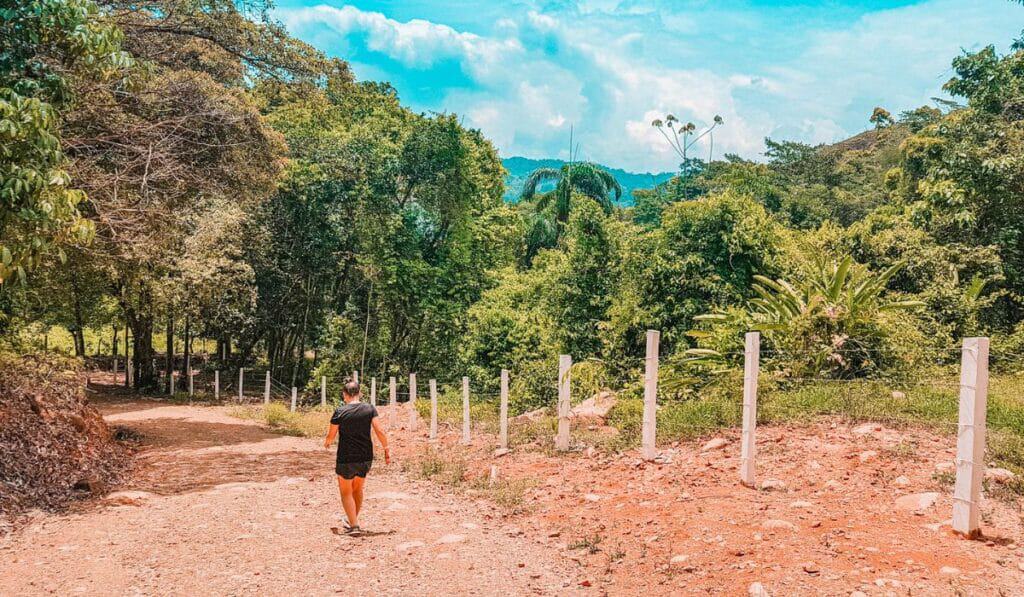
We have a complete packing list for women and men . We also have Amazon packing lists for every single destination which will definitely help you out.
The number one piece of advice I have for you as a backpacker is that it is so humid here (and in the rest of Central America) that everything in your backpack will be wet all the time.
Bring things that are fast drying to help some of that. Also, make sure to keep your plastic bags when at the grocery store. They are very helpful for storing wet clothes when you need to take them to your next destination.
There are laundromats throughout the country in all major towns if you need to clean your clothes. Also, some hostels provide a washer for guests to use.
Our Backpacking Costa Rica Tips
-Stay at a place with a kitchen so you can cook your own meals.
-Eat at the small local restaurants called sodas. Here you can get the dish of the day (called a casado). This usually consists of a meat, rice, beans, salad, and sometimes plantains. It’s delicious!
Usually you can eat a casado for about $5.
-Buy alcohol in Panama or Nicaragua and bring it in with you. You are allowed to carry in up to 5 liters.
-Visit the local farmer’s markets (ask at your hostel when one is) for cheap produce.
-Skip the day tours if they seem pricey and visit places on your own.
-Skip the guides at national parks .
-Travel during the rainy season (May to November). Everything is cheaper during this time of the year and typically the rain isn’t bad. You will likely have an afternoon rain storm for an hour or two and then everything will clear up.
-Don’t book tours ahead of time. Most hostels partner with local companies and can get you a better rate.
-Ask at your hostel or VRBO what the employees favorite local activities are. They can give you a more local experience which is almost always cheaper.
Need any more tips for backpacking through Costa Rica or want to share your own experience? We’d love to hear from you in the comment section below! We are happy to help you out!
You Might Also Like:
Costa Rica Digital Nomad Visa: Plan Your Move
Costa rica hostels – read this before booking a place, solo travel in costa rica – what to expect, is costa rica expensive what to budget for vacation costs, how to eat on a budget in costa rica.
Costa Rica Travel Details : What You Need to Know
🚗 Should I rent a car in Costa Rica?
Having a rental car will give you the most flexibility when traveling in Costa Rica. This will also allow you to take fun day trips on your own.
- Save 10% Plus Other Perks with Our Adobe Rental Car Discount
- You might also consider; shared shuttle services or private transfer services
🏄🏽 How can I book things to do?
We find that Viator tends to have the most comprehensive selection of activities with secure booking and good cancellation policies.
🍍 I’m overwhelmed with planning. Can you help?
Of course! I suggest joining our Facebook group for specific questions and head to our Start Here Page to get started planning.
✈️ What is the best way to book a flight?
Usually, we have the best luck finding great prices with Skyscanner . Check for flights to both San Jose Airport (SJO) and Liberia Airport (LIR).
🛏️ What is the best way to book my Costa Rica hotels?
We highly suggest Booking.com for hotel bookings and typically use VRBO for Costa Rica vacation rentals.
🗣️ What is the main language in Costa Rica?
The main language in Costa Rica is Spanish. Most people working in tourism speak at least some English.
💰 What is the currency in Costa Rica?
The currency used in Costa Rica is the Costa Rican colón (CRC). However, the US dollar is widely accepted in most tourist areas
📞 What is the best way to stay connected?
An eSIM from Airalo is the easiest way to get 4G data while traveling in Costa Rica.
🌴 Is Costa Rica safe?
Generally, Costa Rica is considered safe for tourists. However, like any travel destination, it’s best to use caution and be aware of your surroundings.
🛂 Do you need a passport to go to Costa Rica?
Yes, Costa Rica is its own country. You will need a passport to visit.

Hi! We’re Thomas (the German) and Sarah (the US-er)
We met in Virginia, moved to Germany, and since 2016 we have lived in sunny Costa Rica. It was a spontaneous decision to move here, but it was the best decision! Now we spend our days roaming the country to bring you the very best in Costa Rica travel here on Costa Rica Vibes. Sarah is the writer. Thomas is the one keeping it all together. Want the whole crazy story?

Sarah McArthur
Sarah McArthur is the co-founder and main writer of Costa Rica Vibes. She is originally from the United States but has lived in sunny San Jose, Costa Rica since 2016. She has traveled all over the country and now considers herself a self-proclaimed Costa Rica travel expert. Want the whole crazy story?
Leave a Reply Cancel reply
Your email address will not be published. Required fields are marked *
Hi! I was wondering if you suggest traveling with a backpacking backpack, or would a suitcase be ok for about 5 weeks in Costa Rica traveling via public transportation? Thank you so much!
Hi Emily, If possible a backpack would definitely be easier. From the public bus, you will probably have to do some walking to wherever you are staying and the roads/ sidewalks are not always the best. In other words, trying to wheel a suitcase can be a total pain. Let me know if you have any other questions!
I want to visit Costa Rica so much! I was assigned to write on the country this summer and it really opened my eyes to the natural beauty there… and it’s been on my wanderlust list ever since!!! Hopefully in the next few years…? Thanks for sharing.

Backpacking Costa Rica Itinerary
Welcome to our backpacking Costa Rica itinerary.
Costa Rica is a paradise and it’s a popular destination among nature lovers because it’s bursting with jungles, mountainous landscapes, picturesque beaches, volcanoes, and incredible wildlife .
There are so many things to do and so many places to visit, you are guaranteed to have a memorable trip.
What's in this guide?
Costa Rica Itinerary
In this backpacking itinerary, we will help you narrow down your options and make the most out of your time in Costa Rica.
Why visit Costa Rica?
One of the most developed countries in Latin America, Costa Rica is a paradise for wildlife lovers and sunset chasers alike.
As well as being one of the safest countries in the Central America region, this popular hotspot is also full of incredible scenery which ranges from fiery volcanoes and palm-fringed coasts to dense, lush jungle.
Is Costa Rica Safe?
Yes, it’s safe to visit Costa Rica . Of course, just like any other country, there are some precautions you need to take to make sure your trip is problem-free.
Our basic tips for safety in Costa Rica include:
- Be aware of your surroundings whenever you’re out and about.
- Always use authorized taxis.
- Don’t be flashy. Dress to blend in, leave couture and jewelry at home.
- Don’t flaunt your electronics and only bring the things you need.
- Never leave your things unattended in public spaces.
Central American countries are known for their struggles with crime and their many issues, but they can be a lot better and safer than you imagined.
If you are arriving in Costa Rica right after backpacking Nicaragua you’ll likely feel a little more open when it comes to safety, however, the key here is to keep your guard up at all times. Especially whilst in the capital of San Jose.
Safety facts about Costa Rica
- The best way to evaluate safety is by looking at the 2020 Global Peace Index. This measures the state of peace of each country in comparison with the rest of the World, by evaluating both tangible and qualitative indicators.
- Costa Rica ranked as 32nd out of the 163 nations measured, which is similar to that of Italy and Poland. For comparison, The United States ranked as 121st.
- As a whole, Costa Rica is one of the safest countries to backpack in Central America. However, car-jackings and theft are quite typical and especially in San José, so be extra aware when staying and travelling through the capital.
The good news is that traveling solo in Costa Rica is common, and in places such as Puerto Viejo you have a sense of community when it comes to safety.
Costa Rica Backpacking Itinerary
There are so many amazing places to visit in Costa Rica and today we are focusing on the top 6 spots you simply can’t miss.
Poás Volcano National Park
The Poás Volcano National Park is a beautiful place where you will be able to see an active volcano that’s located among thousands of acres of parkland.
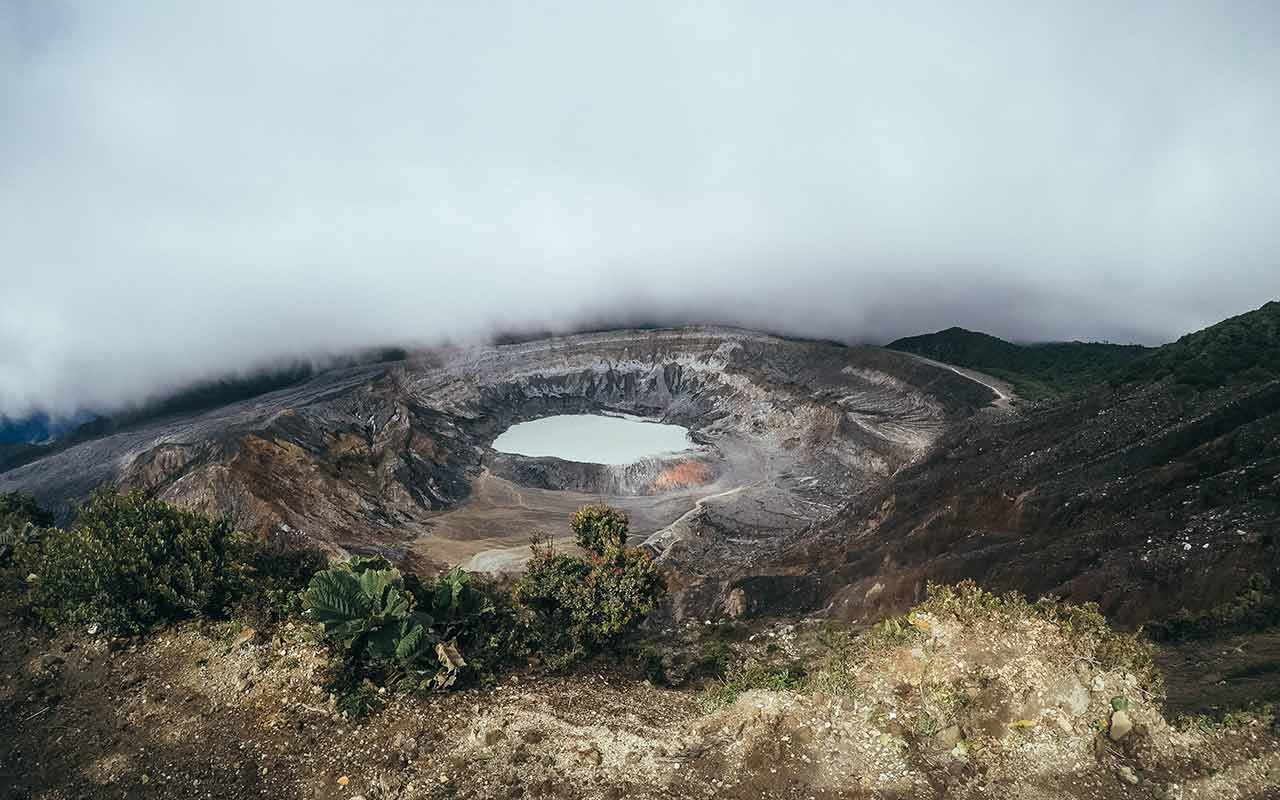
There are also many viewpoints that allow you to take in all the vegetation and the beauty of the volcano as well.
Poás Volcano is near other tourist spots in San José so make your visit worthwhile by taking a guided tour and exploring nearby spots such as the La Paz Waterfall Garden.
Puerto Viejo
Puerto Viejo is a popular destination among backpackers and young people who enjoy the party atmosphere and the amazing beaches .
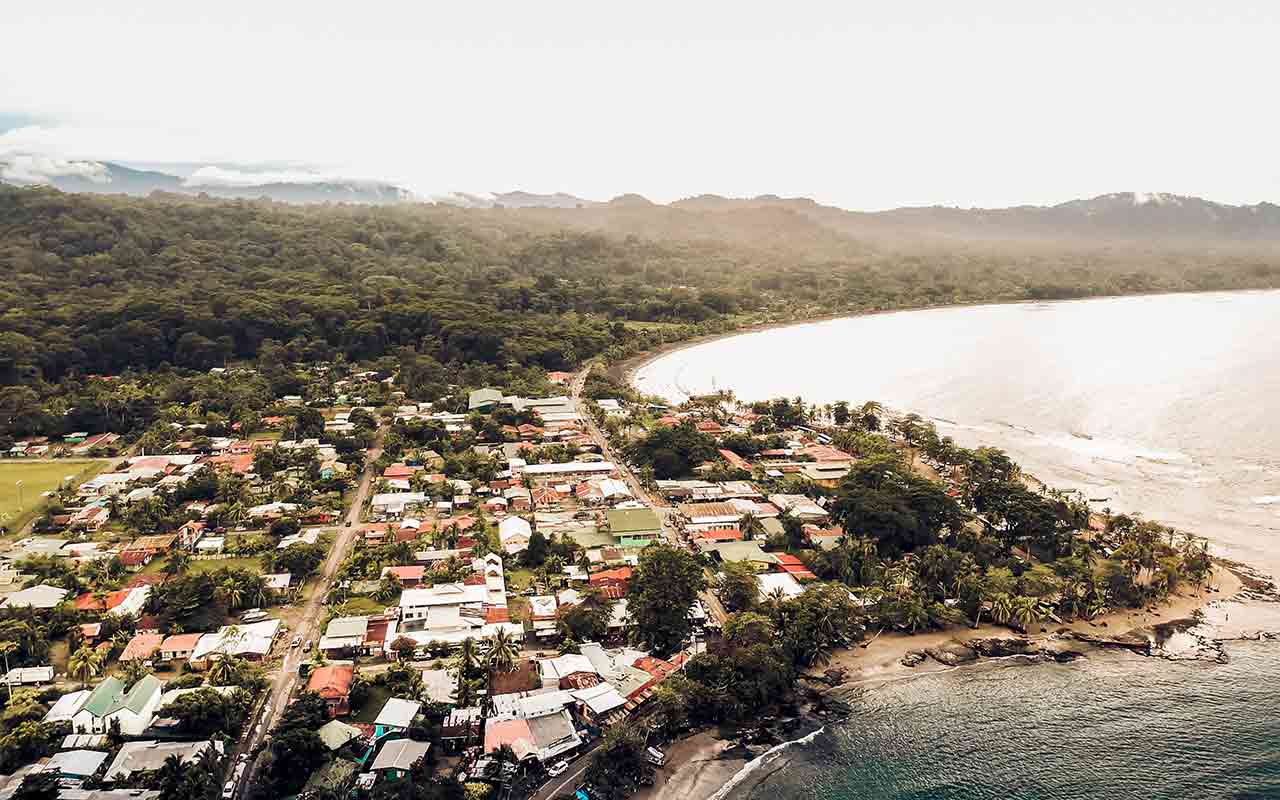
But if you want quiet, you’ll find many beach hotels that will provide that and still allow you to enjoy what this town has to offer, including the jaguar rescue center , which is a must-visit.
Another must (especially for those who love adrenaline activities) is to go White Water Rafting along the Pacuare River.
Tortuguero is known for its picturesque beaches and the National Park spans over 77,000 acres, so there’s plenty to do here. A day tour with breakfast and lunch will surely suffice to see the diverse ecosystem of this national park.
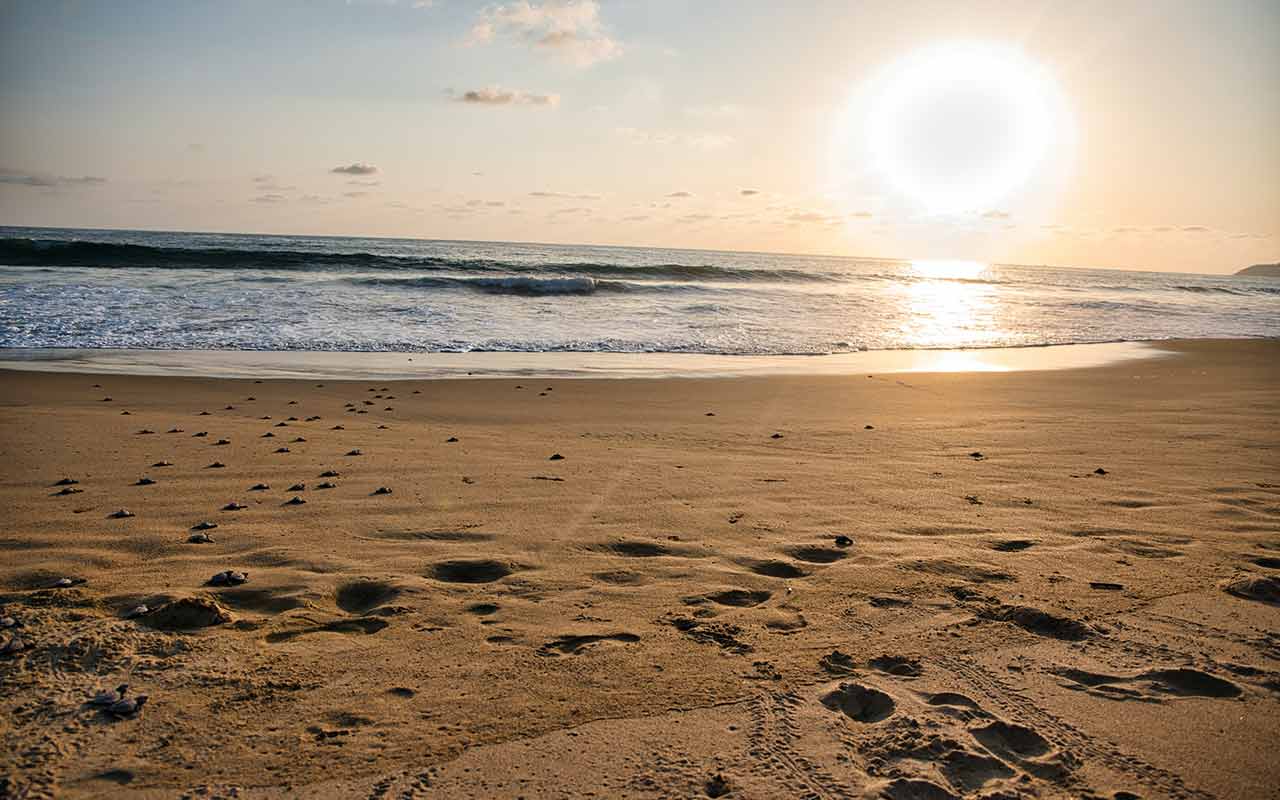
Of course, the most attractive thing about Tortuguero is turtles, as they lay their eggs and nest all along the shoreline . If you want to see that, schedule your trip in April and May.
But if you happen to go to Costa Rica in the off-season, Tortuguero still has a lot to offer. There are 11 different habitats in the park and you’ll be able to explore all of them.
Cocos Island
Cocos Island is the only eastern Pacific island that has a tropical forest and it’s just off the coast of the country, so it’s definitely worth a visit.
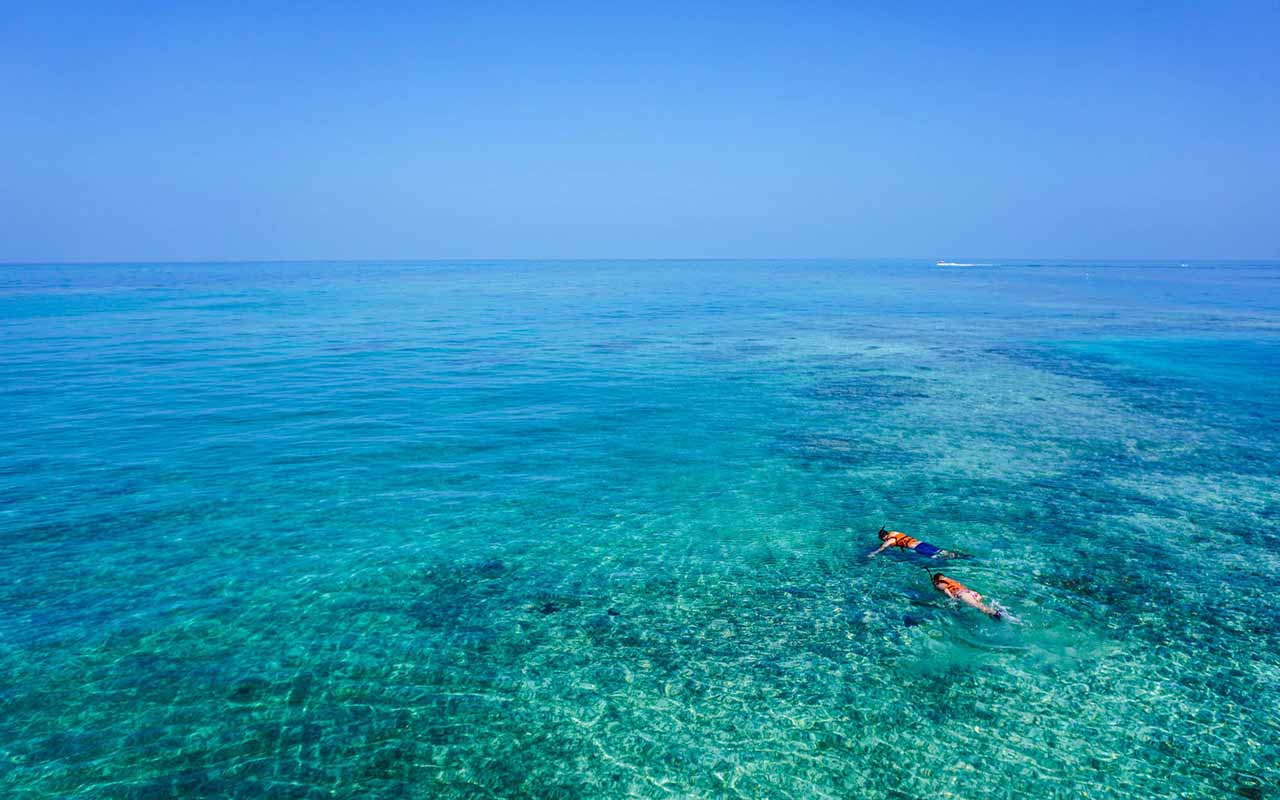
The island actually inspired the Jurassic Park franchise, which gives you an idea of just how beautiful it is.
Scuba divers love this place because there are 20 different dive sites to explore and come in touch with marine life .
However, no one can stay on the island, which is why the only way to visit is with a professional liveaboard dive boat.
Arenal is one of the many volcanoes you’ll find in Costa Rica and it’s surrounded by jungles you can explore.
The volcano still erupts sometimes , so if you’re lucky on one of the many Arenal tours on offer you’ll be able to see some lava.
There are many great things to do in the area so a combination tour in Arenal is highly recommended.
Taking combination tours allow you to partake in all the must-try activities, including exploring the La Fortuna waterfall , caving, rafting, visiting hot springs, and exploring the national park that offers many great hiking trails.
Manuel Antonio National Park
Last but not least, we have the Manuel Antonio National Park, which features different natural habitats and is home to multiple endangered species, including the squirrel monkey .
You’ll be able to explore the jungle by hiking or simply relax on white-sand beaches such as La Playita or Playa Espadilla and explore the town to get a taste of the culture.
We recommend heading on this highly-rated adventure tour , where your expert guide will show you rare animals and even bring a professional camera for you to have the highest quality photos!
Backpacking Costa Rica (2 Weeks)
Here we’ll now cover our very best itinerary of Costa Rica.
As well as keeping an eye on time, it’s also been designed to keep things fresh and exciting too for you .
San José (Days 1-3)
First we’ll kick off this itinerary in the capital of Costa Rica. San José’s International Airport is very well connected , and makes sense to start our itinerary here.
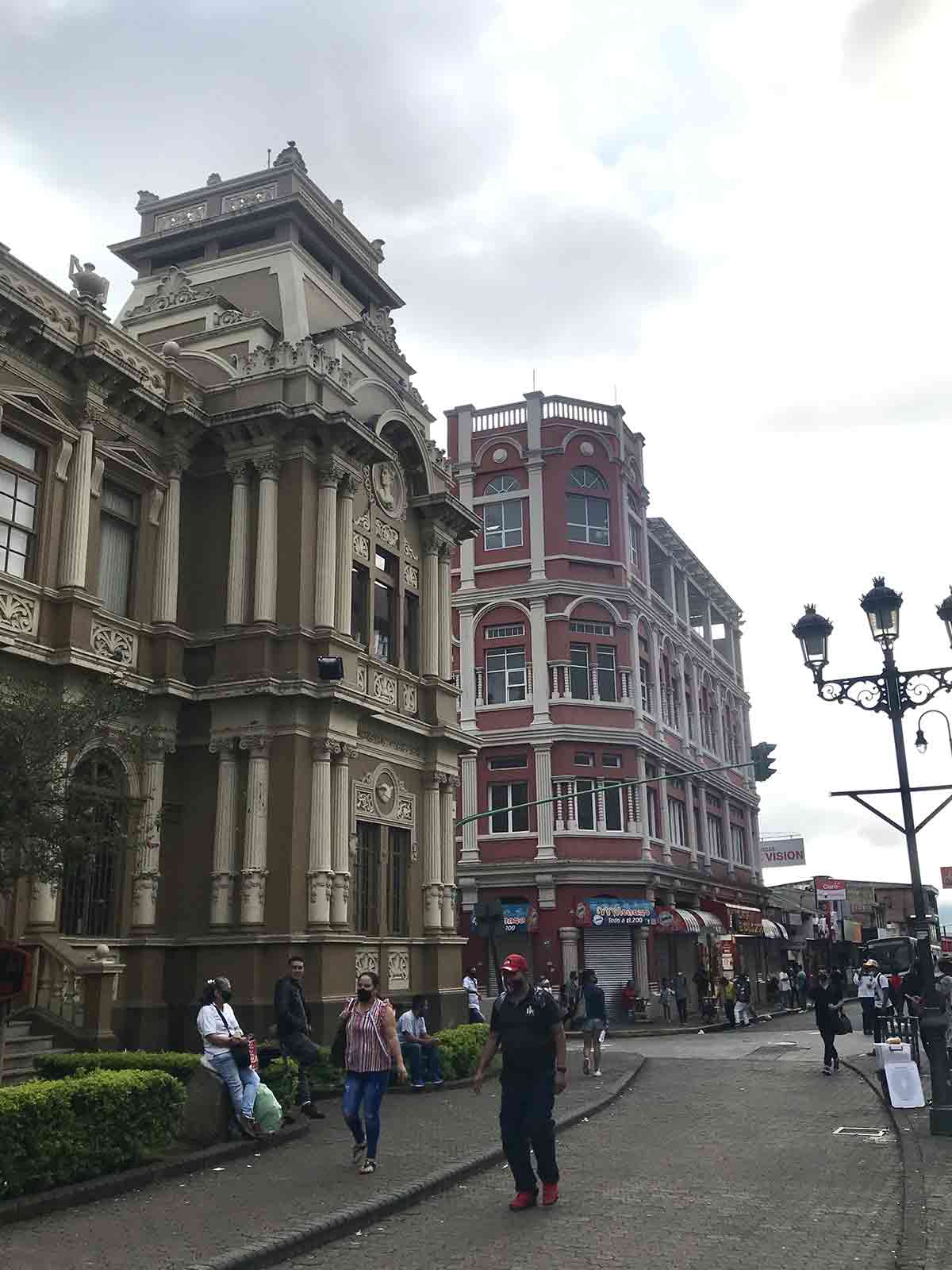
These first three days will be spent getting to know the “real Costa Rica” , as many other parts of the country have since become inundated with tourism.
One of the best things to do here is a visit to the Museo Nacional de Costa Rica, where you can learn about the country’s colourful past, visit the former prison and also see butterflies within the indoor gardens.
Other cool things to do here include a visit to the Pre-Colombian Gold Museum for its rich reserves of gold artefacts that were discovered all over the country, as well as heading into the wild nature of the Parque Nacional Braulio Carrillo. Be sure to try the National dish of Gallo Pinto here too!
This culture tour is the perfect way to explore San José, where you’ll see sites such as Morazán Park as well as Barrio Escalante. You’ll also have a dinner after (included), along with opportunities to try local Costa Rican beers.
Manuel Antonio National Park (Days 4-6)
We’ll now take the three hour bus to Manuel Antonio, which is home to some of the best beaches on the continent . We recommend staying within the town if possible, or nearby Quepos as a good second option.
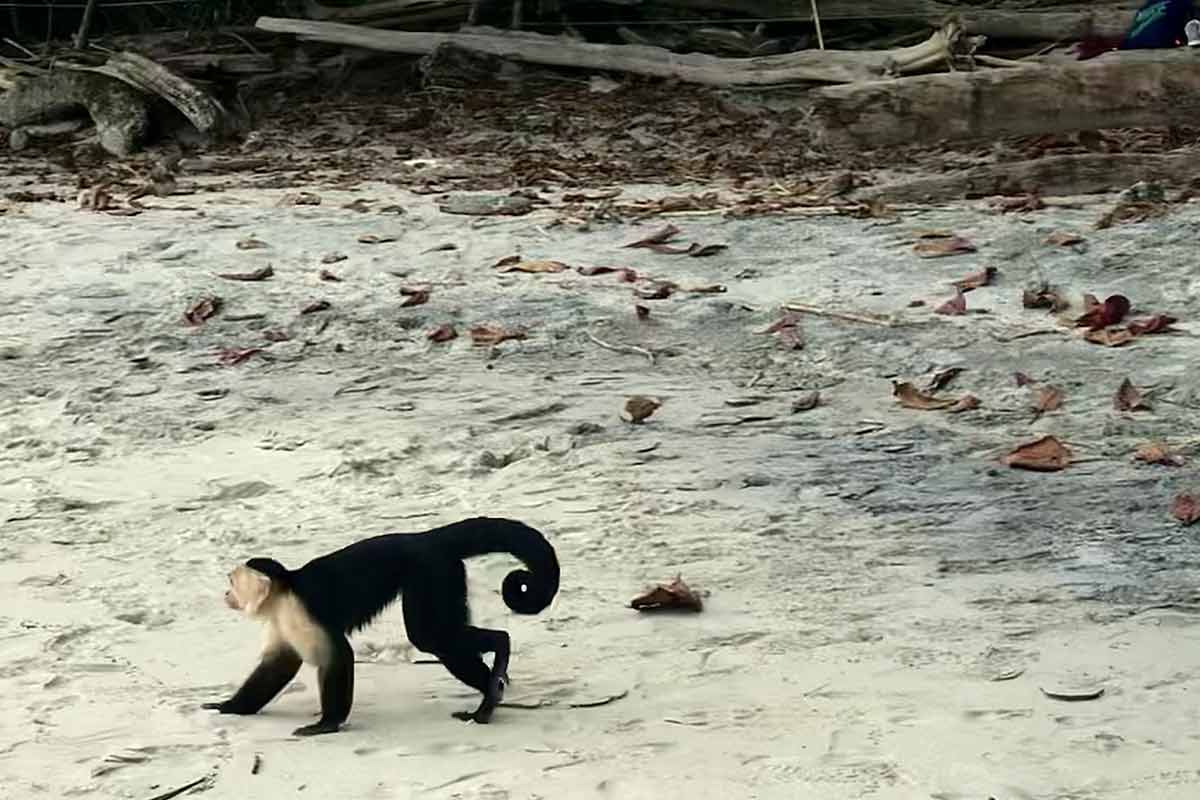
Of course lounging on the perfect beaches are part of the itinerary here, so kick back and enjoy Costa Rica’s finest!
Whilst here you’ll want to spend a day within the National Park, where you can hike through the jungle, visit secluded beaches and see many exotic wildlife species such as Iguanas, Howler Monkeys, Sloths and Boa Constrictors .
Another incredible thing to do is to hike to Nauyaca Waterfalls, which are tucked away deep within the jungle. You can go with this organised tour , which includes lunch as well as all transport from your accommodation.
For fishing lovers, or to try it out, head to nearby Quepos, with the town having earned itself the title of the “Sailfish Captial of the World” . Here you can fish all sorts, ranging from Dorado and Marlin to oversized Tunas.
Monteverde (Days 7-8)
Now it’s time for some real jungle. Monteverde is known to have one of the most diverse ecosystems in the world , and is perfect for exploring a variety of fauna and flora. To get here you’ll first take a bus from Manuel Antonio to Jaco, and then another to Monteverde.
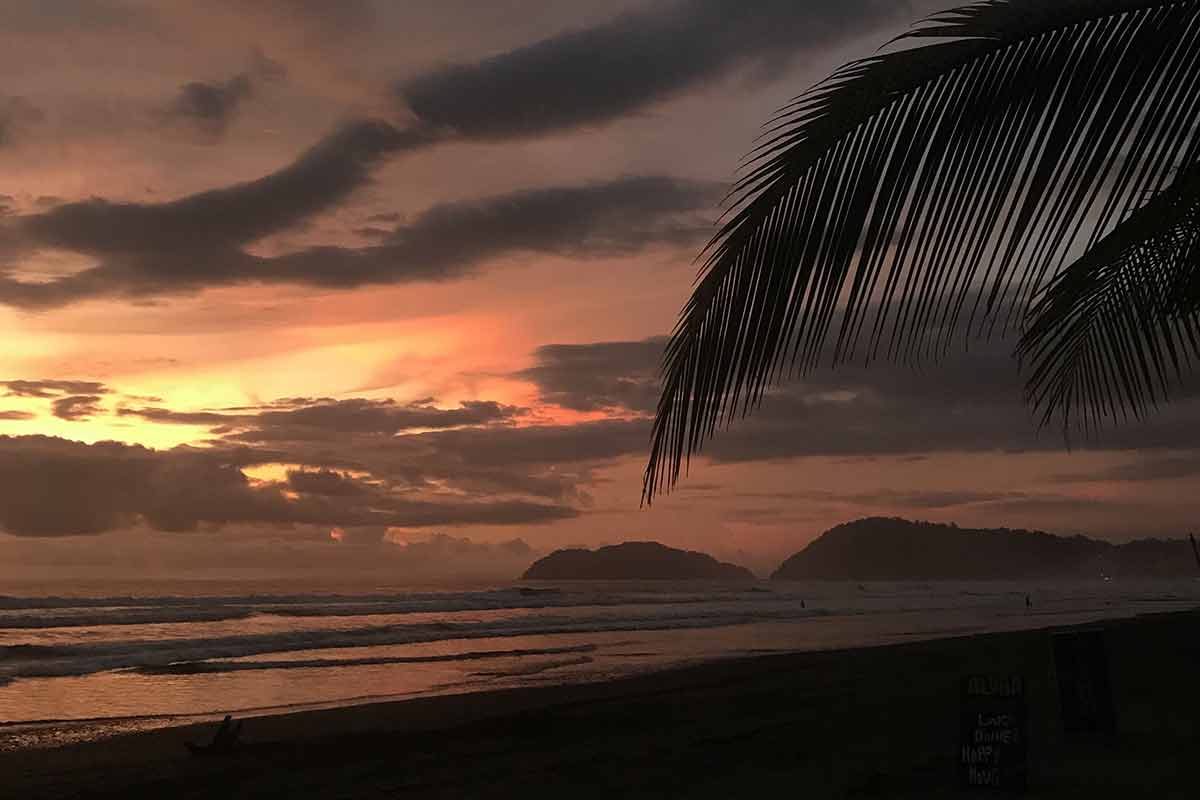
The first night you’ll want to head on an organised Night Jungle Tour of Monteverde. In a small group, you’ll carefully make your way around jungle trails looking out for very rare and exotic species.
Some of the animals we saw included Tarantulas, Snakes, Sloths and even an Ocelot . If you’re extremely lucky you may be able to spot a Jaguar.
Other cool things to do in Monteverde include a visit to the Cloud Forest and walking along the suspended hanging bridges , and getting your thrill on by heading to Skyadventures, which has a circuit of zip-lines and abseiling.
La Fortuna (Days 9-11)
From Monteverde we’ll now take the 5 hour bus to the town of La Fortuna, which is the gateway to the El Arenal National Park .
El Arenal is best known for its Jurassic style cone-volcano of the same name, that looks something out of a dinosaur film.
You can complete the hike in around 4 hours, where you can climb to the peak for some incredible views of the surrounding National Park. On your way back be sure to stop for a cool-off in Lake Arenal.
Another awesome thing to do in the region is to hike to the nearby Catarata Río Fortuna , with the hike to the waterfall taking around 20 minutes.
With a drop of 75 meters, it’s one of the biggest waterfalls in the country. You can also visit the Tabacon Hot Springs for a day of relaxing after all the hiking.
This adventure combo-tour is the perfect way to see all of these highlights, where you’ll also have a canopy walk along the hanging bridges included.
Puerto Viejo (Day 12-15)
Finally we’ll head to the Caribbean paradise town of Puerto Viejo. From Arenal you’ll need to take a bus back to San José, and then another heading south to Puerto Viejo (around 9 hours in total).
This laidback town is the perfect place to spend our last few days in Costa Rica. It’s pretty small, meaning you’ll feel part of the vibrant and welcoming community very quickly . Whilst it’s quite touristy nowadays, the nature and setting is still as good as it’s ever been.
One of the best things to do here is to rent a bike and explore the nearby jungle and coastline, with Playa Punta Uva and Playa Negra some of the best beaches to visit within the region.
Another popular way to spend the time is to head to the Cahuita National Park , which has its own distinct vibe. Whilst in Puerto Viejo be sure to try out some of the local Caribbean cuisine, such as coconut-infused chicken and rice.
From here you can either take the bus back to San José for your international flight, or cross the border south into Panama to finish up your Central American adventure.
We also recommend heading to nearby Puerto Limon, and jump on this day tour where you’ll explore the very best wildlife and scenery of the Cahuita National Park.
And there we have our 2 week Costa Rica itinerary. Now let’s move on to our travel tips, so you can have the best experience possible.
Costa Rica Travel + Safety Tips
Costa Rica is a safe country to visit, but you still need to be cautious about certain things to avoid common risks and issues.
⬇️ These tips will help you out:
- Avoid any isolated areas, especially at night. Stick to the crowd so you can avoid being singled out by muggers.
- Monteverde Cloud Forest, Arenal Volcano, Caribbean Coast. See this list of top rated tours in Costa Rica.
- Whilst not as impressive as food in say Mexico or Brazil, Costa Rican food is still worth a try. Be sure to try out unique foods such as Patacones (plantains mashed, popular along the Caribbean coast) and Gallo Pinto; Costa Rica’s official national dish.
- Keep your valuables at home or the hotel safe. Be sure to take out travel insurance to protect you during your backpacking.
- Coastal towns such as Puerto Viejo and Jaco have a nice variety of beachside bars and venues, however the best night out is in San José. When in the capital, head to Castro’s Discotheque and Club Vertigo.
- Look out for the top rated hostels in Costa Rica for the most comfortable rooms and meeting like minded people etc.
- When you use public transportation, you need to be alert because petty theft is common.
- B sure to practice some Latin American Spanish before you arrive in Costa Rica as it can really help you out in different situations.
- Don’t make ATM withdrawals at night and use them inside when possible.
- Costa Rica is one of the most expensive countries in Latin America, so we recommend using public transport instead of taxis as well as preparing your own meals to save money!
Follow our tips and to reduce having issues during your trip. Safety is a matter of precaution and common sense, and that’s true for any country you visit.
Traveling Around Costa Rica
Traveling Costa Rica by bus is a great option because it’s inexpensive and buses are reliable.
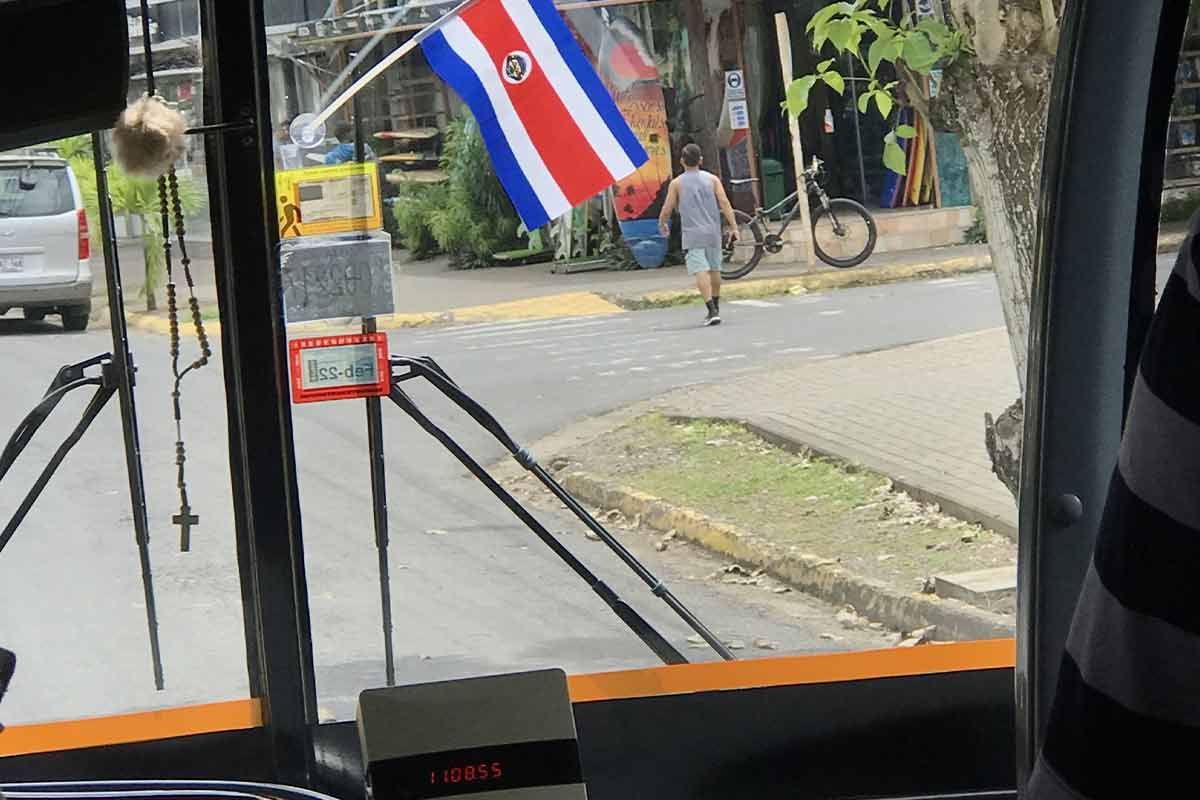
There are bus offices all over the country but not all bus companies have big terminals where you can purchase tickets in advance.
For this reason, it’s important to do your research and figure out how buses work where you’re going .
You’ll find two types of bus, the directo, which goes from point A to point B and makes a few stops along the way, and the colectivo, which makes a lot more stops, so it takes longer.
You want to confirm the time when you purchase your ticket because schedules can fluctuate a lot. Also, don’t keep your luggage in the overhead compartment .
It’s also a good idea to consider tourist-van shuttle services, which are a bit more expensive but they’re more comfortable.
Best Time to Visit Costa Rica
We’ve spoken a lot about the best time to visit Central America on this blog (George is absolutely obsessed with checking the weather when we travel).
The weather in Costa Rica can best be described as seasonal and tropical. Despite its relatively small size, different parts of the nation can experience wildly different weather at the same time.
December through April in the Caribbean will promise the driest weather. On the other hand, a trip to the Pacific Coast will have plenty of showers, with it being the wettest season to explore this region of Costa Rica.
More elevated areas such as Monteverde are usually cooler year-round as well. The overall best time to visit (if heading throughout Costa Rica) is between December and April .
Known as the dry season, the weather is much more predictable during this time of year and is likely that your travel plans won’t be affected.
What to pack for Costa Rica
Once you’ve decided where you want to visit, and roughly the time of year, now comes the fun part of packing for your backpacking trip to Costa Rica!
As you’ve seen, the climate can range quite a bit here from tropical beaches along the Caribbean to cooler mountain towns such as Monteverde.
As a result we recommend mostly packing light clothing for hot temperatures , such as T-shirts, shorts, vests, short dresses, a daypack (we use Osprey ), and anything else you’ll feel comfortable wearing in and around 85°F.
We also recommend packing a light jumper and raincoat as well, as the weather can vary throughout the country (regardless of the time of year you’ll be visiting some areas can still get quite cool).
You’ll also want to pack necessary toiletries, document holders, hiking boots , towels, a water bottle as well as a backpack for any excursions you’ll be doing.
Some of our favourite hostels in Costa Rica include:
Hostel Shakti (San José), Pagalu Hostel (Puerto Viejo), Roca Verde (Monteverde).
Got travel insurance for Costa Rica?
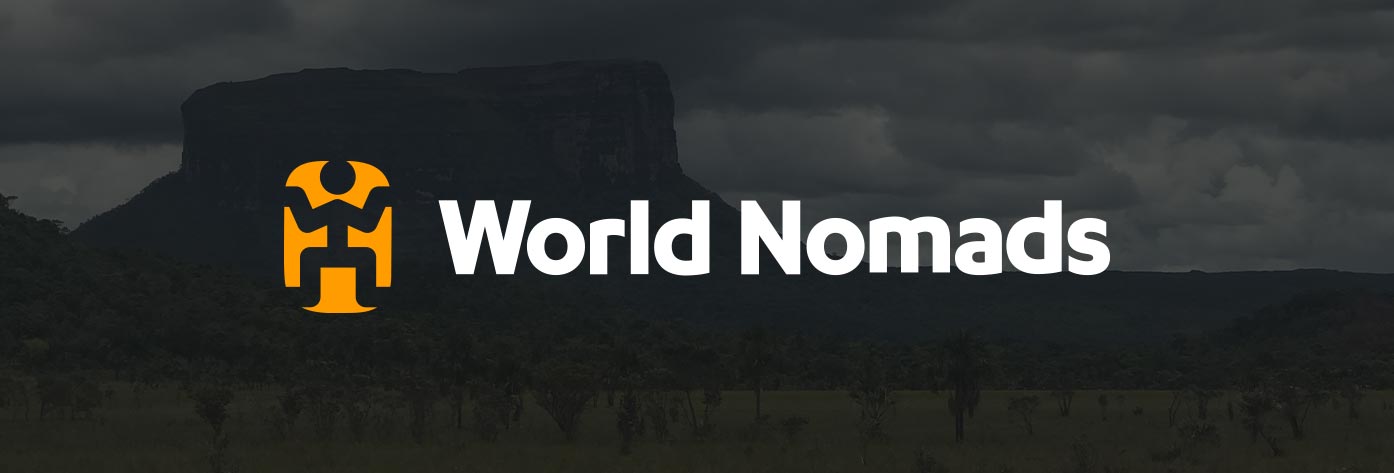
Backpacking Costa Rica
Costa Rica has so much to offer, one trip will hardly be enough to discover all its wonders. However, this itinerary points you in the direction of some of the best highlights!
Make sure you refer back to it before and during your trip so you don’t miss anything good and have as much fun as possible.
Also, be sure to read this in conjunction with our popular backpacking Central America travel guide which shows you more place to see in Costa Rica.
👉🏽 P.S. If you’ve found this guide helpful, buy us a coffee here to say thanks! Or, support us by downloading our South America Travel Bible to get our best content.
“ Dear traveler! Some links in this post contain affiliate links. Meaning, if you click through and make a purchase, book a hostel or sign up for a tour, we may earn a small commission at no additional cost to you . Your support means a lot and helps us to carry on traveling and maintaining the quality of this site for you.”
Similar Posts
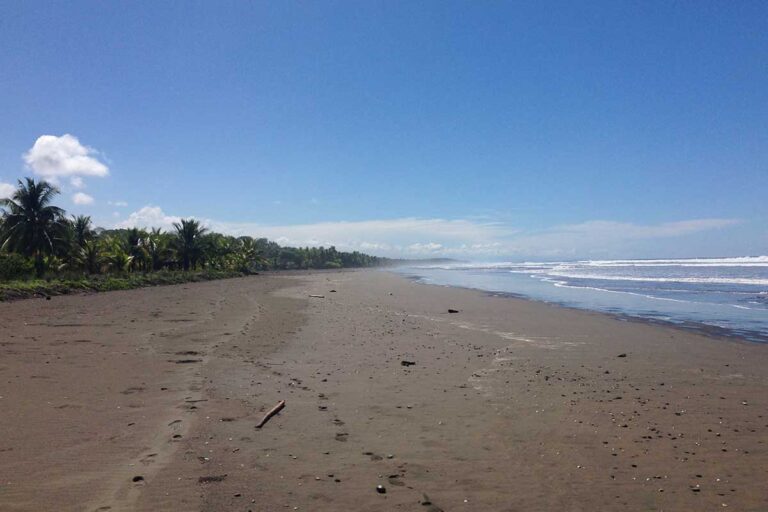
Best time to visit Costa Rica
In this guide, we will explore the best time to visit Costa Rica. Costa Rica is the most popular country in Central America, which makes sense given the abundance of nature, beautiful scenery and warm climate here. It’s also one of our top choices for first-timers too as it’s very safe. In this guide, we’ll…
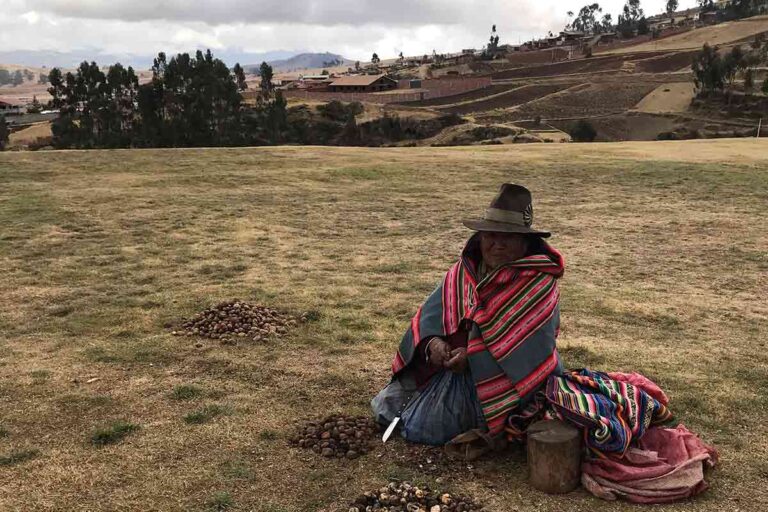
South America Backpacking Route (3 months)
Welcome to our 3 month South America backpacking route. It is no secret that South America boasts one of the world’s vastest continents, and in our opinion, is one of the best for any type of adventure travel. Home to mysterious cultures and ruins, breathtaking landscapes as well as vibrant cultures, it truly is one…
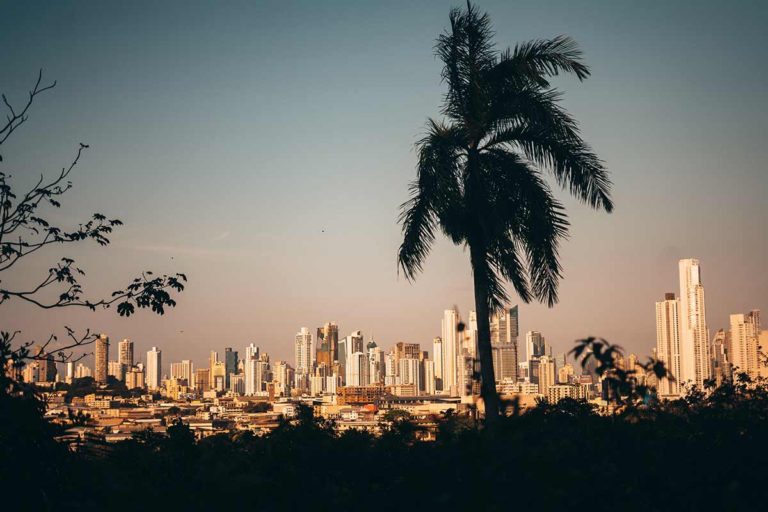
Is Panama worth visiting?
Is Panama worth visiting or worth spending an extended period of time in? Sandwiched between the Caribbean and Pacific Oceans, Panama is an incredibly diverse country with one of the most unique national identities. From its stunning islands and mountainous landscapes to its warm and friendly people, this Central American nation really is a must-visit….
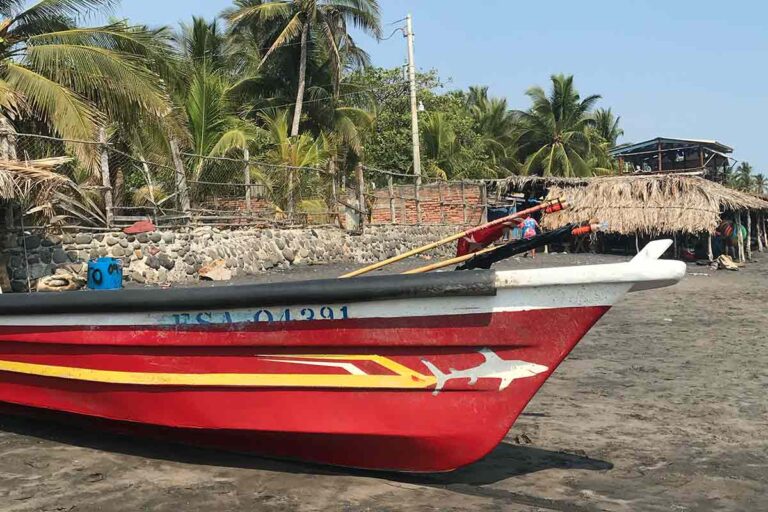
Backpacking El Salvador Itinerary
Welcome to our backpacking El Salvador itinerary. If you’re planning an El Salvador backpacking trip, you’ll need an itinerary to lead your way. Today, that’s exactly what we’ll provide for you! El Salvador is one of the smallest countries in Central America, but it has a ton of charm and though it’s a less popular…
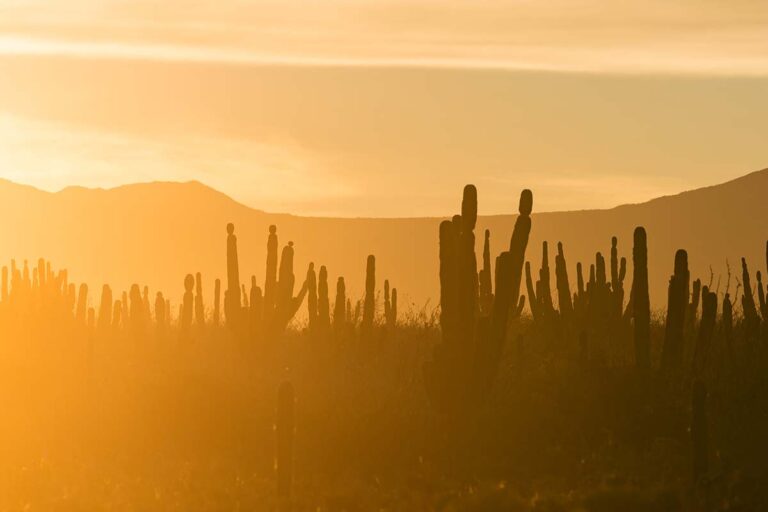
Baja California Itinerary (2 weeks)
Welcome to our Baja California itinerary. When looking for a real backpacking adventure, look no further than Mexico. This country has it all, with fascinating cultures, incredible food and world-class sceneries all waiting for you. Baja California Sur is no different, and here you’ll find some outstanding beaches and natural experiences on offer. Baja Sur…
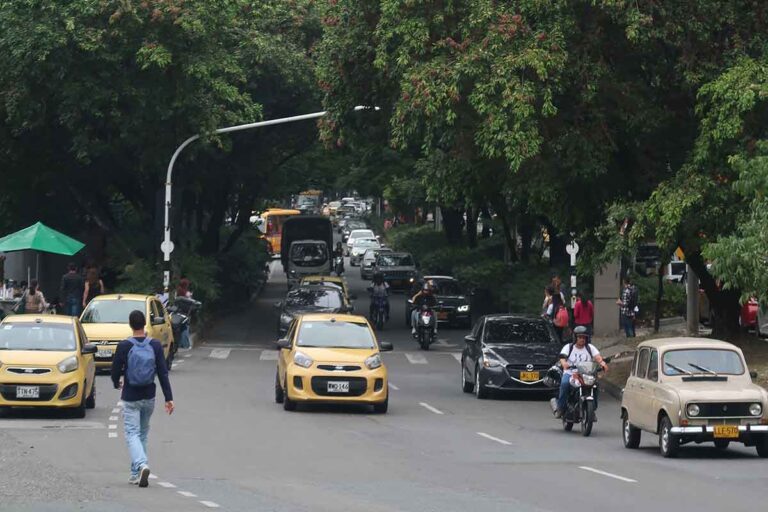
3 days in Medellin itinerary
Welcome to our 3 days in Medellin itinerary for backpackers. Set in the Aburrá Valley, Medellin is a city known for its warm pleasant climate and its inviting friendly vibe that welcomes people from all over the globe. Over recent years Medellin has become one of the most popular cities in Colombia to visit and…
Backpacking Costa Rica – Travel Tips & 30 Day Itinerary
Plunge into crystal blue hot springs, slide down waterfalls, swim alongside sea turtles, dolphins and sharks, watch lava splurge out of an active volcano, dance the night away on the beach. Costa Rica is every backpackers dream!
The tiny oasis in Central America boasts endless adventures and natural beauty, and it can be done on a budget.
My Costa Rica travel guide will provide you tips on how and where to travel in Costa Rica, as well as some tricks I picked up along the way.
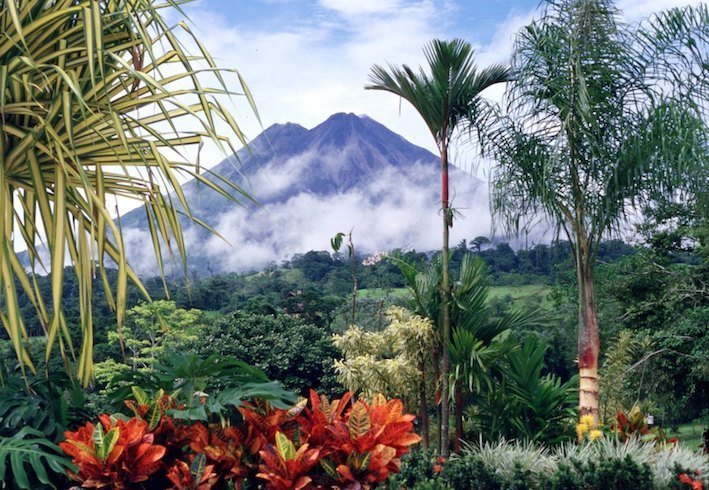
Why you should travel to Costa Rica
Costa Rica is a tiny tropical paradise filled with beautiful empty beaches, lush cloud forests, and magnificent wildlife. Think birdwatching is exclusively for old and boring travellers? Then you haven’t seen the brilliant toucans and scarlet macaws of Costa Rica.
Travel in Costa Rica is made easy through its relatively small size and many public busses. You can watch the sunrise on the Caribbean sea (to the east) and watch it set on the Pacific Ocean (to the West). However, you’ll probably get stuck being mesmerized by the lush green forests in the centre.
Costa Rica is making landmark strides in ecotourism, renewable energy, and conservation law. Afterall, it is one of the most biodiverse regions in the world. No wonder so many hippies are drawn here to experience Pura Vida.
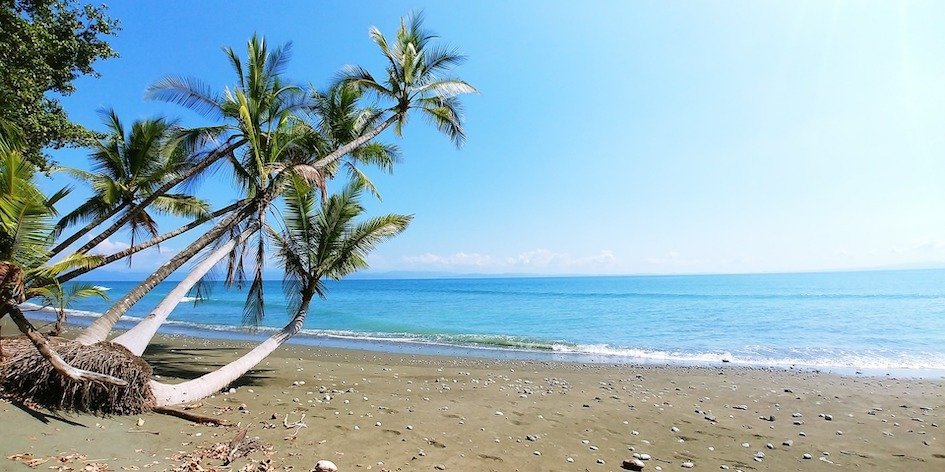
Is Costa Rica a Backpacking destination?
My first backpacking trip was an unplanned 2 month adventure in Costa Rica. Ever since, I’ve become obsessed with chasing waterfalls, deserted beaches and juicy tropical fruit. Although you can get similar features in Thailand or Bali, it’s the Pura Vida spirit that makes this a truly special destination for backpackers.
A safe haven amidst the chaos in Central America
Pura Vida (The Good Life), is the national slogan of Costa Rica. This cliché marketing phrase might cause an eye roll when you first hear it, but within a week you’ll be using it alongside businessmen in San José and the hippie expats in Puerto Viejo.
It means hello, okay, how are you and goodbye. Whenever your broken Spanish is misunderstood, just say pura vida and you’re sure to entice a smile.
Backpacking Costa Rica is the best way to discover the soul of the country. You’ll discover a laidback and peaceful nation, with no army to protect them. Yes, that’s right, Costa Rica has no military! The crime is comparatively low throughout the country, but some areas are not safe . Like any capital, San José boasts a higher crime rate, as well as the port cities Puntarenas and Limón.
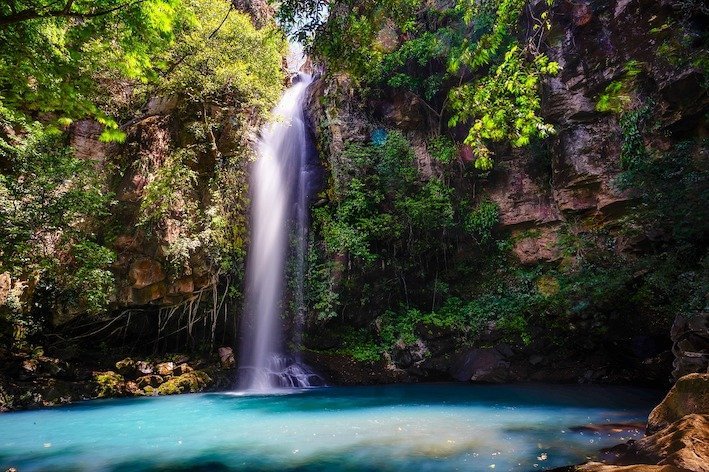
Costa Rica travel is cheaper than you think
As the safest and wealthiest country in Central America, Costa Rica is more expensive than its neighbours. But with the price comes exceptionally clean streets, great infrastructure, many farm-to-table restaurants, organic produce and drinkable tap water. Ask any local why they look so young, and they’ll claim it’s the Costa Rican water!
Despite the first world facilities, it is possible to travel to Costa Rica on a budget. There are many hostels with kitchens, cheap local eateries and public transport that won’t break the bank.
Since the country is so safe, hitchhiking in certain areas is a viable form of transport used by both locals and foreigners. If you’re willing to sleep in a tent, many hostels will allow you to camp in the garden at a discounted price.
If you’re really travelling cheap, I suggest using Workaway , WWOOF or volunteering at hostels. There are many ecotourism centres, off-grid farms and hostels looking for a helping hand. And exchange for a half-day of work, you’ll get room and board for free.
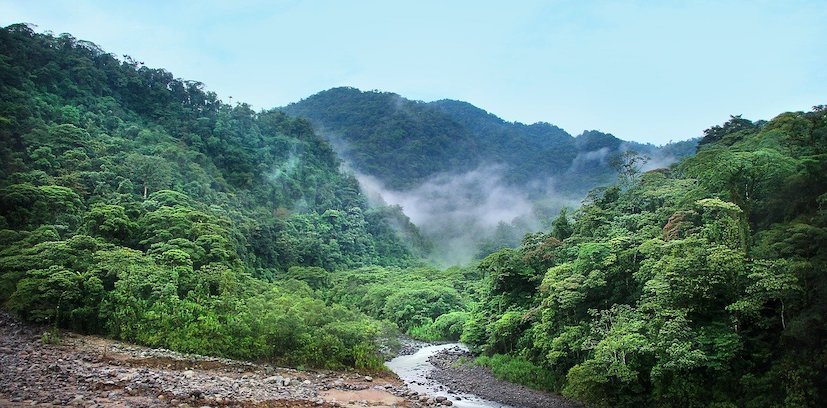
The best Costa Rica backpacking route
Planning a trip to Costa Rica is a difficult process because of the awkward shape of the country. The beautiful mountains and rivers block many direct routes to your destination, resulting in lengthy detours.
How to travel in Costa Rica is still highly debatable- bus, car, plane? Costa Rica was my first backpacking destination, and even though transport was difficult at times, I always ended up in a beautiful place. Sometimes you don’t end up where you wanted to be, but you end up where you need to be.
The best way to travel in Costa Rica is a combination of busses, private shuttles and boats.
I suggest spending a minimum of 2 weeks in the country, but a month is best. The longer you stay the more economical your day-to-day travel becomes. One month will ensure you see most of what the country has to offer, so you can check off all the highlights in one trip.
San José will be your base from which most of the buses depart, so don’t waste time staying there longer.
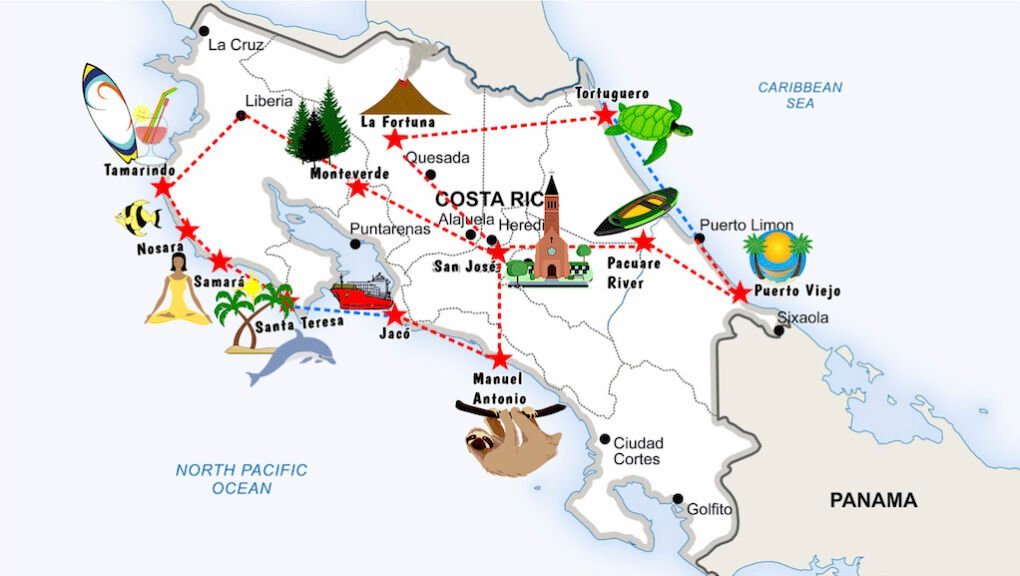
1 month Costa Rica backpacking itinerary
This itinerary includes many of the highlights Costa Rica is famous for. However, there are many places I did not include mainly because it is difficult to get to with public transport. If you prefer a more relaxed pace, exclude some of the hard to reach areas like Tortuguero and Santa Teresa. No matter where you go in Costa Rica, you will be met with beautiful scenery, fresh food, and kind-hearted Ticos .

Day 1: San José
Arrive in San José and make your way to your hostel. There are plenty of restaurants in the city. Try your first casado, a plate made up of rice, beans, salad and sweet plantains. This will be your staple meal for the next 4 weeks.
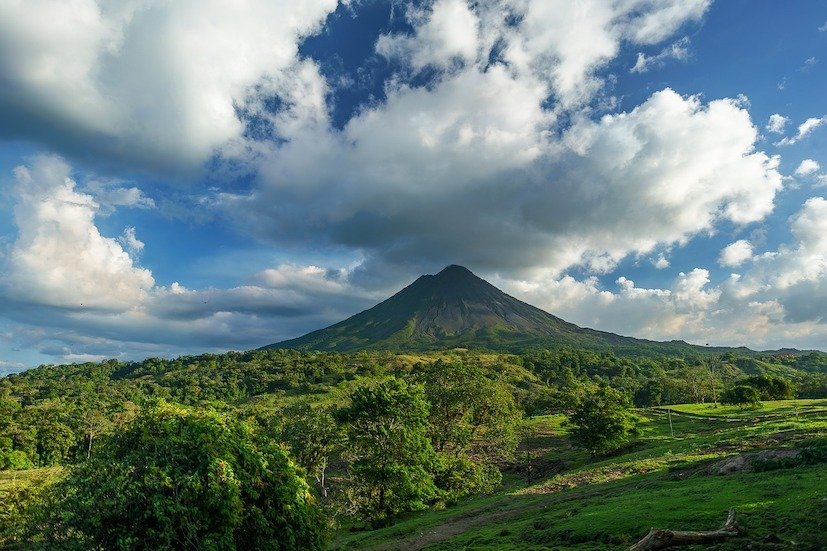
Day 2 & 3: La Fortuna
Here you have the opportunity to hike to active Arenal Volcano. Although the site of creeping lava is the biggest attraction in the area, don’t miss the opportunity to cool off in La Fortuna waterfall or heat up in Badi Hot Springs.
Day 4: La Fortuna to Tortuguero
Warning: Tortuguero is DIFFICULT to get to, but well worth the effort. The easy option is to take a shuttle. The cheap option is to take a local bus to Cariari and get a boat to Tortuguero Village.
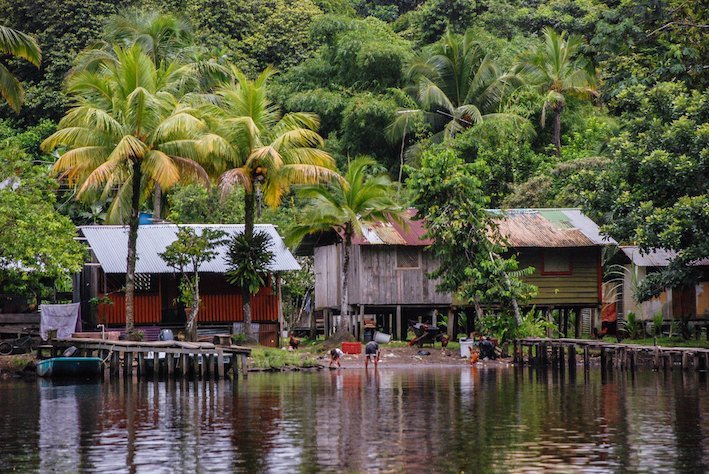
Day 5: Tortuguero National Park
Tortuguero will make you feel as though you just landed in uncharted jungles in Central America. Due to the remoteness of the area, it is difficult to get to and the prices are high. However, it is worth spending the extra cost to catch a glimpse of endangered green sea turtles.
In season, you can watch turtles nesting in the area. Spend the day canoeing through the many freshwater lagoons and creeks or search for white-faced monkeys, jaguars, snakes and other reptiles.
Day 6: Tortuguero to Puerto Viejo
Catch a boat from Tortuguero to Límon then bus to Puerto Viejo. You can also buy a package that includes private transport, but this costs more. Alternatively, head back to the mainland and take a bus. This adds a couple of hours to your travel but will be much cheaper.
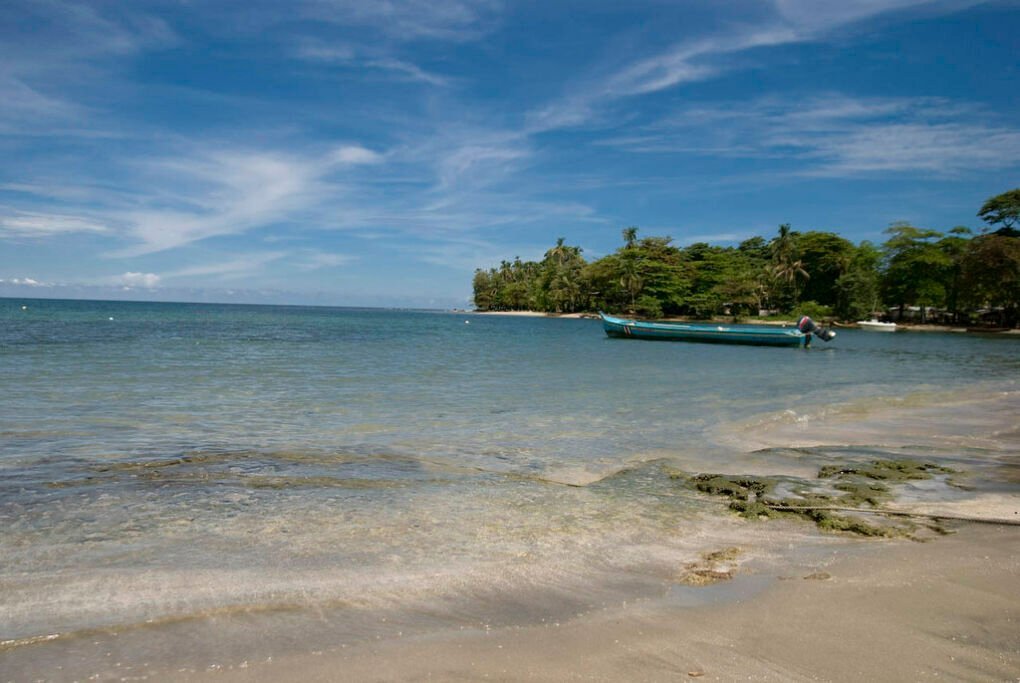
Day 8 & 9: Puerto Viejo
Welcome to party paradise! Puerto Viejo is infamous for gringos smoking yierba and day drinking. However, if partying doesn’t appeal to you, the area also offers ample snorkeling, diving and surfing spots. Surf hostels will allow you to pitch a tent or sleep in a hammock.
Day 10: Puerto Viejo to Pacuare River
Pacuare is known for one thing: the 18-mile white-water rafting expedition. If you’re not an adrenaline junkie feel free to skip this stop. But unless you’re aquaphobic, I highly recommend this activity. The class II to IV rapids will test your stamina while paddling through incredible scenery including waterfalls, cliffs, fauna and flora. You’re bound to be left breathless!
Many tour companies include free hotel pick-ups and drop-offs from Puerto Viejo. You can request in advance to be dropped off in San José.
Day 11: San José to Quepos (Manuel Antonio)
Direct bus from San José to Quepos. A local bus runs between Quepos and Manuel Antonio every 30 minutes.
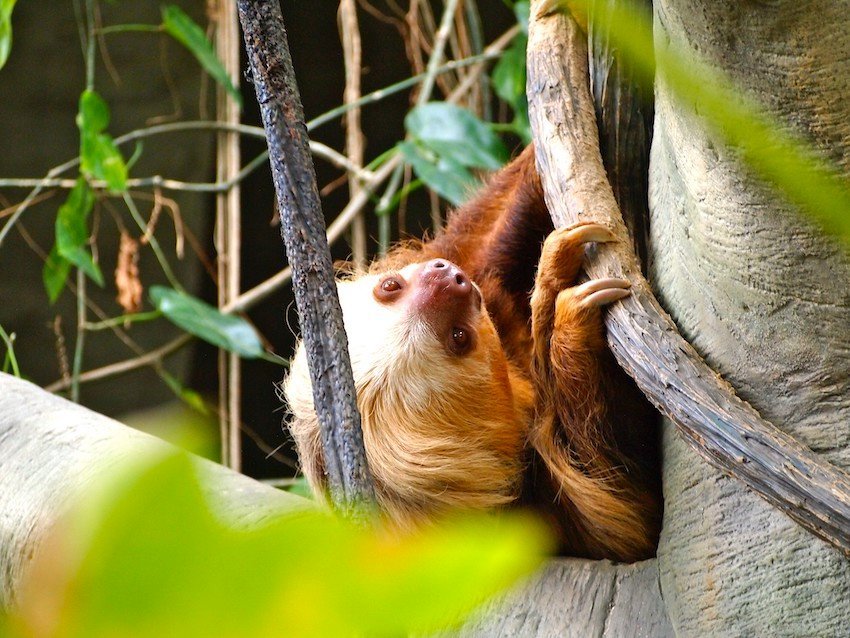
Day 12 & 13: Manuel Antonio
Spend the next two days discovering hidden beaches and beautiful wildlife of the rainforest. Manuel Antonio National Park is teeming with sloths, monkeys, iguanas, birds and other forest creatures. There is an abundance of well marked forest trails and beach spots. Remember to start early to beat the humidity and crowds!
Day 15: Manuel Antonio to Jacó to Santa Teresa
Take a local bus from Manuel Antonio to Quepos, then a bus to Jacó. Jacó is a party town and the closest beach to San José. Unfortunately, it’s crowded, dirtier and more dangerous than other areas. I recommend leaving as soon as you can, unless you really crave nightlife. There are numerous ferries that run to Montezuma that take about 2 hours, then take a shuttle to Playa Santa Teresa.

Day 16 – 19: Santa Teresa
Santa Teresa is a beautiful and quiet area of Costa Rica that not many tourists get to see. Spend a few days indulging in yoga, surfing, soul food and empty beaches. Don’t forget to see Montezuma Waterfalls.
Day 20: Santa Teresa to Samará
There is terrible infrastructure in this area of Costa Rica and no buses that make the journey. In the dry season it’s possible to get a jeep shuttle to go directly to Samara. The only other option is to take the bus to Nicoya, then to Samara (about a 12 hour journey). But if you can make it, Samara is well worth the trouble.
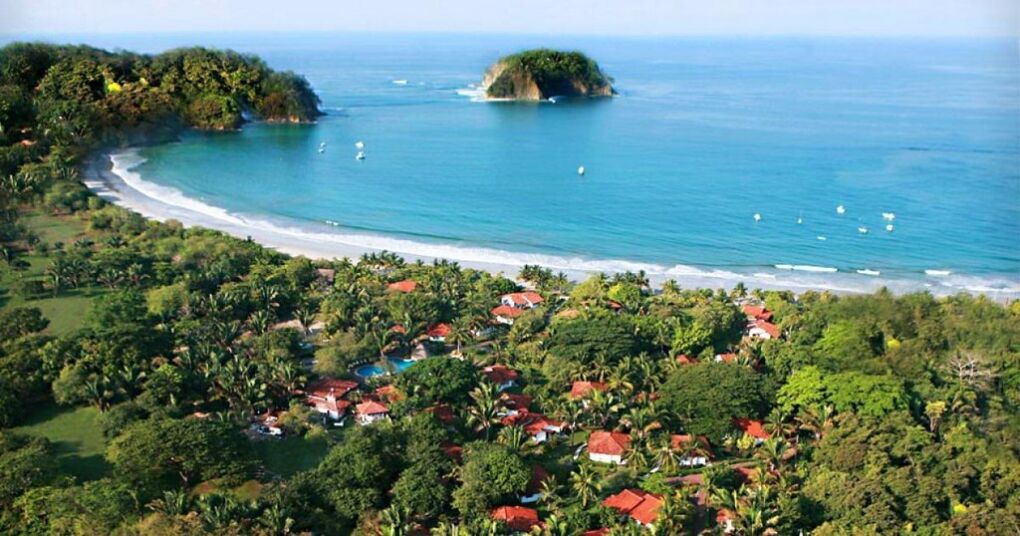
Day 21 – 23: Samará
Samará is more popular with backpackers than Nosara since it is cheaper and less Westernized. There are plenty of hippie hostels within close proximity of the beach. Rent a bicycle and explore remote beaches around the area. This is an ideal place for snorkeling – luckily many hostels rent out masks for cheap or free.
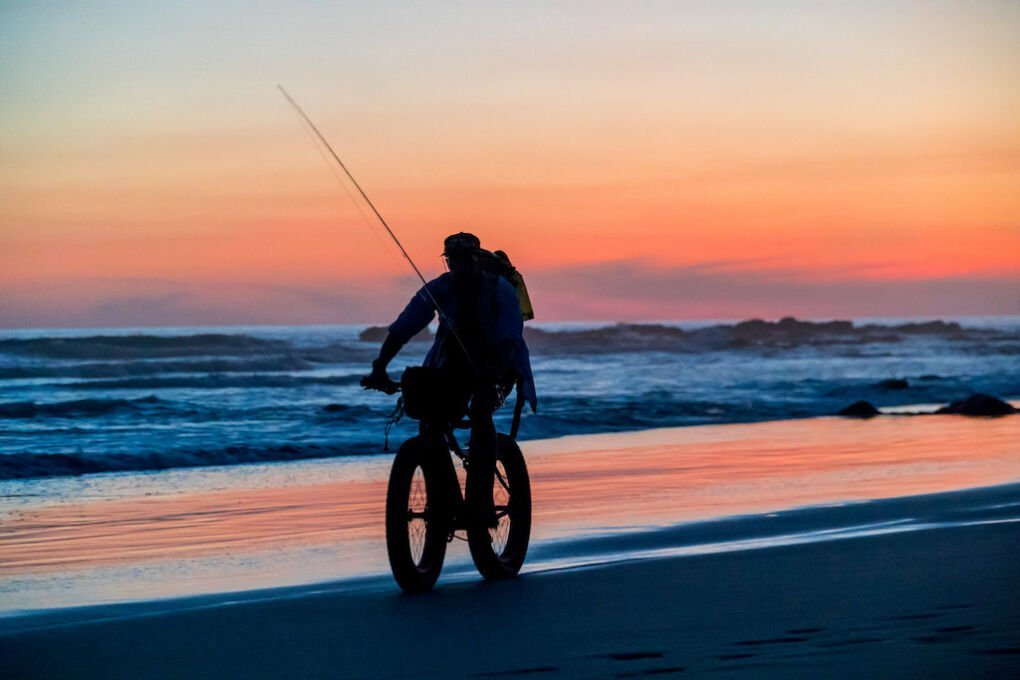
Day 24: Nosara Ostional Wildlife Refuge
One day in Nosara is enough to see the wildlife refuge. The village is packed with retired American tourists, golf carts and resorts. There is a lot of money flowing around on elite hotels and yoga retreats. For backpackers, it’s not the ideal location but worth spending a day.
Eat at one of the many health cafés and take a yoga class. Here, you’ll forget you’re in a Spanish speaking country since most of the menus and signs are in English.
Day 25: Nosara to Playa Tamarindo
There are no direct busses on this route, but you can take a bus via Santa Cruz and Nicoya. There will be shuttles available too but these are quite expensive.
During my trip to Costa Rica I wanted to save time and ended up hitchhiking. I was picked up by a wonderful Canadian couple who stopped at various beaches and dropped me off at my hostel.
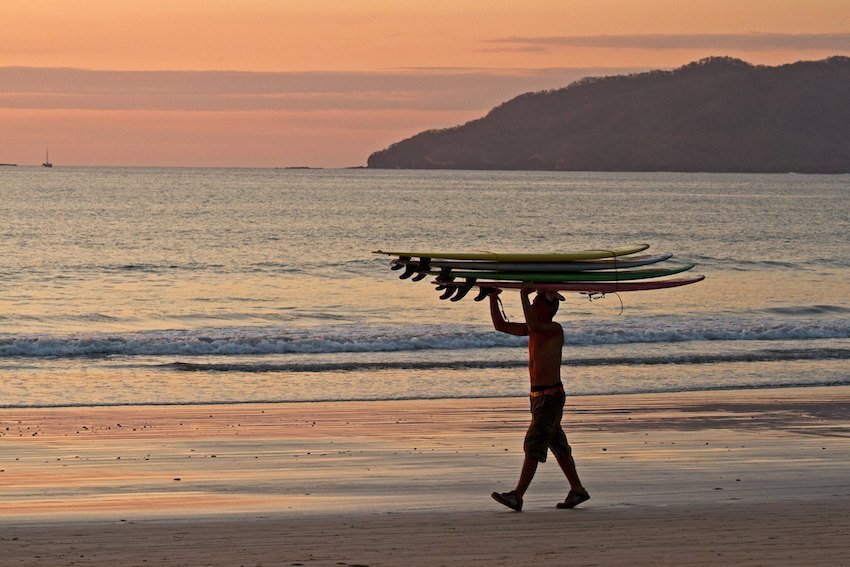
Day 26 & 27: Playa Tamarindo
Otherwise known as, ‘Tamagringo’, is a touristy beach town that provides all the conveniences of cheap hostels and transport, with pristine beaches and surf spots. The party town has a lot more to offer than nightlife and surfing though. The crystal clear waters are a great place for snorkeling and many hostels let you camp on the beach!
Day 28: Playa Tamarindo to Monteverde
Like other areas in Costa Rica, the public buses here are seldom direct and quick. The fastest option is a shuttle but you can get a bus to Liberia and then from Liberia to Monteverde.
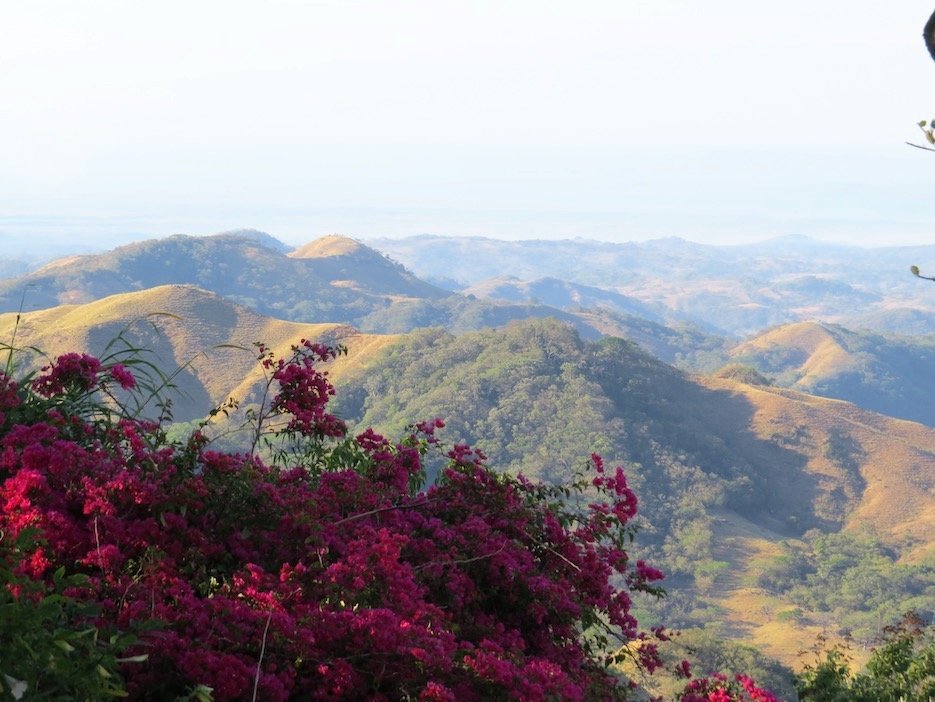
Day 29: Monteverde Cloud Forest
Monteverde hosts a range of adrenaline activities to end off your Costa Rican Adventure. One of my favourite activities during my travels in Costa Rica was ziplining over Monteverde Cloud Forest.
If you’re afraid of heights, there are various hiking trails to explore. Keep in mind there is still an element of height since they include a few hanging bridges that need to be crossed.
Day 30: Monteverde to San José
On the last day of your trip, catch a direct bus from Monteverde to San José. This is most likely where you’ll be flying from.
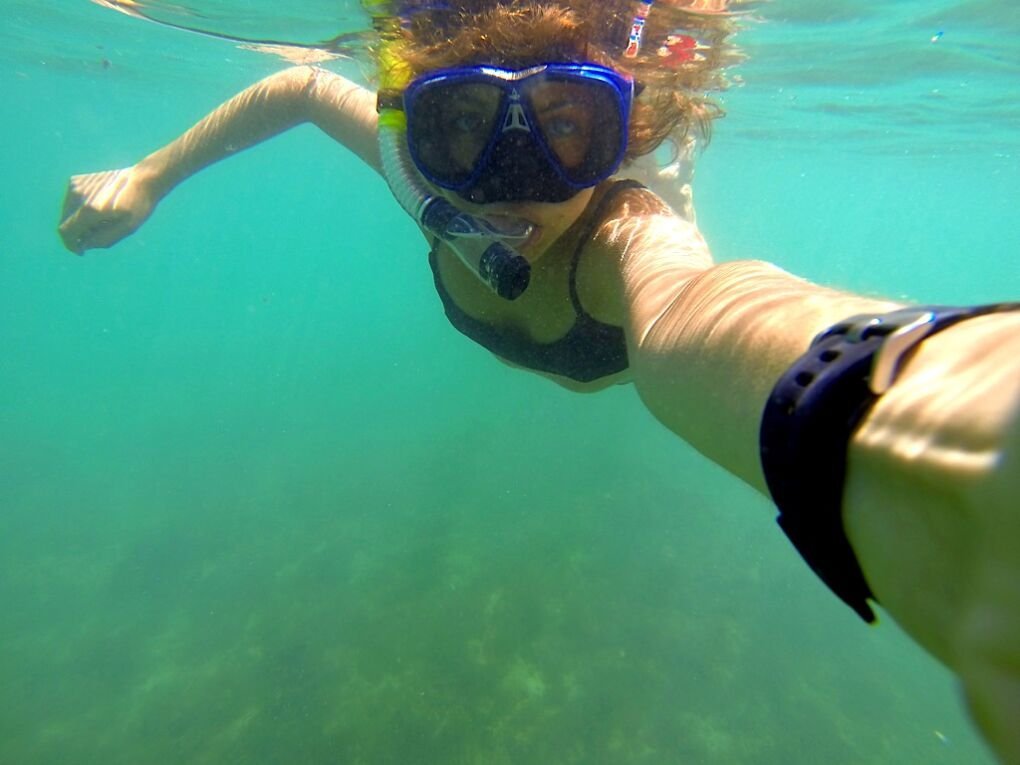
Costa Rica Travel Tips
After backpacking Costa Rica for 2 months, I learnt how to do it cheaply. Learning from other travellers and personal experience, these are my tips for traveling to Costa Rica.
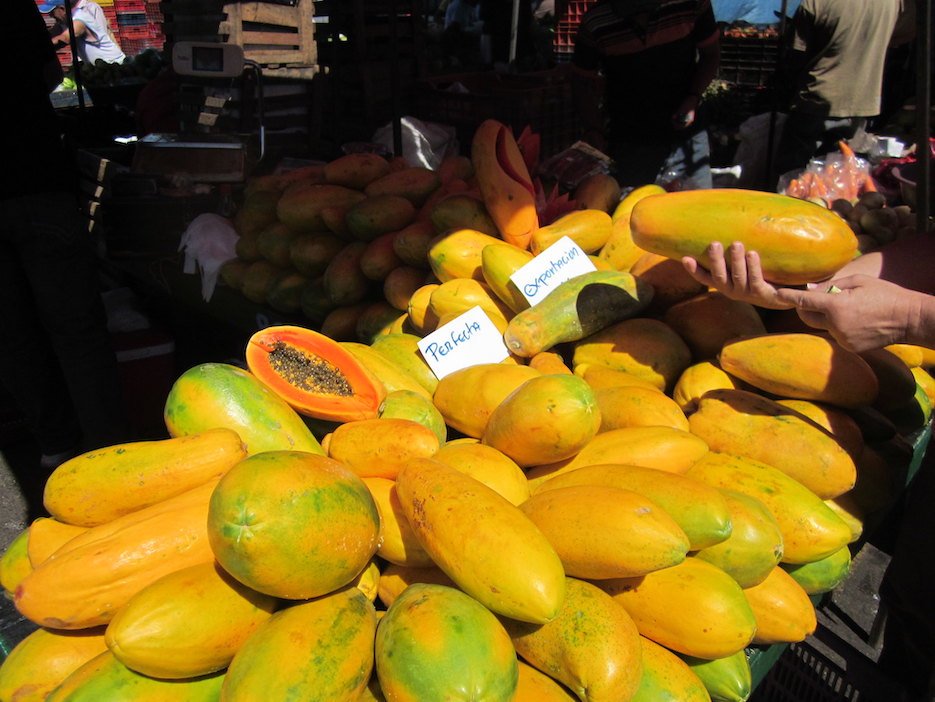
- Eat like a local. Costa Rican food is very affordable, as long as you eat local cuisine. Western food is always pricey and never as delicious. My go-to options are asados , patacones and pico de gallo just to name a few. It’s also relatively easy to find vegan and vegetarian options throughout Costa Rica.

- There are plenty of Costa Rica travel blogs and guides you can read. Leave them at home! Pack light and travel easy. Trust me, every hostel has a Lonely Planet in the common room if you need information.
- If you decide to backpack Costa Rica, don’t worry about seeing everything. Instead, enjoy where you are and embrace the pura vida spirit!
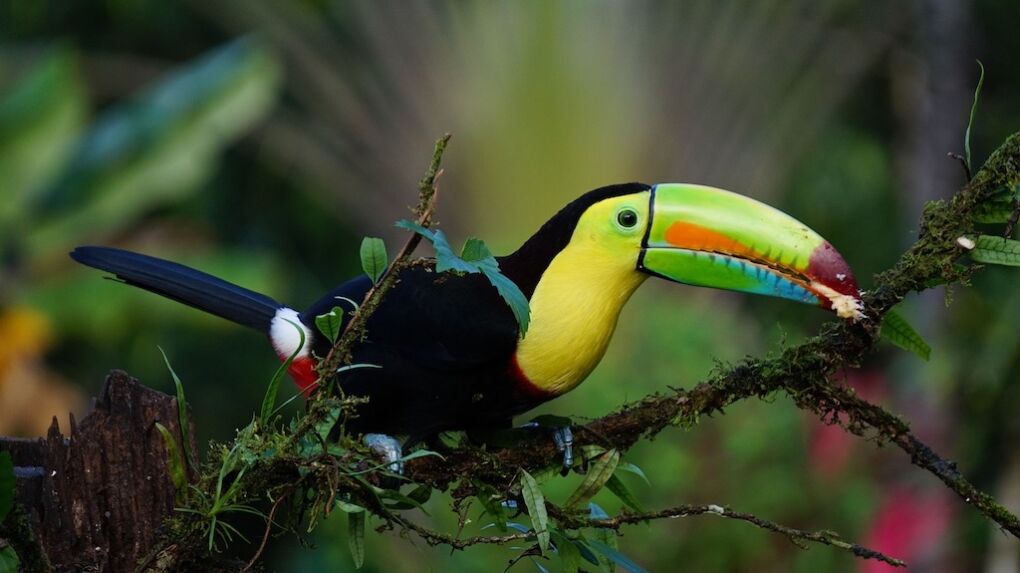
Last thoughts on Costa Rica
Backpacking through Costa Rica is an adventure that will leave you awestruck at the beauty of nature. The experience might even change your perception of humans’ relationship with the environment. Backpacking in Costa Rica sparked a wonderlust that kept me travelling for 7 months! Whether you’re in search of good waves, serene mountains or beach parties, Costa Rica is the perfect destination!
Leave a Comment
Your email address will not be published. Required fields are marked *
This site uses Akismet to reduce spam. Learn how your comment data is processed .
- Israel & Palestine
- United States
Central America
Backpacking costa rica: the ultimate budget costa rica travel guide.
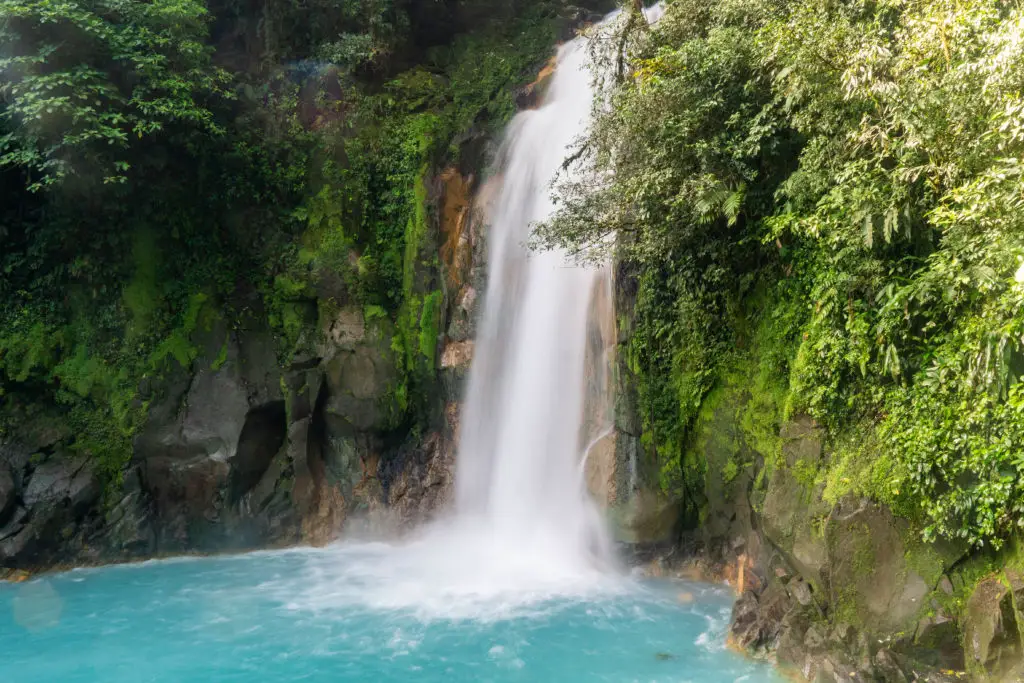
Backpacking Costa Rica: Top experiences
- Jungle trekking and wildlife watching in Corcovado National Park
- Whale watching on the southern Pacific coast
- Chasing waterfalls and impossibly blue rivers in Bijagua
- Waking up to the sounds of howler monkeys at the world’s most affordable jungle lodge in Uvita
- Trekking through dense cloud forest in the Monteverde area
Jump to the list of posts from Costa Rica , or read on for my comprehensive Costa Rica backpacking guide.
Costa Rica itinerary ideas

Costa Rica is a small country that packs a big punch. You can experience a little of everything on a trip as short as one week.
The biggest question when planning your Costa Rica itinerary is whether you want to see the most popular places — which are popular for a reason — or focus on getting off the beaten path.
A typical one-week first time itinerary would involve flying into San Jose and immediately heading to La Fortuna. Spend two days ziplining, hiking and soaking in hot springs before taking the Jeep-boat-Jeep across Laguna Arenal to Monteverde. Take another day or two to hike in the cloud forests and visit chocolate and coffee farms.
Next, head to the coast — Manuel Antonio National Park is a beautiful option, but you’ll have better luck escaping the crowds further south or on the Nicoya Peninsula. Spend a few days wildlife watching in the coastal jungles and lounging on white-sand beaches, and be sure to stop at one of the many waterfall swimming holes. You could split this part of your trip into a couple different beaches, like party-centric Jacó and Tamarindo, surfer-oriented Santa Teresa , or super-chill Uvita and Domenical.
Finally, head back to San Jose or Alajuela (where the airport is) for a day of urban exploration before your flight home.
With two or more weeks, you could stay in the central Pacific region and simply spend longer at each place, or you could head to more far-flung regions. The Osa Peninsula is well worth the long journey to reach it, and is worth 3-4 nights. Alternatively, you could go to the Caribbean side of Costa Rica , which is most worthwhile during sea turtle nesting season in Tortuguero National Park. Rough roads, reliance on infrequent boat transport, and distance mean it’ll take you at least a day of travel in each direction to reach these more remote areas.
Costa Rica weather and when to visit Costa Rica

Like most of the tropics, Costa Rica experiences a dry season and a rainy season. However, the “dry” season isn’t really dry, and the “rainy” season includes a break from the rain.
Dry season in Costa Rica runs from mid-December through April. Visit during this period for mostly-sunny days, warm-but-not-too-hot temperatures, and reliable road conditions. This is also the most crowded (and expensive) time to visit, and you’ll need to book accommodations and popular tours in advance.
In tropical, humid destinations like Manuel Antonio National Park, and in high-elevation cloud forests, dry season simply means “less rainy.” Expect daily showers in these areas, and consistent rain in the Monteverde cloud forest. Dry season is also the worst time to see the iconic Arenal volcano in La Fortuna — it’s frequently covered in clouds.
Rainy season runs from May-November in Costa Rica. It usually rains for a couple hours in the afternoons, but most of the day is dry and sunny. (The same exceptions apply to higher-precipitation areas like Manuel Antonio.) The landscape is incredibly green, crowds are fewer, and prices are lower. However, road and sea conditions can be prohibitive to reaching more remote areas — a 4×4 high-clearance vehicle is essential if you plan to drive, and you need to be comfortable crossing rivers.
Some parts of Costa Rica also experience a “false” dry season for a few weeks during June and July. This is an ideal time to visit for good weather without the crowds. Just keep in mind the roads will still be muddy and waterlogged, so it’s still a good idea to rent a 4×4.
Language in Costa Rica

The main language spoken in Costa Rica is Spanish. Many people who work with tourists also speak English, and it’s easy to find guides who speak French, German, Italian, and other European languages.
Costa Rican Spanish incorporates a lot of local slang. For example, say “birria” instead of “cerveza” to order a beer. Locals are “Ticos,” not “Costa Ricans,” and you’ll hear people use “pura vida” to mean hello, goodbye, thank you, you’re welcome, that’s how it goes, and pretty much anything else in context.
One thing I loved about backpacking around Costa Rica is I could always switch to English if I had to, but most locals were enthusiastic to let me practice Spanish. Unlike in touristy areas in Mexico , where locals automatically switch to English for tourists, many of the Ticos I interacted with asked me if I preferred to try Spanish or speak in English. My Spanish is certainly not great, but I found it easy to understand Tico Spanish when I asked folks to speak slowly.
Bus drivers, folks who work in small shops, and others who don’t routinely interact with tourists are less likely to speak English. You could probably manage in Costa Rica with no Spanish, but a little bit of Spanish comprehension — even if you don’t speak well — goes a long way.
Budget for Backpacking Costa Rica

Let’s get one thing very clear: travel in Costa Rica is not cheap. If you’re backpacking Central America you’ll experience severe sticker shock when crossing the border with Nicaragua.
If you travel in green season, use local transport, stay in hostel dorms, spend most of your time hanging out at the beach and eat exclusively at “sodas” (set-menu restaurants), you could keep your Costa Rica budget under $30 a day. However, you’d miss out on many of the country’s top experiences.
A more realistic travel budget for Costa Rica is around $100 a day. This would allow a couple big-ticket activities like ziplining or guided hikes, you wouldn’t have to stress about national park fees, and you could use tourist shuttles instead of local buses to get around. If you’re traveling in a group of two or more, car rental would also be a possibility at this price point.
If you visit Costa Rica in dry season, want your own room and the flexibility of a rental car, have lots of activities planned and want to occasionally eat at a restaurant with a more varied menu, a budget of around $150 a day will cover it. $200 a day will get you a much higher standard of accommodation.
At the high end, you could plan a true luxury holiday in Costa Rica, spending upwards of $500 a night on world-class jungle lodges and beachfront resorts.
Touristy places such as La Fortuna and Manuel Antonio are radically more expensive and poorer-value than low-key places like Bijagua and Drake Bay.
Sample costs
Costa Rican businesses accept dollars or local colones. The general rule of thumb is to pay in the currency the price is quoted in. So, pay for hotels and tours in dollars, but restaurants, shops and buses in colones. All ATMs dispense colones, and most dispense dollars as well.
You can pay by credit card virtually everywhere (with a transaction fee ranging from 1-15%), but on the Osa Peninsula you need a stash of cash. There are no ATM’s in Drake Bay.
Private room in a hostel : $20 (remote destination in low season) – $50 (popular destination in high season)
Casado (set meal) at a soda : 3-5,000 colones
Cup of coffee at a high-end cafe : 1,500 colones
National park admission : $15, usually only payable by credit card
Bus from San Jose to La Fortuna (four hours) : $4-5
Car rental per day in dry season : $50-75
Two-day trek in Corcovado National Park : $300
Costa Rica visa requirements

For most North Americans and Europeans, Costa Rica is a super-easy country to visit. You don’t need a visa. When you go through immigration, you’ll get a stamp allowing a stay for up to 90 days, although some travelers have reported needing to show proof of onward travel and only getting stamped in for the window before that onward travel. Be sure to verify the departure date on your stamp before leaving immigration.
It’s difficult to extend your stamp, but easy to get a new one — simply leave the country for 72 hours and come back. In practice, at most land border crossings, you can leave for a few hours and come back. Tour agencies in areas near the Nicaraguan and Panamanian borders sell visa-run trips that take care of all the logistics.
Currently Costa Rica does not require a pre-travel COVID test to enter. You need to fill out a health questionnaire within 72 hours of your trip, and if you’re unvaccinated you’ll have to show proof of government-approved health insurance covering the cost of quarantine if you test positive while in Costa Rica. Not all travel insurance sold in the U.S. meets the government requirements — expect this to be quite pricey insurance.
There is a departure tax when you leave Costa Rica — it’s $29 if you exit by air or $8 if you exit by land. Most airlines include it in flight tickets. If you cross a land border, pay at immigration, in dollars or colones.
Accommodation in Costa Rica

Accommodation at the budget end of the spectrum tends to be poor value in Costa Rica, especially when compared with neighboring countries. Brace yourself for frustrations — you’ll pay way too much for really mediocre hostels and guesthouses.
That being said, Costa Rica has some of the most beautiful boutique hotels in the world. If you can swing it financially, being willing to splurge for a couple of nights in the $100-200 range will get you much better money than living that hostel life.
Additionally, there are very good-value hostels in more remote destinations. Uvita and Drake Bay have incredible options for just $20 a night for a private room. Even Monteverde has a great little family-run place for about $25/night.
Costa Rica hostels have free WiFi, well-equipped kitchens, outdoor common areas, laundry service, book exchanges and tour desks. Some have amenities like swimming pools or restaurants as well. Free tea and coffee is common, and a typical breakfast of beans and rice is often included in the room or available for $5 or so.
If you want luxuries like air-con and hot showers, expect to pay big bucks for them.
In addition to the usual online booking platforms, check blogs and guidebooks for recommendations, since some great-value places aren’t on booking platforms. For instance, the lovely Pension Santa Elena in Monteverde only takes direct bookings. (Not an affiliate link — I’m recommending them because they’re great, not because I make money if you book with them.) Booking directly also helps these small businesses recover from the huge drop in tourism the past few years, since they don’t have to pay commissions to the bigger platforms.
Food in Costa Rica

Food is not a great reason to travel to Costa Rica. While you’ll find fresh ingredients everywhere, menu options are repetitive and often lacking in flavor.
If you backpack Costa Rica on a budget, you’ll mostly eat at “sodas” — the Tico term for restaurants serving typical food. These are good-value and friendly dining options, but they have limited menus.
The traditional breakfast in Costa Rica is gallo pinto — a mix of black beans and rice. It’s healthy and filling, but you’ll want to add the local lizano sauce to give it some flavor. The sauce is more sweet/tangy than spicy. Gallo pinto is typically served with eggs, but you can usually ask for avocado instead. It typically includes coffee and sometimes juice, and costs 2,000-4,000 colones.
For lunch and dinner, there’s the ubiquitous casado . The “married man’s meal” earned its name because this is what local wives feed their husbands at the end of a long day. These set meals consist of rice, beans, a salad, some veggies, and a meat of your choice. Expect to pay around 3,500-5,000 colones for a casado at a local soda.
You can always ask for vegetarian casados, even if they’re not on the menu. Pescatarians will appreciate ample fish options. Shrimp and mahi mahi are common on the coasts, but inland it’s usually farmed tilapia. The meat/fish is usually grilled.
The third national dish of Costa Rica is pizza. Quality is high, making this a good option when you can’t stomach another casado. Pizzas feed two people for around 6,000 colones. Taquerias are also ubiquitous, although don’t expect Mexican-level flavor.
In touristic places, you’ll find the usual assortment of international cafes and high-end restaurants. They serve everything from sushi to steak to acai bowls to fancy organic salads.
Raw veggies are safe to eat, even if they were washed with tap water. You won’t get sick from the salad that comes with your casado.
Restaurants and sodas add a 10% service charge and 13% tax to your bill, which is typically not included in menu prices. So you don’t need to tip, but your bill will be 23% higher than expected. Delivery and takeaway is usually available for a small additional fee.
Drinks in Costa Rica

Costa Rica has all the beverages you typically associate with a tropical paradise.
During your backpacking trip, I highly recommend drinking as many batidos as possible. These fruit smoothies can be made with water or milk. You can choose one fruit or a mix. Typical options include soursop, passionfruit, blackberry, watermelon, pineapple and mango. They’re super refreshing on a hot day.
Costa Rica is a major coffee producer. You’ll find the good stuff in the hills around Monteverde and La Fortuna. You can take a tour to learn how it’s grown and harvested — Don Juan Tours is popular. There’s plenty of lower-quality coffee at sodas and cafes, but it’s a lot more affordable. “Lower quality” is still substantially better than you get in much of the world — you won’t find Nescafe here.
Most coffee farms also produce chocolate, making hot cocoa widely available. It’s made with very-near-pure chocolate, and you add the sugar yourself. You can also order “chocolate frio,” or iced chocolate, on the coasts.
You’ll have no trouble finding beer and wine in Costa Rica. The local beers, such as Imperial and Pilsen, are cheap and light. But you can also find craft beer in many shops and sodas. The variety is as you’d expect anywhere — IPA’s, lagers, and sours abound. Wine is pricier than beer and usually imported from South America.
The local moonshine is rum, often produced with coconut. You’ll find high-end craft cocktails at most tourist-oriented restaurants and bars. Prices range from 4,000 colones for a simple pina colada to 6,000+ for a fancy custom cocktail at a swanky beach club.
Activities you can do while backpacking Costa Rica

Costa Rica has been well-branded as an adventure travel destination. And deservedly so. The country is well-set-up for jungle trips for all types of adrenaline seekers — from a slow stroll through the forest to a 50-meter-high Tarzan swing.
The biggest barrier to activities in Costa Rica is cost. Everything is expensive. You want to visit a waterfall for a quick dip? Pay the admission fee. Walk 3 km of trails in a reserve? Pay the admission fee. Zip-lining? Pay the exorbitant admission fee. If you want to keep yourself occupied for long days full of adventure, it’s hard to avoid spending at least $100 a day. And aside from laying on the beach, there isn’t a lot you can do for free.
Less touristic places can be cheaper, but aren’t always. Adventures in Corcovado National Park are well worth the cost, but they aren’t exactly budget-friendly. On the other hand, I skipped the hanging bridges in the tourist centers and did them in Bijagua instead, where I paid just $12 for a three-hour trip — less than half the cost in La Fortuna. And the little-visited Santa Elena Reserve, right next to Monteverde, is about half the cost for twice as many trails that were 90% emptier.
A few of the must-do activities in Costa Rica include:
- A guided walk to spot wildlife — you’ll see much more with a guide than on your own.
- A night hike in the jungle.
- Any option that allows you to see the forest from the canopy: hanging bridges, ziplining, the “Sky Trams” on offer in La Fortuna and Monteverde, etc.
- Visiting and swimming in waterfalls .
- White-water rafting (or flat-water floating).
- Hanging out on the beach — which, unless you’re in a national park, is the rare thing you can do for free.
Transportation in Costa Rica

Getting around is another aspect of the Costa Rica experience where your budget makes a big difference.
If you have more time than money, local buses will (usually) get you (close to) where you want to go. Unlike elsewhere in Central America, chicken buses are no longer common — most routes are served by comfortable, air-con coaches. They only cost about $1 per hour.
The problem with the bus network is that all routes go through major urban centers. And you’re probably not backpacking in Costa Rica for its cities. So you’ll spend a lot of time waiting for bus connections, often getting stuck overnight at transit points.
The next step up in the transit network is tourist shuttles. These offer direct transport between popular destinations, for a much higher price than local buses. For example, it’s about $50 for the three-hour trip from San Jose to Monteverde, or $90 for the six-hour drive from San Jose to Sierpe. The shuttles are convenient — they’ll usually pick you up and drop you off at your accommodation — but they add up quickly.
There are some corners of Costa Rica that you can only reach by boat, and others where taking a boat will save you a ton of time. Boats and ferries aren’t particularly cheap, especially if you want to bring your vehicle. But they’ll save you long days on rough roads. The Nicoya peninsula ferry is one of the most commonly used by tourists.
Car rental in Costa Rica
If you can afford it, the best transport option in Costa Rica is renting a car. This gives you total flexibility for prices not much higher than shuttles.
In dry season, car rental runs $50-75 a day for a high-clearance vehicle (often 2×4). Rainy season is cheaper, but you 100% need a 4×4.
When you look on booking sites, you’ll see quotes as low as $10 a day. But these are before you add the government-mandated insurance. Even if you have insurance through your credit card, or even if you buy it when you book your rental car, you’ll still have to buy this specific insurance at the car rental desk. It’s a government-operated monopoly with fixed costs, typically around $30 per day.
There is no way around this expense, but rental companies aren’t transparent about it. So many people come away thinking Costa Rican rental cars are scams. It doesn’t help that the car companies will try to talk you into the non-mandatory collision damage waiver, which is usually covered by your credit card. Know exactly what you can and can’t say no to, and make sure your credit card covers what you think it does, but there’s no world in which you’ll pay less than $40 a day for a sedan/$50 for an SUV in dry season.
If you rent a car, you’ll also need to budget for gas. It’s not cheap. If you fill up in bigger towns you might pay as little as $4.50 per gallon, but in rural areas it’s more like $5. It’s not unusual to drive a couple hundred kilometers without seeing a gas station — keep your tank at least half full.
Safety when backpacking Costa Rica
Central America has a horrible safety reputation. So it’s no surprise that many travelers wonder, is Costa Rica safe?
The truth is, Costa Rica is one of the safest travel destinations in the Americas when it comes to crime. Travelers have little to worry about beyond pickpockets on crowded buses.
Big cities like San Jose and Alajuela have their dodgy corners, and port towns on the Caribbean coast can be sketch. But these aren’t places you’re likely to find yourself on vacation anyway. If you spend a night in a major urban area before/after your flight out, take a taxi after dark and ask your hostel about safe neighborhoods.
The biggest safety risks in Costa Rica come from the natural world. Riptides sweep swimmers and surfers out to sea. It seems like everything in the jungle can kill you — frogs, vipers, scorpions, insects, trees. Rivers swell to dangerous levels after storms. Volcanoes occasionally erupt .
This is where a little common sense goes a long way. Take a guide if you want to venture into the jungle after dark — and stay behind them. Keep your distance from wildlife, especially peccaries. Heed warnings about dangerous conditions on the coasts. Don’t take your car through a river if you’re not absolutely certain you can cross.
Following basic precautions makes backpacking Costa Rica alone a very safe experience.
Costa Rica travel advice for women alone

Costa Rica is one of the world’s easiest destinations for solo female travelers. In fact, if you’re planning your first solo trip, it would be a great place to dip your toes in to this style of travel.
No one bats an eye at a woman eating alone at a restaurant or having a beer at a beach bar — solo female travel is very common here, including among locals, so you’ll blend right in.
Costa Rican men are highly respectful of women. You might get the occasional flirtation, but people tend to back off if you say you’re not interested.
It’s really easy to form groups to do activities with. You’ll meet friends at hostels and on tours everywhere you go. If you don’t have a group assembled, you can still show up for an activity like a guided walk or ziplining and you’ll be placed with a group to share costs. The backpacking culture trends younger (like early 20’s), but you can always find friends who match your travel style.
The one downside of solo female travel in Costa Rica is the expense of car rental. I still thought it was worth it to have the flexibility (and to reduce my exposure to others during COVID), but financially, a combination of shuttles and tours make more sense.
Ready to get started? Check out the posts from Costa Rica!
Like this Costa Rica travel guide? Pin it!

Carrie is the founder of Trains, Planes and Tuk Tuks. For more than seven years, she's been solo-backpacking around the world to places few other tourists dare to explore -- from Ethiopia to Nicaragua to Jordan and beyond. When she's not on the road, you can find her hiking in the Blue Ridge Mountains and eating the world's best barbecue in her home city of Asheville, NC.
This site uses Akismet to reduce spam. Learn how your comment data is processed .
This is a really helpful guide to backpacking in Costa Rica! I would love to do this someday so thanks for sharing!
I hope you get a chance to visit someday!
It feels good to be able to see people traveling internationally. Keep traveling.
- Destinations
- Top things to do in london in 3 days
- 12 things to do in Amsterdam in 2 days
- Top 12 things to do in Berlin in 3 Days
- Top 10 things to do in Rome in 2 days. Backpacker’s Itinerary
- Top 12 things to do in Madrid in 3 days
- Top Things to Do in Paris. The Ultimate 3-Day Guide
- Interrailing Tips
- Solo Travel Guides
- Best Travel Apps
- Hostel Tips
- Budget Travel Tips
- Best Hostels Amsterdam
- Best Hostels Barcelona
- Best Hostels Belfast
- Best Hostels Berlin
- Best Hostels Dublin
- Best Hostels Edinburgh
- Best Hostels Lisbon
- Best Hostels London
- Best Hostels Malta
- Best Hostels Milan
- Best Hostels Naples
- Best Hostels Nice
- Best Hostels Paris
- Best Hostels Prague
- Best Hostels Seville
- Best Hostels Split
- Best Hostels Valencia
- Best Hostels Auckland
- Best Hostels Brisbane
- Best Hostels Cairns
- Best Hostels Christchurch
- Best Hostels Goa
- Best Hostels Hanoi
- Best Hostels Hong Kong
- Best Hostels Koh Phi Phi
- Best Hostels Koh Samui
- Best Hostels Marrakech
- Best Hostels Perth
- Best Hostels Singapore
- Best Hostels Cartagena
- Best Hostels Chicago
- Best Hostels Havana
- Best Hostels LA
- Best Hostels Medellin
- Best Hostels Mexico City
- Best Hostels New York
- Best Hostels Rio de Janeiro
- Best Hostels San Diego
- Best Hostels San Francisco
- Best Hostels Toronto
- Best Hostels Tulum
- Make a Booking
The ultimate guide to backpacking Costa Rica
Hostelworld Blog | Posted on June 24, 2019 |
It’s not hard to see why Costa Rica is so many people’s first choice when it comes to exploring Central America for the first time, or even when it comes to their first time backpacking. Beautiful, friendly, accessible and inexpensive, it has all the markings of a dreamy backpacking destination. Costa Rica is especially perfect for the adventurous traveller, with countless options for ziplining, rafting, kayaking, cycling, hiking and surfing. If a local tells you that you can travel across half the country on a zipline, they’re only half joking! But Costa Rica truly shines when it comes to its nature and wildlife. With about 25% of the country being a designated national park, and its status as one the most biodiverse nations in the world, Costa Rica is the ultimate nature lover’s paradise.
Jump straight to:
Best time to visit costa rica, costa rica visa, best places to visit in costa rica, best beaches in costa rica, costa rica itineraries, costa rica hostels, getting around costa rica.
- Costa Rican food
Costa Rican culture and customs
Costa rica travel safety, is costa rica safe for solo female travellers, costa rica travel advice, vaccinations for costa rica, backpacking costa rica budget.

Playas del Coco
While the ‘best’ time to visit Costa Rica is said to be from December to April, deciding when to go really depends on your priorities. If you want guaranteed sunshine and don’t mind larger crowds and more expensive accommodation, then you’ll want to visit in the dry season. December and January are beautiful months – the vegetation is still lush and green from the rain, and the rivers are at the perfect swell for rafting. If you do visit at this time of year it’s recommended that you book well in advance to get the best choice of accommodation, especially as some places will enforce minimum stays.
If you don’t mind some rainy days and the potential for muddy roads, the shoulder season is a good compromise between the high and low seasons; it sees better priced accommodation and more chances to have the beaches and sights to yourselves.
If you really can’t stand heat and crowds or are on a shoestring budget, the rainy season might be your best option. Just be aware that the heavy rain might make some roads totally impassable, and some accommodation will close entirely during this time, so plan ahead. The most important thing is to be flexible with your activities so that if you can’t do them on one day you can do them the next. Bear in mind that September and October are the rainiest months and could make doing any activities at all difficult.
If you have decided to visit Costa Rica during rainy season, remember that this does not necessarily mean it’s gonna rain every day of your trip; more likely that you will see sunny mornings and then heavy but passing downpours in the afternoons. Another bonus is that this is when Costa Rica’s rainforests are at their lushest and the waterfalls at their most beautiful.
These months also happen to be the driest on the Caribbean side, so if you do visit at this time of year be sure to check out Puerto Viejo and Tortuguero. Surfing conditions are also best during rainy season.
Weather in Costa Rica
So, it’s a week until your Costa Rica trip and the weather forecast is telling you that it’s downpouring every day – what do you do? The first thing is not to panic. Costa Rica’s steep mountain ranges and positioning between two oceans means that it has a myriad of microclimates, making weather prediction notoriously difficult. Being only 10 degrees north of the equator means that it’s likely you’re going to have beautiful, warm weather for at least part of your trip. If you’re visiting in the high season especially, you’ll be pretty much guaranteed blazing sunshine every day.
Costa Rica has two distinct seasons; wet and dry. These, of course, correspond to the low and high seasons. The wet season runs from August to October whereas the dry season runs from December to April. May, June, July and November are considered the shoulder seasons.
Weather in San Jose
The central valley has some of the most moderate and pleasant weather conditions in the country. It’s relatively dry, the climate mild and the coastal breeze steady. The rainy season here runs from May through November, though the heavy rains are normally seen September through October.
Weather in Tamarindo and Liberia
These Northwestern lowlands are hot and arid, and the weather here is some of the driest in Costa Rica. The beaches have a fairly mild and steady year-round temperature, hovering between 20-27 degrees celsius. The dry season here lasts longer than most of the other provinces, running from about November to June.
La Fortuna, which is slightly East of Guanacaste and closer to the Caribbean coast, has similar weather conditions but is slightly cooler and more humid.
Weather on the Caribbean coast (Puerto Viejo and Tortuguero)
These lowlands are hot, humid and have rainforests. Temperatures remain steady throughout the year, with average day time highs around 30 degrees and night time lows around 24. On the Caribbean Coast you can pretty much count on rain year-round, though often this is limited to early mornings and evenings. The driest months are February, March, September and October.
Weather in the Central Highlands (Monteverde, Turrialba, Tilarán)
With mountain ranges at varying elevations of 3,000 – 5,000 ft, this region is characterised by much cooler temperatures than the other provinces. The central highlands are also known for their cloud forests, the most famous being Monteverde Cloud Forest. Monteverde’s elevation and positioning at a crossroads between the Caribbean and Pacific means that it’s usually damp, rainy and covered in a thick, hazy mist. Unpredictable weather is common, with rain and windstorms sometimes lasting consecutive days. Generally, the best weather is experienced from December through April, then July and August.

Image by Dan Hadfield
Do you need a visa for Costa Rica?
Citizens of most countries don’t need a visa for Costa Rica for a visit of up to 90 days. If you’re not sure, check your country’s Costa Rica visa requirements.
Citizens of all countries must have a return ticket to exit Costa Rica (which must show entry and exit of the country). Most visitors must have passports valid for at least six or nine months on arrival. If you’re unsure where your country stands, check here for a full run-down. All passports must have a blank visa stamp page.
1. Monteverde
Named after its lush green mountains, Monteverde is made up of 70,000 acres of cool, highland jungle that’s shrouded in thick, perennial cloud. Apart from being visually stunning, the forest is also famous for being home to over 2,500 plant species, 500 types of butterflies, 100 mammal species and 400 bird species, including the rare and exotically colourful quetzal. If you’re very lucky you might even spot the golden toad, which is said to only live in this area of the world. For those keen to mix thrills with the striking scenery, Monteverde’s canopy tours – a combination of trails, zip-lines and suspension bridges – is one of the most exciting ways to take in the forest scenery.
Although it’s possible to find budget accommodation within the Monteverde forest perimeter, many backpackers choose to stay in the livelier, more amenity-packed town of Santa Elena, located a short 5km from the forest.
2. Rincon de La Vieja National Park
Rincon de la Vieja National Park is just over 20km from Liberia and surrounds two volcanoes – Rincon, which is still active, and Santa Maria which is dormant. Rincon has pretty much everything a nature lover could want – rainforest, waterfalls, mudpools, volcanic fumaroles, hot springs, cloud forest and a myriad of unique wildlife, including pumas and jaguars. It’s also famous for having high concentrations of Costa Rica’s national flower – the purple orchid.

3. Corcovado
As the largest and most pristine, Corcovado is thought to be the crowning glory of Costa Rica’s extensive national park system. National Geographic has dubbed Corcovado’s 103,000 acres as
‘the most biologically intense place on earth.’ You’ll find tapirs, jaguars, crocodiles, anteaters and sloths among countless other animals. It’s not just the size but the remoteness of the landscape which makes this park so attractive – it’s totally unspoilt. Corcovado is home to endless virgin rainforest and uninhabited beaches.
4. Tortuguero
It’s a testament to the beauty and uniqueness of Tortuguero National park that despite its remoteness, (there are no roads and you can only reach the park by boat or plane), it still remains one of the country’s most visited national parks. The best way to tour the park is to wind through on your own canoe, through the beautifully dense maze of jungle canals. Plan ahead as to when you want to visit, as Tortuguero is famous for having one of the world’s best sea turtle nesting sites – tortuga translates to turtle. Loggerheads and leatherbacks nest from October to March, and green and hawksbill turtles can be seen from July to October.
Because of its remoteness, expect to pay a bit more for accommodation than elsewhere in the country. Having said that, there are still plenty of hostels to choose from and if you have a tent you can camp anywhere along the coast for free.
5. Manuel Antonio
Despite being one of the smallest national parks in Costa Rica, Manuel Antonio spans several natural habitats and is home to a large number of endangered species, most famously the red squirrel monkey. Apart from its lush rainforest, Manuel Antonio is also famous for its white sandy beaches and stunning coral reef. Being blessed with beautiful beaches just a short distance from the capital of San Jose, it’s a popular and bustling town with a lively nightlife. Backpackers looking for the cheapest accommodation can try nearby Quepos. Only 15 minutes away by bus, Quepos is slightly more affordable for restaurants, nightlife and hostels.
6. Arenal Volcano
One of the best parts about visiting Arenal is the drive up to the volcano, as you watch it transform from a miniscule dot to this huge, imposing mountain. Though it hasn’t erupted since 2010 Arenal is still considered active – in fact, it’s still possible to see smoke from the eastern side. Apart from its perfectly conical shape that provides a dramatic visual backdrop for nearby towns La Fortuna and El Castillo, there’s a surreal majesty to Arenal that’s the reason for its unflagging popularity. At sunset dark clouds loom around it, giving it a fierce, burgundy glow, and the occasional underground rumble makes it feel like the land beneath is breathing.
The most popular activities in the Arenal region are trekking (the most popular trail being to La Fortuna waterfall) and visiting the natural hot springs.
While there are plenty of springs to choose from, Eco Termales is well-known for offering the most authentic, open-air experience. Its location among the trees and various cobble stone pools (each one has a slightly different temperature) can’t be beaten. Listen out for howler monkeys; they’re prevalent in this area so you won’t be able to miss their iconic screech!

7. San Jose
Though San Jose is most often seen as a launchpad to other destinations, it’s a fun city in its own right. The best places to visit in San Jose include the Mercado Central and the lavish National Theatre and cafe in downtown. Restored colonial mansions are dotted around the city on quiet, dusty streets in the north, particularly in Barrio Amon, which is also where you’ll find lots of galleries, trendy cafés and colourful street art.

Image by Kristendawn
1. Nicoya peninsula
Remote enough to be unspoilt by tourism and featuring some of the best surf breaks in the country, the beaches of the Nicoya peninsula are the most popular with backpackers. The nearest airport is in the town of Liberia, which is a perfect launchpad for the beautiful Nicoya beaches and Rincon de la Vieja National Park, as well as for backpackers continuing on to Nicaragua.
Mal Paí s and Santa Teresa
At the very tip of the Nicoya peninsula you’ll find this isolated duo, which feature some of Costa Rica’s best surf. For those not into surfing, the beaches offer swimming, snorkelling, horseback riding and long walks on several hiking trails in the surrounding tropical jungle. While still relatively far-flung and hard to reach, increased tourism has brought improved travel options and better road access to both towns.
Considered Costa Rica’s best-kept secret, Samara’s white-sand beach offers picture-perfect scenery as well as kayaking, bird-watching, supping, snorkelling, scuba and sportfishing. The horseshoe shaped bay it’s nestled in also means that Samara is one of Costa Rica’s safest beaches, making it an ideal destination for mellow, low-key travel. Hurry up and visit though, as each year more and more tourists are discovering this water-lovers paradise.
Aside from its mangroves, tropical forest and beautiful coastline, Montezuma is most famous for its free-spirited, artsy vibe. Embrace your inner boho and attend a local yoga class, or a low-key film or poetry festival. Don’t be fooled by the laid-back vibe however, as Montezuma knows how to throw a party once the sun goes down, boasting some of the best nightlife of all the Nicoya beaches.
The village itself sits within high cliffs and a jungle which features some of the most famous waterfalls in the country – Montezuma falls.
Just north of Tamarindo is the stunningly picturesque Conchal beach, one of the most beautiful beaches in the country. Brilliant white sand and millions of tiny seashells sprinkle the palm-fringed shoreline of the beach – hence the name conchal (concha translates to shell in Spanish). The turquoise and emerald waters are a rarity on the pacific coast and make snorkelling here a must. The beach is almost always serenely quiet as tourists head to more developed nearby beaches.
While all the beach towns in Costa Rica can fairly be described as chilled-out, Tamarindo is not quite the hippy mecca that Montezuma is – having earned itself something of a party rep and being better for beer, burgers and surf than smoothies, kale and yoga (though the latter is available wherever you go in CR). As the most accessible and arguably the best surfing spot (even for novices), Tamarindo beach remains as popular as ever. The beach is also famous for being part of Las Baulas de Guanacaste Marine National Park, a protected area that serves as a safe place for the leatherback sea turtle population.

2. South Pacific
dominical.
Another popular, laid-back surfer’s paradise, Dominical beach is flanked by lush green landscapes on one side and deep blue ocean on the other. The waves here can reach up to 10 feet – tall enough to please even the most hard-core thrill-seekers. Though not what you’d typically call #beachgoals with its dark, rocky sand, the sunsets here do not disappoint. Neither does the company – Dominical’s popularity with surfers and backpackers means that it’s managed to retain an authentically chilled, coastal vibe.
While Dominical is chilled out, it’s fair to say that Jaco is the opposite. It’s still a carefree surfer town, but the focus here is more on partying than napping in your hammock. Lively, bustling and with great dining and nightlife, Jaco is the perfect place to let loose on the way to or from nearby San Jose and Manuel Antonio National Park.
3. Southern Caribbean Coast (Limon Province)
Over on the Caribbean side of Costa Rica are the tropical, world-renowned surfer beaches of Limon province.
Puerto Viejo de Talamanca
Once only a far-flung destination for intrepid surfers, Puerto Viejo is becoming increasingly popular with backpackers attracted to the laid-back easy charm of its surfer lifestyle and authentic local scene, not to mention the unique volcanic-sand beaches and proximity to national parks. Despite its increasing popularity, Puerto Viejo is still rarely crowded (particularly in the rainy season when some of the best surf is to be found) and still has a very chilled out, sleepy vibe. Explore the quiet backstreets and the colourful Caribbean houses that line them. Unlike some other popular Costa Rica beaches, cheap food, accommodation and nightlife is easy to come by.
Punta Uva/Playa Evita
Quiet Punta Uva beach boasts golden sands, coral reefs and crystal-clear waters, all backed by the dense jungle of the Gandoca-Manzanillo Wildlife Refuge, where you’ll find monkeys, sloths, parrots and the great green macaw. The coral reef located just offshore also makes Punta Uva a fantastic snorkel beach.
Also located in Gandoca-Manzanillo Wildlife and Marine Refuge is the small, quiet fishing village of Manzanillo. Much like Punta Uva, the main attraction of this tiny town is its palm-fringed golden sand and its warm and fabulously turquoise Caribbean waters that are exceptional for snorkelling.
You can also dive, explore by kayak or even take a ‘dolphin tour’ of the coast to catch a glimpse of the three species of dolphins that make this their home. Located at the very end of the coastal road from Puerto Viejo, from Manzanillo you can take one of the several dirt road tracks that lead straight into the tropical jungle, making it feel like the final pitstop on a journey through paradise.
Many of Costa Rica’s most beautiful beaches are to be found, unsurprisingly, it its national parks. Not only are they utterly unspoilt, they’re also guaranteed to offer glimpses of Costa Rica’s famous wildlife. Make a short trek from the entrance of Manuel Antonio National Park and you’ll come to a stunningly white, palm-fringed beach which hundreds of capuchin monkeys have decided to call home.
The main draw of the remote Tortuguero beaches is turtle-nesting season. Watch green sea turtles, leatherbacks, hawksbills and more nesting on the beaches in the park from July to October and February to April.

Costa Rica 2-week itineraries
The generalist:
Day 1 – San Jose
Day 2-4 – La Fortuna/Arenal
Day 5-8 – Manuel Antonio National Park
Day – 9-10 Dominical
Day 10-11 Playa Uvita
Day 11-13 Corcovado National Park
The nature lover:
Day 2- 5 Tortuguero National Park
Day 5 – 8 La Fortuna/Arenal
Day 8- 11 Monteverde Cloud Forest
Day 11- 13 Manuel Antonio National Park

Manuel Antonio National Park
The beach bum:
Day 2-5- Manuel Antonio National Park
Day 5 – 7 Jaco
Day 8 – Liberia
Day 9 – 11 Tamarindo
Day 11-13 Samara
Costa Rica 3-week itineraries
Day 2-5 La Fortuna/Arenal
Day 5-8 Monteverde Cloud Forest
Day 8-11 Jaco
Day 11-14 Tortuguero National Park
Day 14-17 Puerto Viejo de Talamanca (Including Punta Cocles, Punta Uva and Manzanillo
Day 17-20 Manuel Antonio National Park
Day 9 Liberia
Day 10 – 13 Rincon de la Vieja National Park
Day 13-16 Tortuguero National Park
Day 16-18 Manuel Antonio National Park
Day 18-20 Corcovado

La Fortuna waterfall
Day 1 San Jose
Day 2-4 Manuel Antonio National Park
Day 4-7 Jaco
Day 8 Liberia
Day 9-11 Tamarindo
Day 11- 13 Samara
Day 13-16 Santa Teresa/Malpais
Day 16-20 Puerto Viejo de Salamanca (Including Punta Cocles, Punta Uva and Manzanillo
Hostels in Monteverde
Most of the affordable accommodation to be found in Monteverde is in nearby Santa Elena. Hammock House is a typical Costa Rican family home with a good location and very affordable dorms, starting from £6, as well as private rooms. Breakfast is included and the friendly owner is more than happy to help with questions. Slightly more expensive but right in the middle of town is Monteverde Backpackers, which has a chilled out common area and social vibe, and is only a minute’s walk from the town centre. Breakfast is DIY style and free. Beds start at £9.
If you have a slightly higher budget, Camino Verde Hostel has comfortable private rooms and stunning views of the surrounding countryside from its balcony area. It’s just a short walk from town and includes a very good free breakfast.

Camino Verde Hostel
Hostels in Corcovado National Park
Only reachable by boat, Corcovado is not the easiest place to find affordable accommodation, but Martina’s Place on beautiful Drake’s Bay offers clean, affordable rooms just 200m from the beach. It’s also close to amenities and has free Wi-Fi and coffee. Rooms start at £10.
Hostels in Tortuguero National Park
Aracari Garden Hostel offers beautiful hammock-filled gardens, cosy common areas and clean rooms, with dorms starting at £10 and just £23 for a private.
Hostels in Manuel Antonio
Views from hostels don’t get much better than at Vista Serena . Perched on a mountain, Vista Serena looks out over lush jungle and sweeping views of the Pacific. Hammocks are dotted everywhere and free amenities include Wi-Fi, coffee and toast. Beds start from around £9.
Hostels in San Jose
The ever-popular Costa Rica Backpackers offers cool accommodation at very reasonable prices. Dorms start from £6.50, which includes free tea and coffee, Wi-Fi and luggage storage. The rooms open out to a large garden full of hammocks and a communal pool where the tunes are always banging. There are two bars on site as well as a reasonably priced restaurant.
It doesn’t get much more chic than Capital Hostel La Ciudad . Stylish and modern, the dorms are pod-style and the communal areas are luxurious. The whole hostel is spotlessly clean, the large breakfast is complimentary, and the vibe is peaceful and laid-back. Can you believe you can get all this from just £12 per night?
An old manor-style house with a large beautiful garden, Hostel Casa del Parque is a good budget option with dorms starting at £8. The location is one of the hostel’s biggest draws, being right in the centre of San Jose and close to all amenities. Freebies include Wi-Fi and tea and coffee.

Hostel Casa del Parque
Hostels in Arenal, La Fortuna
You know you’ve spotted a good deal when the hostel is not only the most affordable, but also has outstanding reviews. Small but right in the centre of town, hip Arenal Container Hostel provides clean dorms set up in old shipping containers. Funky murals decorate the outdoor, hammock-lined communal areas. The staff are incredibly friendly and knowledgeable and will help you organise tours and answer any questions. Dorms start from £8.
Hostels in Nicoya Peninsula
If you’re headed pretty much anywhere in the Nicoya Peninsula (or on your way to or from Nicaragua) you’re bound to spend at least a night in Liberia, the launchpad to the best destinations in the area, including Rincon de La Vieja National Park.
Hospedaje Dodero Hostel is extremely popular – it’s cheap and ticks all the boxes. The rooms are spotlessly clean and the service is friendly, but the main draw is the location just 100m from Liberia’s main market, where you’ll find endless food options. It has a communal kitchen and free Wi-Fi Private rooms start from £13 – book in advance if you want one with air con!
Congos Hostal Liberia has wood-panelled rooms starting at £7, some with a patio area. It also offers barbecue facilities, a large garden with hammocks, a shared lounge, free Wi-Fi, hot drinks and a communal kitchen.
Hostels in Mal Pais and Santa Teresa
Hostel Dos Monos South has clean, air-conditioned rooms and is located right at the intersection of Mal Pais and Santa Teresa beaches, just metres away from bars, restaurants and grocery stores. The atmosphere is social and breakfast and Wi-Fi are free, not to mention that the hostel also offers surfing lessons! Dorms start at £6 a night.
Hostels in Samara
Colourful Matilori offers cosy, cheerfully decorated dorm rooms starting at a very reasonable £8. The location is excellent – close to the beach and restaurants – and the atmosphere is very social, with two open communal kitchens and a large shared area with tables and hammocks. The staff are awesome, and always happy to help.
Hostels in Montezuma
Hostel locations don’t get much better than this. Proyecto Montezuma is a TEFL, surf and Spanish school which also provides accommodation with incredible views from its rooms, garden and own stretch of beach. It’s also very reasonably priced, especially for Montezuma which is one of Costa Rica’s pricier spots. The hostel is a ten minute walk from town and a two minute walk to the famous Montezuma waterfalls. Amenities include a communal kitchen, BBQ facilities and free Wi-Fi, with dorms starting at £9.
Hostels in Tamarindo
Modern, centrally located and with AC in every room (this is pretty important in Tamarindo), Blue Trailz Hostel and Surfcamp is especially popular with the surfing crowd. Guests get discounts on boards, lessons, tours and bikes from their shop out front. Enjoy a cosy communal area, guest kitchen and free Wi-Fi, with dorms starting at £8.
Hostels in Puerto Viejo
Quiet, cosy and right in the middle of town is Roots Family . Lovingly decorated and made entirely out of bamboo, this is one pretty hostel. The staff are friendly and helpful and the vibe is very social but chilled. The location is a 100m walk to the beach and five minutes to the town’s restaurants and bars. It’s also 300m from the bus stop, where you can catch a ride to the beautiful nearby beaches all the way down the coast. Dorms start from £9.
Hostels in Jaco
Room2board is popular for a reason – it has everything we love in a hostel. Clean, modern, spacious, fun – and to top it off, it has a huge outdoor pool/social space. Room2board also has a poolside movie screen, free yoga classes and perhaps best of all, a sunset-facing rooftop decked out with hammocks. When the party is in your backyard it can be hard to leave the hostel! Dorms start at £12.50.

Hostels in Dominical
Not only is Cool Vibes Beach Hostel right on Dominical’s beautiful coastline, it’s also a minute’s walk from the bus stop and nearby shops – including one of the most popular cafes in town. Bonuses include a small pool, hammocks and a huge kitchen.
The three most popular ways of getting around Costa Rica are by bus, shuttle (shared or private) or car rental. The choice comes down to whether you want to save time, or money!
Public bus transport in Costa Rica
By far the cheapest way to get around Costa Rica is by local bus, either directivo (direct) or colectivo (with multiple stops). Short bus trips of three hours or less will cost around 2000 CRC (£3), whereas longer trips can cost up to 6000 CRC (£8). Local bus rides, for example within San Juan, cost about 200 colón (25p).
- It’s an efficient and affordable way to travel between destinations
From San Jose, you can take the public bus to nearly every popular tourist destination. You can check specific routes here .
- You can meet the locals and share stories with fellow backpackers
Public buses are a great way to experience local life, as well as share tips and stories with other travellers that are also heading to your destination.
- You can sit back and relax
No having to navigate tricky roads for you my friend!
- They can be slow
Though the public buses quite often leave late, the directivo routes (which go directly from one large town to another) won’t necessarily take that much longer than a shuttle bus or rental car. If you’re travelling from a smaller town where only the colectivos are available however, the various transfer stops in different towns can significantly increase your travel time.
One instance of this is the journey from La Fortuna to Manuel Antonio – which takes 4 buses and comes in at about 9 hours of travel instead of 4!
- They can be tricky to navigate
Though it’s the biggest transportation hub in the country, San Jose doesn’t have a main bus terminal. Ticket offices are scattered around the city – some large bus companies have big terminals that sell tickets in advance, while others have little more than a stop. Check the Tourism Board’s brochure for information on where your bus leaves from. It also has phone numbers to call for more information on your route.
Schedules change wildly, so it’s a good idea to confirm times when you buy. Buses often leave late or early too so it’s recommended that you get to your stop about an hour before your ride is due to leave.
There are often no schedules posted at stops. Again, check the brochure for the terminal address and company name which will be written on the front of the bus, along with the name of the destination. A lot of drivers won’t speak English so it’s a good idea to learn some basic Spanish phrases to make navigation easier. Alternatively, ask your fellow backpackers at your hostel/hotel about routes and travel tips.
- They can get crowded
Though Costa Rica is generally a safe country, it’s a good idea to keep an eye on luggage in overhead racks, especially when the bus is crowded. For popular routes it’s also advised to buy a ticket at least a day ahead.
Private/shared shuttles
Shuttles are provided by Gray Line, Monkey Ride , Tropical Tours , Easy Ride and Interbus . You can either make reservations online through their websites or book through your hostel. My personal recommendation is the very reliable Interbus.
- It’s faster and more convenient than the bus
There is no need to wait for people to get on and off or make transfers. Shuttles also tend to be more punctual than local buses.
Shuttles also have door to door delivery – picking you up at your accommodation as well as dropping you off at your destination accommodation. Unlike car rental you can just sit back, relax and enjoy the scenery or chat to fellow passengers.
- They are comfortable and clean
Shuttles usually come with air conditioning, have larger, more comfortable seats than the public buses and are immaculately clean. They normally carry under twenty people.
- They cost a lot more than public transport.
A shared shuttle can cost between £15-65. Remember however that with a shuttle you can cut out the potential cost of a taxi to and from the bus stop.
- Less flexibility than car rental
Since shuttles are on a schedule and must consider other passengers, flexibility is limited. Set schedules also mean that they cannot wait for you in the event of a delay. They will assist you in making arrangements for the next shuttle, but this is never guaranteed to be on the same day.
What’s the difference between public and private shuttle?
With a private shuttle there is no schedule, so everything is pretty much at your convenience – they can pick you up directly at the airport or from your hotel and you can make stops along the way to your destination. Shared shuttles will not pick you up if you’re staying somewhere very remote, unlike a private shuttle.
Private shuttles are obviously more expensive than shared, however the price is not per person so for a larger group it could actually work out as cheaper. A shared shuttle from Arenal to Tamarindo is around £40 per person and a private is around £200. At this rate it actually works out cheaper to go for the private shuttle if you have more than four people. This works for groups of up to 8 people, as the larger vehicles are more expensive.
- Flexible and convenient
The biggest pro of renting your own private vehicle in Costa Rica is the flexibility it offers. You can pick one up at the airport and then do everything at your own convenience. See a pretty spot? Pull over and take a picture. Hungry? Stop at a local SODA for lunch.
Having your own rental car will allow you see areas of Costa Rica you couldn’t have done otherwise. A lot of the less touristy areas don’t have have public transport links or they require an SUV, so having your own car will let you explore off the beaten track! .
- Road trips are always fun
Whether it’s the sense of freedom they give, the impromptu chats on the meaning of life, or just the mysterious draw of the open road, there’s something about road trips that are a lot of fun. Crank up your favourite tunes and watch the beautiful scenery go by.
- The condition of the roads
Road conditions vary a lot. While the Interamericana (the primary Costa-Rican highway) is relatively smooth, a lot of secondary roads are barely passable, or at best narrow, potholed and windy. A lack of streetlights also means that many people are not comfortable driving at night.
Aside from the main tourist spots, the more rural areas have a lack of signage, which can be intimidating – consider getting a GPS system or the Waze app.
- Less sociable
One of the nice things about getting public transport or shared shuttles is that you can chat with other travellers and get helpful tips and recommendations about your destination, and possibly make new friends to hang out with.
- Risk of theft
Sshh!... This is a secret
Discover the "next hot backpacker destination" this 2024.
Just so you know, we will be able to see if you open our emails to help us monitor the success of our marketing campaigns. You will find further details in our data protection notice.
Costa Rican food
If there’s one thing that Costa Rica is famous for, it’s the beautifully rich, verdant nature of its unspoilt landscape. And you know what that means – deliciously fresh natural produce. Costa Rican food relies heavily on the use of fruit and vegetables, and is made with fresh ingredients. This is what makes even simple-sounding Costa Rican meals so tasty! The cost of food in Costa Rica is low, so you’ve got no excuse not to try a bit of everything.
Costa Rican traditional dishes
The best place to try typical Costa Rican food is at a local SODA, which are small, family run businesses that serve simple but tasty dishes. The food will be more authentic than what you’ll find at a more touristy restaurant, not to mention waaay cheaper. Look for SODAs with lots of locals dining, or ask your hostel for a recommendation.

Gallo Pinto
Gallo pinto is a typical Costa Rican breakfast dish made of cilantro, rice and beans. This base is then mixed with a choice of other ingredients to give it some spice; typical options include red bell peppers, onions and most importantly Salsa Lizano – a smoky, slightly spicy national sauce. The end result gives gallo pinto a speckled look, which is how the dish gets its name – gallo pinto translates to ‘spotted rooster’. At breakfast, gallo pinto is usually paired with eggs or meat.
Casado is more of an assorted meal than a single dish, usually including white rice and black beans as the core element and then accompanied by a protein (usually fish, chicken, or beef) and a side. The sides vary from cabbage slaw, fried plantains, picadillo, potato or a pasta salad. The location within the country will determine which meat you receive, or which you can choose from. A casado typically also includes a fresh fruit juice.
Casado is most popularly served at lunch and is a Costa Rican classic, found at almost every restaurant or SODA across the country.
Olla de carne
Olla de carne is a typical Costa Rican soup dish. A simple but rich and hearty beef stew, olla is a favourite weekend staple that incorporates a number of Costa Rican vegetables, including cassava, yam, carrots, corn, plantains, potato and taro root. It frequently comes with a side of rice and beans.
Normally served as an appetiser or snack, patacones are smashed, twice-fried plantains that are guaranteed to be one of the most delicious things you’ll eat in Costa Rica. Just the right amount of crunchy and chewy, sweet and salty, patacones normally come served with guacamole, pico de gallo or mashed black beans.
Ceviche de Tico
Though ceviche originated in Peru, it’s a favourite dish on many typical Costa Rican menus, particularly on the coast.
Chunks of fish, usually sea bass, are cut into small chunks and mixed with citrus and thinly-sliced red onions, red pepper and cilantro. The acid in the juice “cooks” the fish, giving it a refreshing, zesty taste. It’s often accompanied by plantain or salted crackers.
You can also find a vegan version – ceviche de banana verde – made with green banana, lettuce, onion, celery, sweet pepper and lime juice.
Chifrijo is a very popular dish made up of chicharrones (twice-fried pork rinds) and frijoles (beans). Most commonly served as an appetiser or snack, chifrijo is made by layering rice with black beans, chicarrones and pico de gallo – a mix of tomato salsa, onion, cilantro and lemon. Add-ons include avocado and jalapeno. It usually comes served with fresh tortilla.
Chifrijo is a fairly new invention – if you want to try it but can’t see it on the menu, ask the server if they have chicharrones with beans. The chef who proclaims to have invented it has filed lawsuits against restaurants serving the dish which has led to some renaming it chifrijol, chichifrijo, and el innombrable (“the nameless”)!
Rondon is a fish soup dish that originates from Costa Rica’s Caribbean coast. With coconut milk as its base, rondon combines a deliciously fishy medley of fresh fish, crab, corn, yucca, plantain, yam, vegetables and Caribbean spices such as panamanian pepper. The combination of ingredients can vary widely – the only thing about rondon that’s consistent is that it’s always delicious.
Unlike the rest of Costa Rica where the food is generally mild, the food on the Caribbean coast tends to be more heavily spiced and fragrant. Popular ingredients include allspice, cinnamon, curry, chilli, ginger, and of course, coconut.
Caribbean rice and beans
Unlike rice and beans in the rest of Costa Rica, on the Caribbean coast the ingredients are slow-cooked in fresh coconut milk and made with either red or black beans. Other ingredients include panamanian peppers, thyme, garlic, curry powder, red onion, red bell pepper, sugar, soy sauce and coconut oil. It’s typically paired with patacones and slow-cooked meat or fish – and always hot sauce.
Tres leches
If the indulgent tres leches cake is not exclusively Costa Rican, it’s probably the most popular dessert in the country. It’s made by soaking sponge bread in three different types of milk – whole, evaporated and condensed. The icing is a vanilla whipped cream and often includes fruit toppings.
Costa Rican people
Though the majority of Costa Ricans are of European descent, various groups of indigenous people still remain, making up about 2.5% of the population. These are namely the Bribri peoples in Puerto Viejo, the Cabecar in Salamanca and the Chorotegas in the Nicola peninsula, alongside many other smaller groups.
Non-indigenous cultures in Costa Rica include that of the Guanacaste people in the northwest. Originally from Nicaragua, Guanacaste culture is characterised by an attachment to the vaquero (cowboy) lifestyle from when colonial settlers brought people to work on the ranches in this region. Topes (horse parades) and bullfights are still very popular.
Afro-Caribbean citizens make up about 3% of Costa Rica’s population, making them the largest immigrant minority in the country. Fishermen of Afro-Caribbean heritage began selling on the Costa Rican coast around the 1850s, and a strong community of Creole-English speakers has grown since in this region. These days the Caribbean coast is one of the most popular tourist destinations in the country, attracting people with its tropical beauty, warm people, delicious food and famous calypso and reggae music.
Costa Rican language
The official language of Costa Rica is Spanish, but there are lots of small differences that make Costa Rican Spanish unique. Costa Ricans call themselves ‘ticos’ to refer to the way they use the diminutive ‘ico’ instead of the classic Spanish ‘ito’ from ‘poquito’ meaning small. Ticos use the suffix so much that it doesn’t necessarily mean that something is small (gato becomes gaticito for kitten) but can be used to alter the meaning of a word in a variety of ways – for example caliente (hot) can turn into calientico (warm), and momento (moment) to momentico (a quick second). A lot of the time ‘ico’ or ‘ito’ is used just to be cute – so you might refer to someone you’re fond of as Juanicito instead of Juan.
This gentle or ‘cute’ way of speaking can be seen in other aspects of the Costa Rican language too. If a tico asks for something at a restaurant for example, they will use the softer word ‘regalar’ (meaning ‘to give me a gift’) rather than the much more direct ‘dar’ (meaning ‘give me’).
Costa Rican Spanish is also rich in slang words that you’re unlikely to come across outside of the country. Some of them are as follows:
- Mae – ‘dude’ or ‘guy’.
- Pura vida – literally translates to ‘pure life’, but has many different meanings.
- Chepe – slang for ‘San Juan’
- Zarpe – last round of drinks
- Brete- an informal word for work
- Jumas – to be drunk
- Guaro – alcohol
- J. (nos juimos) – ‘we’re outta here!’
- Que camote – ‘that’s nuts’
- Tuanis – ‘c’ You’re more likely to hear this between the surfers in coastal areas.
- Tata – ‘father’
- Goma –
- Presa – traffic
- Manda huevo – ‘ c’mon!’
Alongside Spanish and the Creole-English spoken along the Caribbean coast, there are five living local indigenous languages spoken by the descendants of pre-Columbians. Those languages are Cabecar, Bribri, Aleku, Guaymi and Buglere.
Far from being a simple stereotype or catchphrase, the phrase pura vida aptly reflects Costa Rican culture. When a Mexican movie of the same name came out in 1956, Costa Ricans related instantly to the optimistic philosophy of the movie’s main character and readily adopted the phrase. Not only do ‘ticos’ now say it all the time, they live by the concept too.
Pura vida literally translates to ‘pure life’. While it can be used as a greeting or farewell, Pura vida is more than that, it describes a feeling or attitude rather than having one specific meaning. Pura vida can be used in almost any context – it means living life with a positive and optimistic outlook, it means not sweating the small stuff, it means being friendly and polite, it means living in the moment, and above all, it means being grateful for what you have.
Costa Ricans generally take a laid-back, peaceful approach to life. They proudly embrace the spirit of ma ñana (tomorrow) – putting things off for another day – and follow ‘tico time’ as opposed to ‘gringo time’, the latter being used for those rare occasions where one must actually be punctual.
Costa Ricans are also unfailingly polite, so much so that they’re famously adverse to saying no, and would rather hover around a topic than admit they don’t know something or can’t help you. Manners are taken seriously, and warmth and generosity is valued above all else.
Costa Ricans are politically moderate too. Strikes and demonstrations are common, yet people behave respectfully, while election day traditionally has a celebratory atmosphere.
Domestic and international peace has long been a priority in Costa Rica. In 1948, the country abolished its army and redirected the money towards health and education. Its University of Peace, established in 1980, offers a master’s degree in peace and conflict studies.

Green Costa Rica
Powered predominantly by renewable resources (95%), Costa Rica is not only one of the happiest countries in the world, but also one of the greenest. By 2021, they plan to be the first country to become completely carbon neutral as well as banning the use of all single-use plastics.
Spurred by the destruction of its virgin rainforests to logging and agriculture, Costa Rica began converting parts of its territory to national parks in the 1970s. These days, over 25% of the country is protected land. This is the largest percentage of territory protected out of any other country in the world.
Costa Rica is also incredibly innovative in its dedication to going green. In San Jose, vehicles are permitted downtown only on certain days, depending on the license-plate number. If you live in a certain area for example, you can’t drive your car on a Tuesday. A planned commuter train will also cut down on vehicle pollution. To put Costa Rica’s efforts into context, the average Costa Rican has a carbon footprint that’s one-fourth that of the average American.
Keep an eye out for green hostels – Costa Rica is full of hostels that honour sustainable practices.
While Costa Rica is one of the safest countries for travellers in Central America, it’s always wise to follow certain safety precautions, especially as the country has seen a rise in tourism-related crimes in recent years.
Statistically, nature still poses more of a threat to travellers in Costa Rica than violent crime, though this isn’t something to be too worried about. Just be aware of a few things when travelling around the country:
Probably the biggest safety threat to the Costa Rican tourist are riptides, the strong currents found off the Costa Rican coast. Most beaches don’t have lifeguards so it’s up to you to be careful. If you are caught in a riptide, the most important thing to remember is not to panic. Instead of trying to swim back the way you came (this may be impossible and only tire you out), you should swim parallel to the shore until the riptide dissipates.
The danger of travelling to Costa Rica in the rainy season is that severe bouts of rain can occasionally result in landslides, mudslides and flooding, especially in the Atlantic section of the country. Be careful when entering canyons and always monitor local and international weather updates from the National Hurricane Centre and World Meteorological Organization . Flooding can cause disruption to essential services, so keep an eye on these websites and stay prepared.
If you’re going white water rafting, bear in mind that in times of flooding rivers can turn deadly. Always choose a reputable rafting/adventure tour company with good reviews.
Volcanoes and earthquakes
Costa Rica has 16 volcanoes in all, several of which are still active. A number of the most popular volcanoes were closed to the public due to increased activity in recent years. Miravalle and Irazu have since reopened and Poás has partially reopened. However, regular intermittent activity means that this information changes regularly so be sure to check on the status of whichever volcano you intend to travel to.
Most people visit Costa Rica’s volcanic national parks with absolutely no issue, but it’s always a good idea to take some precautions. If you wish to hike a volcano, it’s advisable to go with a guide who’s an expert on the area and will provide you with all the appropriate gear. If going it alone, refrain from entering prohibited areas, which are usually clearly marked. Any warnings should be seriously heeded.
Due to its location on the edge of the Pacific Rim’s ring of fire, Costa Rica can experience frequent earthquakes. Read up on earthquake safety precautions before travelling.
Hiking and wildlife
Costa Rica is a popular destination for adventure sports enthusiasts. Be sure to check the safety standards for any tour operator you choose and check that they have the appropriate certifications and good reviews. Check that life jackets for rafts and adequate safety equipment for canopy tours are provided.
For the more remote nature tours, the use of a guide is strongly recommended. If you’re keen on going it alone, make sure you carry maps, extra food, lots of water and a compass. It’s also always a good idea to let someone know where you’re going.
Be aware that Costa Rica’s wildlife can pose a threat to hikers, particularly in the remote Corcovado National Park. Be especially aware of crocodiles when hiking near rivers. Don’t swim in the mangroves or estuaries where they tend to be hard to spot.
While all of the above may sound scary it’s really just stuff to be aware of. With millions of trouble-free visits to Costa Rica every year, the scariest thing you’re likely to encounter is a mosquito bite!

Scams and petty crime
Scams are something to be aware of when travelling in any country, but there are a few that are more common in Costa Rica:
- Beware of bag snatching, one of the most common crimes on tourists in Central America.
- Make sure to ask approximately what your taxi fare will be before getting in – the classic scam of telling you the ‘meter’s broken’ once you’re already in is rife.
- Car break-ins are common in Costa Rica, so make sure you never leave any valuables in your car, even when you’re only leaving it for a short while.Rental cars are especially attractive to would-be thieves.
- Avoid people that want to ‘help’ with your bags – this is often a scam.
- Keep an eye on your bags in overhead lockers on buses.
- Don’t leave your bags unattended at the beach
Costa Rica is considered safe for female travellers. About 2 million tourists visit Costa Rica each year (more than half of which are female) and most visits are trouble free. However, sometimes Costa Rica’s long-standing reputation as a safe tourist destination tempts people to let their guard down. It’s always important to keep your wits about you and follow your gut instinct. If something feels dodgy, it probably is.
A few tips for solo female travellers:
- Make friends– travelling in a group is much more likely to deter trouble.
- Inquire with the staff at the hostel you’re stayingat about the safest areas/places to go – they’ll be experts.
- Choose accommodation that has good reviews and has been tried and tested by previous travellers.
- Don’t walk alone at night – instead, it’s best to take a taxi. Only take licensed taxis which are either red or orange.
- Don’t carry large amounts of cash and consider using a moneybelt.
- Don’t flash the cash or wear expensive accessories.
- Carry a copy of your passport with you at all times
- Stay away from drugs– a lot of the crime that occurs in Costa Rica is drug-related. It’s not worth getting involved.
- Get good insurance. Travel insurance will protect you against theft, injury, illness and cancellations. You can get comprehensive protection in case anything goes wrong.

Enjoying the sunset at Manuel Antonio
What to pack for Costa Rica
- Sunscreen – while it’s possible to purchase sunscreen in Costa Rica, options are limited and recognised brands can cost 3-4 times as much as back home. Buy a brand that’s reef-friendly!
- Mosquito repellent – Costa Rica is a tropical country, which means that mosquitoes and other creepy-crawlies are abundant, especially during rainy season. While most insects are harmless, mosquitoes can transmit diseases like Zika and Dengue. There are plenty of natural options but the most effective repellents contain a high DEET percentage.
- Raincoat – while absolutely essential in the rainy season, a raincoat is a good idea whenever you’re travelling. With 12 different micro-climates, the weather in Costa Rica is never predictable, and it can rain heavily wherever it is you go (it’s called the rainforest for a reason). Dominical,Uvita, Monteverde, and the Osa Peninsula are especially crazy during the dry season and the Caribbean Coast experiences rain all year round.
- Quick-dry clothes/towels – nothing dries fast in the tropics, so mildew and damp clothes can be a problem. If you’re not on a shoestring budget, consider buying some fast-drying sportswear. Microfibre towels are fast drying and anti-microbial – so no mildew!
- Hiking boots/shoes – while you might be tempted to just pack flip flops for your Costa Rica holiday, it’s best to invest in a pair of sturdy hiking shoes. You’ll no doubt want to trek at least a few of the beautiful trails, or you may unexpectedly find yourself somewhere where flip-flops just aren’t suitable. Get a lightweight, quick-dry pair, as leather ones can take forever to dry and there’s nothing more irritating than hiking in wet shoes, not to mention the painful blisters you’ll get.
If you plan on doing lots of water-based activities such as rafting, canyoneering or hiking through wet areas, you should definitely pack a pair of sport sandals or water shoes.
- Sunglasses and hat – because obvs.
- Warm Clothes – yes, Costa Rica is a tropical country, but some of its most beautiful attractions are found at very high elevations (including Monteverde Cloud Forest, Poas volcano, Chirripo) and can get very damp and cool, especially in the evenings. A pair of long pants will also come in handy when visiting the cities, where wearing shorts is considered unusual and will single you out as a tourist.
- Spanish guidebook – if you don’t have a language app on your phone (and even then you can find yourself stuck if you run out of battery), a Spanish guidebook will prove useful when speaking with locals.
- Torch – not only is it quite common for the power to go out during the rainy season, many Costa Rican eco-hostels pride themselves on having only partial electricity, usually meaning it’s switched off at night when they use only candles and lanterns. It will also prove helpful if you’re walking at night , since many streets are not brightly lit and lack sidewalks.
If you’re traveling to Costa Rica from Sub-Saharan Africa and certain South American countries, you’ll need a certificate proving you’ve received the yellow fever vaccine. Check here to see exactly which countries are affected.
The CDC recommends the following vaccinations for Costa Rica;
- Hepatitis A and B
- Typhoid fever
- Rabies (only for those working with wildlife or in places that put them more at risk for animal bites)
Malaria is not prevalent in Costa Rica but you might want to consider medication if travelling to the Panamanian border or Matina areas for long periods of time.
Dengue fever however does exist in Costa Rica, so make sure you use a good repellent.
Costa Rica currency
Costa Rica’s national currency is the colón (₡), pronounced coh-loh-n – not like the organ!
While a lot of businesses do accept US dollars, it’s a good idea to pay for most transactions with the national currency, as you’re less likely to be over-charged. Most places in more remote areas don’t accept US dollars at all.
The most important thing to know about the Costa Rican currency is how cute it is! Each note is pastel-coloured and has pictures of the national wildlife – you’ll find sloths, hummingbirds, monkeys and deer!
Costa Rica backpacking budget
There’s no denying it – Costa Rica is one of the most expensive places to travel to in Central America. But if that’s the case, why do backpackers continue to visit in their droves? The answer is pretty simple – it is THE perfect backpacker destination. Costa Rica’s popularity is the very reason that it’s more expensive than its neighbours, so you shouldn’t let those few extra dollars a day deter you from visiting this incredible country. Besides, Costa Rica is still very cheap when compared to Europe, the US and even South America – particularly if you keep some clever budget-saving tips in mind:
Food and drink:
To the surprise of many backpackers, one of the most unexpected costs in Costa Rica is the food and drink. At a mid-range restaurant for example, you can expect to pay around $15-20 for dinner, especially in the more touristy towns and cities.
The best way to avoid this is to eat at the local SODAS. These are small, family run restaurants that serve up typical Costa Rican cuisine and are a bargain compared to restaurants catered to tourists. You can usually find casado, a local dish that’s made up of an entree and a selection of sides, for around 3,000 CRC (5 USD).That’s about half the price of tourist restaurants for a pretty big meal. Casados also usually come with a filling, fresh fruit smoothie – bonus!
When I was backpacking across the country I honestly couldn’t imagine why anyone on a budget would eat anywhere other than at the local restaurants – western-style meals at tourist restaurants are not only the most expensive, but also the most disappointing!
If you’re really on a shoestring budget, by far the cheapest option is to cook your own meals. Groceries are very cheap in Costa Rica, so if you take advantage of the fact that so many of the hostels here have communal kitchens, you’ll have no problem sticking to your food budget.
Drinks can also be expensive. Local beer for example is typically 1,400 CRC (2.50 USD). Obviously the cheapest option is to skip the drinks, but where’s the fun in that? Top tip: stick to the happy hours or the local rum. If needs must, Cacique rum (Venezuelan) is very good value and will do the job. How it tastes on the other hand is a matter of opinion!
Note also that the water in Costa Rica is safe to drink, so you can stop buying the bottled stuff and fill up your own!
Average daily spend: 7,000 CRC (12 USD)
Accommodation:
Staying in hostel dorms is your best bet for budget accommodation, and the beauty of Costa Rica is that the variety of hostels is endless. Average dorm rooms are around 5,000 CRC (8.5 USD), while privates cost around 25,000 CRC (40 USD). Bear in mind that prices are higher in the more touristy towns. If you’re travelling as a couple, always check the prices for a private room, as occasionally they can be cheaper than buying two separate beds.
One way to lower your accommodation costs is to visit during the low season, when rates are lowest (May through November). At this time of year you might even be able to find special 3 for 2 rates if you stay in a hostel for more than two nights. If you do travel during the busier months, try to avoid dates around Christmas, New Year and Easter, as high local demand drives up the prices.
Average daily spend: 8,000 CRC (13.5 USD)
Outdoor activities:
When it comes to outdoor activities in Costa Rica, be prepared to roll out the colones. As always, things catered specifically to tourists are apt to take a sizeable chunk out of your budget.
Of course you could skip outdoor activities altogether, but where would be the fun in that? A better idea is to do your pre-trip research and choose a few that you think you’d find most fun and restrict yourself to a couple of those a week. You really don’t want to miss out on ziplining through beautiful cloud forests, or the thrill of white water rafting down the La Fortuna rapids!
But you don’t always have to dish out the dough to have amazing experiences. In Costa Rica, all the beaches have free public access, which means that most of the country’s best experiences – swimming, tanning, snorkeling and surfing – are free! If you plan on doing a lot of surfing and don’t have your own board, be sure to scope out the hostels that provide them for free.
Here’s roughly what you should expect to pay for the following outdoor activities in Costa Rica:
- Ziplining: $40-$70
- Horse Back Riding: $40-50
- Surfboard hire: $10/day (some hostels will offer these for free)
- Coffee Plantation Tour: $20-30
- Boat/Kayak tours: $40-60
- Tour guide: $10-20
- Bird Watching Tour: $40
- National Park entrance fee: Varies quite a bit but as an average $15-20 person
- Monteverde Cloud Forest:$20 entrance fee plus $20 for a guided tour
- Night Cloud Forest Tour: $20
- White-water rafting: $70-130
- Arenal Hot Springs: $40
Keep in mind that the less popular the area is with tourists, the cheaper activities and entrance fees will be.
Transportation:
The main ways to get around Costa Rica are by public bus, rental car, shared or private shuttle bus, and airplane.
This is far and away the cheapest way to get around the country. Not only that, but the bus routes can get you to all the most popular spots in the country. Short bus trips (around 3 hours or less) will cost around 2000 CRC (3 USD) whereas longer trips can cost up to 6000 CRC (10 USD). Roughly, 1 USD equates to about 40 minutes of travel.
Public transportation
Local bus rides in Costa Rica are incredibly cheap. In San Juan for example, local trips cost about 200 colones (30 cents).
Taxis cost roughly 800 CRC (1.5 USD) per km, making them convenient for short trips only.
A taxi from San Jose Airport to the city centre is about 15,000 CRC (25 USD). San Jose also has Uber, which is cheaper than the average taxi.
A shuttle can cost anywhere between 24,000 CRC (40 USD) a person to 235,000 CRC (400 USD) for 1-4 people, depending on both your destination and whether it’s private or shared. A shared shuttle from San Jose to Fortuna for example is 32,000 CRC (55 USD) a person, while a private shuttle will set you back 118,000 CRC (200 USD). Remember however that with a shuttle you can cut out the potential cost of a taxi to and from the bus stop.
Prices vary considerably. For a standard SUV (recommended) you can expect to pay about 412,000 CRC (600-800 USD) per week, including limited mileage and mandatory insurance. Economy cars are cheaper, about 235,000 CRC (300-500 USD) for a four-door sedan, but this is only advisable if you’re certain you’re going somewhere where the road quality is good. Be aware that prices vary according to season, and car rentals from the airport charge a 12% fee. Also, if you plan to drop off the car in a different location, you’ll be charged a ‘drop off fee’.
If you’re tight for time, there are several domestic airlines you can choose from such as
NatureAir, Sansa, Skyway and Aerobell. Depending on how far in advance you book, the
time of year and the route, flights range from about $40-$200
Keep Reading! ⬇️
🌟 the best hostels in costa rica, 🌟 backpacking central america, 🌟 backpacking south america, leave a reply cancel reply.
You must be logged in to post a comment.
- Work With Us
CURRENTLY IN: Canada

Guide To Backpacking In Costa Rica 2023
If you’re planning on going backpacking, Costa Rica is a great place to visit. Its natural beauty, outdoor activities, affordability, and safety make it a destination particularly appealing for budget travellers.
*This post may contain affiliate links, as a result, we may receive a small commission (at no extra cost to you) on any bookings/purchases you make through the links in this post. As an Amazon Associate, we earn from qualifying purchases. Read our full disclosure
Don’t leave your home without Travel Insurance! From the US? We recommend Allianz Travel Insurance, a world leader in travel protection and our trusted Travel Insurance partner for the last 5 years. Allianz offers Single Trip and Annual Travel Insurance Policies that include medical coverage, trip cancellation, rental car insurance and more! (Benefits vary by state and by plan, so read your policy carefully!) Not a US resident? Consider Safety Wing , a budget friendly travel insurance provider with travel insurance plans for Digital Nomads and travelers from all around the world.
Backpackers in Costa Rica can explore the National Parks, jungles, and beautiful beaches, providing opportunities for outdoor activities like hiking, wildlife viewing, surfing, and more. Costa Rica boasts a network of backpacker-friendly hostels and low-cost hotels, making it simple to get fairly affordable lodging. And lastly, the country’s positive reputation for being safe and hospitable to tourists can reassure travellers going alone or in small groups.
When you’re backpacking, Costa Rica has plenty to offer!
Going on a Costa Rica backpacking trip is a great way to not only save on your travels but also experience the country in a more local and authentic way.
As you all know, we absolutely love Costa Rica. Given our expensive experience travelling around Costa Rica, we wanted to share some tips and advice for those planning a backpacking Costa Rica holiday.
There is much to learn and lots to keep in mind, so without further ado, let’s dive straight in! Here’s our backpack Costa Rica travel guide!
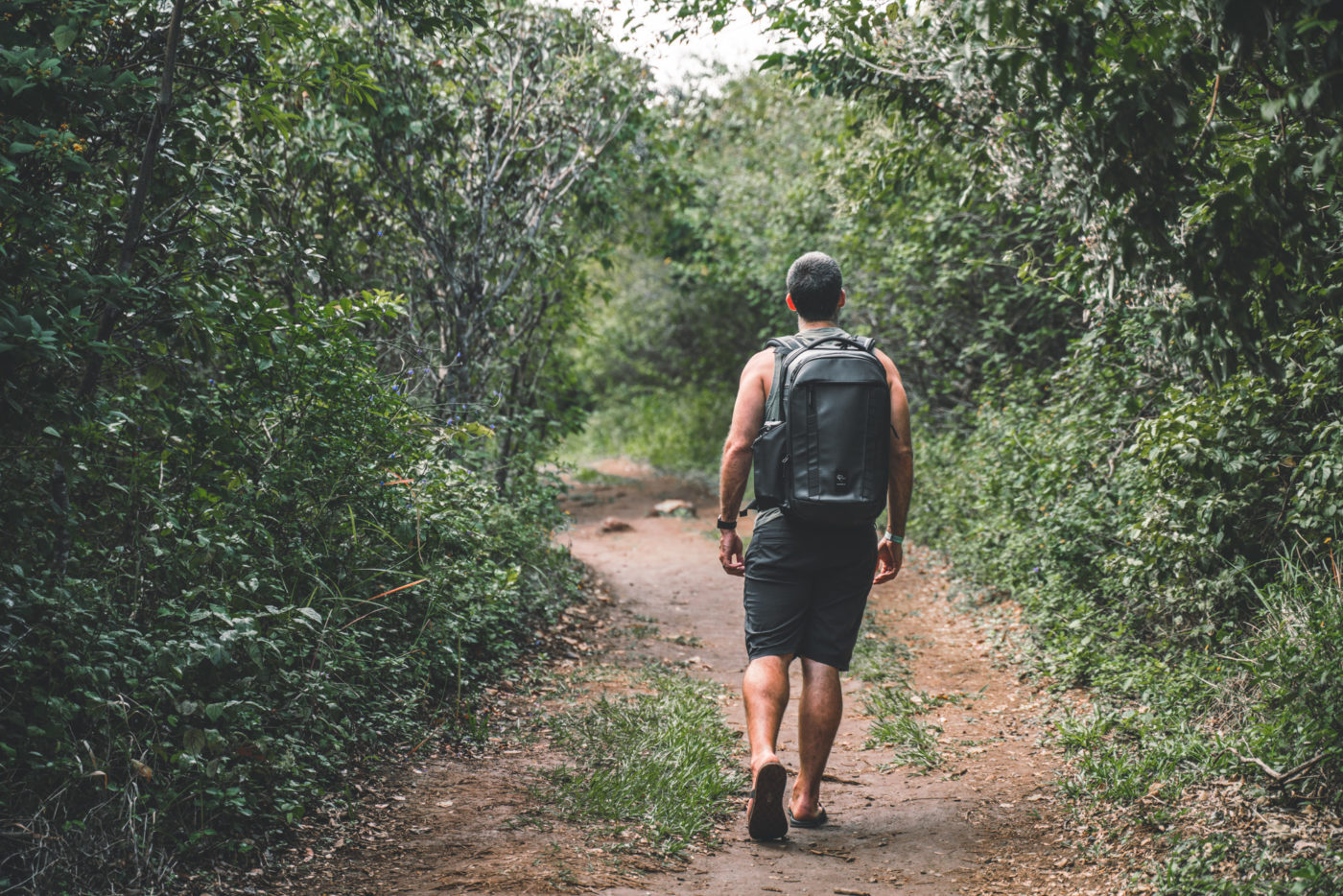
Traveling Soon? Here is a list of our favourite travel providers and accessories to help get you ready for your upcoming trip! Book Your Accommodation HERE Search for Great Tours HERE Get a Car Rental HERE Buy Travel Insurance HERE See our Favourite Camera Bag HERE Grab a Reusable Water Bottle HERE or a Filtration Straw HERE Order an eSim HERE
Visit Costa Rica with the Ultimate Costa Rica Backpacking Route
If you don’t have a lot of time or money and wish to spend 2 weeks or less backpacking in Costa Rica, then this Costa Rica backpacking guide is for you.
This is the best Costa Rica backpacking itinerary:
Since most flights arrive at Juan Santamaria International Airport (SJO), San José makes for a perfect starting point for any backpacker entering Costa Rica. From there, backpackers usually follow this route clockwise, visiting selected destinations along the way.
If you’re planning on backpacking Costa Rica for a longer period, let’s say one or two months, you can still follow this Costa Rica travel guide . However, you can take your time and visit a couple more sites around the country.
In addition to hitting the main Costa Rica backpacker hotspots like Tamarindo and Santa Teresa, you can add destinations like Tortuguero and Monteverde or even travel to the Caribbean coast to check out Cahuita and Puerto Viejo.
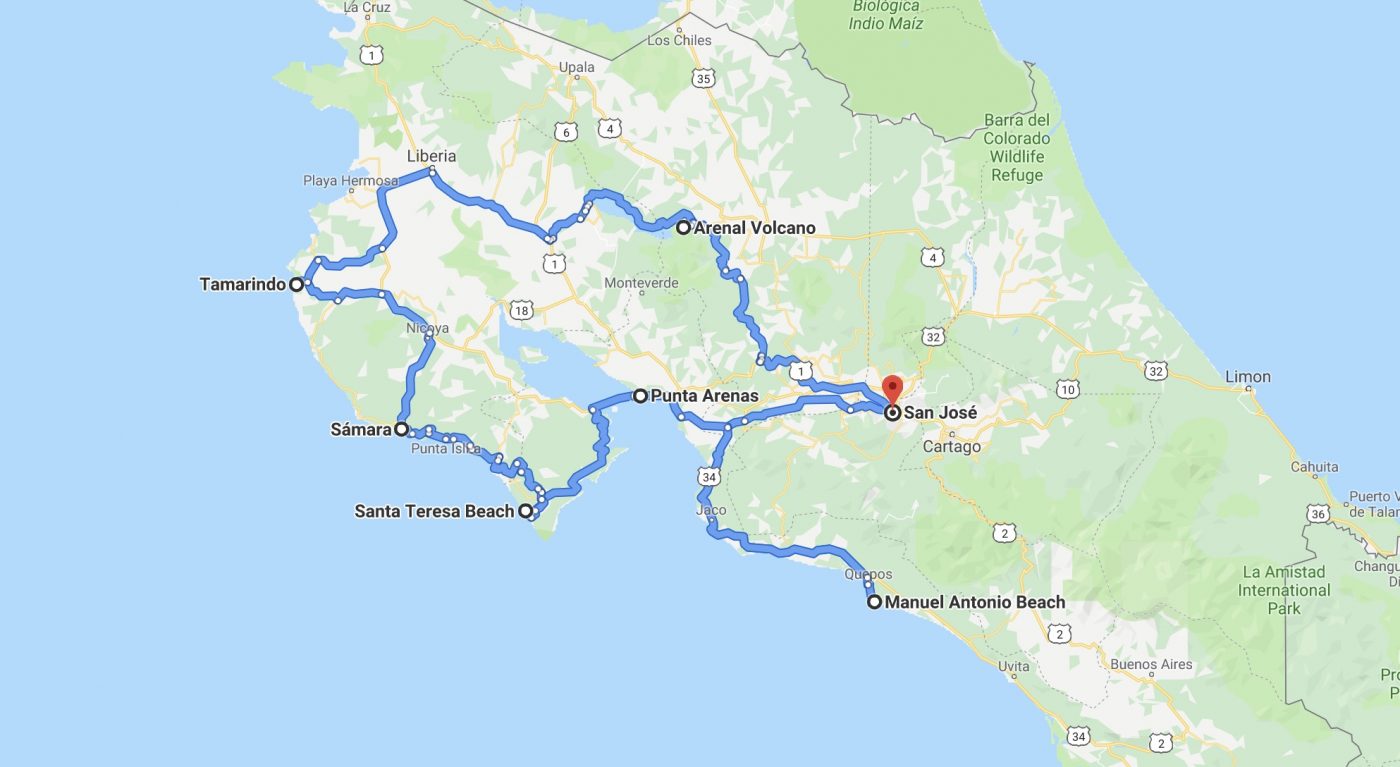
READ NEXT: Guide to Visiting Tortuguero, Costa Rica
When is the Best Time to Visit Costa Rica for Backpackers?
Costa Rica has two seasons: the dry season, from December to April and the rainy season or “Green Season,” from May to November. The dry season is popular with vacationers, so while the sun’s out, expect the tourist crowds to show up, too.
As the name suggests, the rainy season or “green season” is a very wet and very green time of year. Personally, we think these are the best months to visit Costa Rica if you’re willing to chance a bit of rain.

READ NEXT: Best Time to Go to Costa Rica
Popular Destinations For Backpacking Costa Rica
If you plan to spend 2 weeks in Costa Rica, seeing about five different places will make for a fast-paced experience, but you’ll fill every day with epic adventures and great memories. Here’s an overview of the cities you’ll pass while backpacking through Costa Rica.
If you land at San Jose’s Juan Santamaria International Airport, you can begin your backpacking trip here .
San Jose is a big city with lots to offer. It is home to over 2 million residents and roughly 70% of Costa Rica’s population. San Jose is broken up into many different neighbourhoods, but the majority of backpackers stay in Downtown San Jose, close to the main transportation hub.
Downtown San Jose is a great destination to experience the culture and history of the country. The city has many museums and art galleries, which offer insight into the country’s indigenous history and colonial past.
The Jade Museum and the San Jose Artisan Market are both great ways to occupy your time and learn something new at the same time.
The Jade Museum is a pre-Columbian archaeology site , and it offers plenty of insight into Costa Rican culture. It has five permanent exhibition rooms covering the ancient history of Costa Rica and two temporary exhibition rooms. It also has a virtual tour option.
The San Jose Artisan Market showcases local artists. It is easy to spot, as the entrance is liberally decorated. It’s a great place to find unique clothes, toys, jewelry, artwork, decorations, or furniture, with the artisans typically available right there at the stall. The entrance and the aisles are wide enough to accommodate wheelchairs and strollers, and the market is indoors, so it’s a great way to get out of the heat or the rain with the family.
San Jose has a vibrant food scene , with many local restaurants serving traditional Costa Rican dishes such as gallo pinto and ceviche. Visitors can also enjoy the city’s lively nightlife, which includes a variety of bars and clubs.
In addition, San Jose serves as a hub for transportation to other parts of the country, making it a convenient starting point for exploring Costa Rica.
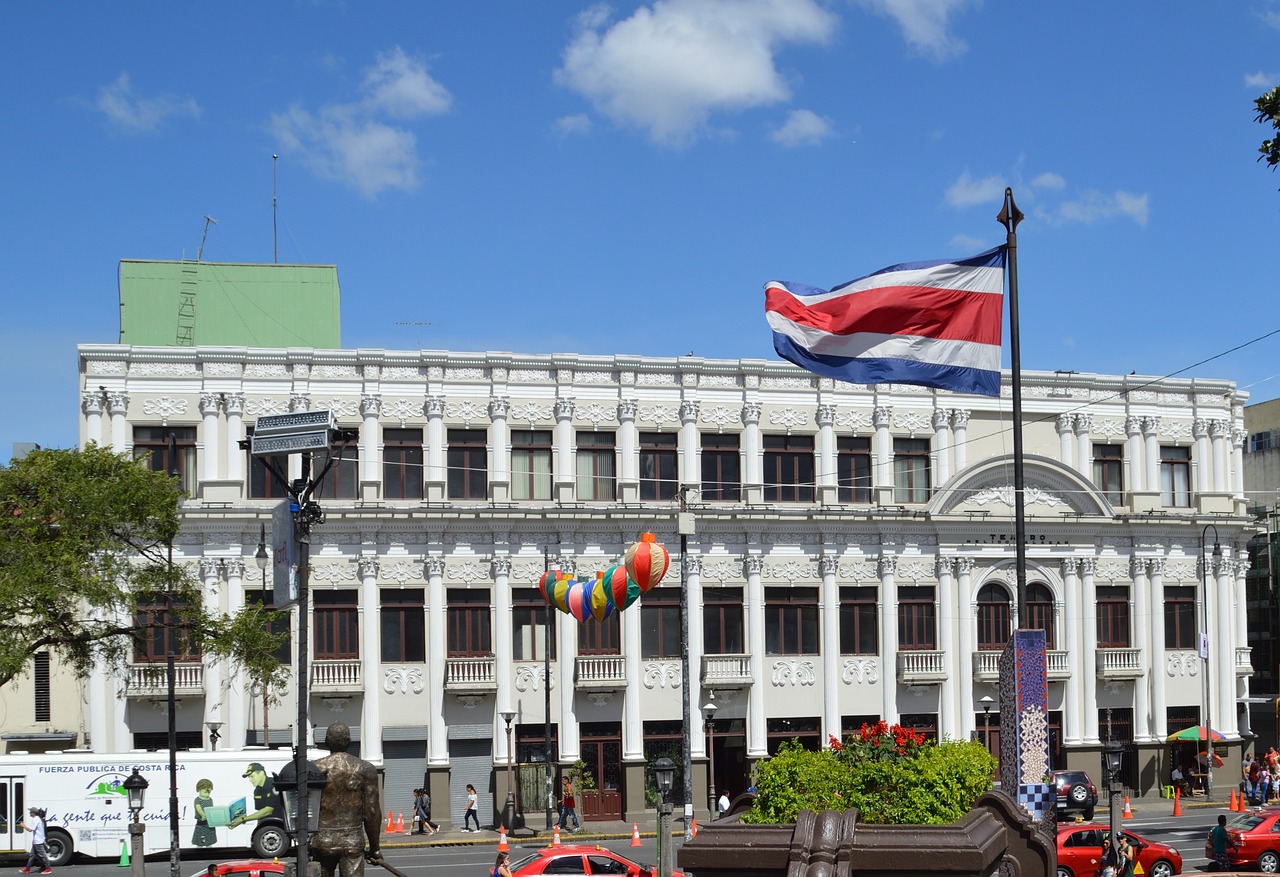
Poas Volcano National Park
Costa Rica has no shortage of amazing national parks, and Poas Volcano National Park is no exception. Located just an hour and a half north of San Jose, Poas Volcano National Park is one of the most popular active volcanoes in Costa Rica.
Poas Volcano is renowned for both its regular eruptions and its sizable acidic crater lake. Since the 1820s, the volcano has erupted more than 40 times, with the most recent eruption taking place in 2017.
A number of hiking routes snake through the surrounding cloud forest in the park and provide stunning views of the crater and the surroundings. Visitors can also hike to the crater’s edge and see the seething, steamy lake below.
The Poás Volcano National Park is home to a wide variety of flora and wildlife, including many kinds of birds and mammals, in addition to its volcanic activity.
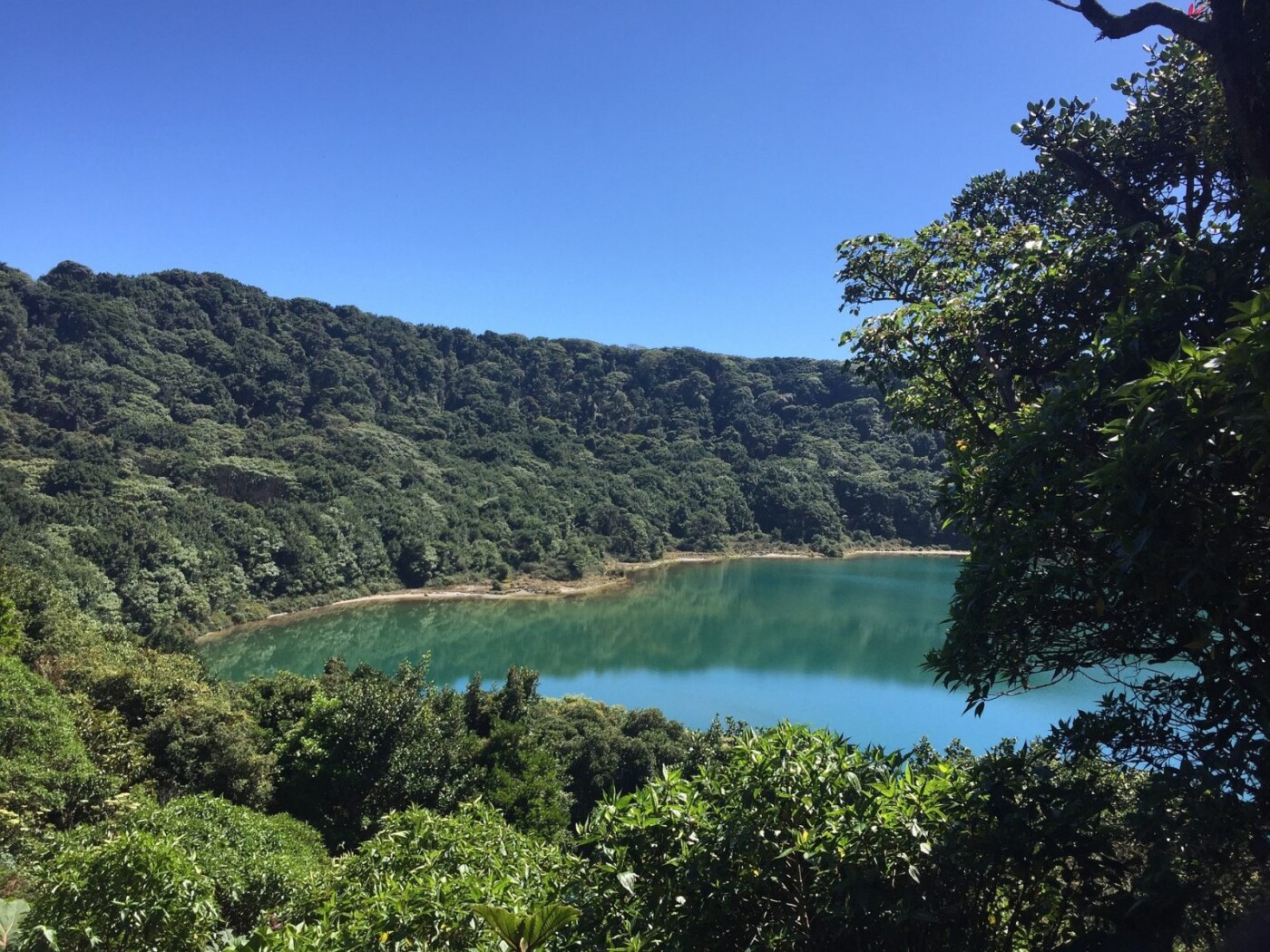
La Paz Waterfall Gardens
La Paz Waterfall Gardens is a famous nature and wildlife destination in the Costa Rican province of Alajuela. Located just 31 kilometres (19 miles) north of San Jose downtown, the gardens cover an area of 70 acres and are home to numerous magnificent waterfalls, a lush tropical rainforest, and a variety of fauna.
The group of five waterfalls that can be seen from several pathways and viewing platforms is one of La Paz Waterfall Gardens’ main draws. The falls, which have heights between 120 and 37 meters, provide breathtaking views of the surroundings.
The gardens also include several displays and animal habitats, such as a frog exhibit, a serpentarium, a hummingbird garden, and a butterfly observatory.
The Hummingbird Garden has 24 species of hummingbirds, the orchid pond has a frog pond with poison dart frogs, the serpentarium has over 30 species of snakes, and the butterfly garden is the size of a football field and looks like a scene straight out of a fairytale.

Jaco Beach, Costa Rica’s popular resort town, is the next stop for backpackers in Costa Rica . Here, you’ll find lots of waterfalls, perfect surf beaches, and even some Nature Reserves where you can spot lots of unique animals, including the Scarlet Macaws , as well as other creatures like monkeys, frogs, and snakes.
Jaco also has lots of party venues, bars, clubs, and even a casino. You can party all night if that’s what you want to do.
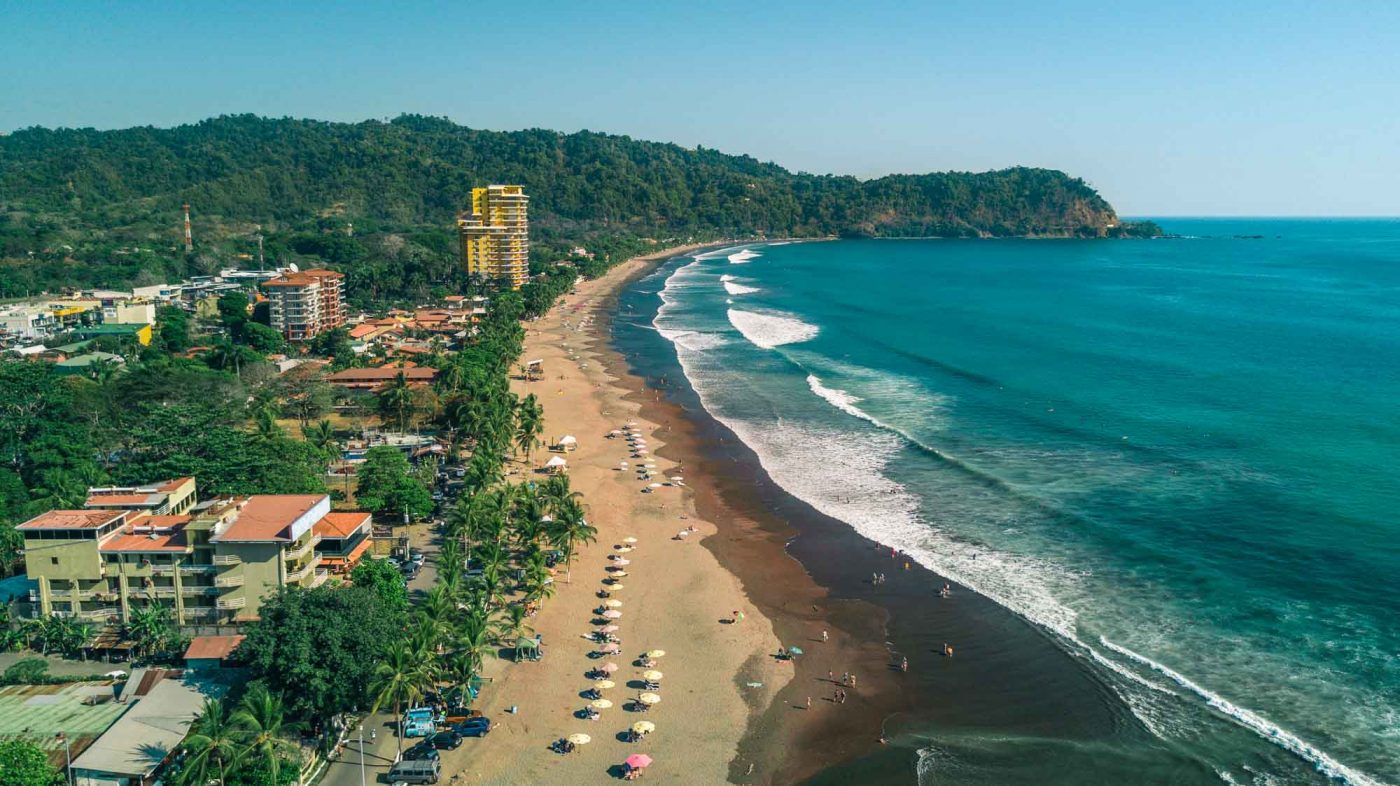
Manuel Antonio National Park
It is possible to organize a day trip to Manuel Antonio . If you only have time for one thing there, we highly recommend a visit to the Manuel Antonio National Park. It’s one of Costa Rica’s most popular national parks, and for good reason. It’s home to a true tropical rainforest with awesome hiking trails that lead you to pristine beaches with rich coral reefs. The park’s main attractions are its wildlife, a variety of scenic hiking trails, and the beautiful Manuel Antonio beach.
Park entrance is USD $16 + tax for adults and can be purchased online 1 day prior to entry or at the ticket booth when you’re there. Due to the large number of visitors at the park, there’s a limit of 600 simultaneous visitors on weekdays and 800 on weekends, so it’s better to purchase your tickets online to guarantee your slot.
If there’s room in your budget to hire a guide, go for it! A good rate is about $10-$20 per person, and they can help you spot the wildlife and share more information about the park. On the other hand, a self-guided tour isn’t half bad, either. Just make sure to bring a pair of binoculars as you explore the forest. Go on one of the many hiking trails, make your way down to the beach, and hop on a sunset cruise to close the day.
With 1,983 hectares that’s home to an incredible array of natural beauty, you’ll want to take your time and spend a few days at Manuel Antonio. If you do have a few days to spare, we’d say 3 days in the area is a good amount of time to explore, relax along beautiful beaches, and try out other activities like hiking, surfing, zip-lining, and horseback riding.
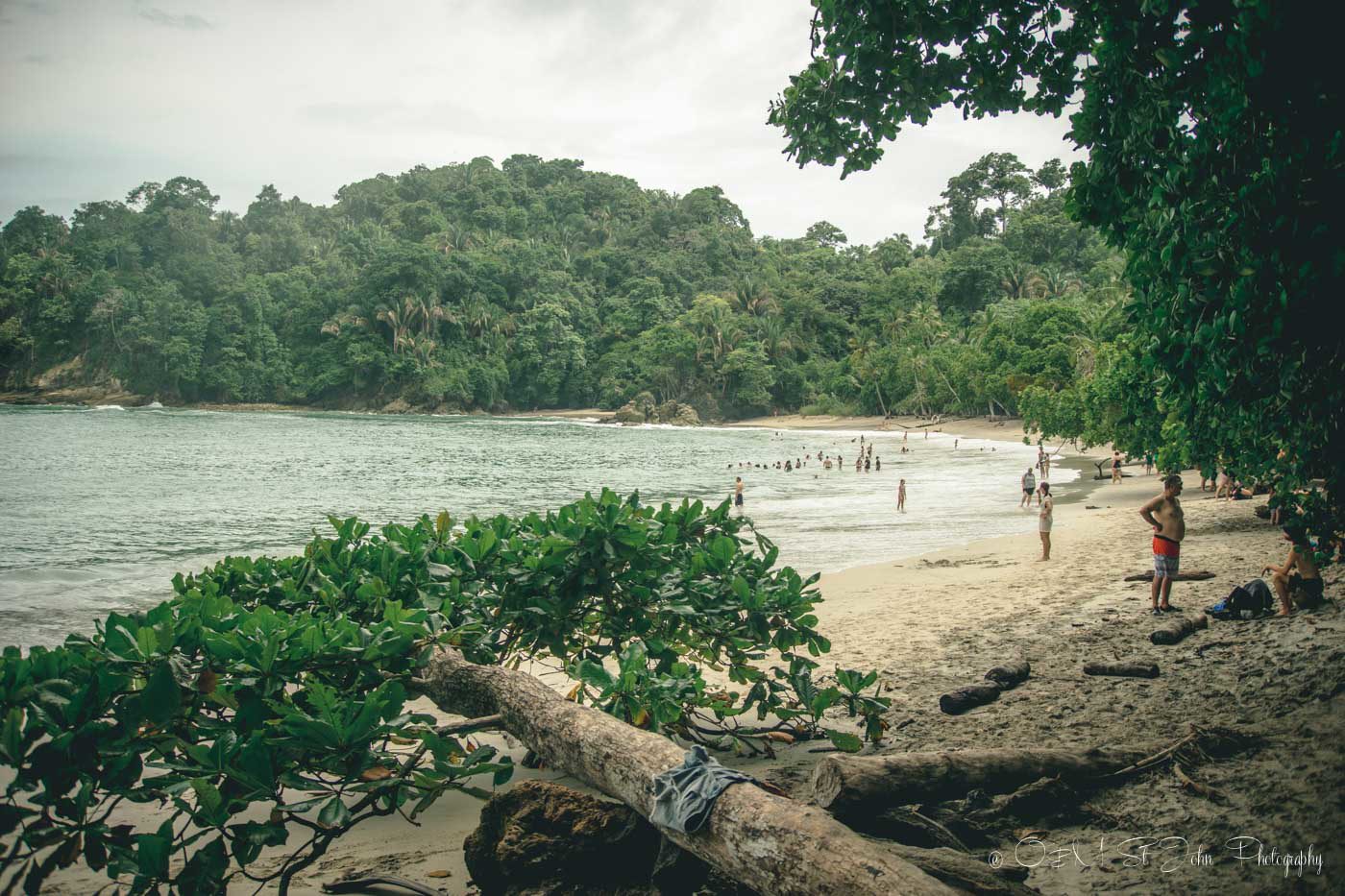
Isla Tortuga
If you keep going up the coast from Barranca, you’ll eventually arrive in a small sandbar called Puntarenas (just like the province). This cute port town is about four blocks wide at its widest point . There are several restaurants on the beach, but they mostly consist of local houses and cheap accommodations.
This small sandbar acts as a vital link offering ferry transfers to the Nicoya Peninsula , where most backpackers head next.
The ferries departing from Punta Arenas will take you to Ferry Paquera. From there, you need to take a cab ride over to Curu Wildlife Refuge. Taxis line up at the Ferry terminal. They’ll drop you off on a field of cows . Walk through the fields of cows until you get to the beach. Don’t be alarmed. You might be the only person at this beach.
There, you’ll find a shack where you can buy snacks and ask about the boat to Isla Tortuga or Turtle Island. The boat only holds a couple of people . You can spend the entire day at Isla Tortuga. It’s incredibly picturesque. The water is as clear as daylight. It will be everything you’ve imagined a Costa Rican island to be!
Isla Tortuga is a remote and deserted island with absolutely no accommodation or restaurants . It’s entirely uninhabited and kept as natural as possible. People love coming here because it reminds them of what Earth would look like if left to its own devices.
If organizing a trip to Isla Tortuga on your own sounds a bit too difficult, consider joining an organized tour to Isla Tortuga .
The tour will allow you to remain on the island for approximately four hours and to enjoy different activities such as the Canopy tour, kayaking, snorkelling, swimming, or simply relaxing on the beach while the crew prepares an exquisite buffet lunch.
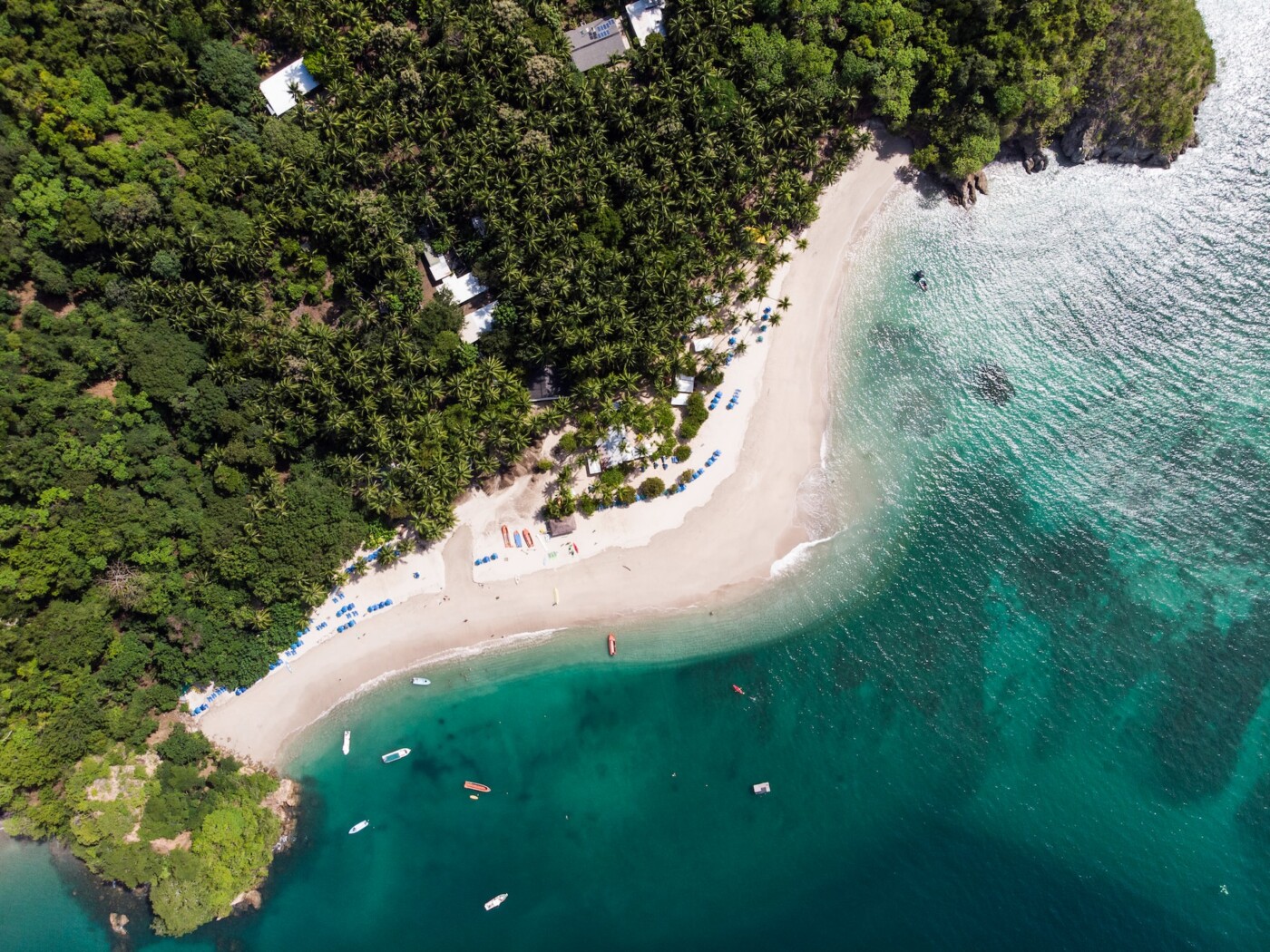
A popular stop for backpacking in Costa Rica is Montezuma , a small hippy town with a long stretch of beautiful white-sand beaches. The town is located near Romelia Wildlife Reserve and is home to some great waterfalls, including the Montezuma Falls and El Chorro Waterfall .
Montezuma is an essential beach in Costa Rica because it is one of the spots on the Nicoya Peninsula that is known for turtle nesting . You can volunteer at the Sea Turtle Volunteer ASVO and help keep these cute sea turtles from becoming extinct or poached.
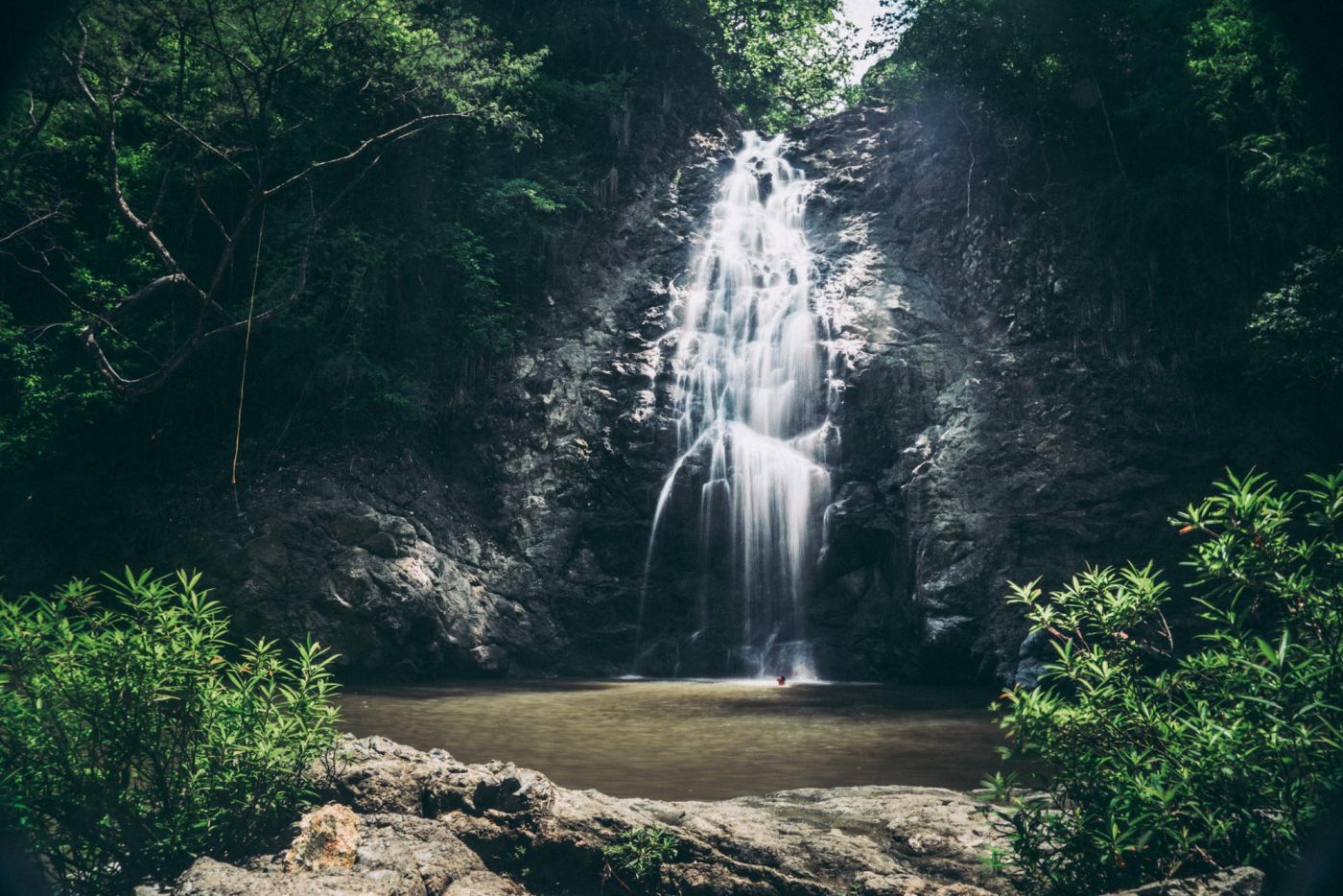
READ NEXT: Sustainable Guide to Visiting Montezuma, Costa Rica
Santa Teresa
Santa Teresa is another popular backpacking destination that can be easily reached from Montezuma. Santa Teresa is known for great surfing and a laid-back hippy vibe. Popular day trips from Santa Teresa include Cabo Blanco Nature Reserve and Curú Wildlife Reserve.
Santa Teresa is easy to explore on foot and has lots of great restaurants and laid-back bars.
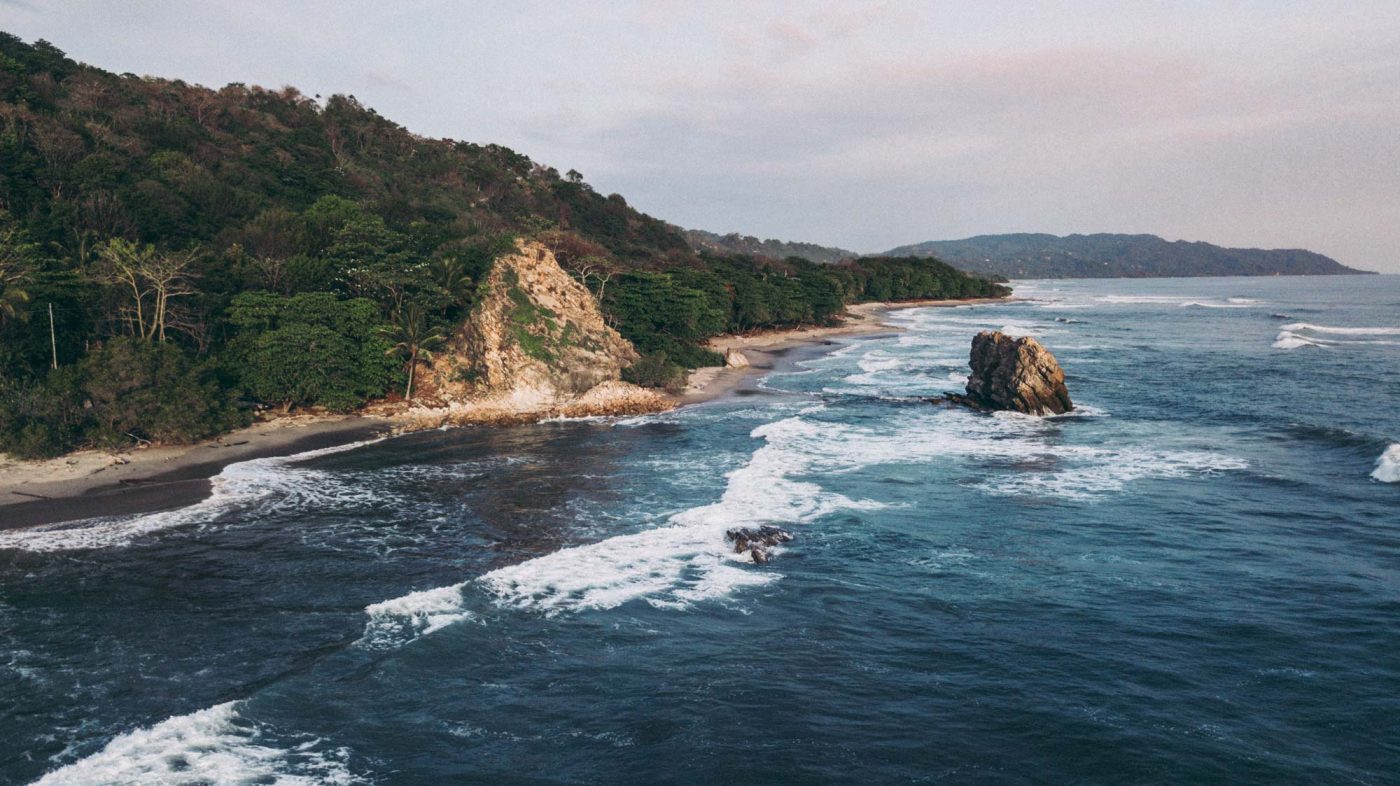
The last stop on the Pacific Coast is Tamarindo , a popular backpacker town known for its incredible beach, great vibes, and tons of nearby activities.
Tamarindo is much more developed than Santa Teresa but not nearly as seedy as Jaco, so it strikes the perfect balance between fun and lively while still being quite safe and enjoyable . During the high season, Tamarindo can get VERY busy, making it harder to find affordable accommodation in town. So if you plan to visit between December and April, we recommend booking your accommodation in advance.
Tamarindo is home to a number of stunning beaches, such as Playa Tamarindo and Playa Grande, which are ideal for swimming, tanning, and beach hopping.
Backpackers may go surfing and beach hopping and enjoy wildlife viewing – you can spot howler monkeys, iguanas, and unusual birds without leaving town. There are many bars and restaurants in Tamarindo geared toward backpackers, like Oveja Vieja and many others.
There are many yoga studios and wellness establishments in Tamarindo that provide lessons and workshops for anyone seeking relaxation. All things considered, Tamarindo has something to offer everyone, making it a must-see location for backpackers in Costa Rica.

READ NEXT: Best Hotels in Tamarindo
Puerto Viejo
Those with a lot of time to backpack Costa Rica should spend some time on the Caribbean coast. The town of Puerto Viejo is a favourite among backpackers visiting Costa Rica.
Puerto Viejo’s breathtaking beaches, like Playa Cocles and Playa Chiquita , which are ideal for swimming, surfing, and sunbathing, are some of its main attractions. A jungle that envelops the town also provides possibilities for trekking and wildlife viewing . Howler monkeys, sloths, toucans, and other exotic species can be spotted along the hiking trails.
With a blend of Latin American, African, and Caribbean influences, Puerto Viejo has a distinct culture that reflects its Afro-Caribbean background. The town is home to a strong artist community, where many stores and galleries sell items manufactured in the area for souvenirs and crafts.
Though Puerto Viejo is small, there is no shortage of things to do, whether you’re looking to take a day trip to Cahuita National Park, stop by the Jaguar Rescue Center , take a day trip into the nearby mountains to learn about the Bribri people or take one of the well-known chocolate tours–Puerto Viejo is well-known for cacao.
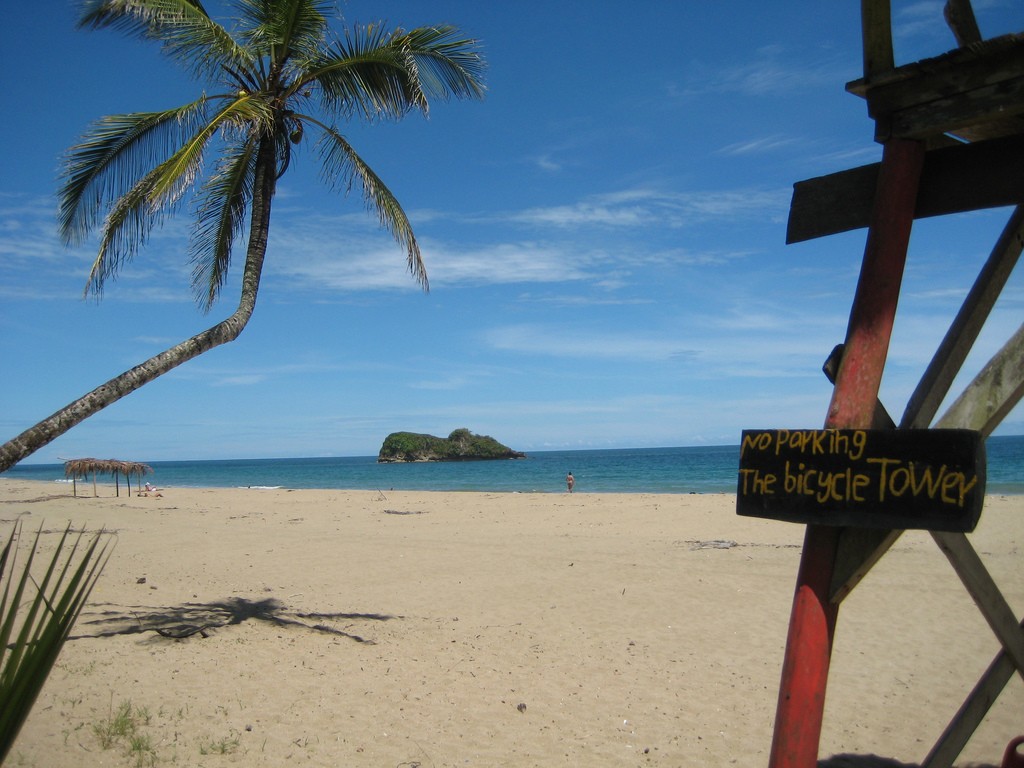
Monteverde is not a particularly large town, but it is one of the major ecotourism destinations in the area. Monteverde is home to three wildlife reserves in the highlands.
Hiking, zip lining, night excursions, coffee tours, and animal viewing are among other things to do at Monteverde. The Monteverde Cloud Forest Reserve and the Santa Elena Cloud Forest Reserve, which both offer breathtaking views of the surroundings, are only two of the environmental reserves and parks that tourists can explore. Guided night tours allow backpackers to see nocturnal wildlife, while thrilling zip line rides let guests soar through the treetops.
Many coffee estates with tours and tastings can be found in Monteverde. Renting a bike allows backpackers to get out and see the local wildlife, including howler monkeys, sloths, and rare birds.
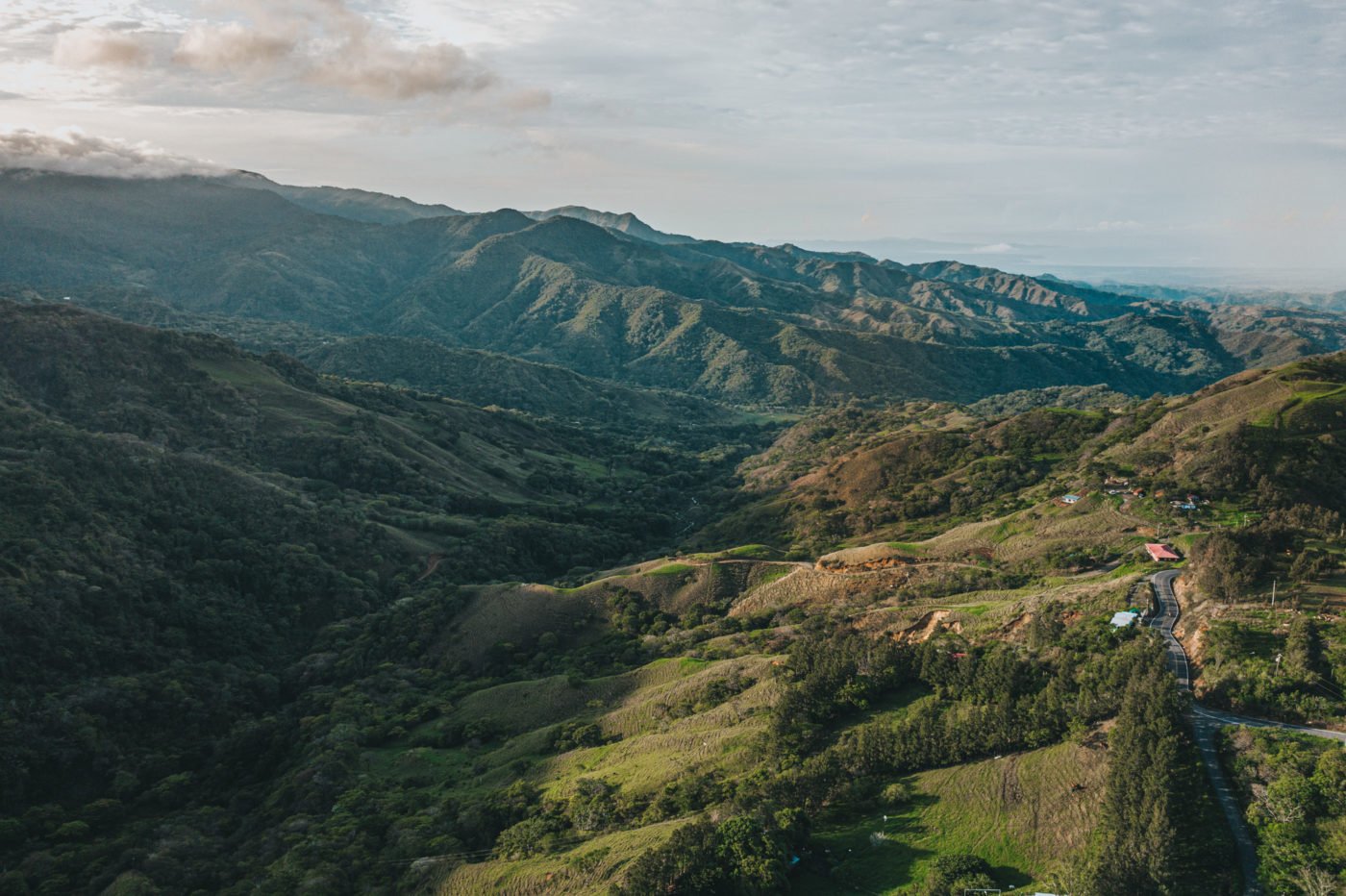
READ NEXT: Things to do in Monteverde
Osa Peninsula
Located on the south Pacific Coast, Osa Peninsula is a must-visit destination for wildlife lovers and adventurous backpackers in Costa Rica. The Osa Peninsula is home to over half of Costa Rica’s species, and many species are unique to the peninsula; you aren’t going to see them anywhere else in Central America.
Osa Peninsula has no shortage of things to do. You can visit Drake Bay or spend time in Puerto Jimenez, but the highlight of any visit is a trip to Corcovado National Park . With more than 500 tree species, 400 bird species, and a vast range of other fauna, it is one of the most biodiverse locations in the nation. Several ecosystems, including lowland rainforest, cloud forest, and mangrove swamps, may be found within the park’s more than 100,000 acres of land.
The most challenging thing about Osa Peninsula is getting to it and getting around. The cheapest option to get to Osa Peninsula is by bus from San Jose to Puerto Jiménez, but this is a long journey and can take up to 12 hours, depending on the route and the time of year. Some backpackers also choose to rent a car and drive to the Osa Peninsula, but this can be a difficult and sometimes challenging drive, especially during the rainy season. A 4×4 is essential when travelling to Osa Peninsula, which may not be the most backpacker-friendly!
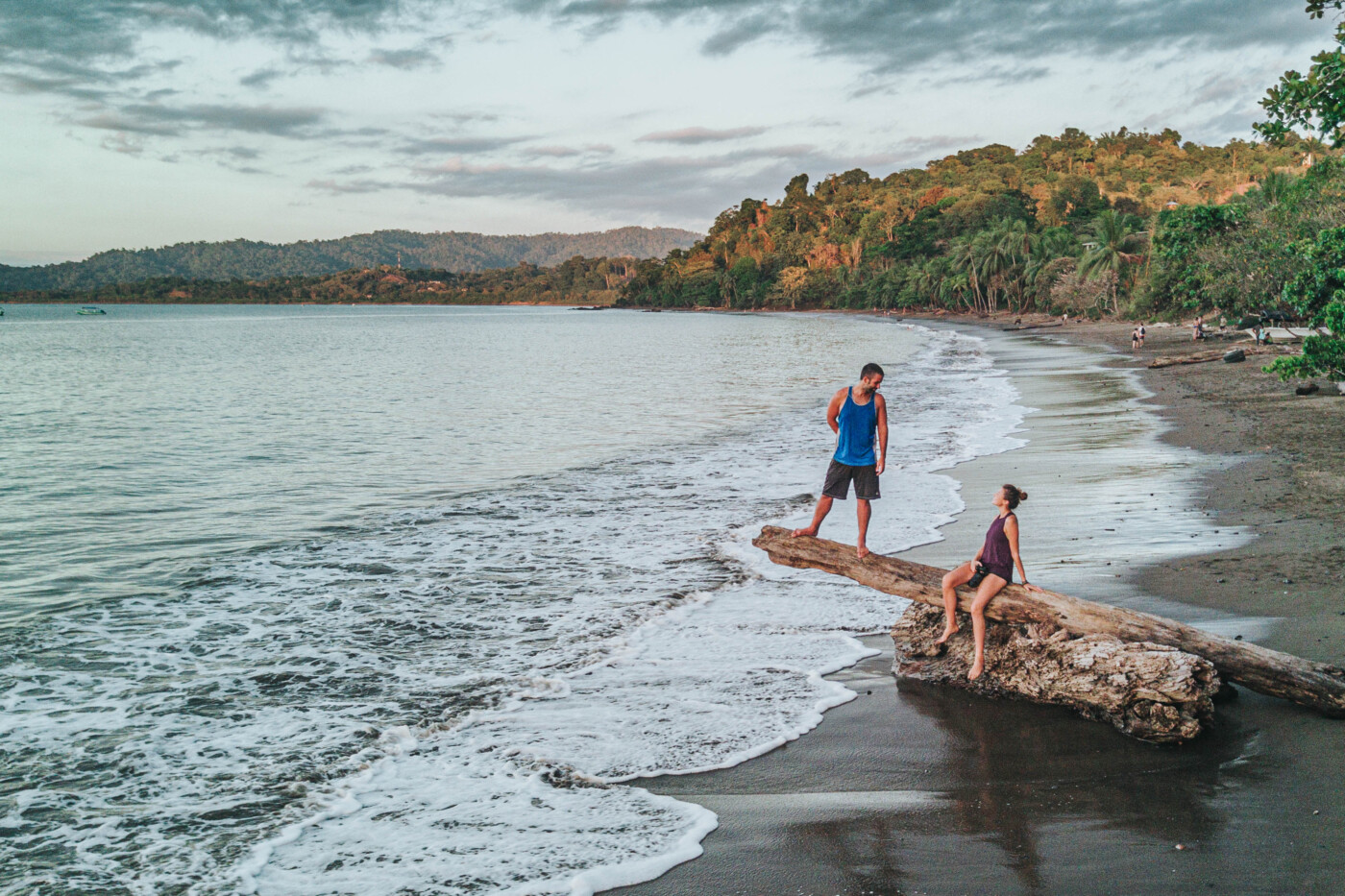
READ NEXT: 5 Reasons to visit Osa Peninsula
If the trip to the Osa Peninsula sounds a bit too difficult or pricey, consider taking a trip to Tortuguero instead. Tortuguero is another popular ecotourism destination on Costa Rica’s Caribbean coast. Famous for the Tortuguero National Park, located about a 3-hour drive from San José, it’s an excellent destination for wildlife sightings.
It’s one of the best places in Central America to see turtles, and that alone is a good reason to pencil it into your backpacking Costa Rica itinerary. From June to October each year, green turtles come to Tortuguero’s beaches to nest and lay their eggs. Once it’s time for the eggs to hatch, you can take a guided tour to see the baby turtles make their way to the water.
Even if you cannot visit Tortuguero during the turtle season, the journey to this unique destination is still worth it.

READ NEXT: Guide to visiting Tortuguero, Costa Rica
The last stop on our suggested itinerary for backpacking in Costa Rica is Arenal Volcano, located in the town of La Fortuna, about 3.5 hours away from Tamarindo.
Arenal Volcano is the main drawcard of this area, but La Fortuna town offers backpackers lots of other activities and reasons to extend their stay by a few nights.
Aside from going trekking in the Arenal Volcano National Park, backpackers spend time relaxing in hot springs, zip-lining through the rainforest, exploring the La Fortuna waterfall, and going on wildlife tours to see sloths and monkeys, among other activities, in the Arenal/La Fortuna area. Also, for an exhilarating adventure, backpackers can go white-water rafting on the surrounding rivers or try their hand at waterfall rappelling.

READ NEXT: Best Things to do in Arenal & La Fortuna, Costa Rica
Where To Stay In Costa Rica On A Budget
When you’re backpacking, Costa Rica isn’t short on accommodations. It’s no surprise that you can find tons of hostels in Costa Rica. Every town and every destination recommended above has its fair share of hostels. Most are great, but some are pretty terrible, so be sure to look at reviews before you book.
There are also some pretty unique properties around the country. Here are some of our favourite hostel recommendations:
- Selina Hostel is a great budget option for a centrally located hostel in San Jose. The hostel is trendy and clean and is located in the centre of Barrio Otoya’s historic neighbourhood, within walking distance of some of San Jose’s main attractions. The hostel features a sweet rooftop deck where travellers can enjoy yoga in the mornings and music jam sessions in the evenings.
- Jaco Inn is in downtown Jaco. Surrounded by a lush Costa Rican garden, it’s steps from the beach. You can walk to nearby bars, restaurants and nightclubs if you want to party. The hostel has a great open-air yoga studio. It also holds Jaco’s only micro-roaster coffee shop, Cafe Bohio. The rooms are modern and clean. It’s the perfect location for partiers and yoga aficionados.
- Tamarindo Blue Apartments offers large and fully equipped cottages in the middle of Tamarindo’s tropical gardens. Each apartment is air-conditioned and has a kitchenette with a fridge and oven, plus a patio with a seating area and cable TV. There’s a pool on the property, and nearby guests have the option to go horseback riding, cycling, and diving.
- Along the Montezuma town centre, you’ll find Hotel El Jardin . The beautiful property keeps you close to nature, with an outdoor swimming pool and jacuzzi, a tropical garden on-site, and the beach only 100 metres away. The rooms come with an en-suite bathroom and a private terrace and are furnished with a desk and a fridge.
- Stay at a local’s house in Barranca. The Villa Guarias is located inland, further away from the beach. But if you’re passing through and have a need to stay the night, this cute house is perfect. Not only is the home comfortable, but it’s also clean with lots of space. It has an open-air living room and kitchen. The first floor has a view of the garden, while on the top floor, you can see far into the distance.
- If you want to stay in Paquera before heading to Isla Tortuga, Cabinas Naomy Paquera is budget-friendly. It’s off the main road, west of the Paquera ferry terminal. Even though Cabinas Naomy Paquera is a traditional hotel, its budget-friendly prices are good for backpackers. They also have an on-site restaurant, Wi-Fi, and shuttle service.
- Cabinas Eddy Bed & Breakfast is super affordable, and you can’t beat the location in Monteverde. The hotel has a tour desk that can arrange tours and free shuttle services to some attractions. They have on-site Wi-Fi, and the largest accommodation sleeps four people.
- Natural Experience House in Tortuguero is a highly rated guesthouse just a four-minute walk away from the beach. There is a tour desk, a terrace, free Wi-Fi, and a fully-equipped shared kitchen, and select rooms also have private kitchens. Each room has a patio with a garden view, making it the ideal spot to relax after a long day of exploring.
- Pagalu Hostel is just a two-minute walk from Playa Negra in Puerto Viejo, so it’s the perfect place to stay for anyone looking to surf Costa Rica. It offers both bunk-style accommodations and private rooms, along with a well-equipped shared kitchen and free Wi-Fi. There is a supermarket right next door, so you don’t need to worry about access to food.
- Hotel Casa Gitana Corcovado is an affordable hotel in Drake Bay, Osa Viego, with incredible ratings. It’s also about 200 meters away from the beach, so it’s perfect for anyone looking to go diving. They offer tour booking services, and Drake Bay has plenty of tours that are worth trying out, such as Corcovado National Park. They also have plenty of free amenities, including parking, free breakfast, and Wi-Fi. They offer family-friendly activities to keep kids entertained, and you’re even welcome to bring your dog with you.

READ NEXT: Best Places To Stay In Costa Rica
Getting Around Costa Rica On A Budget
Getting from place to place can be complicated when you’re backpacking. Costa Rica, unfortunately, doesn’t make this easy; the transportation system is one of the biggest downsides of the country.
There is a well-developed bus system across the country, connecting big towns and important hubs across the country. Unfortunately, some of Costa Rica’s best backpacking destinations are located far away from these hubs, which makes it a bit of a pain to get around Costa Rica using the public bus system.
Unfortunately, some of Costa Rica’s best backpacking destinations are located far away from these hubs, which makes it a bit of a pain to get around Costa Rica using the public bus system.

So, if you are planning to navigate your Costa Rica trip without a car, consider the following backpacking tips:
- Plan your backpacking route based on public buses’ schedules. Some destinations that look close may actually require 2-3 bus changes and require an entire day in transit. If you don’t have a lot of time. plan your route based on direct bus routes in and out of each city.
- Plan for any journey to take 1-2 hours longer than estimated. The roads in Costa Rica are narrow and often have potholes. Many highways only have one lane in each direction, and many times, the main road is the only way into a specific part of Costa Rica. In other words, if there’s a car accident, traffic jams last for hours.
- Keep in mind that shuttle buses can be a great alternative to public buses. Shuttle buses are a lot more expensive ($50 each way compared to $10), but they often run between popular destinations and can cut your travel time/distance in half. You can use Greyline, a carbon-neutral Costa Rican shuttle company, to book private and shared shuttles all around Costa Rica.
- Costa Rica also has its fair share of ferries . For a schedule of certain ferries, check out the Nicoya Peninsula Ferry website. You can also check out Montezuma Beach’s website for the local bus schedules, ferry schedules and more.
READ NEXT: Best Beaches in Costa Rica
Getting Around Cities & Towns In Costa Rica
When planning your stay in each destination on your itinerary, consider how you are going to get around town without a car. Some towns, like La Fortuna, are fairly compact and are easy to explore on foot, but others, like Santa Teresa, for example, are spread out along 4-5kms. Here are some helpful tips for getting around towns in Costa Rica.
- Book a hostel that offers free bike rental and use the bike to get around town. Alternatively, book your accommodation close to the city centre.
- If you end up renting a bike, keep in mind that one of the biggest crimes in Costa Rica is bicycle theft. Make sure you always keep an eye on it or rent a suitable locking mechanism to lock it properly.
- Note that pedestrians do not have the right of way in Costa Rica; always be careful when crossing the street or riding a bike.
- Inner-city buses and Uber can provide an alternative option for getting around some towns.
- Driving in Costa Rica can be stressful and add a lot to your tight budget. If you are travelling alone, avoid renting a car – as the costs will add up.
- We don’t recommend ATV rentals , although they are popular in many towns in Costa Rica. Not only are they terrible for the environment, but they are also known to cause a LOT of accidents. So don’t run the risk and opt for a bicycle instead!
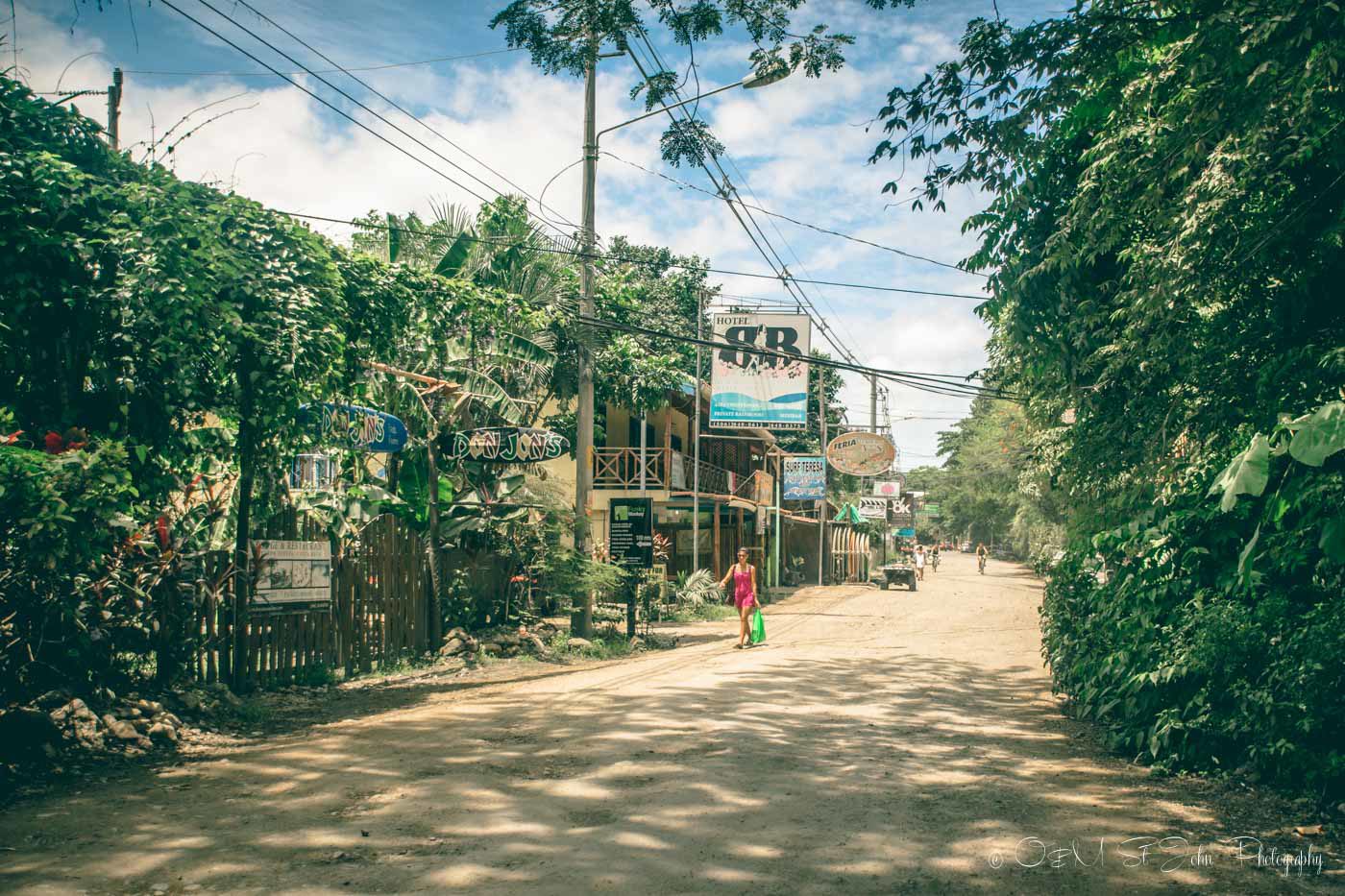
READ NEXT: The REAL Cost of Living in Costa Rica
Eating On A Budget In Costa Rica
Costa Rican cuisine is definitely a highlight of the trip! Although Costa Rica travel is possible on a budget, eating out can really make a dent in your budget.
It goes without saying that high-end villas, fancy restaurants, and spots in top tourism areas will charge more for every meal. A main course in a bustling restaurant can cost you anywhere between USD $10 to USD $20. Expensive restaurants will also have extra fees like Service Charge (10%), Sales Tax (13%), which can round up the price by 23%. If you’re eating out 3 times a day, you can imagine how much the costs will pile up.
That said, the best way to save money on food while backpacking in Costa Rica is to buy your own groceries and cook your own food . It pays to be strategic, too. Instead of shopping in supermarkets, opt for farmers’ markets where the locals shop (these are relatively easy to find all over Costa Rica). You will get cheaper prices on Costa Rican staples like rice and beans, vegetables, and other homegrown ingredients.
If you want to add fruit to your grocery list, stop by any of the roadside markets and stalls. These are open basically all day. They sell fresh fruit like mangoes, avocados, pineapples, and other fruits in season for around USD $1.
For an authentic, no-frills meal, grab a bite at the local hole-in-the-wall restaurants known as “sodas.” These are small cafés and beach shacks that offer typical Costa Rican dishes. The food here is as authentic as it gets! Sodas are not just inexpensive and delicious; they’re also very generous with portions. Their seat meals can cost anywhere from USD $5 to USD $10, and usually without sales tax. These sodas are locally owned, and that’s another reason why we love to support them when we travel to Costa Rica.
Going plant-based is also a good option. Many sodas are vegetarian, and most menus will have vegetable options. Eating a vegetarian or vegan diet in Costa Rica is not only very easy but also VERY affordable!
Overall, our biggest tip when travelling to Costa Rica is to step outside your comfort zone when it comes to food. You definitely won’t save money if you only order your usual burgers, steak, pasta, or wine. Imported ingredients and dishes will likely be more expensive and harder to find in Central America. Instead, dine where the Costa Ricans do–you’ll discover so much when you’re open to tasting local dishes and new flavours you haven’t yet.
Costa Rica also has some fabulous restaurants around the country. If your budget permits, do check out some local spots where local ingredients and flavours are expertly combined with international trends to create an amazing fusion of delicious, healthy meals!
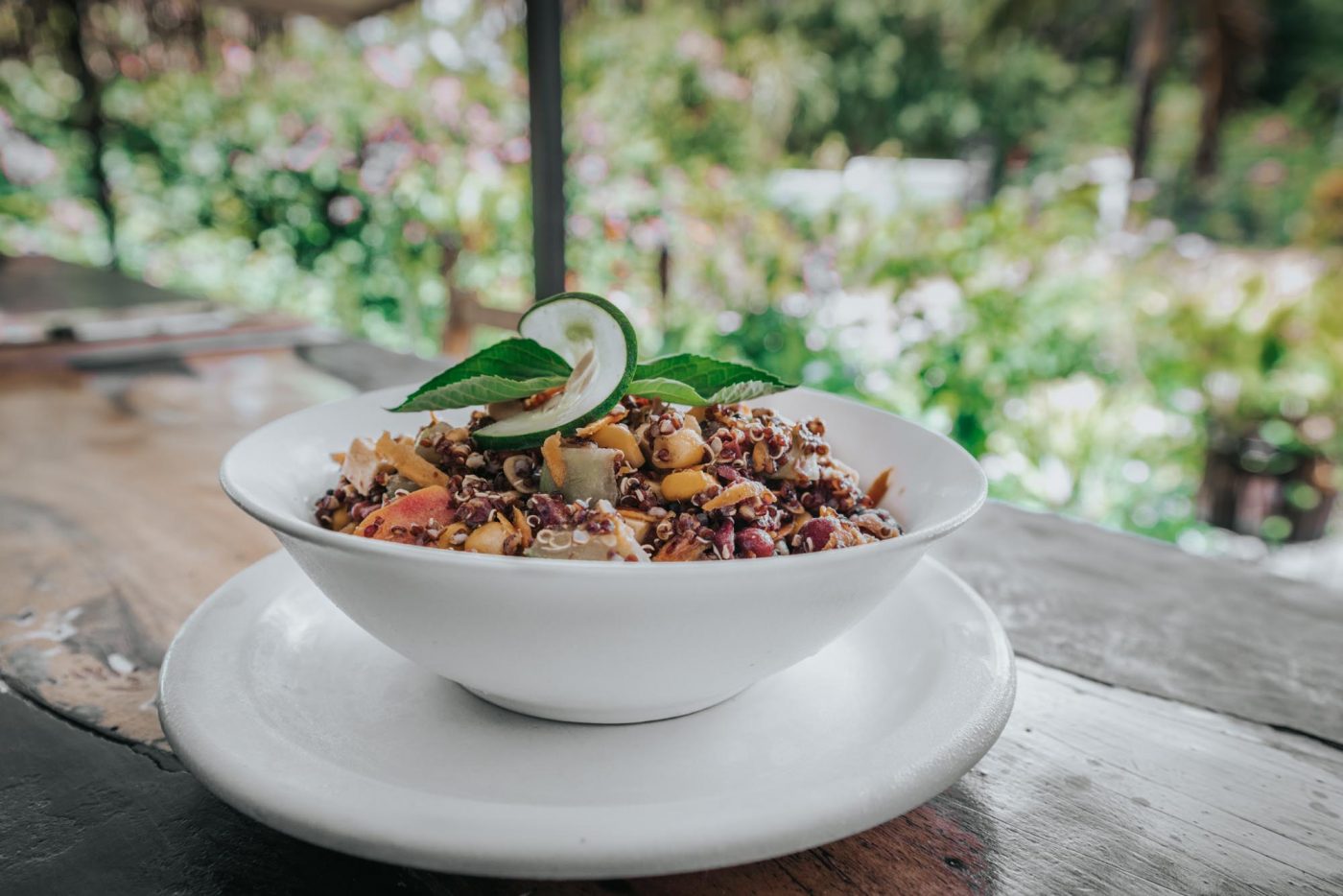
San Jose
Cafe Rojo is a highly rated spot for good-quality Asian-fusion meals–specifically Vietnamese. They offer plenty of vegetarian and vegan options, there are tons of gluten-free options, and you can get brunch on weekends.
Soda Jaco Rustico is a cheap spot with comfort food and typical Costa Rican food, and the menu includes vegan and vegetarian options. They open early and serve breakfast, lunch, and dinner, so it’s a good place to go if you’re looking for a taste of Central America.
Ylang Ylang Restaurant is a beachside restaurant located in a resort and has decadent and yet very affordable options for breakfast, lunch, and dinner with vegan, gluten-free, and raw options. They also have a sushi menu.
Playa Avellanas
La Purruja Restaurant & Bar has a laid-back atmosphere and is steps from the beach. Considering that proximity, it’s no surprise that they’re known for fresh seafood dishes, but they also offer plenty of vegetarian options. They primarily serve food from Southern and Central America at very reasonable prices, and they serve breakfast, lunch, and dinner.
Cafe Rico is a great spot for a hearty, cheap breakfast, but that’s not all they offer. They have rental bikes, a book exchange, and Wi-Fi. They are famous for their coffee, crepes, and cool atmosphere.

Overall Budget For Backpacking in Costa Rica
If you’re planning on backpacking in Costa Rica for a month or more, budget about $50-75 per day.
It’s a safe amount of money that will cover all lodging expenses, food, and some tours and activities. That amount will also cover transportation and entrance to nearby National Parks.
When it comes to backpacking, Costa Rica is fantastic. You can do it for a couple of weeks or a few months . There are so many different ways of experiencing a country as diverse and beautiful as this one.

READ NEXT: Plan Your Costa Rica Travel Budget
Have You Ever Tried Backpacking Costa Rica? What Other Tips Would You Offer To First-Timers Planning On Backpacking In Costa Rica?
About the author.
Oksana & Max St John
1 thought on “guide to backpacking in costa rica 2023”.
Can you tell me more about the boat you took to Isla Tortuga from the Paquera area? We want to go there the cheapest way possible, so not on a tour! Thanks!
Leave a Comment Cancel Reply
Your email address will not be published. Required fields are marked *
This site uses Akismet to reduce spam. Learn how your comment data is processed .
Download Japan Trip Itinerary
Enter your name and email to get our Japan Trip brochure with more details about this trip in your inbox.
Join our 2025 Group Trips Pre-sale List
Be the first to know about NEW Trips and SPECIAL Offers!
Have 5 minutes to share more info? Fill out the Pre-Sale trip survey HERE
Interested in joining us in Japan?
Love the sound of this trip? Ready to book? Have some questions?
Send an inquiry and let's chat!
Leave your details below and be the first to get updates, special deals, and connect with us directly about this trip!
Reignite the Feminine Retreat
Love the idea of a women-only retreat in September 2024?
Help me decide where we should go!
Our women-only gatherings will be limited to 8-10 people, so leave your details below to add yourself to the waitlist.
We'll email you first to share all the details of the trip.
GET OUR FREE COSTA RICA PACKING LIST
After years of traveling in Costa Rica, we've figured out exactly what you need to pack for this diverse country!
Get our FREE CHECKLIST NOW!

Backpacking Costa Rica: Your Ultimate Guide in 2021

Backpacking Costa Rica is a once in a lifetime experience. As a small country with a reliable bus system, it is easy to see much of the country in a short amount of time. As well, Costa Rica has a reputation for being one of the safer countries in Central America, making it an ideal place for a first time backpacker. The country is rife with natural beauty through beaches, rainforests, and animals, as well as full of adventure activities such as surfing, zip-lining, hiking, boating, and fishing. As someone who recently traveled to Costa Rica on a backpacking trip, let me be your up to date guide!
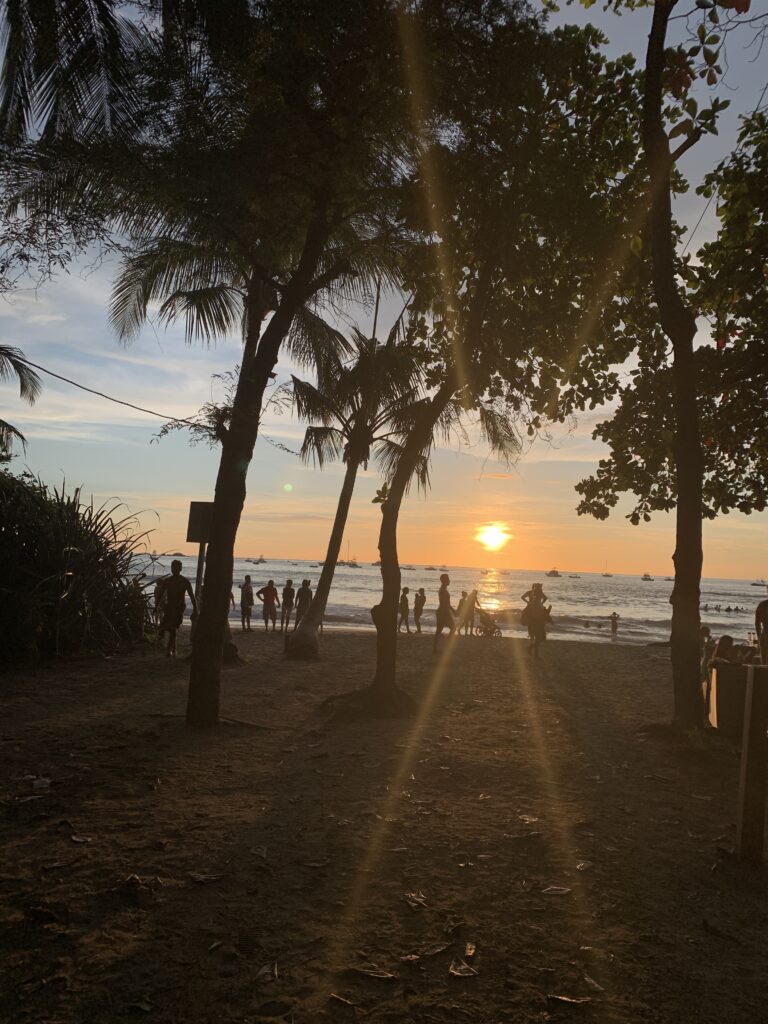
Why Backpack Across Costa Rica?
Why should you go backpacking in Costa Rica? Well, there are many reasons. As mentioned above, Costa Rica has a reputation for safety. I planned to backpack solo as a twenty-something female, but was joined by my partner at the last minute. That said, I met many solo backpackers who were having a great time!
Costa Rican’s are accustomed to tourists, and will be open to helping you however you need. The local economy relies heavily on tourism, and although there were quite a few busy tourist areas, the numbers are currently 30% of what they would be before the pandemic. 2021 is a great time to visit to avoid the crowds and enjoy cheaper prices.
The bus system in Costa Rica is safe, affordable and accessible, making it easy to travel all over the country without a car, and great for backpacking. At the time of writing, Costa Rica does not require proof of a negative covid test of vaccination to enter, and you don’t need to quarantine when you arrive. Keep up to date with the latest entry requirements here or on your embassy’s website.
For all of these reasons, Costa Rica is an excellent choice of country if you’re looking to backpack or travel solo for the first time.

Entering Costa Rica
What do you need to enter Costa Rica? Well, a valid passport, for sure. At time of writing, due to the pandemic, you need a few other things as well. Health insurance that covers the length of your stay and covid-related incidents is mandatory. The country has a few national insurance companies you can buy from, but Trawick is the cheaper go-to that meets all the requirements. Once you purchase the insurance you will fill out the Costa Rica health pass which will generate a unique QR code. You will show this code to authorities in the airport at your home country and upon arrival in Costa Rica. Note: an attendant in my departure airport tried to tell me that Trawick was NOT an accepted insurance policy, but I had done my research and assured her that it was. Stick up for yourself if something like this happens to you, and always know your entry requirements!
You will also need proof of exit from Costa Rica. This means an exit flight or bus ticket. Authorities will ask to see it to make sure you aren’t planning on overstaying the maximum 90 day tourist allowance.
Buy a SIM Card for your Phone
Unless you have a phone plan with roaming and international usage, make sure you buy a SIM card for you phone as soon as you arrive in Costa Rica. The SIM card (or chip, as it is known locally) is cheap, and the plans are too. You can extend the plan or add data easily at almost every corner store and grocery. The data plans will include free WhatsApp usage, and many local businesses use this app as well.
If you fly into Liberia, there is no place within the airport to buy a SIM card. Take a bus or taxi from the airport to the town of Liberia, and go to a grocery store. I went to Peri Liberia to buy my card. There is a kiosk to the right of the entrance where an attendant will help set up your plan and install your card.
There are three options for a phone plan: Movistar, Claro and Kolbi. In June 2021, Kolbi seemed to be down, and I was only offered the previous two options. Both have slightly different coverage. I chose Claro while my partner chose Movistar, and sometimes only one of us would have a signal depending on where we were in the country.
If you fly into San Jose, there is a Claro stand left of the baggage claim five where you can purchase a SIM card. It is open from 6 AM to 11 PM (this information was last checked March 2021).
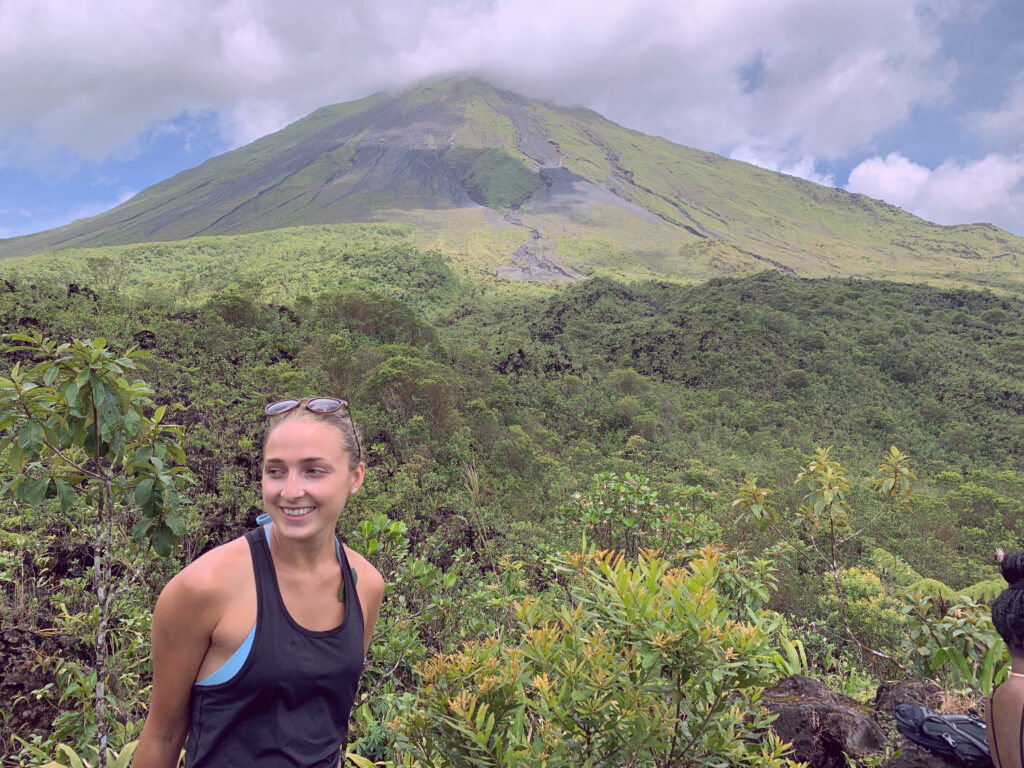
Taking the Public Bus
The bus system in Costa Rica is extensive and easy to use. With a little planning ahead of time, you will save a lot of money and headache on your backpacking journey. Some great resources for checking routes are this Facebook group and this website. This is another website being built that I referenced several times while abroad.
First, plan your route. Scroll down for information specific to towns you may want to visit. I actually planned my route by choosing a few places that sounded interesting, then seeing if they were accessible by public bus. I would go back and forth tweaking locations until the route made sense for me!
Bookmark, screenshot or write down the bus routes you will need. In Costa Rica, every area of the country has different countries running the public bus – there is no national bus company. When you’re in a town with multiple routes leaving from it, such as San Jose, there will be different bus stations for each company/bus route.
When waiting for your bus at the correct station, check for a ticket booth or Boleteria. If this exists, go here and ask to buy a ticket (Tamarindo will be replaced by the area you’re going to): “Quiero pagar un boleto a Tamarindo por favor.” The price may be posted, or the attendant can show you the numbers on a calculator if you don’t understand Spanish well. Prices range from $3-$16 USD depending on the route. Use local Colones currency if you can.
If there is no boleteria, it means you have to pay the bus driver when you board the bus. Usually this is the case. It’s best to have exact change or use small bills.
The only bus route I ever needed to purchase a ticket ahead of time was Puerto Viejo de Talamanca to San Jose. In this case, there’s a boleteria in the town where you can purchase your tickets a few days in advance (or when you first arrive in Puerto Viejo). This was also the only route that had assigned seating.
In June and July 2021, people wore masks while riding the bus. Some routes were very empty, while others were sold out. If you have a large backpack or luggage, you will be asked to place it in the carrier bins underneath the bus. Because of this, make sure all your valuables and electronics are in a smaller carry on bag. You may want to sit on the side of the bus with the carrier bin to keep an eye on anyone accessing the bins, although this was never a problem for me.
Usually there is no A/C on buses. Make sure you use the restroom before your journey, and bring water to stay hydrated. Note that many restrooms in bus stations will charge you 200-800 colones to use.
A great tip I discovered when backpacking Costa Rica was to locate the local bus station the day before I left an area. For example, if I was staying in a town for 3 days, I would walk to the station or bus stop the day before. This is where you will likely find the most up to date route information. Because of covid, many routes were cancelled or changed. The companies don’t always update their website or Facebook page with the changes. You will also find out how long is takes to travel from your accommodation to the bus stop, and possible how much the ride costs.
Using Colones, The Most Beautiful Notes
Costa Rica is fairly Americanized, and almost all places will accept USD as currency. That said, you should convert your cash to colones and familiarize yourself with the beautifully colourful currency. If you use USD to pay, you likely will be ripped off, as the vendor can use whatever exchange rate they like. Tours are often listed in USD, but you can ask to pay in colones instead.
Download an app called XE to check current currency conversions. As a Canadian, I discovered a way to convert CRC to CDN mentally using this easy method:
Take the amount in CRC and multiply it by 2. Then remove three decimal points. The remaining is a close estimate of the amount in CDN. For example: $5,000 CRC x 2 = $10,000 CRC. Remove 3 decimal points = $10. So, $5,000 CRC = $10 CDN.
The large numbers used in colones can be daunting, but this was an easy trick to convert on the fly. After converting CDN, it may be easier to convert to USD. Or, you can take the amount in colones and multiply it by 0.0016 on your phone. For example: $5,000 CRC x 0.0016 = $8. So, $5,000 CRC = $8 USD.

What Areas Should I Travel To?
What areas you choose to visit in Costa Rica depends on two things: the length of your trip and what activities you like. Make sure you fly into the airport that makes the most geographical sense for your itinerary.
If you love being lazy on the beach, surfing, and a drier climate, go to the Pacific Coast.
If you like a more humid climate, partying, cannabis and Jamaican influence, go to the Caribbean Coast.
If you like adventures such as zip-lining, lush rainforest and a cooler climate, go inland to the North/Central Valley.
That being said, I had 3.5 weeks in Costa Rica, which was more than enough time to travel through all these areas. If you only have a week or less, stick to one area.
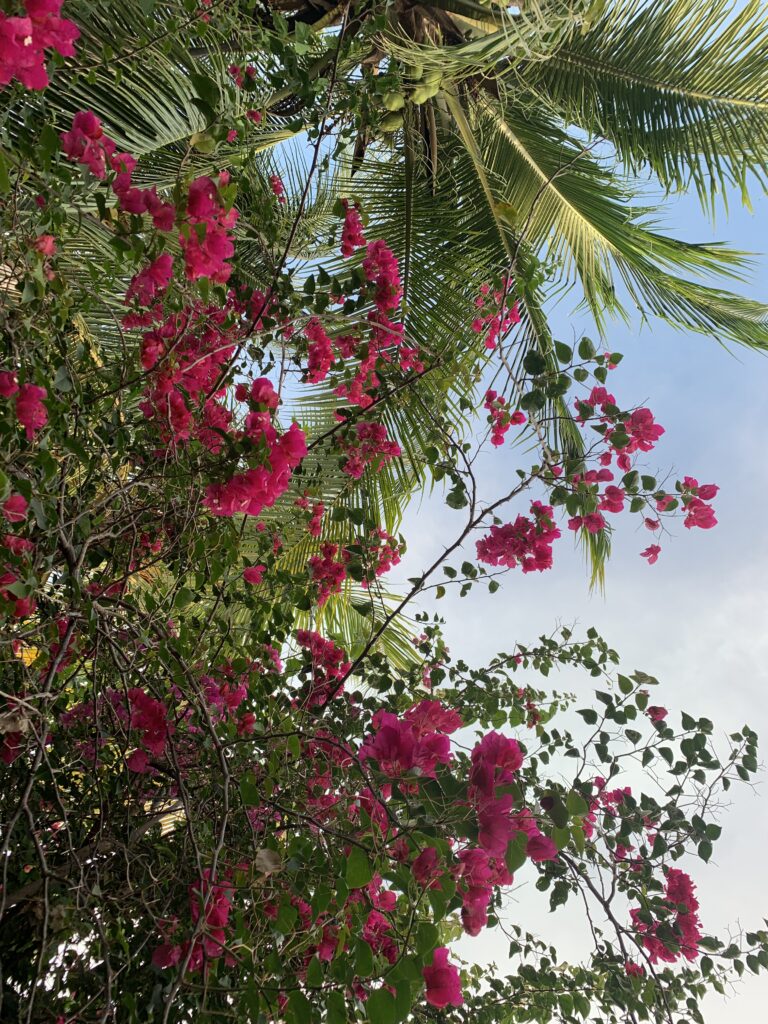
Pacific Coast
On the Pacific Coast, I travelled the following: Liberia – Playa Del Coco – Tamarindo – Montezuma – Santa Teresa -Paquera. Liberia is the airport to arrive in if you plan to frequent the Pacific side.
On the Pacific side, or the Guanacaste Province, I spent time on gorgeous white sand beaches, took a catamaran ride in Tamarindo , rented an ATV to get around Montezuma, was smashed by waves in Santa Teresa, and saw bioluminescence in Paquera. Don’t forget your sun hat !
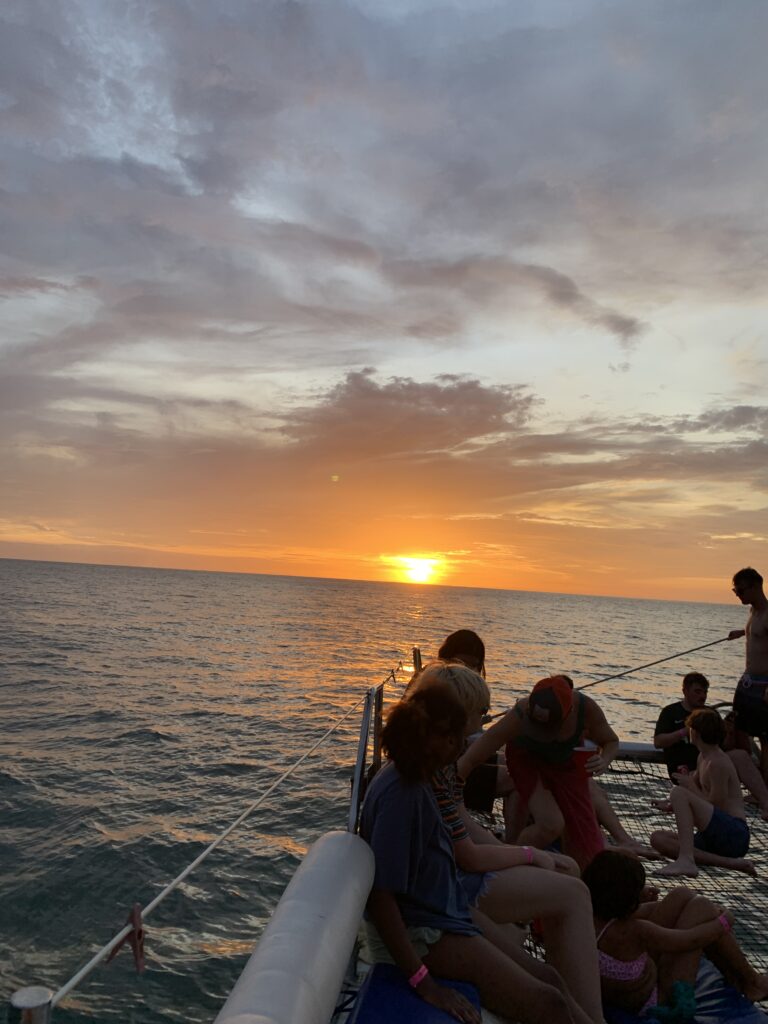
Caribbean Coast
On the Caribbean Coast, I travelled to Puerto Viejo and Cahuita. You will want to fly into San Jose if visiting the Caribbean.
On this side of Costa Rica, I rented a beach cruiser bicycle to get around Puerto Viejo and Cahuita, walked on a black sand beach and drank the best coffee ever.
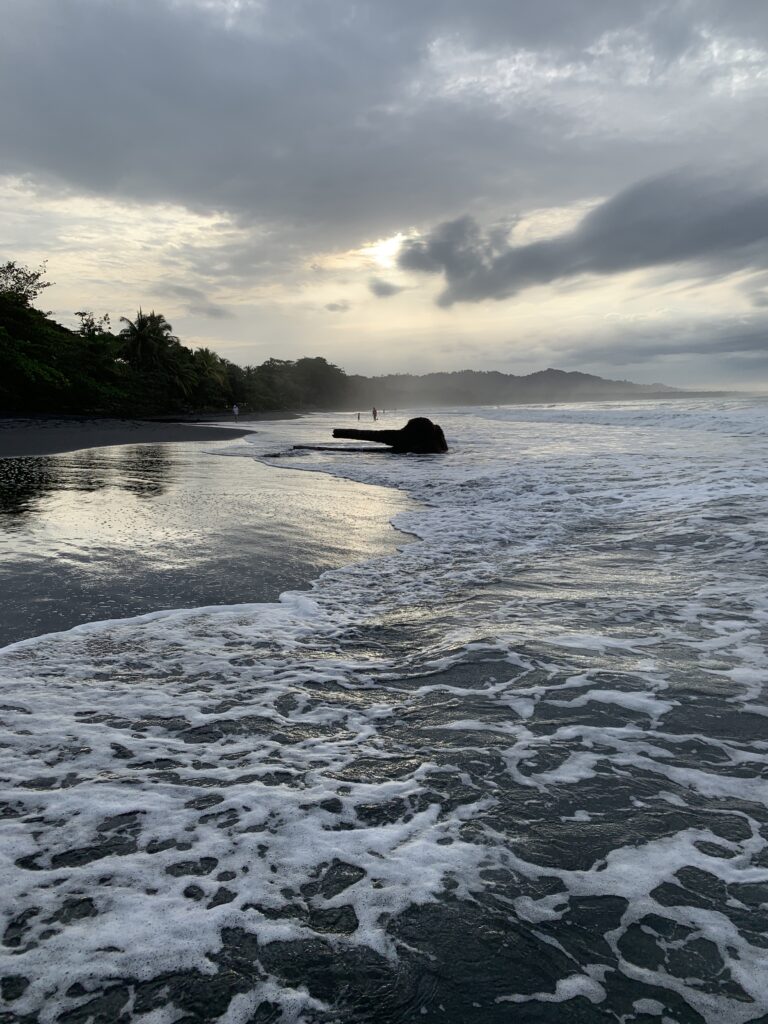
Northern Inland and Central Valley
In the inland areas, I travelled the following: Santa Elena/Monteverde – La Fortuna – Quesada – Alajuela – San Jose. You may fly into either Liberia or San Jose, depending on your first destination in the Central Valley.
In Central Valley I bird watched from my bungalow in Santa Elena, hiked in the jungle to the base of the Arenal volcano, swam in three different bodies of water in one day including a waterfall, lagoon and hot spring.
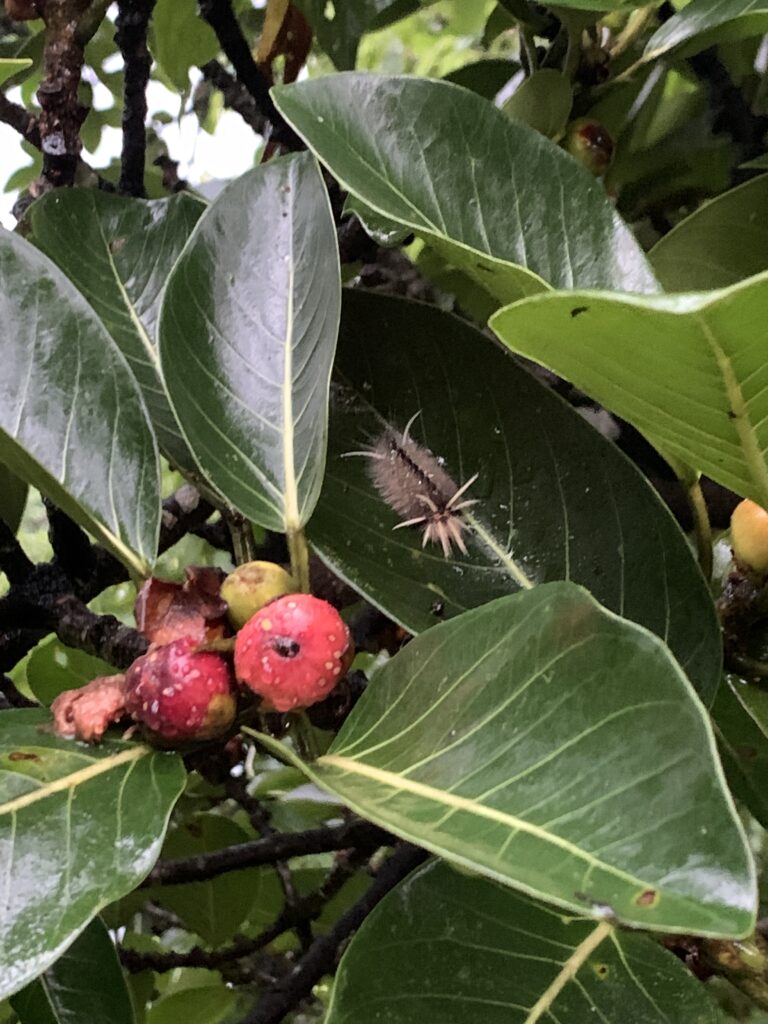
And… You’re Off!
You’re all set for your trip to Costa Rica! If you have any questions or comments, please leave them below. I will respond to you promptly. Have you already travelled to Costa Rica? Let me know how your own experience was in the green country. Pura Vida!
Wow what an amazing and insightful post! Thanks for the great advice, I am a huge fan and eagerly wait for every new post! Keep it up!
- Pingback: TV Tax in Germany: What it is and how to pay it -
Leave a Reply Cancel reply
You must be logged in to post a comment.
- BACKPACKERS WANDERLUST - AN AWARD WINNING TRAVEL BLOG
- Work With Me

- DISCLOSURE & PRIVACY POLICY
- United States
- Cook Islands
- New Caledonia
- New Zealand
- Accommodation Goals
- Budget And Cost Of Travel
- Foodie Goals
- Packing & Planning
- Travel Inspiration
- Volunteering Abroad
- Working & Studying Abroad
- Other Travel Tips
Costa Rica – A Travel Guide For Backpackers
Costa Rica is such a wanderlust destination. It is a country full of biodiversity, rainforests, sloths and amazing ticos. It is a destination which is on many travellers bucket lists and one unlike any other. From the hot desert landscapes to the lush green tropical regions elsewhere, you’ll find yourself consistently in awe.
There is a well-established backpacking scene in Costa Rica being along the ‘ Gringo Trail ’. You will have no problem finding hostel accommodation and meeting other travellers along the way, anytime during of the year.
It is perfect for short and long term travel , being a very condensed country, you can see a lot in a short amount of time. Though, it also popular with expats and has a lot of opportunities to teach English and volunteer . It is full of culture, adventure and never ending beautiful sights.
Costa Rica is a must visit destination for every traveller!
The local currency is colones
Generally 500 colones = $1USD
Though, this is a general, approximate amount, check the online exchange rates for a more exact amount.
COST PER DAY
If you are thinking of backpacking Costa Rica you will be spending approximately $40- $50 per day for one person. Some days you may spend more, some less, but it should even out .
Entry Requirements
Depending on how long you are in Costa Rica and which country your passport is from will depend on whether or not you need a visa to enter the country. Citizens from Australia , New Zealand, America and The United Kingdom can enter Costa Rica for up to a maximum 90 days, as long as you have a valid passport and a return ticket. This will give you plenty of time to explore the country and tick off some of the best spots on your Costa Rica itinerary .
You should be aware that when departing the country there is a departure tax of $29.
When to visit
Generally, Costa Rica has two seasons, the rainy season and the dry season.
As the name suggests during the rainy season it will rain a lot more. Though, this could also be the perfect chance to visit there as prices are slashed, the country will be full of lush green landscapes and you won’t see the typical gringo around every other corner. This typically lasts from May until mid-November.
In the dry season it is winter in America, this means that everyone escapes south for a tropical getaway. Though, this is generally better weather, where you day exploring won’t get rained out, forcing you back to the hostel. This season lasts from mid-November to April.
Though, from my experience, it is extremely likely you will experience rain no matter what season you travel to Costa Rica, it’s all just part of the fun.
Accommodation
There is such an established backpacking scene in Costa Rica it is perfect for the budget traveller. You should have no issues finding yourself a bed for the night, though during the high season, I would recommend booking in advance.
Traveling alone? Try out a hostel (if there’s one local) and expect to spend between $8 -$20 a night for a bed in a dorm.
Traveling with multiple people? Consider staying in a guesthouse with prices beginning at around $25 or a basic hotel from $40. When these are split between enough people it can often end up cheaper than staying in a hostel .
Traveling on a tight budget? Many hostels will also have the choice of sleeping in a tent or in a hammock which can often be the cheapest option.
Looking to splash out? There is an assortment of all inclusive resorts in Costa Rica perfect if you are just wanting to relax for a few days.
Transportation
The most cost effective way to travel around Costa Rica is by local bus. These always seem to run on tico time, but when you’re paying approx $3 to travel between towns, you can’t complain too much. Longer bus trips will cost around $10 and about $20 will take you across the whole country.
There is always the option of taking shuttle buses or even private coach. Though, these will cost a lot more and you will miss out on an authentic experience. If you are looking at a unique experience why not try out a cruise through Costa Rica and Panama?
It is quite common to rent cars in Costa Rica which will give you a lot more freedom and allow you to get out and explore. Though, at about $300-$700 per week, the bus is the best option.
When travelling within a town make sure to take a government taxi. They are the red cars with the yellow sign on the door. Tell the driver to use the meter, to ensure you are paying a fair rate.

Food & Drink
If you’re traveling to Costa Rica get prepared for a staple diet of beans and rice. These are available for breakfast, lunch and dinner . This meal will save you the most money and get you living like a local. Eat out at soda, which are local small restaurants where you can grab a decent plate of beans, rice, meat and plantains for about $4. Check out which soda has the most ticos eating there for the best food!
A typical western meal will be something along the lines of pizza, burgers or pasta, aka the unhealthy carbohydrate must haves. Expect to pay tourist prices for these, about $12-$20 per meal. Let’s be honest, you’ll get sick of rice and beans and splash out on comfort food at least once during your time in Costa Rica.

Top places to visit. . .
There are some awesome places to visit in Costa Rica . Whether you are wanting to relax beachside, explore the cities, check out the volcanoes, or meet some sloths, there is something for everyone here.
Being the capital of Costa Rica, you will most likely fly into San Jose when arriving. It is quite a gritty city so stay out in the suburbs in Heredia. Also, being centrally located in the country it makes a great travel hub. There are many day trips you can do from San Jose and I highly recommend visiting La Paz Waterfall Gardens . Make sure to eat at the Mercado Central for some cheap food!

Puerto Viejo
With a high Caribbean influence this town is a must for any backpackers in Costa Rica! Head out and visit the beautiful beaches and give surfing a try. This is even one of the spots you can go scuba diving in Costa Rica ! Make sure you hire a bike and head south to Manzanillo township, keep an eye out for sloths as you go through Manzanillo wildlife refuge. If you are looking for pure relaxation why not try a yoga retreat in Costa Rica , there are even some to choose from here in Puerto Viejo. Lastly, spend a night out on the town here and dance the night away to reggae vibes.
La Fortuna is an extremely touristy town, but there is a good reason this. It is such a picturesque place, with the beautiful Arenal Volcano standing over the township. Though, unfortunately, you can’t see the lava flowing out anymore . Grab a zip lining tour with Arenal Mundo Adventura Canopy Tours to see the magnificent volcano against the lush rainforest backdrop, all while you fly between the trees. Visit Baldi Hot Springs for the ultimate relaxation and body soak, as well as the best buffet dinner ever!
Have you seen those pictures of Costa Rica where people are walking amongst the rain forest on suspension bridges? Well that’s Monteverde. Set up high amongst the cloud forest this is a must visit place for every backpacker in Costa Rica. Make sure you try Latin America’s longest zip line with Adventura Canopy tours ! There is even the unique opportunity to hike the rain forest at night, with a guide and a torch leading the way. Make sure you spend at least 2 days in Monteverde to get the most out of your stay.
Ricon De La Vieja
Rincón de la Vieja National Park is home to the Rincón de la Vieja Volcano and the Santa María Volcano, as well as the dormant Cerro Von Seebach. The park is spread over an area of 14,127 acres and is known for its diverse flora and fauna.
It offers several activities such as hiking, enjoying hot springs, swimming, enjoying waterfalls, picnicking, and camping.
There are two areas: Las Pilas and Santa Maria. The Las Pilas area has trails to the Von Seebach craters, Rincon de la Vieja, La Cangreja Waterfalls, Escondidas, Blanco River well, and the fumaroles and mud pits. The Santa Maria area has trails to the Encantado (Enchanted) Forest waterfall, Pailas area, Las Pailas de Agua Fria, and hot springs.
Ricon de la Vieja is accessible from the city of Liberia. You can also spend a couple of nights here in one of the beautiful resorts near Liberia .

Tortuguero National Park
If you are visiting Costa Rica my top recommendation would be to experience the wildlife in its natural habitat, and there is no better place to do this than Tortugero National Park. Here you will find turtles, birds, monkeys, crocodiles, sloths and manatees. There are opportunities to partake in night boat tours to see those nocturnal visitors, though this will set you back between $40-$60. It is not the most budget friendly place being such a popular tourist town. Though, when there in the chance to see baby turtles being released under moonlight you really can’t say no.
Do you imagine Costa Rica as the perfect beach destinations with beautiful sunsets and swaying palm trees? If so, Samara is the destination for you. Set on the Pacific Coast in the Guanacaste province it is full of backpackers enjoying the laidback lifestyle. This is the perfect place for beginner surfers and a popular yoga destination. There are multiple amazing vegetarian/vegan cafes and some amazing local stores.
Where to Next?
After your done traveling in Costa Rica why not head south like I did and visit Panama? The amazing islands, bustling cities and lush jungles get ready for another adventure.
Tasha Amy is a true backpacker at heart and has been discovering the world on a budget since 2015. Based in Gisborne, New Zealand she will spend many months each year traveling overseas as a solo female traveler before coming home and sharing her adventures online with you.
2 thoughts on “ Costa Rica – A Travel Guide For Backpackers ”
Would like more info in backpacking in Costa Rica
Hey Susan, Feel free to ask any questions and I’ll do my best to answer!
Leave a Reply Cancel reply
Your email address will not be published. Required fields are marked *

Backpacking in Costa Rica Guide: Key Tips to know! [2024]
![travel costa rica backpacking Backpacking in Costa Rica Guide: Key Tips to know! [2024]](https://assets-global.website-files.com/63d1baf79ce0eb802868785b/640f2ebc04411f5da28d4f4d_backpacking_in_costa_rica.jpg)
Costa Rica’s calling! Immerse yourself in a world of natural wonder as you backpack through the jewel of Central America. From lush rainforests to stunning beaches, this is a backpacker’s paradise.

For thrill-seeking backpackers, Costa Rica is the perfect playground. You can explore lush rainforests, soak up the sun on stunning beaches, and immerse yourself in a vibrant culture.
Adventurous travelers will appreciate the untamed beauty and become engrossed in the history and culture of this Central American nation. And if you’re new to this type of travel, Costa Rica is a great place to start dipping your toes in the waters of backpacking.
If you’re trying to decide whether Costa Rica would be a good destination for your next backpacking trip, I’ve prepared this extensive guide to help you out.
Learn more from the rest of our Costa Rica series…
- Navigate Costa Rican airports like a local
- Find the best areas to stay
- Stay at a Costa Rica hostels that won’t disappoint
- Don’t miss out on these local spots—the best places to go in Costa Rica
- Add these exciting things to do to your trip plan
- Make time for a few guided tours during your adventure
- Spend the night out enjoying Costa Rica’s nightlife
- Want to simplify your planning? Follow this 5-day itinerary or 7-day trip plan
- Get our tips on budget travel in Costa Rica
- Find more helpful information if you’re a solo traveler
- Remember, camping in Costa Rica is also a great option!
- Dive into our snorkeling guide —essential tips and advice before you go
Why Choose Costa Rica?
Located in Central America, Costa Rica is known for its vivid natural beauty.
The focus of backpacking is to immerse yourself in local cultures, meet new people, and experience new things. And Costa Rica offers every little aspect of the ultimate backpacking adventure. The nature, the beauty, the Pura Vida culture! Oh my!
Plus, the people are friendly, and the costs are low.
By making friends with locals, you’ll be able to discover the hidden wonders your regular travel magazine doesn’t tell you about. After all, a country’s best-kept secrets are sealed on the lips of its people.

Preparing for Your Costa Rica Adventure
I’d love to be the type of person who can just toss some clothes in a bag and head out without any real idea of what I’m doing. But unfortunately, that’s not in my nature, and I always like to be prepared.
And when it comes to long journeys through foreign countries, I like to have some control over the things around me.
Of course, every person is different, so there’s no right or wrong way to prepare for a backpacking trip . But here are some points to remember that might help you create a plan.
Remember that backpacking is all about keeping your costs low.
There are many different ways to budget for your trip. Researching accommodation, flights, activities, and food costs ahead of time is a good idea so you can set aside money accordingly. And think about having an emergency fund if things don’t go well.
Travel Route
Planning a route ensures you hit all the best places while backpacking in Costa Rica. You’ll also get an idea about where you might be staying, the kinds of people you’ll meet, and the activities you can enjoy.
Planning the best time to go backpacking in Costa Rica could make or break your trip. Knowing the best time to visit Costa Rica in terms of seasons, weather, peak tourism months, and significant cultural events can help you get the most out of your trip.
You might not be able to predict the weather, but you can certainly try your best to avoid the worst of it!
Must-Have Packing Essentials
You may wonder what to pack for a backpacking trip to Costa Rica. Costa Rica’s environment is very different from what you might be used to, and there are a few essentials you should keep on you at all times:
- Insect repellant
- Sun protection
- First Aid Kit
- Comfortable shoes

What to Do in Costa Rica
Explore the wilderness.
Costa Rica is an area of intense natural beauty and diversity. The country has incredible flora and fauna, including sloths, toucans, and red-eyed tree frogs!
It’s a paradise for nature lovers who can enjoy endless hiking opportunities, national parks, and adventure opportunities in unique terrain.
Not to mention the countless thrill-seeking opportunities such as canopy walks , ziplining , rock climbing, and more!
Dive into Local Cuisine
The food in Costa Rica is a real treat. The country is known for rich, flavorful cuisines that will get you hooked! The street food in Costa Rica is in a class of its own and something every visitor to the country must try at least once.
If you’re longing for a taste of home, there are well-known outlets to be found too.

Immerse Yourself in the Culture
Costa Rica is rich in natural wonders and is culturally rich too! You can enjoy learning about the history and traditions of the region by:
- Attending local festivals
- Visiting indigenous communities
- Taking dance classes
- Enjoying coffee tours
- Visiting museums
- Wandering around!
The best way to immerse yourself in the culture is to avoid the regular tourist traps and try to dig out the hidden gems. Talk to the locals, wander the streets, and don’t be afraid to investigate if you see something interesting.
Try Volunteering
The country is packed with opportunities if you fancy doing some good while backpacking in Costa Rica.
By browsing through Volunteer World , you can find a way to spend more time in Costa Rica exploring and diving into the incredible culture.
Remember, it’s volunteering, so you won’t be paid. Depending on the organization you volunteer with, costs like accommodation and food might be covered. The experience probably won’t be luxurious, but it will be unlike anything you’ve ever dreamed of!
The Best Towns in Costa Rica for Backpackers
San Jose is Costa Rica’s capital and the ideal base for backpackers to branch out to other regions. It’s budget-friendly, vibrant, and full of opportunities to explore.

Santa Elena
Located close to the Monteverde Cloud Forest, Santa Elena offers opportunities for adventure backpackers looking to explore the local wilderness and embrace Costa Rica’s natural beauty.
The Osa Peninsula
Known for its natural diversity and gorgeous beaches, the Orsa Peninsula is a must-see destination for backpackers on a budget.
Transport in Costa Rica
Unless you’re traveling to Costa Rica on foot, you’ll need a good idea of the types of transport on offer. Let’s look at a few of the options.
Public Buses
Buses are the most common form of transport in Costa Rica. They are easily accessible in most major towns and cities, and they’re cheap and will get you to many fabulous places.
The only downside is that they have set routes, so going off the beaten path isn’t easy. But, of course, you could always combine buses with other types of transport!

Rental Cars
With a rental, you can stop and sniff the flowers on the side of the road. In contrast, you can’t necessarily do that on a public bus or even using a private service. I love the freedom of movement this option offers!
Renting a car might not be the best choice for you, though. There are concerns about road conditions, traffic regulations, and the hidden costs that come with driving.
These are all things to factor in and consider before choosing to use a rental for your backpacking trip through Costa Rica.
Private Services
If you have more budget to splurge, you can go the private transportation route. This can include:
While these services don’t offer the freedom of a rental car, they allow ease of movement with a bit of privacy.

Time to Get Backpacking!
Costa Rica is a backpacker’s paradise. It’s the perfect destination to kick off a lifetime journey of budget travel! All you need to do now is start planning your perfect trip.
Why not let Pilot help with that?

Disclosure : Pilot is supported by our community. We may earn a small commission fee with affiliate links on our website. All reviews and recommendations are independent and do not reflect the official view of Pilot.

Satisfy your wanderlust
Get Pilot. The travel planner that takes fun and convenience to a whole other level. Try it out yourself.
Trending Travel Stories
Discover new places and be inspired by stories from our traveller community.
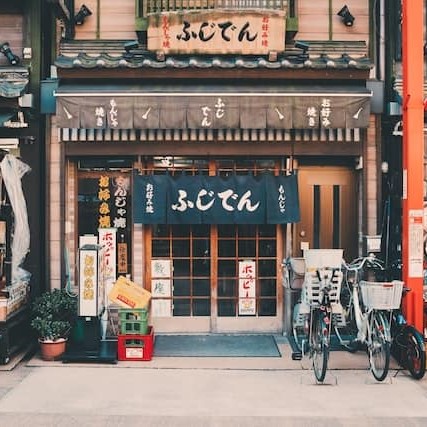
Related Travel Guides
![travel costa rica backpacking Costa Rica Solo Travel Guide: Essential advice & tips [2024]](https://assets-global.website-files.com/63d1baf79ce0eb802868785b/63d1baf89ce0eb32b06895be_traveling-solo-in-costa-rica.jpg)
Costa Rica Solo Travel Guide: Essential advice & tips [2024]
![travel costa rica backpacking Snorkeling in Costa Rica [2024]: 4 Best Spots + Pro Advice!](https://assets-global.website-files.com/63d1baf79ce0eb802868785b/64077e40cd0f1842316ce438_scuba_diving_costa_rica.jpg)
Snorkeling in Costa Rica [2024]: 4 Best Spots + Pro Advice!

Where to Go in Costa Rica: Local spots you can't miss in 2024!

Costa Rica Packing List: Don't Leave Essentials at Home!

Surfing in Costa Rica: Best 5 Spots For The Best Waves!
![travel costa rica backpacking 21 Best Things to Do in Costa Rica [2024]: My Top Picks!](https://assets-global.website-files.com/63d1baf79ce0eb802868785b/63d1baf89ce0eb0a386895c2_fun%20things%20to%20do%20in%20costa%20rica.jpg)
21 Best Things to Do in Costa Rica [2024]: My Top Picks!
Make the most of every trip.
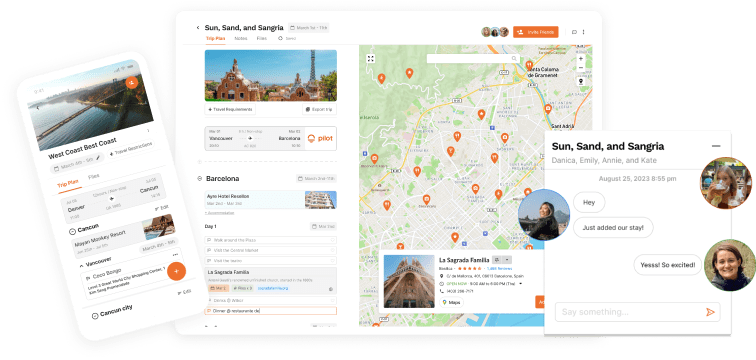
You won’t want to plan trips any other way!
The trip planner that puts everything in one place, making planning your trip easier, quicker, and more fun.
Top Costa Rica Backpacker Destinations
Matteo Colombo/Getty Images
Though Costa Rica's prices are high compared to those of other Central America countries like Nicaragua and Guatemala , backpacking in Costa Rica remains a popular pursuit. That's because dedicated Costa Rica backpackers know about the top Costa Rica backpacker destinations: the places where beds and beverages are cheap, the friendship abundant and the scenery unforgettable.
JodiJacobson/Getty Images
Jaco Beach might be most famous for its waves, but surfers aren't the only budget travelers Jaco attracts. Jaco's hostels and backpacker haunts are always crowded with diverse, friendly travelers.
Playa Jaco hostels and budget hotels:
- Nathon's Surfer Hostel
- Hotel De Haan
- Hotel Kangaroo
Hordes of Costa Rica backpackers stay in the capital city of San Jose . San Jose also serves as a perfect base for visiting regional backpacker destinations, such as the Irazú and Poás volcanoes. Costa Rica's main Ticabus terminal is located in San Jose, for backpackers heading to other Central America countries .
S an Jose hostels and budget hotels:
- Costa Rica Backpackers Hostel
- Costa Rica Guesthouse (across the street from Costa Rica Backpackers Hostel)
- Hostel Pangea
- Hostel Toruma
Santa Elena and Monteverde
Javier Fernández Sánchez/Getty Images
Although it's possible to find budget accommodations within the perimeter of the Monteverde Cloudforest, most Costa Rica backpackers prefer to stay at nearby Santa Elena. You can book canopy tours and Monteverde Cloudforest hikes from your Santa Elena hotel, but don't overlook the in-town wildlife: the Serpentario (snake zoo!), the Frog Pond, the Butterfly Garden... as well as the nightlife.
Monteverde/Santa Elena hostels and backpacker hotels:
- Monteverde Backpackers
- Pension Santa Elena
- Cabinas Tina's Casitas
John Seaton Callahan/Getty Images
Liberia isn't much of a destination in its own right. But many Costa Rica backpackers stay there because of its central "crossroads" location at the northeast edge of the Nicoya Peninsula , as well of its possession of the only Costa Rica international airport outside San Jose. Liberia is also the best jumping-off place for visiting the volcanic landscape of Rincon de la Vieja National Park.
Liberia hostels and budget hotels: Hotel Liberia (one block from Central Park; 666 0161), Hotel Guanacaste (by the bus station; 666 0085), La Posada del Tope (on Calle Real; 666 3876)
The Osa Peninsula
Matteo Colombo/Getty Images
The Osa Peninsula in Costa Rica's remote southwest is one of the best Costa Rica destinations for adventure travelers on a budget. Corcovado National Park, the crown jewel of the Osa Peninsula, was heralded by National Geographic as "the most biologically intense place on Earth.” Top backpacker destinations in the Osa Peninsula include Drake Bay, Puerto Jimenez, and Matalpo, as well as other beaches along the peninsula's coasts.
Osa Peninsula budget jungle lodges and hostels: Cabinas Manolo and the Poor Man's Paradise Resort in Drake Bay; Cabinas Marcelina in Puerto Jimenez.
Quepos and Manuel Antonio
TripSavvy / Kathleen Messmer
Manuel Antonio is a must-visit for Costa Rica backpackers seeking perfect beaches and lush jungle scenery – which probably includes every Costa Rica backpacker! Problem is, Manuel Antonio isn't really a budget travel kind of place. But the adjacent village of Quepos offers great budget accommodations, as well as affordable restaurants, nightlife, and local culture. Buses leave Quepos for Manuel Antonio every half hour for the fifteen-minute ride (about 25 cents US). Problem solved. Quepos hostels and Manuel Antonio budget hotels: Wide Mouth Frog in the town center, Backpackers Manuel Antonio (halfway between Quepos and Manuel Antonio), Finca Amanecer, an organic farm about 10k from town.
Montezuma Beach
Yadid Levy/robertharding/Getty Images
Playa Montezuma is the ultimate backpacker beach. No Costa Rica backpacker's itinerary is complete without a stop at this famously funky beach village. Nearby natural attractions like the El Choro waterfall draw adventuresome types, while the relentless nightlife caters to party animals. Playa Montezuma budget accommodations and hostels: Hotel Aurora, Hotel Lys
La Fortuna and the Arenal Region
MB Photography/Getty Images
Many travelers arrive in La Fortuna through the famous Jeep Boat Jeep combo from Santa Elena/Monteverde. La Fortuna is located at the foot of the Arenal Volcano, which you can climb for an up-close glimpse at some fiery magma. Cheap rooms and restaurants are plentiful -- though a day at the hot springs of Baldi Termae or Tabacon is worth the splurge. La Fortuna hostels and budget accommodations: Arenal Backpackers Resort, Cabinas Arsol (cabins or dorm beds), Hotel Jardines Arenal.
The Nicoya Peninsula
Daniela White Images/Getty Images
A number of Costa Rica's most popular beaches are located on the Nicoya Peninsula, a massive hunk of land jutting out from the country's northwest coast. Favorites are Playa Tamarindo, Playa Hermosa, Samara, and Mal Pais. But if you're looking to skip the crowds, ask around for inside information. Ecotel in Playa Hermosa, Tamarindo Backpackers in Playa Tamarindo, Tranquilo Backpackers in Mal Pais.
Puerto Viejo
Spencer Robertson/Getty Images
Costa Rica's Caribbean Coast is much less traveled than its Pacific Coast. But for Costa Rica budget travelers, that's usually a good thing: cheaper prices, fewer crowds, and underexplored natural attractions. Puerto Viejo, south of Limon, offers backpackers leisurely days and lively nights, as well as accessibility to other Caribbean hotspots. Puerto Viejo hostels and budget rooms: Rocking J's (a hammock hotel!), Hotel Yare .
The 19 Best Beaches in Costa Rica
San José: A Visitor's Guide to Costa Rica's Capital
The Most Popular Destinations on the Gringo Trail
Backpacking in Panama: Where to Go and What to See
Top 10 Backpacker Destinations in Central America
9 Very Adventurous Things to Do in Costa Rica
The Top 10 Destinations to Visit in Costa Rica
Your Trip to Costa Rica: The Complete Guide
How to Travel From San José to Bocas del Toro by Bus, Plane, and Car
Montezuma Beach in Costa Rica
The Best Costa Rica Honeymoon Destinations
Jaco Beach, Costa Rica
The Top 19 Things to Do in Costa Rica
Top Mexico Destinations
The Best Time to Visit Costa Rica
Where to Go for Spring Break in Mexico
Nomadic Matt's Travel Site
Travel Better, Cheaper, Longer
Costa Rica Travel Guide
Last Updated: November 2, 2023
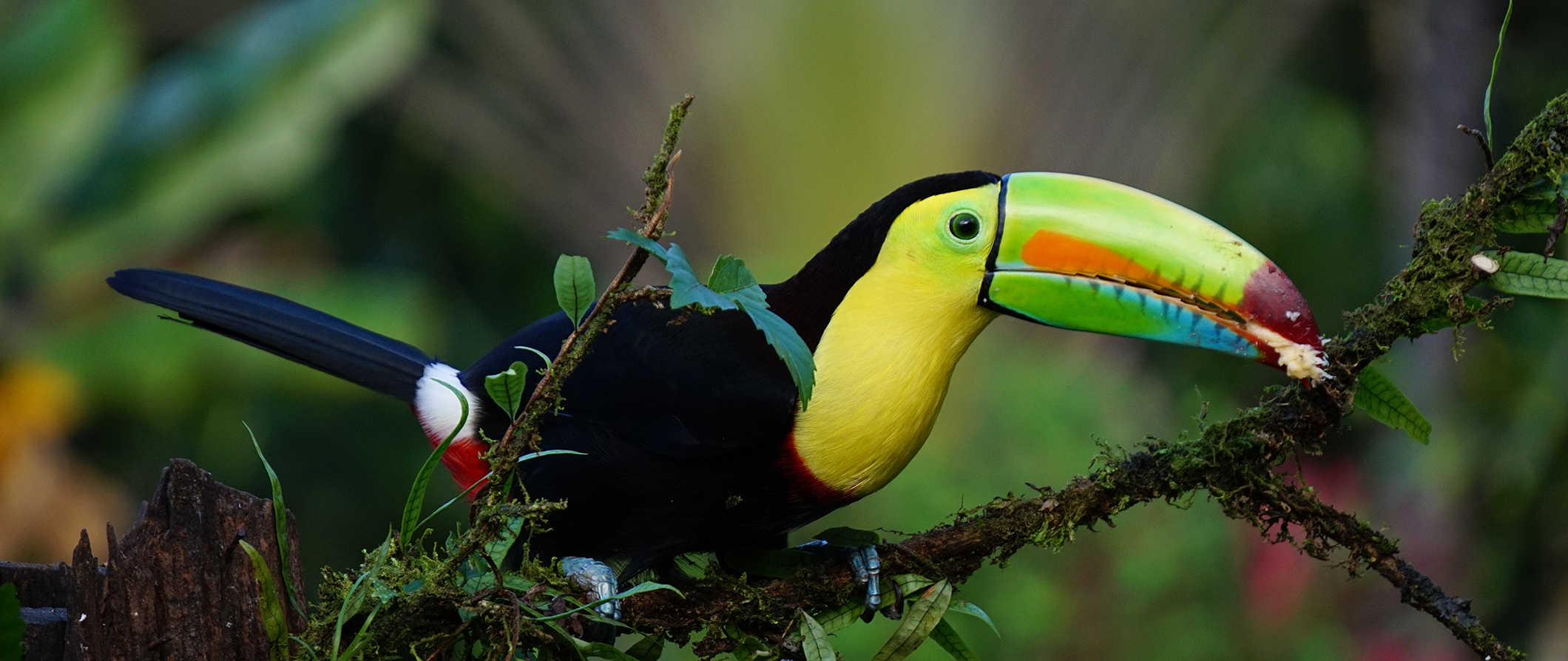
Costa Rica is one of my favorite countries in the world. It was the first country I ever traveled to — and it was the country that sparked my wanderlust.
These days, Costa Rica is one of the most popular destinations in Central America . It’s popular with expats, luxury travelers, and backpackers alike. While it is on the higher end of the price spectrum for the region, it’s nevertheless a phenomenal country to visit and remains affordable.
I love the never-ending activities, gorgeous beaches, diverse wildlife, delicious food, and friendly people.
The country may be expensive by regional standards but that doesn’t make it any less amazing. The beaches are picturesque, there’s great surfing and amazing diving, and there are plenty of places to get away from the hordes of retired Americans that live here.
This guide to Costa Rica can help you have the trip of a lifetime — and save money in the process!
Table of Contents
- Things to See and Do
- Typical Costs
- Suggested Budget
- Money-Saving Tips
- Where to Stay
- How to Get Around
- How to Stay Safe
- Best Places to Book Your Trip
- Related Blogs on Costa Rica
Click Here for City Guides
Top 5 things to see and do in costa rica.

1. Climb a volcano
Volcanoes are among the country’s top tourist attractions. There are currently 5 active ones and over 60 dormant ones. Arenal is the most popular, famous for its beautiful hikes and scenic views. Irazu is known for its astonishing green-blue lake in one of its craters, while the Poas Volcano is home to a boiling acid lake within its crater.
2. Visit Monteverde
Monteverde is one of my favorite places in Costa Rica. I always found this town to be a nice base to hike the surrounding cloud forest, take canopy tours, and visit coffee plantations. I still dream of the coffee from here — it’s like drinking liquid chocolate! Be sure to take a nocturnal rainforest tour while you’re here — they’re super fun and educational.
3. Explore Tortuguero National Park
This park on the Caribbean coast is regarded as one of the most important breeding grounds for the endangered green turtle. The park also helps protect manatees, sloths, and monkeys. If you like jungles, birds, and quiet, this is a must-see! Admission is $16.95 USD. You can visit as a guided full-day tour from San Jose for $195 USD.
4. Explore Corcovado
Established in 1975, Corcovado National Park is on the remote Osa Peninsula in the southwest. Spanning 424 square kilometers (164 square miles), it’s a rugged, quiet, off-the-beaten-path destination. Here you’ll find pristine jungles, hiking trails, and plenty of diving opportunities. There’s lots of wildlife too, including tapirs, jaguars, pumas, and the rare Harpy eagle. The peninsula is not easy to get to but it’s the highlight of the country for me.
5. Stay in Puerto Viejo
Other things to see and do in costa rica, 1. visit san josé.
Costa Rica’s capital, San Jose is in the center of the country. It’s sort of gritty and there’s not a whole lot to do (the city only requires a few days) but while you’re here, visit the Museum of Contemporary Art & Design to check out the future of Costa Rican art, as well as the magnificent Teatro Nacional to take in its décor. There are also many tour companies that offer day trips to the surrounding jungle for hiking, zip-lining, canopy tours, and more. Most start around $150 USD.
2. Zip through the rainforest canopy
The highest 10% of rainforest is where most activity takes place, filled with squawking birds, slow moving sloths, and monkeys scampering from tree to tree. For an adrenaline-pumping view of these vast, diverse ecosystems, take a zip line tour. There are dozens of companies throughout the country, though Monteverde is my favorite place to do it. Expect to pay around $75-85 USD for a multi-line tour lasting a couple of hours .
3. Explore Baru Wildlife Refuge
With over 330 hectares (815 acres) of land, 7 kilometers (4 miles) of walking trails, and 3 kilometers (1.8 miles) of fantastic beaches, this refuge is another prime example of Costa Rica’s natural beauty. Located on the coast south of Manuel Antonio , here you can go birdwatching, take canopy tours, and explore the park via guided tours to see the wildlife. Don’t miss the orchid and butterfly gardens. For something more unique, take a nighttime guided tour to see the region’s nocturnal animals. Self-guided tours cost $15 USD while guided tours start at $35 USD.
4. Go surfing in Jaco
Located on the Pacific Coast west of San Jose, Jaco was once a sleepy resort town whose main attraction was its excellent surfing. Growing tourism has transformed it into a haven of beach parties and nightclubs. Surf lessons and rentals are widely available on the beaches and sport-fishing is also popular here. For a more laid-back visit, head to the nearby Carara National Park to spot scarlet macaws, armadillos, and hundreds of species of birds (admission is $11.30 USD).
5. Learn some Spanish
Costa Rica is one of the most popular countries for learning Spanish due to the country’s easy-to-understand dialect. Programs vary in length and cost, but most offer the opportunity to do an immersive homestay with a Costa Rican family. Expect to spend around $500 USD for a basic week-long homestay language learning program.
6. See La Paz Waterfall Gardens
Located just one hour from San Jose, this makes for a popular day trip. Aside from the many stunning waterfalls throughout the lush cloud forest, here you’ll also find several beautiful gardens, an aviary, a hummingbird garden, a butterfly garden, and a reptile area. Plan to stay at least two hours to see everything. Admission is $50 USD. You can also do a full-day tour to the Waterfall Gardens that includes a visit to a coffee plantation and Poás Volcano for $159 USD.
7. Go fishing
Costa Rica is home to Marlin, Sailfish, Dorado, Snapper, Wahoo, and more. If you love to fish (or just want to give it a try), consider doing a half-day or full-day fishing excursion. A basic group excursion costs around $105 USD and usually includes food, though prices can be ten times as high for multi-day or exclusive charters. A half-day private charter is around $400-600 USD. You can usually find places that can cook your catch as well.
8. Chill out in Santa Teresa
At the bottom of the Nicoya Peninsula is the hippy backpacker town of Santa Teresa. This “town” is really nothing more than a beach with a road lined with eateries, surf shops, and hostels. Not much goes on here as everyone is up early to hit the waves. I enjoyed my time here as it’s a good place to just lay on the beach, hang out with people, and relax. It’s an easy place to fall into and spend weeks. Or, like most people who visit, months.
9. Learn to surf
Puerto Viejo , Cahuita , Manuel Antonio , Jaco, Santa Teresa, or Tamarindo all offer plenty of waves and lots of places to learn to surf. In fact, most travelers come here to surf because the waves are world renowned. If you have never learned but always wanted to try, this is the best place in the region to learn. Group lessons cost around $60 USD and private lessons are around $80-100 USD, while all-inclusive surf camps (including food, accommodation, lessons, and more) can be up to $2,500 USD. Board rentals are usually around $10 USD per day.
10. Walk through the treetops
The Rainmaker Aerial Walkway, located one hour from Jaco, was the first aerial walkway to be built in Central America. Spanning the canopy of a private rainforest, it’s still considered to be one of the top aerial walkways in the region. At the highest point on the walkway, you’ll find yourself 20 stories above the ground, giving you ample opportunities to spot all kinds of birds and monkeys. A self-guided tour is $23 USD, while guided tours start at $74 USD.
11. Wander a coffee plantation
Costa Rican coffee is famous the world over. On a coffee plantation tour you can learn about the entire bean-to-cup process and see it all up close — all while learning about the lives of the local farmers who grow it. While I personally dislike the taste of coffee, the kind I had in Monteverde tasted like chocolate and was delicious! Prices vary but expect to pay around $40-50 USD for a tour.
12. Take a chocolate-making workshop
Cacao is Costa Rica’s other famous bean (also technically a seed). Once widely exported, Costa Rican chocolate is now mostly made in small batches on local artisan farms. There are many places around the country where you can take chocolate making workshops, where you can see the entire process, sample the goods, and try your hand at grinding raw cacao. Tours generally last 2-3 hours and cost around $30-40 USD.
13. Experience the rainforest by night
A guided night walk offers the chance to spot and learn about some of the countless nocturnal animals that call the forest home, including tarantulas, armadillos, and stick bugs. It’s a cool way to see a different side of the jungle as your guide will point out animals, insects, and plants that you might not have noticed otherwise. You can take night walks at national parks and nature preserves around the country. Tours generally last around 2 hours and cost $25-35 USD.
14. Take a cooking class
One of my favorite ways to learn about a new culture is through its cuisine, and taking a cooking class is one of the best ways to do that. Taking home new recipes is also a great souvenir from your trip! In this 3-hour cooking class in La Fortuna, you’ll learn about typical Costa Rican produce and ingredients, and then prepare a few traditional dishes like picadillos (a spicy stew), tortillas, and guisados (a meat dish).
For more information on specific destinations in the country, check out these guides:
- Arenal Travel Guide
- Manuel Antonio Travel Guide
- Monteverde Travel Guide
- Puerto Viejo Travel Guide
- San Jose Travel guide
- Tamarindo Travel Guide
- Tortuguero Travel Guide
Costa Rica Travel Costs
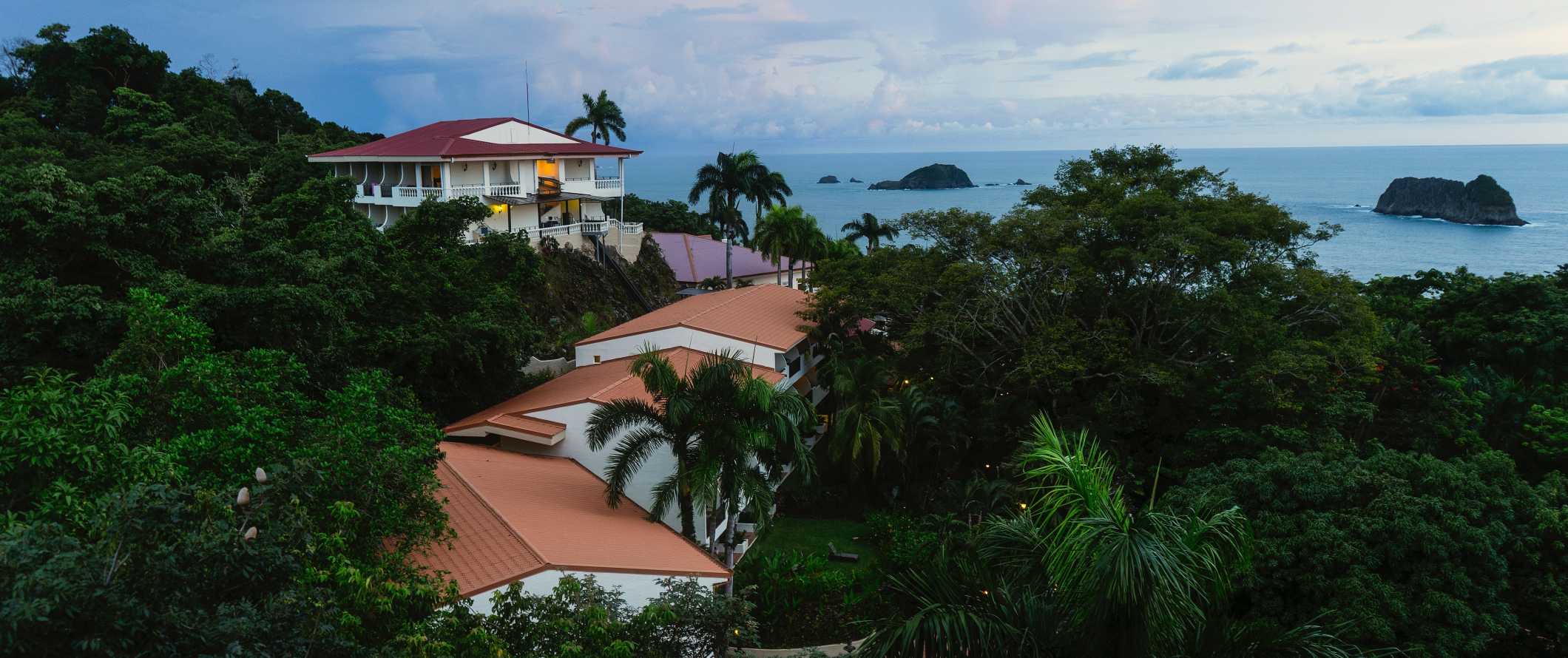
Hostel Costs – A bed in a hostel dorm with 4-6 beds costs between $15-25 USD per night, while dorms with 8 beds and up can be found for as cheap as $11-14 USD. Private rooms in hostels are usually $35-60 USD.
Free Wi-Fi is standard and some hostels also include free breakfast. The majority of hostels around the country also have self-catering facilities too. Many also have bars/restaurants on site. In the beach areas especially, some hostels even have pools.
Budget hotel costs – Budget hotels begin around $50 USD per night but average closer to $65-70 USD.Breakfast is often included and most have basic amenities like AC and TV. Many budget hotels even have pools, especially in beachside towns.
For Airbnb, private rooms start around $40-60 USD per night. For an entire home or apartment, expect to pay at least $75-125 USD. Prices double when not booked in advance.
For those traveling with a tent, camping is an option all around the country. Most campgrounds usually charge around $10 USD per night for a basic plot without electricity. Avoid wild camping as it is often unsafe and illegal in many areas due to the protection of natural areas.
Food – Costa Rican cuisine is centered around rice and beans, which are usually eaten for every meal. Potatoes, plantain, pork, and beef are also popular. Gallo pinto (rice and bean stir-fry) is the national dish. You’ll find it mixed with eggs for breakfast. Casado is a typical lunch dish, which consists of rice, beans, veggies, fresh salad, and your choice of meat. Generally, the food here is quite mild.
Note: While you can easily pay for tours and entrance fees in USD, in smaller establishments, such as local restaurants, you’ll need colones (CRC). Prices in this section are in CRC to reflect this.
At sodas (cheap local restaurants serving traditional cuisine), expect a filling meal of casado (rice, beans, veggies, and meat) to cost around 3,500-5,000 CRC. You can usually find empanadas and other savory snacks from traditional bakeries for around 2,000 CRC or less.
At a mid-range restaurant or in touristy areas (like right along the beach) expect to pay around around 7,000-8,500 CRC for a fish dish, 6,000-7,000 for a burger or a simple pasta dish, and 9,000-11,000 CRC for a steak dish or large pizza to share. Seafood dishes like lobster start around 12,000-17,000 CRC.
For fast food (think pizza or burgers) or a dish of fried rice at a Chinese takeout place, expect to pay around 4,500-5,000 CRC.
Domestic beer costs around 1,500-2,000 CRC, a glass of wine is 3,000 CRC, a cocktail is 3,500-5,000 CRC, and a latte/cappuccino is around 2,000 CRC. Bottled water is 1,000 CRC. Fruit smoothies, which you can get made either with water or milk, are 2,000-2,500 CRC.
If you plan on cooking for yourself, a week’s worth of groceries costs around 20,000-30,000 CRC depending on the area. This gets you basic staples like rice, beans, veggies, fruit, and some meat or fish.
Backpacking Costa Rica Suggested Budgets
If you’re backpacking Costa Rica, my suggested budget is $50 USD per day. On this budget, you can stay in a hostel, cook most of your meals, have some cheap street food, take public transportation to get around, and enjoy mostly free activities like hiking and the beach.
On a mid-range budget of around $135 USD per day, you can stay in an Airbnb or private hostel room, eat out at local sodas, enjoy a couple of drinks, take the occasional taxi, and do more paid activities like guided tours, surf lessons, and museum visits
On a “luxury” budget of $250 USD or more per day, you can stay in a hotel, eat out anywhere you want, rent a car to get around, drink as much as you’d like, and do as many excursions as you want, including diving and canopy tours. This is just the ground floor for luxury though. The sky is the limit!
You can use the chart below to get some idea of how much you need to budget daily, depending on your travel style. Keep in mind these are daily averages — some days you’ll spend more, some days you’ll spend less (you might spend less every day). We just want to give you a general idea of how to make your budget. Prices are in USD.
Costa Rica Travel Guide: Money Saving Tips
Costa Rica is one of the most expensive countries in Central America. Between food costs, accommodation, and activities, there’s a lot of ways to spend money. You can get by on a budget compared to other places in the world but it’s still an expensive place to visit. Fortunately, there are plenty of ways to save money while you’re here:
- Travel off-season – Late April to November is considered the rainy season and prices tend to be less expensive and the region is less crowded. If you’re on a budget, visit during this time.
- Avoid tour activities – There are a lot of great (but expensive) group activities and tours in the country. Skip them and do free activities like hiking, swimming, and relaxing at the beach instead.
- Eat at the sodas – “Sodas” are small family-run restaurants that specialize in inexpensive yet filling traditional meals, usually costing around 3,500-5,000 CRC. These hole-in-the-wall restaurants offer the best value in the country.
- Go camping – Some hostels let you camp on their property if you have a tent. If not, there are plenty of campgrounds around the country where you can pitch a tent. Usually, this costs around $10 USD per night.
- Visit the Caribbean side – Visiting the cheaper Caribbean side lets you see the beautiful country without the high prices of the popular Pacific destinations.
- Avoid the tourist shuttles – While local buses are a lot slower than tourist shuttles, they are also a fraction of the price (i.e the local bus from San Jose to Monteverde is $6 USD while a shuttle is $60 USD). If you aren’t rushed for time, take the local buses.
- Pack a water bottle – While the tap water is drinkable in most of the country, there are some remote and beach destinations where it’s recommended to drink bottled water. A reusable water bottle with a filter can help you save money (and thousands of plastic bottles) by purifying the tap water for you. My preferred bottle is LifeStraw .
Where to Stay in Costa Rica
Costa Rica has lots of fun, social, and affordable hostels. Here are some of my favorite places to stay in Costa Rica:
- Arenal Backpackers Resort (Arenal)
- Selina Puerto Viejo (Puerto Viejo)
- Stray Cat Hostel (San Jose)
- Costa Rica Backpackers (San Jose)
- Pura Natura Lodge Manuel Antonio (Manuel Antonio)
- Sloth Backpackers (Monteverde)
- Pura Vida Hostel (Tamarindo)
- Aracari Garden Hostel (Tortuguero)
How to Get Around Costa Rica
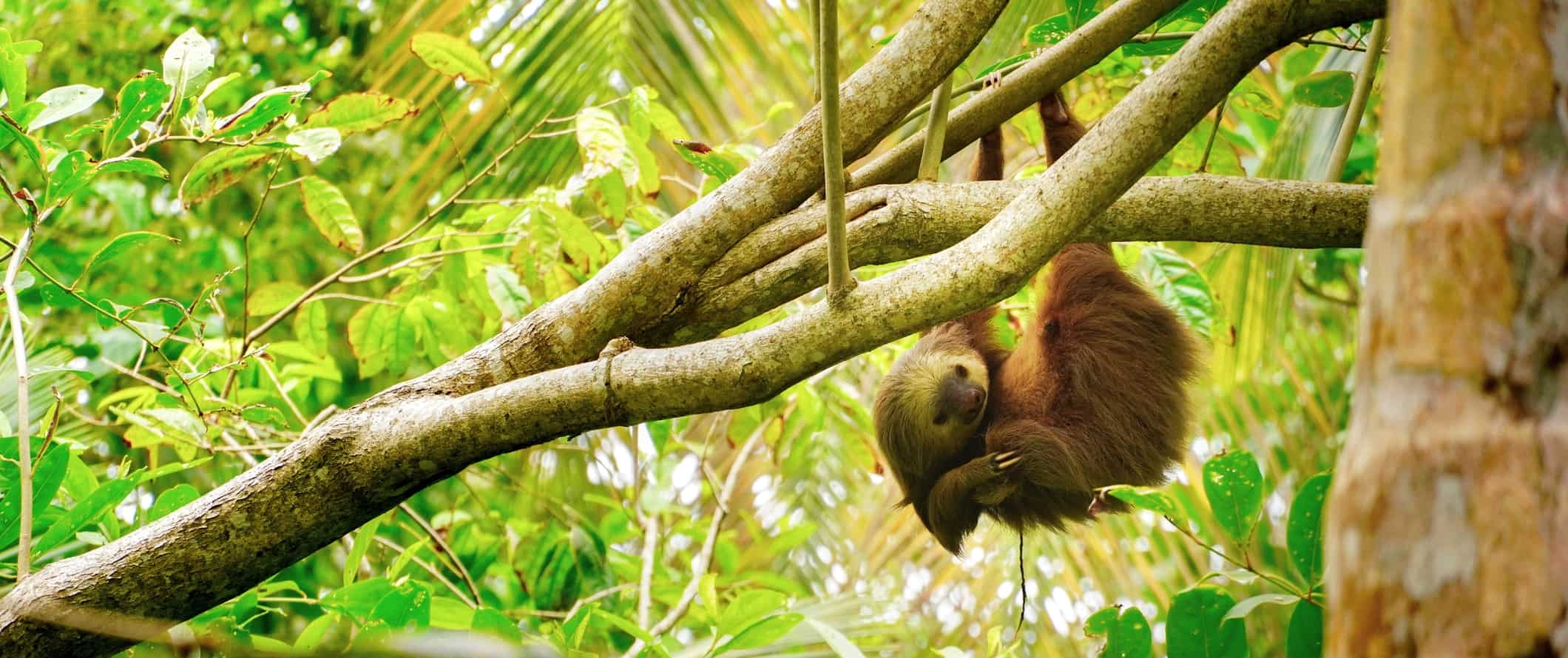
Bus – The cheapest and easiest way to get around Costa Rica is by bus. Short bus trips (under 3 hours) are usually around $2-10 USD while longer trips cost $10-20 USD. The Costa Rica tourism board has a comprehensive schedule and guide to help you plan your trip.
Minibus – Private minibuses or shuttles provide an easy way to get around the country, or to and from the airport. They are all over the place and are often quicker and more direct than the public buses (but also more expensive, starting at $50-60 USD). Ask your hotel/hostel staff for the local options as they vary around the country.
Flying – Since the country is so small, air travel within Costa Rica isn’t budget-friendly or efficient. I would skip this method of travel. It won’t save you time or money.
Car Rental – Car rentals are surprisingly affordable in Costa Rica. You can rent a car for as little as $30-45 USD per day. However, the roads here are not always great and drivers can be aggressive. Make sure you have insurance if you do rent a vehicle. Most rental companies require drivers to be 25 though some will rent to drivers who are 21. For the best car rental prices in Costa Rica, use Vamos (as a Nomadic Matt reader, you’ll get 5% off by using our link).
Hitchhiking – Hitchhiking isn’t common for long-distance rides, however, it’s possible in beach destinations or in remote places with less public transport. HitchWiki is the best website for additional hitchhiking tips and info.
When to Go to Costa Rica
Overall, temperatures and weather vary per region, but most people go to Costa Rica during the dry season, which takes place from December to April. Although it’s peak season and tourism is at its highest, there’s almost non-stop sunshine, ideal for enjoying the country’s beaches and rainforests. If visiting during this time, make all your reservations in advance since things fill up fast.
The rainy season is from May to November. This is when it’s cheapest to visit Costa Rica. It doesn’t rain all the time though and temperatures are still warm. The rain tends to lighten during June and July, making the country’s rainforests burst with life.
If you’re around the Caribbean coast and the Northern Plains, you can expect year-round humidity and temperatures somewhere in the 20s-30s°C (70s-80s°F). It’s not so humid in the North Pacific, but temperatures can get even hotter in this area during the dry season.
How to Stay Safe in Costa Rica
Costa Rica is one of the safest countries for traveling and backpacking in Central America . Most popular tourist towns are small and with little threat of violence. Solo female travelers should generally feel safe here, however, the standard precautions apply (never leave your drink unattended at the bar, never walk home alone intoxicated, etc.).
That said, it’s always good to play it safe. Petty theft (including bag snatching) is one of the most common types of crime here. Don’t flash your valuables and make sure they are always secure while you’re out. When going out for the night, only bring the money you need. Leave the rest of your cash and cards locked up in your accommodation.
There are some common scams here, including a taxi scam where the driver tells you the meter is broken once the drive has begun. For that reason, you should stick to metered taxis or negotiate a price in advance. You can read about common travel scams to avoid here .
If you rent a car, don’t leave any valuables in it overnight as break-ins do occur. Be mindful of missing road signs and potholes, as well as aggressive drivers.
Costa Rica’s natural wonders can be unpredictable. If you’re hiking in the jungle, always check the weather in advance and never stray from the trail. Doing so disturbs the fragile ecosystems, and opens yourself up to the possibility of encountering poisonous snakes and spiders. When in doubt, hire a guide. If you’re not a strong swimmer, stay out of the water. The currents and waves off the coast can be very strong, so heed signs and local advice on whether it’s safe to swim in a certain area or not.
If you experience an emergency, dial 911 for assistance.
The most important piece of advice I can offer is to purchase good travel insurance. Travel insurance will protect you against unexpected costs due to illness, injury, theft, and cancellations. It’s comprehensive protection in case anything goes wrong. I never go on a trip without it as I’ve had to use it many times in the past.
Costa Rica Travel Guide: The Best Booking Resources
These are my favorite companies to use when I travel. They consistently have the best deals, offer world-class customer service and great value, and overall, are better than their competitors. They are the companies I use the most and are always the starting point in my search for travel deals.
- Skyscanner – Skyscanner is my favorite flight search engine. They search small websites and budget airlines that larger search sites tend to miss. They are hands down the number one place to start.
- Hostelworld – This is the best hostel accommodation site out there with the largest inventory, best search interface, and widest availability.
- Booking.com – The best all around booking site that constantly provides the cheapest and lowest rates. They have the widest selection of budget accommodation. In all my tests, they’ve always had the cheapest rates out of all the booking websites.
- Get Your Guide – Get Your Guide is a huge online marketplace for tours and excursions. They have tons of tour options available in cities all around the world, including everything from cooking classes, walking tours, street art lessons, and more!
- SafetyWing – Safety Wing offers convenient and affordable plans tailored to digital nomads and long-term travelers. They have cheap monthly plans, great customer service, and an easy-to-use claims process that makes it perfect for those on the road.
- LifeStraw – My go-to company for reusable water bottles with built-in filters so you can ensure your drinking water is always clean and safe.
- Unbound Merino – They make lightweight, durable, easy-to-clean travel clothing.
- Top Travel Credit Cards – Points are the best way to cut down travel expenses. Here’s my favorite point earning credit cards so you can get free travel!
Costa Rica Travel Guide: Related Articles
Want more info? Check out all the articles I’ve written on backpacking/traveling Costa Rica and continue planning your trip:
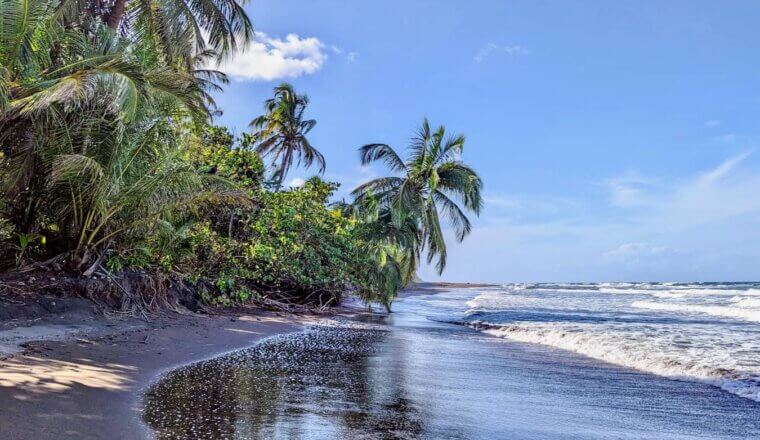
The Ultimate Guide to Renting a Car in Costa Rica

Do You Need Travel Insurance for Costa Rica?

The Best Tour Companies in Costa Rica
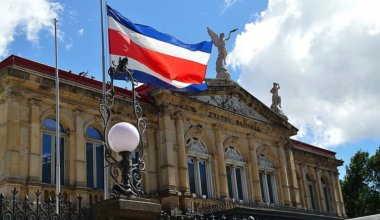
The 8 Best Hostels in San José, Costa Rica
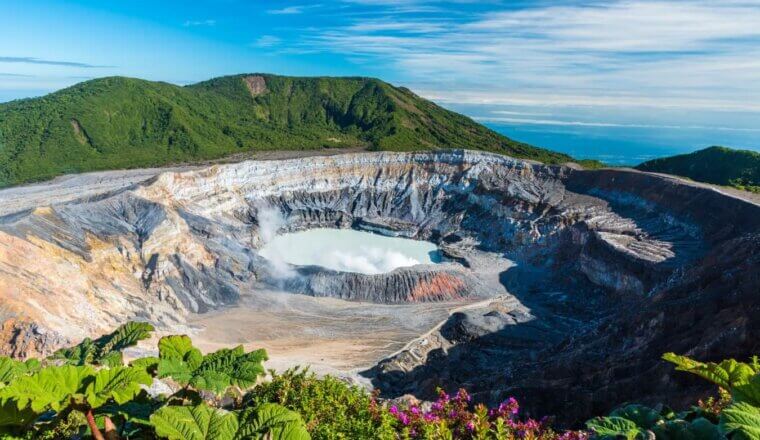
Is Costa Rica Safe to Visit?

Is Central America Safe to Visit?
Get my best stuff sent straight to you, pin it on pinterest.
- Where To Stay
- Transportation
- Booking Resources
- Related Blogs
Backpacking Costa Rica in 7 Days
Costa Rica has developed a TON since I went backpacking with 4 girlfriends back in 2007. Though massive resorts and communities have been built throughout the country, one can still easily travel inexpensively throughout Costa Rica. Backpacking Costa Rica Itinerary in 7 Days can cost you less then $600 if you budget wisely.
Day 1: Fly into San Jose, Costa Rica’s capital
Head to La Fortuna .
Stay at: Arenal’s Backpacker’s Resort
We went next door to Chelas at night to hear locals sing karaoke and eat nachos as we settled in.
Day 2: Zipline in La Fortuna
In La Fortuna, we went Ziplining at “ Arenal Mundo Aventura “, or “Arenal Adventure World” in English. We went up to speeds of 55mph, and the longest zipline lasting for a whole minute. 50$ experience. We hiked up great heights to the ziplines, and spun from tree to tree, about 5 ziplines total. I was the most terrified one of all, as I am extremely scared of heights. But once I connected to the line and got going, it was definitely the MOST LIBERATING FEELING EVER! The best adrenaline rush I’ve ever felt! And in my head, I hummed, “In the jungle.. the mighty jungle the lion sleeps tonight…” in my head, which got me through it.
Afterward, we went to the volcano to see the lake and the actual volcano evolving.
Day 3: Bus to Monteverde
We caught a Microbus (minibus) to Monteverde . Most famously known for the “ National Cloud Forest “, we hiked and admired plants only found in Costa Rica. It rained some while we were there but it was stunning regardless.
At night, we found the local “ Discoteca ” (dance club) and had a blast dancing salsa & dancing crazily with the locals. We befriended an incredibly fun, awesome gay man from Texas who kindly walked us home. On the walk back, some westerners needed a Spanish translater, so our friend Teresa volunteered. In the midst of it, she realized that she was translating a drug deal. Hey, it happens! *shrug*
Stay at: Monteverde Backpackers Hostel for $12 a night in a room of 4 people.
Day 4: Relax on the Beaches of Santa Teresa
We headed over to Mal Pais, in Santa Teresa on the Pacific side of Costa Rica in the southwest.
If you are looking for a low-key comfortable paradise, Santa Teresa is it. Untouched by mainstream tourists, only inhabited by backpackers and surfers who have decided to abandon it all and stay for good. This is the place to go.
Stay at: Tranquilo Hostel , ultimate Backpacker’s paradise.
Tranquilo Hostel in Santa Teresa was by far my favorite place to stay of all. Not only is the hostel on the beach, but the types of backpackers that come are also all so chill. Our group of backpacker friends all agreed that this hostel and area is THE HAPPIEST PLACE ON EARTH! The whole setup of this hostel was magnificent. Chill, young backpackers between the ages of 18-27, with the same o’ liberal, on the road, YOLO mentality. There are about 50 people living there. It easily seemed like a scene that we’d pull out of the movie, THE BEACH.
We comfortably stayed there for 2 nights. Communally watching old movies on the balcony with 30 people. Swinging around on the hammocks, sharing stories with our new friends, pre-partying to drinking card games before going out (which ended up being the funnest part of the night). The whole hostel family enjoyed cooking together, cleaning up together.
The backpacker friends we met at the hostel ranged from:
- Pretty young men from Canada
- A hot corrupted white boy from South Africa
- Tomas – the sweet funny missionary from Holland, currently building refugee camps. He took jumping photos with us.
- For example, we jokingly asked our favorite, Nir, if he cross-stitched. He looked at us confused, “My crotch?!!?” Ok, maybe you just had to be there, but it was so incredibly funny. He also had a man bag we wanted to take home and posed in many pictures with, even when he wasn’t there. Nir asking Teresa if she was a cheerleader because she’s a blonde-American. Or making his friend dress up in our bikini’s and running around the hostel.
- A good new friend named Chad who I would travel to Southeast Asia with (a year later). Raised in Maryland, he was then residing in Seattle for Graduate school in International Studies: Eastern Europe. He had just finished the Peace Corp in Ukraine when we met. And was backpacking around for 2 months until he started grad school. So much insight and knowledge to learn from him, I call him the human encyclopedia.
Us 5 traveling backpacker gals relaxed to the beach life. Fully embracing the most common Costa Rican saying, “ Pura Vida ” which translates to “the Pure Life”. It is so easy to just relax for days and forget about time in Mal Pais. Though it’s on the pacific side, there is still beautiful clear blue water. As recent graduates, we philosophized about life. And what we were about to embark on now for the rest of our lives. There, you can also rent bikes, walk around the chill beach vibes. Be careful of being chased by monkeys!
Day 6: Travel to the Caribbean Side of Costa Rica
Travel to “ Puerto Viejo “, the Caribbean side of Costa Rica in the southeast, close to Jamaica. To get there: take a 10-hour ride (Bus for a few hours, then a ferry, then a bus). You will notice an immediate difference with the Jamaican influence. It’s a bit more wild than the rest of Costa Rica. But it’s worth the trek. The water is crystal clear green as it’s the Caribbean.
Stay at: Rockin J’s , a hostel that will only attract the rebels, the misfits. And those most drawn to music and creativity.
I absolutely loved this hostel as much as I loved Backpacker’s hostel in Santa Teresa but for different reasons. I cannot explain the craziness/creativity of this hostel, you will just have to see yourself. As if Puerto Viejo is not wild enough, you enter the hostel which is in a forest. Stroll in deeper and see that it sits on a humungous plot of land, which can easily fit 200 people. Choose to stay in shared rooms with bunk beds. Or sleep upstairs in Hammocks ( this is very common ). There is also a field in the back with lawn chairs.
The closest way to describe this place is that its an adult-circus in a corrupted artsy jungle. Lockers and walls are filled with traveler’s art. Or graffiti, whatever you want to call it. Messages left by backpackers for the next waves of wanderlusts passing by.
The next morning we rode a 1-hour bike ride to Manzanillo and went Kayaking .
We ate at “Bread and Chocolate”, very popular, recommended highly in Lonely Planet. They say, “You know a place is good if the oatmeal tastes good”.
Day 7: White Water Rafting in Costa Rica
Public bus to Heredia
The best way to end your trip is to go White Water Rafting with “ Rios Tropicales ” (Tropical Rivers Rafting Company). Their one-day tour starts at $96 per person. On a 1-5 scale, they rank the rafting intense level at a 4. It was about a 4-hour excursion. Halfway through our rafting experience, it started pouring rain. Half an hour later, it started to thunder. And within minutes, LIGHTENING! My emotions ranged in extremity from being terrified on one end to absolute adrenaline on midway through. And there was no place else I wished to be at that moment than in the heart of Costa Rica.
Stay at: Hotel America in Heredia
Leave a Comment
Your email address will not be published. Required fields are marked *
Save my name, email, and website in this browser for the next time I comment.

- RECENT BLOG POSTS
- Sustainable travel tips
- Packing light
- Sustainable travel products
- Volunteering
- Why sustainable travel
- El Salvador
Costa Rica | Backpacking through the world’s greenest country

Seemingly endless forests where only the calls of tropical birds and howler monkeys pierce the serenity. Perfect surf beaches where you can slurp fresh coconuts while watching sloths peaking down from the almond trees. With a flora and fauna so diverse and the local Pura Vida lifestyle, backpacking in Costa Rica is a nature lover’s dream.
Table of contents

Places to see when backpacking in Costa Rica
The nicoya peninsula | beaches & surfing.
Hotel recommentation: Beach Front Bahia with their lovely Bungalows, or Residencias Samara if you’d like to treat yourself Hostel recommendation: Hostel Mariposas with such a warm, lovely atmosphere

Samara Beach
Santa Teresa
Hotel recommendation: Casa Cecelia Beach Front where you can enjoy your breakfast by the sea Hostel recommendation: Lost Boyz – an awesome surf hostel to meet other backpackers
Hotel recommendation: Horizontes de Montezuma – a gorgeous small hotel with a wonderful garden and pool area Hostel recommendation: Luminosa Montezuma Hostel – here you can enjoy the sea view while hanging in a hammock
Other beaches along the Nicoya peninsula
- Nosara beaches – a rather expensive beach town with lots of healthy cafés and three surrounding beaches: Playa Garza, Playa Guiones, and Playa Pelada
- Playa Tamarindo – also referred to as “Tamagringo” as it’s a quite touristy party town but with an incredible beach
- Playa San Juanillo
- Playa Ostional
- Playa Conchal

Costa Rica’s Pacific beaches
National Parks | Incredible nature
Monteverde national park.
Hotel recommendation: Belcruz Family Lodge – Beautiful rooms with a gorgeous view of the natural surroundings Hostel recommendation: Outbox Inn – A peaceful hostel with a super nice socializing area

Rainforests, wild animals and ziplining in Monteverde
La Fortuna National Park
Hotel recommendation: Casa Torre Eco Lodge – Wow! What an amazing view of Arenal Volcano while hanging around in a relaxing hammock. Hostel recommentation: Selina La Fortuna – Cool rooms, a nice common area (where you can also work) and a pool to cool off in. What else do you need?
Tenorio National Park & Río Celeste

Amazing nature in Costa Rica’s national parks
Tortuguero National Park
Corcovado national park.
Hotel recommendation: La Cotinga Biological Station – You feel like you’re in the middle of a jungle, but in a super nice wooden house. What a wonderful experience! Hostel recommendation: Corcovado Bio-Lodge – a yoga deck, great food and lots of tours to enjoy

Wildlife & nature in Costa Rica’s national parks
Manuel Antonio National Park
Hotel recommendation: Glamping Tomaselli – An extraoridnary accommodation at the edge of Manuel Antonio National Park, where you can sleep in a dome surrounded by nature. Hostel recommendation: Planet B Hostel – A lovely hostel between Quepos and Manuel Antonio park with great changing breakfast and a nice common area to hang out
The Caribbean | relaxed beach vibes
Puerto viejo.
- Playa Cocles – After just a 15-minute walk from Puerto Viejo along a beach path (tip: watch the treetops for some furry friends) you reach beautiful Playa Cocles. It’s popular among surfers and backpackers and spreads a really laid-back vibe.
- Playa Negra – A really long beach with black volcanic sand that spreads from Puerto Viejo almost all the way to Cahuita. Come here to watch the sunset.
- Playa Punta Uva – Made up out of three bays, each is similarly beautiful but has its own vibe. On a calm day, it’s probably the clearest water in the area and great for snorkeling.
- Cahuita national park – Of course, this can’t be missing among the best beaches around Puerto Viejo. Walk along the jungly, sandy trails to secluded, natural beaches where you can easily spend a whole day.
Hotel recommendation: Villas Piña – An adults-only hotel in beautiful, lush surroundings with a nice pool and lovely hosts Hostel recommendation: La Tribu – A female-only hostel with the most beautiful green common area and a small pool.

Cruising with an e-scooter to beaches around Puerto Viejo
Cahuita National Park

Sustainable travel in Costa Rica
Interested in getting a water bottle with a filter.
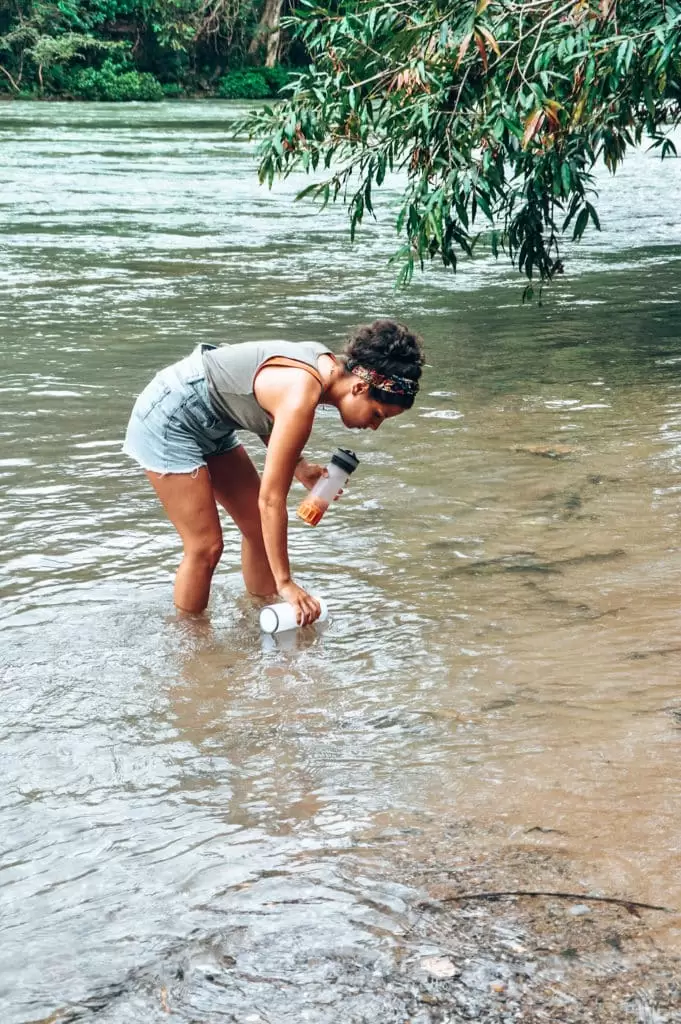
Filtering water & a Costa Rican sign encouraging to recycle
Eco-lodges in Costa Rica
More about reducing waste during your trip, more about sustainable travel, costa rica itinerary, how many days do you need to travel around costa rica, how to get around costa rica, by rental car, by public buses, by tourist shuttle.

Backpacking in Costa Rica
Suggested itineraries
Backpacking costa rica itinerary by bus.
- A beach town in the Nicoya peninsula
- ⇨ Monteverde national park
- ⇨ La Fortuna national park (including a day trip to Rio Celeste from La Fortuna)
- ⇨ (heading through San Jose with maybe a night stopover to) Puerto Viejo (with a day trip to Cahuita national park)
Costa Rica itinerary by rental car
- ⇨ Manuel Antonio national park
- ⇨ Monteverde OR La Fortuna national park
- ⇨ Rio Celeste
- ⇨ Puerto Viejo (including a day trip to Cahuita national park)
- Rio Celeste
- ⇨ La Fortuna national park
- ⇨ A beach town in the Nicoya peninsula
- ⇨ Corcovado national park
Moving on to other countries from Costa Rica:
- Take a 45-minute bus from Puerto Viejo to Sixaola (for 2010 colones) or a 5h bus from San Jose
- ⇨ Pay 8$ at the Sixaola border to exit Costa Rica (can be paid online through a barcode)
- ⇨ Be aware that there are no money changers at the border (the only border in Central America where we couldn’t exchange money). So take some dollars with you for the onward trip!
- ⇨ To Bocas Del Toro: Take either a shuttle for 10 US$ or take the easy trip yourself: Take a 30-minute bus to Changuinola (1$), change to another 30 minutes bus to Almirante, and take a ferry to Bocas (6$ one way or 10$ return).
More about backpacking in Panama
More about backpacking in nicaragua.
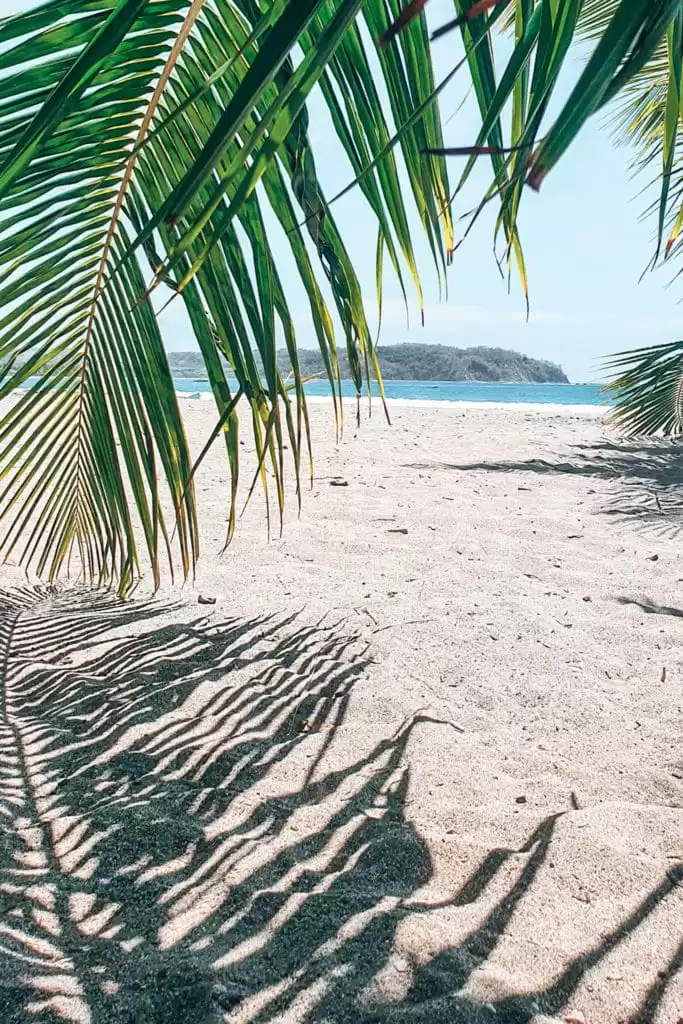
Good to know for backpacking in Costa Rica
Pura vida lifestyle, costa rican food.
- Casado – THE typical dish you’ll find in most restaurants with rice, beans, fried vegetables, and sometimes potatoes, plantains, or coleslaw.
- Gallo Pinto – Just like in Nicaragua , this mix of rice and beans can be found all over the country as breakfast or a side for lunch and dinner.
- Patacones – You can have these crunchy, fried plantains as s snack or appetizer, often accompanied by guacamole or mashed beans
- Pipas frías – in order to refresh yourself, in Costa Rica you have to watch out for “pipas frías” to get a cold coconut (instead of the term “cocos fríos”)

Typical Costa Rican Casado & slurping a pipa fría
What’s the best time to go backpacking in Costa Rica?
Is costa rica safe to travel, is backpacking in costa rica expensive.
- Eat at local Sodas where you can get a Casado for around 5 US$.
- Take local buses instead of the tourist shuttles.
- Look out for accommodation with a kitchen where you can cook for yourself.
- Also, Airbnbs and hostels on Hostelworld are more affordable than booking.com in Costa Rica
- Visit places on your own whenever possible instead of sticking to expensive tours everywhere
- Spend time at places that you visit for free, such as Cahuita National Park, the ficus tree near Monteverde, or the free hot springs in La Fortuna
Do you need to speak Spanish for backpacking in Costa Rica?
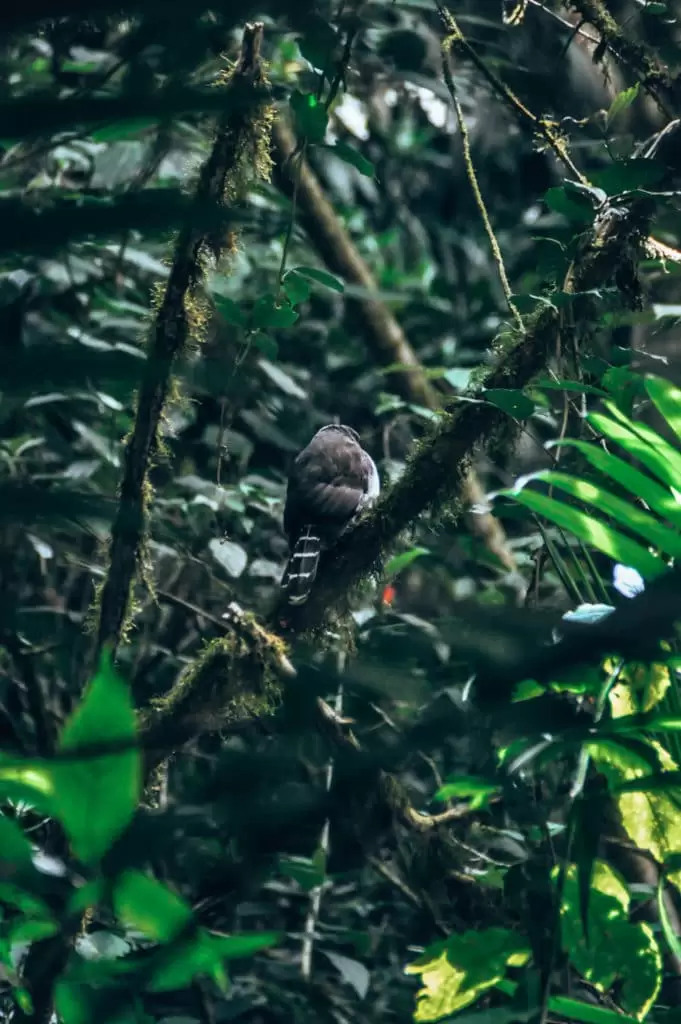
Backpacking in Costa Rica – a wrap-up
More about central america, on to panama, discover nicaragua.

Get a free packing list to travel lighter!
Subscribe to get your free packing list for traveling light or carry-on only!
By requesting the packing list and subscribing to the newsletter, you agree to receiving updates via e-mail.
We respect your privacy. Unsubscribe at anytime.
Share with friends!
Related posts.
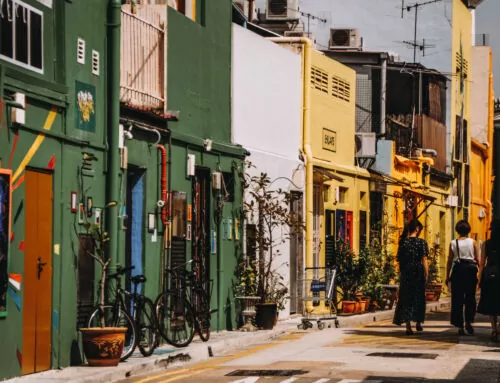
Singapore | Highlights & hidden gems in the world’s greenest city
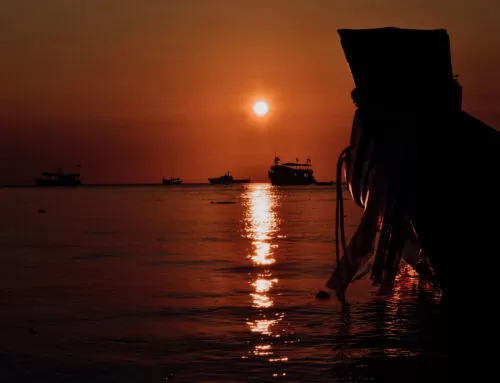
Thailand | Island hopping, food paradise & lots of smiles

Andalucia road trip | Tapas, orange trees and marvelous cities
What a comprehensive guide to Costa Rica! Everything is covered.
Thanks! Happy to hear that you like my Costa Rica backpacking guide.
Leave A Comment Cancel reply
Save my name, email, and website in this browser for the next time I comment.
Leap Programme
Access your programme My Leap area
Backpacking Advice Hub
Access the backpacking advice hub
Midlife Leap
Access your trip details

Gap Year Advice
Costa Rica: Your Ultimate Backpacking Itinerary
Written by Alice McLeod on 12 / 12 / 2023
We describe Costa Rica as a backpacking 'soft landing', meaning that if you haven't done a huge amount of backpacking before then this won't be too difficult for you to navigate, and also won't be too much of a culture shock. Costa Rica is famous for its biodiversity and you're sure to see a vast range of plants and animals here, from toucans watching you from nearby trees to colourful fish, dolphins, sharks, and rays offshore. It's not a huge country, which means with a carefully planned backpacking itinerary you can see most of this beautiful country within a relatively short space of time.
Start your Central American adventure in Costa Rica , the land of waterfalls, rainforests, and world-class surfing. Costa Ricans, or Ticos as they prefer to be called, are proud of their slice of paradise, and invite visitors into the easy-going rhythms of the pura vida.
Backpacking Phase 1: San Jose
Fly into San Jose , the country’s capital. It’s not the most beautiful city, so only spend a day or two here to acclimatise and get over any lingering jetlag. You can visit the National Theatre and Gold Museum , check out the street art, and enjoy some of Costa Rica’s best restaurants. About an hour northwest of San Jose is the Poás region and National Park , where you can hike to the crater of the large and accessible Poás volcano . Also explore La Paz waterfall gardens for stunning waterfalls and rescued monkeys, tropical birds, and wild cats.
San Jose isn't as sketchy as some of the other Central American capitals, but you probably don't want to be walking alone at night.
Backpacking Phase 2: Monteverde
Backpacking from Poás to Monteverde , where you need at least two/three days to explore the pristine Cloud Forest. Often shrouded in mist, this is a vibrant and beautiful place of natural beauty, mossy vines, and abundant wildlife. You must do the canopy tour through the trees (keeping your eyes peeled for sloths!), and if you're feeling brave you can zip line and bungee jump too.The town of Monteverde has lots of cool cafes and fun nightlife for backpackers, and there are lots of funky hostels. Make sure you pack your raincoat though as downpours in the Cloud Forest are sudden and intense!
North of Monteverde is the Arenal Volcano , which is worth exploring (do the climb to Cerro Chato), as are the hot springs nearby (some are free, some are fancy). You don't need a guide to enter the Arenal Volcano National Park, and it's very easy to navigate on your own.
Backpacking Phase 3: Nicoya Peninsula
After your time backpacking in the centre of the country you’ll be ready to head to the beach, and the Nicoya Peninsula is the place to go. Santa Teresa is famous for its beaches, many of which have blue flag status, and you can catch some truly spectacular sunsets from the beaches here. There are some of the best surf beaches in the world, so if you're a keen surfer already then rent a board, and if you're not then take a lesson or two. Santa Teresa has a very trendy vibe, with a vibrant arts scene and yoga and juice bars galore. Tamarindo is a little more buzzy, especially in terms of nightlife, but with equally stunning beaches.
Montezuma is a little bit harder to reach for backpackers than other parts of the Nicoya Peninsula, but it's worth the added effort of getting there. Picture surfing, waterfalls, and yoga vibes.

Backpacking Phase 4: Quepos
You could wind your way back to the Manuel Antonio National Park , where you can explore clearly marked trails through the rainforest, even more beautiful beaches with views to the outer islands, along with plenty of wildlife. It’s definitely worth taking a guided tour to get the most out of CR’s smallest but most popular national park, but get up early to avoid the crowds. If you're Quepos over a weekend then there's a cool farmer's market to check out.
From Quepos it's not too hard to head inland to get to Cerro Chirripo , which is CR's highest mountain at 12,533 feet. It's an 11 mile hike to the summit, but worth it as on a clear day you can see both the Caribbean and Pacific coasts from the highest point.
Backpacking Phase 5: Caribbean Coast
If you're wanting to explore the Caribbean side of the country then head to Puerto Viejo for lots of diving and surfing, as well as a vibrant party scene. You'll find lots of accommodation options here to suit every budget, but something to note is you can't drink the water in Puerto Viejo and have to buy bottled, which can be expensive.
If you want some quiet after the rowdy party scene of Puerto Viejo then head down the coast to Manzanillo for some great beaches and hiking. If you have the budget, then a cool thing to do is stay in a treehouse in the forest for the night. This is expensive, but you'll be surrounded by monkeys, birds, and all other jungle-dwelling animals, so it's a really cool experience if you love nature and don't mind shelling out for a once-in-a-lifetime experience. It doesn't necessarily have to be done in Manzanillo, but whilst you're in Costa Rica staying in a treehouse is a really fun experience.
Fly out of San Jose and onto your next country…(read our 3 month Central America itinerary here for inspiration). Costa Rica links well with Guatemala, and Panama.
Want to explore all the highlights of Costa Rica without having to plan the logistics yourself? Join one of our Costa Rica team programmes , where the planning is all done for you and you'll still get to see many of the highlights of this lush and vibrant country. From turtle conservation to surfing lessons, you'll get to do it all.
When is the best time of year to go backpacking Costa Rica? The year in Costa Rica is divided into the wet and dry season, with dry season running December - April, and wet season running May - November. Don't discount travelling to CR in the wet season though, as rains are often short and sharp and quickly clear. It will also be a cheaper time to travel.
Is Costa Rica safe for backpackers? On the whole Costa Rica is a safe country to travel with low rates of violent crime. Like all countries you're most at risk if you're drunk and walking alone at night, so be mindful if you're drinking and always have a plan for getting home.
Is Costa Rica expensive for backpackers? There's no denying that Costa Rica is an expensive country. There are ways you can save money as a backpacker (staying in hostel dorms, making your own meals etc), but expect CR to be an expensive country, especially if you want to do some of the big-ticket experiences.
Related Articles:
Where to go on your gap year in Central and South America
Ultimate Central America itinerary
A backpacker's guide to Central America
Want to explore Costa Rica without the stress?
If you're keen to visit Costa Rica but don't want the stress of planning all your own logistics then join one of our Costa Rica team programmes. We'll show you the highlights of this amazing country within a team of like minded gappers, meaning the only thing you need to focus on is having fun.

Alice McLeod
on 12 / 12 / 2023
Prev | Next
Related Articles
04 / 12 / 2023
A Backpacker's Guide To Central America
29 / 11 / 2023
Ultimate Central America Backpacker Itinerary
22 / 11 / 2023
Where to Gap Year in Central & South America
Need inspiration and direction, get in contact with the gap year travel specialists..
Here at The Leap we can help both team traveller through our programmes and/or the backpacker.
Jot a message below or call us on +44 1672 519 9222
Opt in below to help us keep track of your planning, so each time you talk to us you can pick up where you left off.
Yes please, let's keep life simple.
- All Destinations
- National Parks
- The Pacific
- TRANSPORTATION
- Cost of Living
- Costa Rica Education
- Health Care
- Work in Costa Rica
- Residency Overview
- Restaurants
- 15 Day Weather Forecast
- Weather Regions
- Dry Season vs Wet Season
- Holiday & Festivals
- National Flag
- Customs & Etiquette
Real Estate
- Featured Properties
- Local Real Estate
- Before you buy
- Real Estate FAQs
- Find my Property
- Find my Rental
- Tres Leches
- Rice with Chicken
- Cheese Beans Turnover
- Gallo Pinto
- Costa Rican Food
- Before Doing Business in Costa Rica
- Setting up a Corporation
- Demographics
- Economic Indicators
- Apr. 26-Apr. 30 University Week
Travel Blog
- My First Cup of Coffee
- Top Six Extra Things to Pack on Your Next Trip Abroad
- Ten Things to do on the beach in Manuel Antonio
- Eating Alone in Costa Rica
- Nosara Yoga: Switching the Channel
- Riding a bus to Sierpe in Costa Rica
- High speeds, high waves, high in the air over Manuel Antonio
- In-shore fishing off the coast of Manuel Antonio
- Enjoying Puerto Viejo on $28 a day
- How conservation saved Tortuguero
Living in Costa Rica Blog
- Protecting the kinkajous in Manuel Antonio
- Learning Spanish at Rancho Margot
- Backyard Surf Series on Hermosa Beach
- Life in the Monteverde Countryside
- Border Crossing: Nicaragua by Boat
- The Top 5 Reasons I love living in Tamarindo
- A Look Back: Tamarindo, Six Months Later
- Fruit of the Month: Cas
- E-Voting Info for American Expats
- Naturalized Costa Rican Citizenship by Marriage
- Red Eyed Tree Frogs
- White-faced Monkeys
- Scarlet Macaws
- Leatherback Sea Turtles
Itineraries
- 6 Day Best of Activities
- 10 Day Nature Lovers
- 15 Day Best of Destinations
- 12 Day Honeymoon
- 5 Best Waterfalls
- Spectacular Beaches
- Best of Activities
- Best Kept Secrets
- Best of Destinations
- Sky Trek Canopy Tour
- Celeste River Waterfall
- Superman Canopy Tour
- Tortuguero Canal Tour
- Journey to Cocos Island
Medical Tourism
- Dental Care
- Book a Medical Vacation with Us
- Cosmetic Surgery

Backpacking Tips
Backpacking in Costa Rica can be both enjoyable and easy on the wallet if you follow a few basic tips. The country's reliable public transportation system equals easy access to both coasts and numerous hostels offer both campsites and cheap beds for the night. Although prices are a bit higher than the rest of Central America, the country's natural beauty and spectacular adventures are unparalleled.
Budget $45-$55 per day, which includes lodging, meals and transportation. Factor in extra funds for park entrance fees and guided tours. An international ISIC student card can save you a little bit of money.
U.S. dollars are accepted in most tourist towns, and ATM's are abundant for cash withdrawals in colones or dollars. Credit cards are worth having in emergency situations. For a more favorable exchange rate, always pay with Costa Rican colones (CRC), with the exception of hotels and restaurants that list their prices in dollars.
English is widely spoken in the tourism industry, though some basic Spanish will be useful in more rural locales.
Violent crime is uncommon but be wary of petty theft like pickpockets, scamming moneychangers and opportunistic thieves. Never leave your belongings unattended, and always keep an eye on your bags when traveling by bus. Hide your passport in a money belt and keep a copy of the front page and entry stamp in a safe place.
Passport & Visa
If you hail from the States, Canada or most European countries, a visa is not necessary. Most tourists are given a 90-day entrance stamp upon arrival.
To get a real sense of the country and experience several destinations, a minimum two-week visit is recommended.
Communications
High-speed Internet is widely available, and many hotels and hostels offer free WiFi to their guests. Or you can hook up at an Internet cafe for $1 an hour.
Local cuisine is cheap and delicious. Some of the best eats are in smaller restaurants called sodas. Order a plate of the day or casado for around $3 and enjoy rice, beans, salad and savory meat. Another money saving option: head to a local bakery, farmers' market or grocery store and stock up. The tap water is generally safe to drink unless posted otherwise.
Backpacker Hotspots
Many independent travelers frequent Jaco, Montezuma and the Nicoya Peninsula, Arenal, Monteverde and Puerto Viejo.
Natural Highlights
More than 25% of the country is protected as a national park or reserve. Top picks: evening soaks in hot springs beneath Arenal Volcano; wildlife watching in Manuel Antonio National Park; catching the perfect wave in Puerto Viejo; and observing sea turtles along one of Costa Rica's many nesting beaches.
Expect Spring-like temperatures (72°F and 78°F) throughout the year in the Central Valley, and hot and humid conditions along the coasts. The rainy season begins in May and ends in late November, and is a great time to save a few bucks on your Costa Rica adventure. Hotels often lower their rates by up to 40%. Keep in mind that it doesn't rain all day, as showers normally arrive in the late afternoons.
Transportation
Public buses are comfortable and widely available. Expect to pay less than $10 to ride anywhere in the country, even to the Panamanian border. While inexpensive, depending on your destination, public transport may not be convenient for local sightseeing. Consider renting a bicycle, or taking taxis for short hops around town. Though possible, hitchhiking isn't recommended or terribly common in Costa Rica.
Best Hotel Deals in Costa Rica!
- Contact Info
- Testimonials & Reviews
- Advertise with Us!
Signup for our newsletter
Stay in touch and get the inside scoop.
- Privacy Policy
- Terms & Conditions
© 1996-2024 costarica.com, Inc. All rights reserved.

Costa Rica Travel Guide
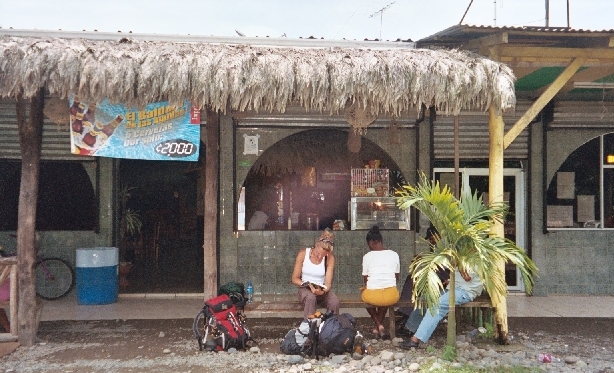
Waiting for a bus in Cahuita, Costa Rica (2005)
Costa Rica is a perennial favorite for travelers visiting Central America, and expats looking to settle down there.
This small country offers a wealth of activities, from relaxing in the natural hot springs of Arenal Volcano to surfing on the Pacific coast and watching sea turtles lay their eggs along the Caribbean coast.
Table of Contents
Costa Rica Travel Guides
Regional travel guides, recommended reading , related blog posts.
- Things To Do
- Food & Drink
- Cost of Travel
- Puerto Viejo
- My Backpacking Costa Rica Travelogues
- Buddhism Inspired Contemplation in Costa Rica
- Lounging in Cahuita
- Video of Waterfall Jumping in Montezuma
- Whitewater Rafting
Click here to view all blog posts for Costa Rica.
Last Updated on October 29, 2019 by Dave Lee
Erin quit the 9 to 5 and moved herself and her dog to Costa Rica in early 2010. She has been happily exploring the beautiful biodiversity, country, and culture ever since. She started De La Pura Vida to share her experiences of living and traveling around Costa Rica and Central America. Follow her on Twitter @delapuravida
Shannon Kircher
Tuesday 8th of March 2016
Thanks for San Jose tips! We generally need to overnight in San Jose flying in or out of CR so it's great getting some tips on how to spend time there!
Candace Anderson
Sunday 25th of October 2015
Interested in visiting places bear our home base in Tamarindo

Is Costa Rica Safe to Visit in 2024? Travel Crime Advice
One of the most common questions we get asked is, “Is Costa Rica safe to visit?” The short answer is, “usually”.
We started this website to give you all the most genuine information about Costa Rica travel and we take that responsibility very seriously.
However, one thing I didn’t consider when we started this site is how responsible I would end up feeling for your safety while you are in Costa Rica. I genuinely want you to have the best trip here possible and that means that you should feel secure while traveling.
Crime in Costa Rica is an ever-evolving issue. In general, this is a very safe country. The most common crime is petty theft. Violent crimes targeting tourists such as armed robberies, sexual assault, or homicide are very very unusual. In general, you will likely meet wonderful people and have the vacation of a lifetime.
However, because we feel responsible, here are all our tips about safety in Costa Rica. Please read through them and please contact us if you have any safety questions.
Our Perspective on Crime in Costa Rica
Thomas and I agree that in general, we feel secure in Costa Rica.
We, fortunately, have never had any crimes committed against us in our several years of living here.
That being said, we also use extreme caution and I sometimes feel it is exhausting to maintain our level of security.
Although nothing has happened to us, that doesn’t mean that we haven’t heard of crimes being committed against friends. This has always been theft in various forms.
We have had friends leave things out visible in their car and their car has been broken into, a friend got robbed walking alone at night, a friend had their house broken into, and another friend was robbed in their driveway.
Keep in mind that these incidents have been over about 8 years of living here. This is not an everyday occurrence.
But, yes, crime happens and it can be very scary.
However, even if you are extremely cautious sometimes you just never know. We had a crime committed against us once in Europe in a very safe neighborhood. So, unfortunately, bad things can happen anywhere.
As of now, we still feel 100% secure in recommending that you visit Costa Rica. It is a beautiful country and in general, the threat against tourists is low.
If at any point we feel that the security level in this country is too unstable, we will update this to reflect that.
How the Costa Rican Government Protects Tourists
Tourism is the biggest industry in Costa Rica. With that in mind, the government works hard to make this the safest destination for tourists as possible.
In recent years there has been an increase in homicides. This is largely due to drug trafficking and gangs. I have read a lot of articles about it in the news recently. It seems that the government is taking action to alleviate the situation. Although, it is hard to say exactly what is being done.
Crime rates against tourists have remained somewhat steady. However, the president of Costa Rica along with the Ministry of Public Security (MSP) are making it their mission to lower these rates.
One way they are doing that is by identifying crime hot spots. They are now working to increase police presence in these areas.
Sometimes I wonder if this is just talk to keep tourists coming here and feeling safe, but I really don’t think it is.
I have noticed an increase in police presence in some areas and I have even been stopped by a police officer on the beach to tell me that there had been a few robberies there recently and to keep an eye on my stuff.
How to Protect Yourself in Costa Rica
Here are all the safety tips I suggest doing to protect yourself while traveling in this foreign country.
Pre-Trip Preparation
Here is what you need to do before you even leave home.
Register With STEP
If you’re a United States citizen, enroll in the Smart Traveler Enrollment Program (STEP) .
This program allows the US government to notify you regarding potential security threats in the area you are visiting, get in contact with you regarding natural disasters , and give family and friends a way to contact you in the case of emergencies.
If you are from another country. see if your government offers a similar program.
Check Embassy Warnings:
The US government has a whole page dedicated to the safety in Costa Rica .
Make sure to check it our before you travel so you can be aware of any areas to avoid or current crime situations.
Get Travel Insurance
Travel insurance has multiple benefits. Not only will it help you out in case you get hurt, but it is also great if one of your belongings is stolen.
Get your travel insurance quote from Heymondo here .
Give Travel Plan to Trusted Person
Inform a trusted person of your travel plans and keep them updated. I like to write out a document with all hotel info, any preplanned activities, flight info etc. for my mom.
I then update her on my license plate number if I have rented a car once I arrive in a destination.
I usually also try to check in once a day and just send her a quick message of my plans.
That way, if I go missing, somebody has a record of my intended movements.
Travel Tip : If you are an iPhone user you can turn on “share your location” with a trusted family member or friend. That way, someone always knows exactly where you/ your phone is.
Rent Your Car Directly from a Company
Third party sites often have car rental deals that seem too good to be true…they are. These rates don’t include any added taxes, fees, or mandatory rental insurance. Check out our guide to rental scams for more info .
We work exclusively with our favorite local rental company, Adobe Rent-a-Car. You can get a 10% discount plus other great perks here.
Make a Photocopy of Your Passport
I suggest making one or two copies of your passport to bring with you while traveling.
Then, while in Costa Rica you can leave your passport in your hotel safe and only carry the paper copies with you.
Get an eSIM Card
It is a good idea to always be able to stay connected and have a working cell phone.
We suggest getting an eSIM card from Airalo for this.
However, you can check out our guide to SIM cards in Costa Rica for all the different ways to stay connected.
Purchase Security Products
This is not absolutely necessary, but there are a few products I really like for keeping me and my stuff safe while traveling.
- Doorstop : Put this under your door at a hotel. When someone tries to open the door the alarm will sound.
- Money belt : Helpful for walking around towns so that your money, cards, etc are hidden. This one is also RFID blocking so nobody can scan your cards.
- Safety Alarm : Carry on your keys. Presd the button to activate the alarm if you are attached.
- Headlamp : It gets dark very early here. If you plan to walk around at night it is a good idea to have a headlamp.
Monetary Theft
Here are some of the ways you can protect yourself from being scammed or robbed while in Costa Rica.
Pay with Credit Card Instead of Debit Card
Credit cards make it easier to refute fraudulent charges than debit cards. I suggest checking your credit card account after any transactions to make sure that the amount is correct.
Travel Tip: I t is a good idea to get a credit card that is made for travel so you will not pay a percentage on every transaction.
Keep Money in Several Locations
Don’t put all your money in your pocket or purse. It’s best not to carry much money at all, but if you have to, divide it up.
I put some in my shoe, some in my bra, and some in each of my pockets.
That way if I am robbed they hopefully won’t find all of the money and I can just give them my wallet and move on.
If you need more info on whether you should carry money or use credit cards in Costa Rica, we have a full post on currency and paying .
Only Change Currency at Banks
The currency exchange places at the airport will give you a very bad exchange rate. Don’t use them!
Also, there are often people exchanging currency on the Nicragua or Panama border. Don’t use them either.
Instead, you will get the best exchange rate directly at a bank.
Check All Receipts
After any payment, check the receipt to make sure the amount adds up correctly. Often in Costa Rica store employees need to manually enter the total on a credit card machine.
It is so easy to accidentally (or purposely) add an extra “0” and overcharge a customer.
We’ve had it happen to us. Luckily, the employee noticed it when he charged us several hundred dollars instead of about $50 for gas.
He was so embarrassed and pointed out his mistake to us and fixed it.
So, just double-check.
Personal Safety and Awareness
Here are all the things you should do to protect yourself.
Be Aware of Your Surroundings
When you are traveling it’s easy to get distracted by all the beautiful new sights, but you need to also be aware of the people around you.
Look around often and avoid standing in large crowds.
If you feel uncomfortable in a situation or place, just leave.
If you take money out of the bank pay attention to who is around and watching you.
Dress Like You Belong
We get it, you are on vacation and probably want to wear all your nice warm weather clothing.
However, in Costa Rica it is best to blend in.
Leave the nice jewelry or flashy items at home and dress in a relaxed way.
Don’t Walk Around Alone at Night
Unfortunately, it gets dark by 6pm in Costa Rica year round.
As I mentioned above, it is a good idea to have a headlamp if you plan to walk around after dark.
Also, it is best to never go out alone.
Trust Your Instincts
If you feel hesitant about a person or a location, trust yourself. Your gut instinct is usually right. It’s always better to be safe than sorry.
Don’t Leave Your Stuff Unattended
If you plan to go to the beach it is never a good idea to leave your personal belongings unattended while you are in the ocean or taking a walk.
Keep Stuff Secure at Restaurants
A lot of restaurants in Costa Rica are open air. This means it is easy for anyone from outside to walk by your table and swipe something.
Don’t leave your cell phone, wallet, keys, etc just sitting on the table.
Also, don’t just put your purse or backpack on the back of your chair. I always put mine on the floor between my legs with one strap under my leg so it can not be taken.
Know Your Hotel Location
If you get lost, your phone dies etc. it is good to know the place you are staying in your mother tongue and in Spanish.
In Costa Rica this is difficult because there are no addresses. It’s strange but true.
Instead, make sure you know the name of your hotel and any landmarks that are located nearby the place you are staying.
Keep Personal Info Private
People in Costa Rica generally really enjoy talking to tourists and they are usually extremely nice and welcoming.
However, to stay safe in Costa Rica you should still be cautious. Don’t reveal too much.
If you are a solo traveler , NEVER tell anyone that you are by yourself. I always just say I’m with my husband and he is on his way to meet me.
I also never say which hotel I am staying in.
Lock Everything
When going out make sure you lock your car, hotel room etc.
Also, don’t leave anything of value in your rental car. It is not unheard of for windows to be smashed and things stolen.
When driving, lock your doors and use the AC instead of rolling down your windows.
We have heard stories of people getting robbed while waiting at traffic lights.
Because of this I always keep my purse on the floor between my feet while in the car.
Don’t Leave Your Drink Unattended
If I feel a bit sketched out by a place I always order bottled beer and keep my finger over the opening when I’m not drinking it.
Tell Someone Where You’ll Be
In order to stay safe in Costa Rica, you should always tell someone where you’ll be when going out.
Even when traveling alone just send someone from home a quick message telling them where you are going that day.
Keep Your Room Secure
Try to get a room not on the first floor of a hotel (they are the most likely to be broken into).
I always put the “Do Not Disturb” sign on my door even when I’m not there, so it looks like someone is in the room.
Transportation Safety
Here is how you can protect yourself from transportation-related crimes.
Be Wary of Rental Car Issues
We have heard recently about a travel scam in which people are slashing tires at traffic lights and then conveniently pulling up when you pull off to the side of the road.
They will then rob you.
If you can, always drive to a gas station or another populated place before fixing your tire.
Check out our guide to driving in Costa Rica for more info.
Only Use Registered Taxis
Make sure to only use official taxis while in Costa Rica so that you do not get scammed out of a lot of money.
You can tell an official taxi because it will be red (or orange if coming from the airport) with a yellow triangle on the drivers and passenger side door (or green triangle from the airport).
We wrote a complete guide to using taxis and Uber here in Costa Rica . I suggest reading that to help you stay safe in taxis.
Be Cautious in Public Transportation
If you opt to take a public bus it is best to keep an eye on any belongings you put on the shelf above your seat.
Always make sure you keep your passport and valuables physically on you.
We have heard about people having their bags stolen while they were sleeping on public buses.
Walk Facing the Traffic
If you walk facing traffic, motorcyclists will not be able to drive up behind you and grab your bag.
Walking facing traffic also means you will see any cars coming and are much less likely to get hit (and people drive like maniacs here sometimes).
Don’t leave Your Rental Car in a Remote Place
Sometimes cars are broken into when left in remote places.
At most public places there will be a guard watching cars. You can (usually) trust them to keep a good eye on your car.
However, we still strongly suggest that you never leave anything of value in your car and definitely don’t leave anything of value visible.
What to Do if a Crime Happens in Costa Rica
If someone robs you, let them. It’s better to have to cancel your credit cards and lose some money than to fight back and get attacked. It’s just not worth it.
If something happens to you and you need to call the local authorities just dial 9-1-1. There should be at least one person at the police station who speaks a little bit of English.
Also, it is best to contact your embassy as soon as possible. They can assist you in whatever you need as a citizen. Contacting the embassy is also important because it can help future travelers. Most embassies will then update their safety pages accordingly.
If you are a United States citizen the US embassy is located in the Pavas / Rohrmoser neighborhood of San José. The phone number is (506) 2519-2000.
Dangerous Areas
Here are some areas that are sometimes considered unsafe. In general, the larger cities such as San Jose, Alajuela, Puntarenas, and Limon tend to have a higher crime rate.
San Jose is the capital city of Costa Rica. This is where we live and I feel mostly safe here during the day.
However, you need to stick to exploring the downtown area or reputable neighborhoods.
If you plan to stay downtown I suggest Barrio Escalante or the area near the stadium at La Sabana Park.
Petty theft during the day is very widespread here. It is a good idea to have a secure backpack and hide stuff in a money belt.
In downtown Alajuela , you should use increased caution.
However, above the city in the beautiful rural areas you should feel very safe.
Tamarindo is a popular destination for families, surfers, and backpackers. It is a larger town, so mostly due to its size there tends to be more crime.
Santa Teresa
Santa Teresa is one of our favorite places in the country. It is a beautiful remote Pacific Coast surfing town.
However, because it is so remote it seems to be a hot spot for criminals to hide out in.
This doesn’t just mean Costa Rican criminals. I also mean shady people from around the world who have committed crimes tend to hide in this area.
For example, I just watched this episode of 48 Hours recently about a woman from the US who murdered another woman and was hiding out in Santa Teresa.
Anyway, during the day you should be completely fine here, but use more caution at night. This especially applies to walking alone or if you plan to enjoy the nightlife scene.
Panama Border on Osa Peninsula
This area is mostly safe for tourists. However, this is where a lot of drugs pass through from Panama into Costa Rica. So, use caution if in very remote areas.
Other Safety Concerns
It’s impossible not to fall in love with Costa Rica, but sometimes I feel like this country is slowly trying to kill me in a million ways.
From poisonous animals, earthquakes, erupting volcanoes, weird illnesses, a crazy high UV index, etc.
So, crime is not the only thing you need to think about in regards to safety here. A few other tips to stay secure from just this crazy tropical country as a whole are…
- Always Stay on Marked Trails : This will help keep you away from some potential wildlife threats like snakes.
- Don’t Swim in Weird Bodies of Water : This should go without saying, but it is easy to get weird rashes and skin issues from unclean water. Check out our guide to safety from environmental issues for more info.
- Only Drink Bottled Water : In most towns, it is fine to drink the tap water here. However, because you are not used to the water it is best not to risk your vacation. Just buy bottled water so you don’t end up with stomach illnesses. I like to bring my refillable water bottle from home and buy several-gallon jugs while traveling.
- Avoid Street Food : It is a good idea to be cautious of food safety so that you don’t get sick while visiting. The best way to do that is by only eating at reputable restaurants or cooking your own food.
- Trust Your Instincts During Activities : If participating in day tour or activities with reputable companies you can generally expect a high standard of safety. However, if something feels unsafe to you, trust yourself. It is best not to risk your security.
- Be Cautious of Flooding During the Rainy Season: It is not unusual for there to be flash floods or road flooding.
- Be Aware of Natural Disasters : There are five active volcanoes in Costa Rica. That doesn’t mean that they are all actively erupting, but some are actually active at the moment. Earthquakes occur pretty much every day. Again, that doesn’t mean that you will actually feel them. Usually they are so minor that you won’t even notice. For more info, check out our natural disaster guide .
- Wear Bug Spray : The mosquitos here are generally not a problem during the day, but once the sun goes down they come out in full force. Mosquitos here can carry dengue, zika, and more. So, always load up on bug spray to avoid mosquito bites.
- Wear SPF 50+ Sunblock : One of your biggest concerns here needs to be the sun. Costa Rica is not THAT far from the equator. The UV index is really high . Bad sunburns are often the number one medical issue that travelers face when visiting.
- Be Aware of Entry Requirements : Check out our guide on entry requirements to stay up to date on things like Yellow Fever vaccine requirements, how long you can stay in the country, etc.
It’s Not All Bad
I know this post is a lot of doom and gloom. But, in reality, Costa Rica is an amazing travel destination filled with friendly people. In general, Costa Ricans are welcoming, kind, and peaceful.
When we first moved here after living in Europe for four years we were so caught off guard. Several people that we had never met before went out of their way to help us find a place to live, help us buy furniture, gave us things, helped us adjust to the lifestyle etc.
We turned down a lot of help because we felt like we would then owe them something.
It took us a while to realize that no, people here are just very kind-hearted. The country operates a lot based on helping out your friends, family, and neighbors when you can with the mindset that someday they might need help and you can step in.
Also, a lot of people work in tourism. They want to make sure that tourists feel welcome here.
Conclusion: Safety in Costa Rica
In conclusion, there are several things that can happen while traveling in Costa Rica, but with common sense and some caution, you should find that Costa Rica is a safe place.
Overall this is a peaceful country filled with beautiful beaches, lush rainforests, and kind people.
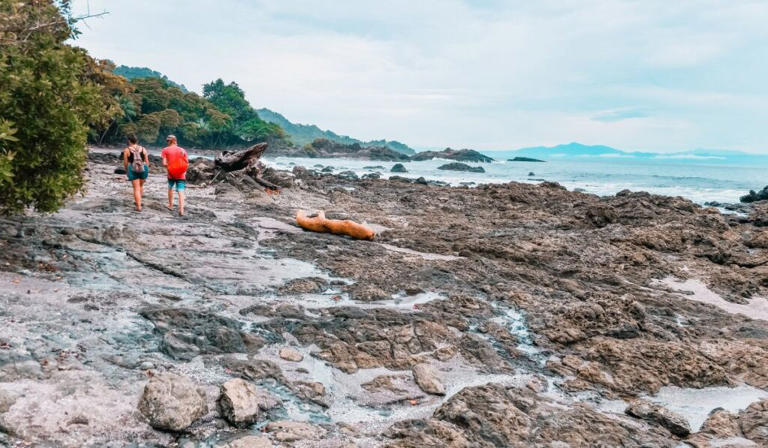

IMAGES
VIDEO
COMMENTS
Backpacking Costa Rica Travel Guide (2024) Backpacking Costa Rica is a rite of passage for any backpacker keen on exploring South or Central America. Costa Rica is a country famous for its breathtaking natural beauty and ecological biodiversity. Travelers have been flocking to this magical country for decades in search of Pura Vida (Pure Life).
Here is a breakdown of what average costs may look like while backpacking in Costa Rica. Prices are in USD. Accommodation: $15 per day for a dorm room (or $0 per day on a work exchange) Food: $10 per day for street food and cooking at home. Transport: $5 per day for taxis and the occasional long bus ride.
Tips For Backpacking Costa Rica. Plan your itinerary around the weather: Costa Rica has two seasons - the dry season (December to April) and the rainy season (May to November). While the dry season is more popular with tourists, the rainy season can be a great time to visit if you don't mind a little rain.
Our Backpacking Costa Rica Tips. -Stay at a place with a kitchen so you can cook your own meals. -Eat at the small local restaurants called sodas. Here you can get the dish of the day (called a casado). This usually consists of a meat, rice, beans, salad, and sometimes plantains. It's delicious!
Welcome to our backpacking Costa Rica itinerary. Costa Rica is a paradise and it's a popular destination among nature lovers because it's bursting with jungles, mountainous landscapes, picturesque beaches, volcanoes, and incredible wildlife.. There are so many things to do and so many places to visit, you are guaranteed to have a memorable trip.
Costa Rica Travel Tips. After backpacking Costa Rica for 2 months, I learnt how to do it cheaply. Learning from other travellers and personal experience, these are my tips for traveling to Costa Rica. Cook whenever possible. Many hostels have kitchens that are free to use. Dining out can really add to your budget so make use of the kitchens.
Car rental in Costa Rica. If you can afford it, the best transport option in Costa Rica is renting a car. This gives you total flexibility for prices not much higher than shuttles. In dry season, car rental runs $50-75 a day for a high-clearance vehicle (often 2×4). Rainy season is cheaper, but you 100% need a 4×4.
To the surprise of many backpackers, one of the most unexpected costs in Costa Rica is the food and drink. At a mid-range restaurant for example, you can expect to pay around $15-20 for dinner, especially in the more touristy towns and cities. The best way to avoid this is to eat at the local SODAS.
Overall Budget For Backpacking in Costa Rica. If you're planning on backpacking in Costa Rica for a month or more, budget about $50-75 per day. It's a safe amount of money that will cover all lodging expenses, food, and some tours and activities. That amount will also cover transportation and entrance to nearby National Parks.
Backpacking Costa Rica is a once in a lifetime experience. As a small country with a reliable bus system, it is easy to see much of the country in a short amount of time. ... Costa Rica: Travel Tips and First Impressions. Next. Five Days To Spend in the beautiful Tamarindo, Costa Rica. 2 Comments. Cris says: 30 July 2021 at 7:32 pm.
The most cost effective way to travel around Costa Rica is by local bus. These always seem to run on tico time, but when you're paying approx $3 to travel between towns, you can't complain too much. Longer bus trips will cost around $10 and about $20 will take you across the whole country.
For thrill-seeking backpackers, Costa Rica is the perfect playground. You can explore lush rainforests, soak up the sun on stunning beaches, and immerse yourself in a vibrant culture. ... And if you're new to this type of travel, Costa Rica is a great place to start dipping your toes in the waters of backpacking.
Top backpacker destinations in the Osa Peninsula include Drake Bay, Puerto Jimenez, and Matalpo, as well as other beaches along the peninsula's coasts. Osa Peninsula budget jungle lodges and hostels: Cabinas Manolo and the Poor Man's Paradise Resort in Drake Bay; Cabinas Marcelina in Puerto Jimenez. 06 of 10.
Costa Rica Travel Costs. Hostel Costs - A bed in a hostel dorm with 4-6 beds costs between $15-25 USD per night, while dorms with 8 beds and up can be found for as cheap as $11-14 USD. Private rooms in hostels are usually $35-60 USD. Free Wi-Fi is standard and some hostels also include free breakfast.
Costa Rica has developed a TON since I went backpacking with 4 girlfriends back in 2007. Though massive resorts and communities have been built throughout the country, one can still easily travel inexpensively throughout Costa Rica. Backpacking Costa Rica Itinerary in 7 Days can cost you less then $600 if you budget wisely.
Costa Rica is a country that offers amazing biodiversity with its rainforests and national parks where sloths hang around and backpackers love to explore. To be precise, it's ranked among the world's most biodiverse countries and around a quarter of Costa Rica's land are national parks.
1-month backpacking Costa Rica itinerary . If like us, you're able to have a full month exploring Costa Rica, there is so much you can see. For example, on the Caribbean coast, there are locations like Tortuguero or Puerto Viejo de Talamanca which are great spots if you like wildlife or more beaches!. La Fortuna and Monteverde are two other great places you should visit if you have the time.
Welcome to the ultimate guide to backpacking in Costa Rica! Costa Rica's more remote destinations. ... Home » Costa Rica Travel » My Costa Rica Travel Blog » Backpacking in Costa Rica. Local Travel Experts Since 2004. Toll Free: 1 (866) 498-0824; Direct: +(506) 4052-2140 ...
I understand that itch to explore, that pull to travel to new places and the excitement of seeing some of nature's most amazing landscapes. I've heard whispers that Central America backpackers always say Costa Rica as one of their favorite places. There are endless activities, beaches like paradise and lots of interesting wildlife.. It's a place that many travelers happily revisit over and over.
Backpacking Phase 1: San Jose. Fly into San Jose, the country's capital. It's not the most beautiful city, so only spend a day or two here to acclimatise and get over any lingering jetlag. You can visit the National Theatre and Gold Museum, check out the street art, and enjoy some of Costa Rica's best restaurants.
Backpacking in Costa Rica can be both enjoyable and easy on the wallet if you follow a few basic tips. The country's reliable public transportation system equals easy access to both coasts and numerous hostels offer both campsites and cheap beds for the night. Although prices are a bit higher than the rest of Central America, the country's natural beauty and spectacular adventures are ...
A backpacker's average budget in Costa Rica should be at least around $40 a day if you want to have a good time. If you want to couch surf, cook at home, or only do free activities, you could get away with $30 a day, but this budget can have you wondering if it's worth it. If you can stretch your budget to about $50 a day, then this will ...
Costa Rica Travel Guide. Costa Rica is a perennial favorite for travelers visiting Central America, and expats looking to settle down there. This small country offers a wealth of activities, from relaxing in the natural hot springs of Arenal Volcano to surfing on the Pacific coast and watching sea turtles lay their eggs along the Caribbean coast.
Costa Rica is a beautiful country to visit. ... and backpackers. It is a larger town, so mostly due to its size there tends to be more crime. ... in reality, Costa Rica is an amazing travel ...